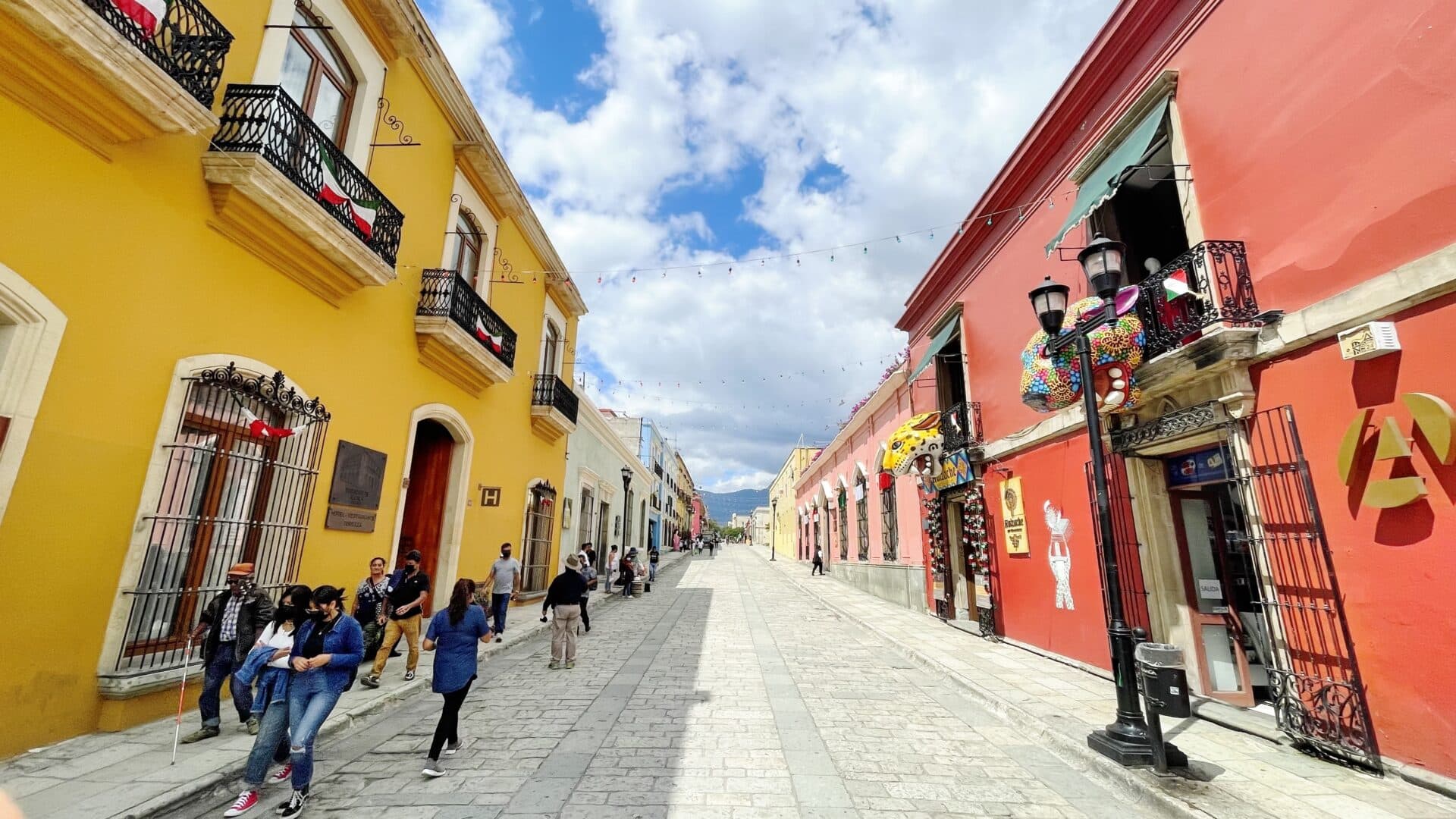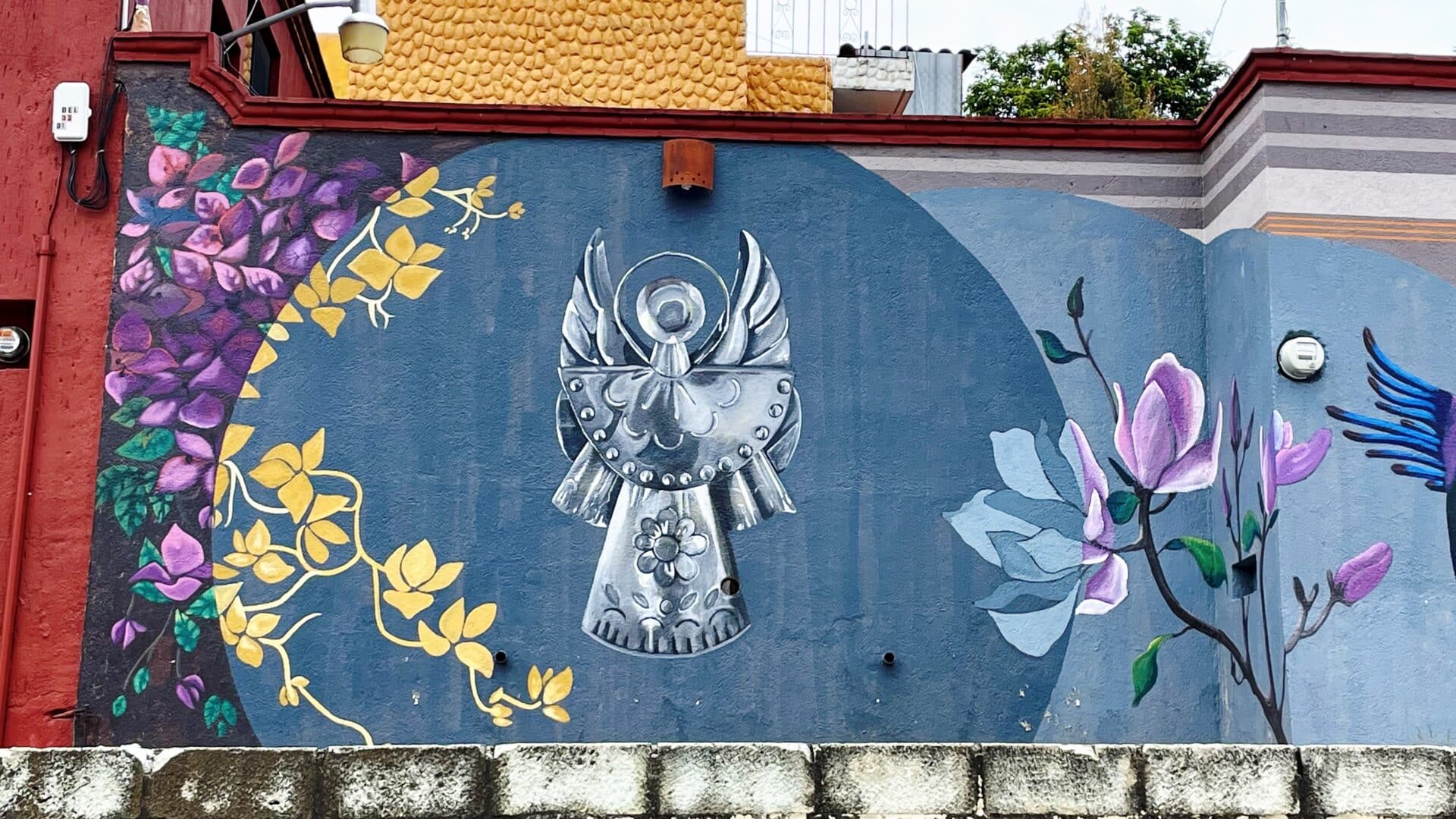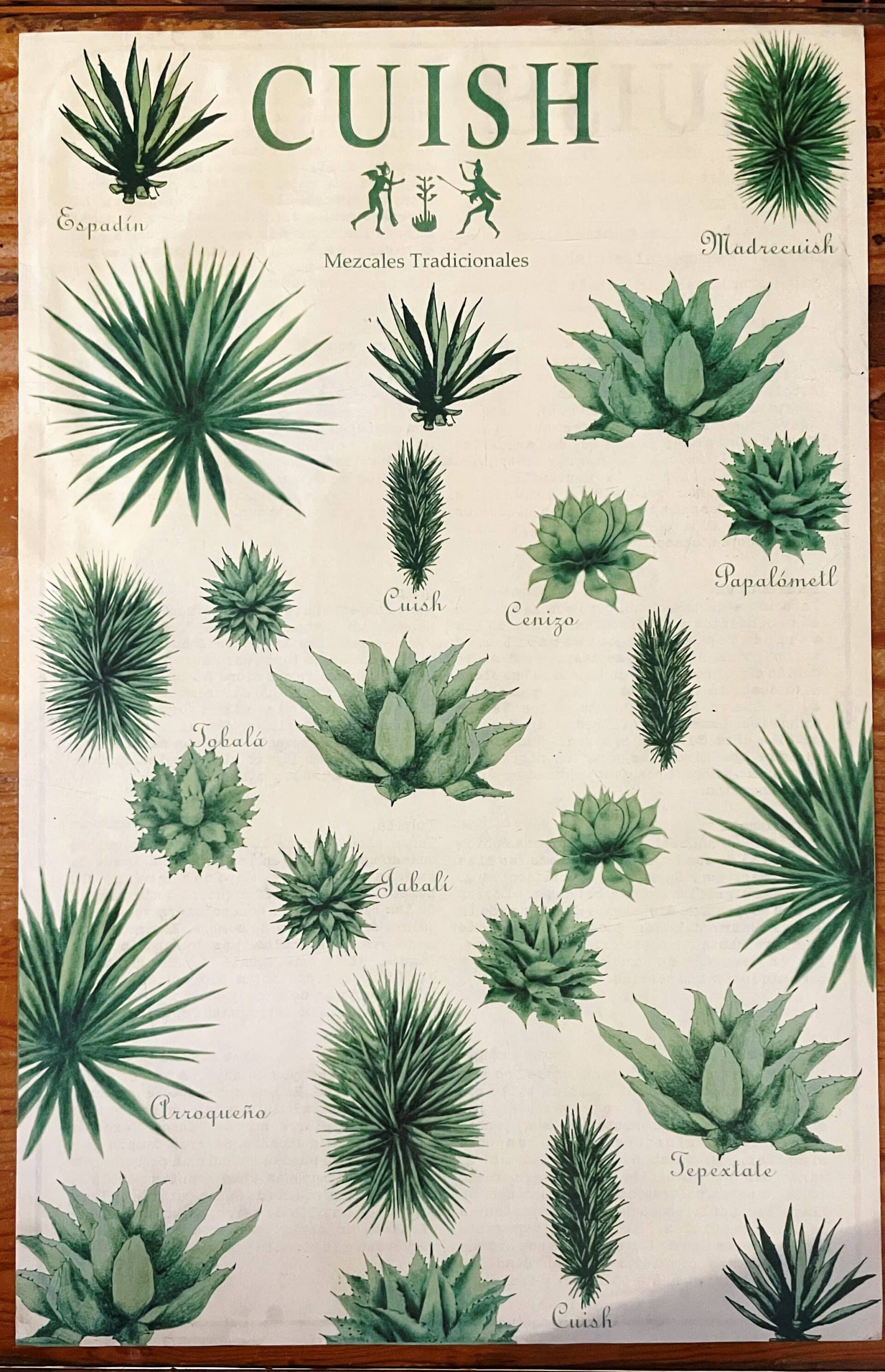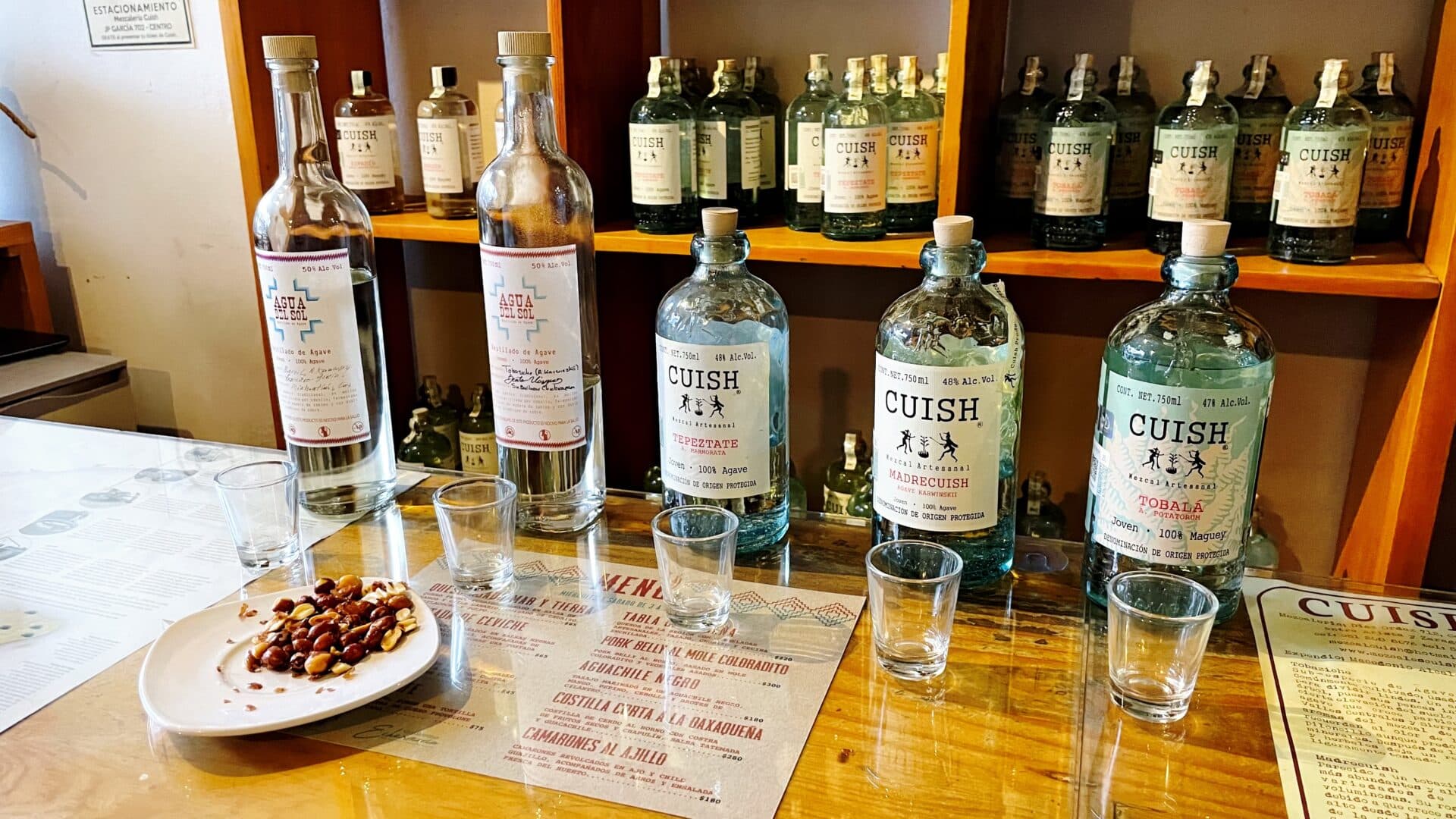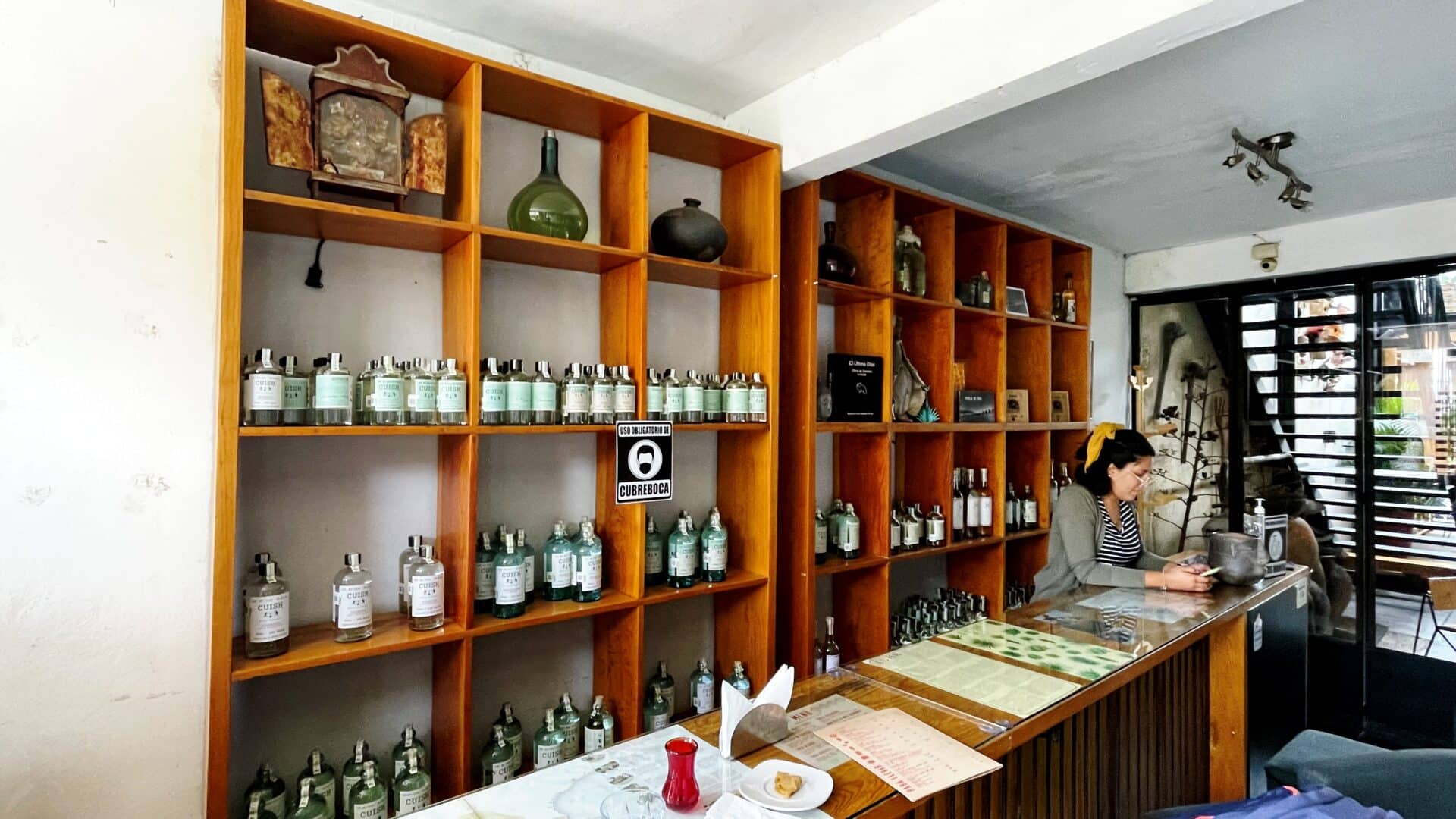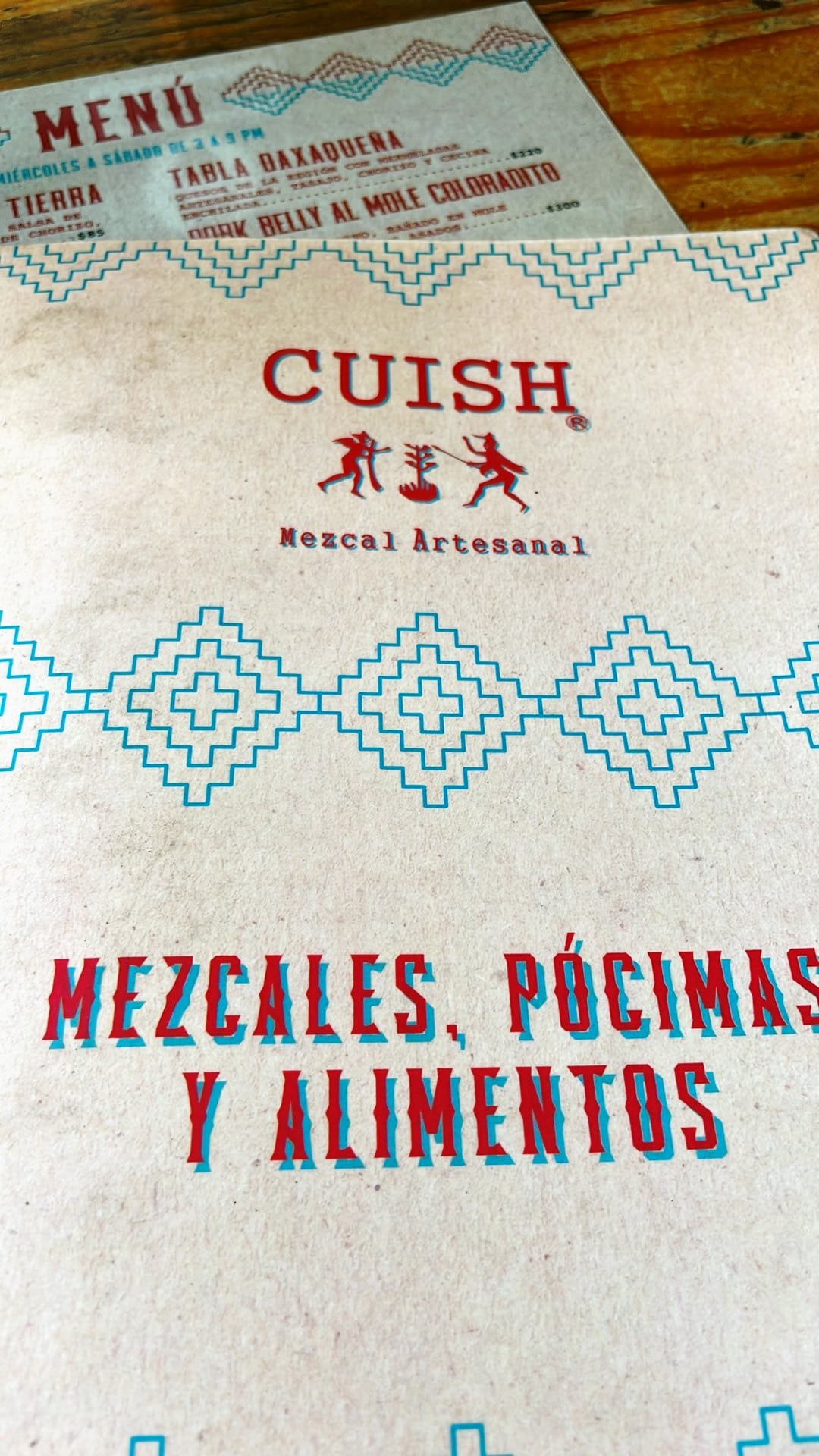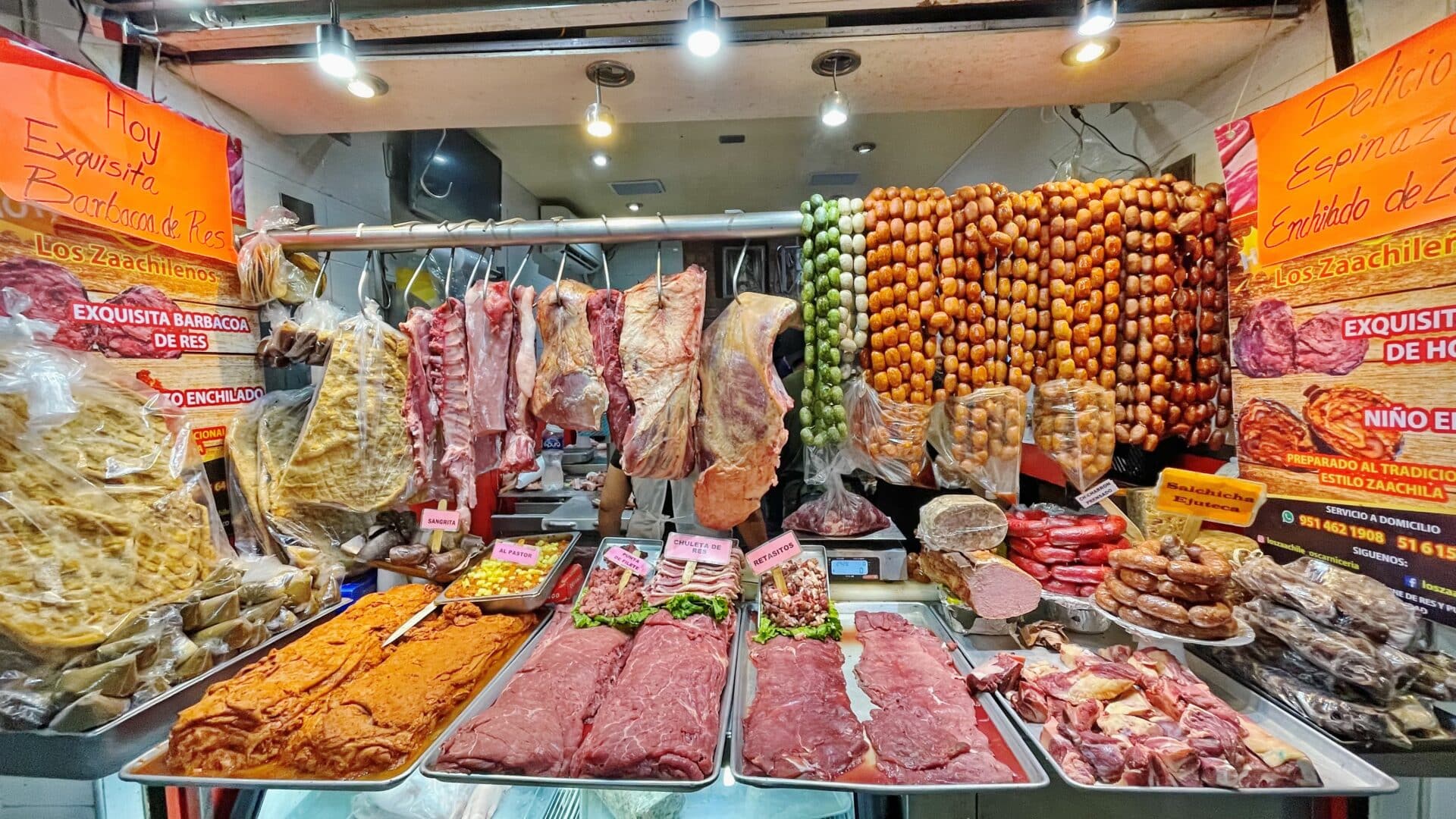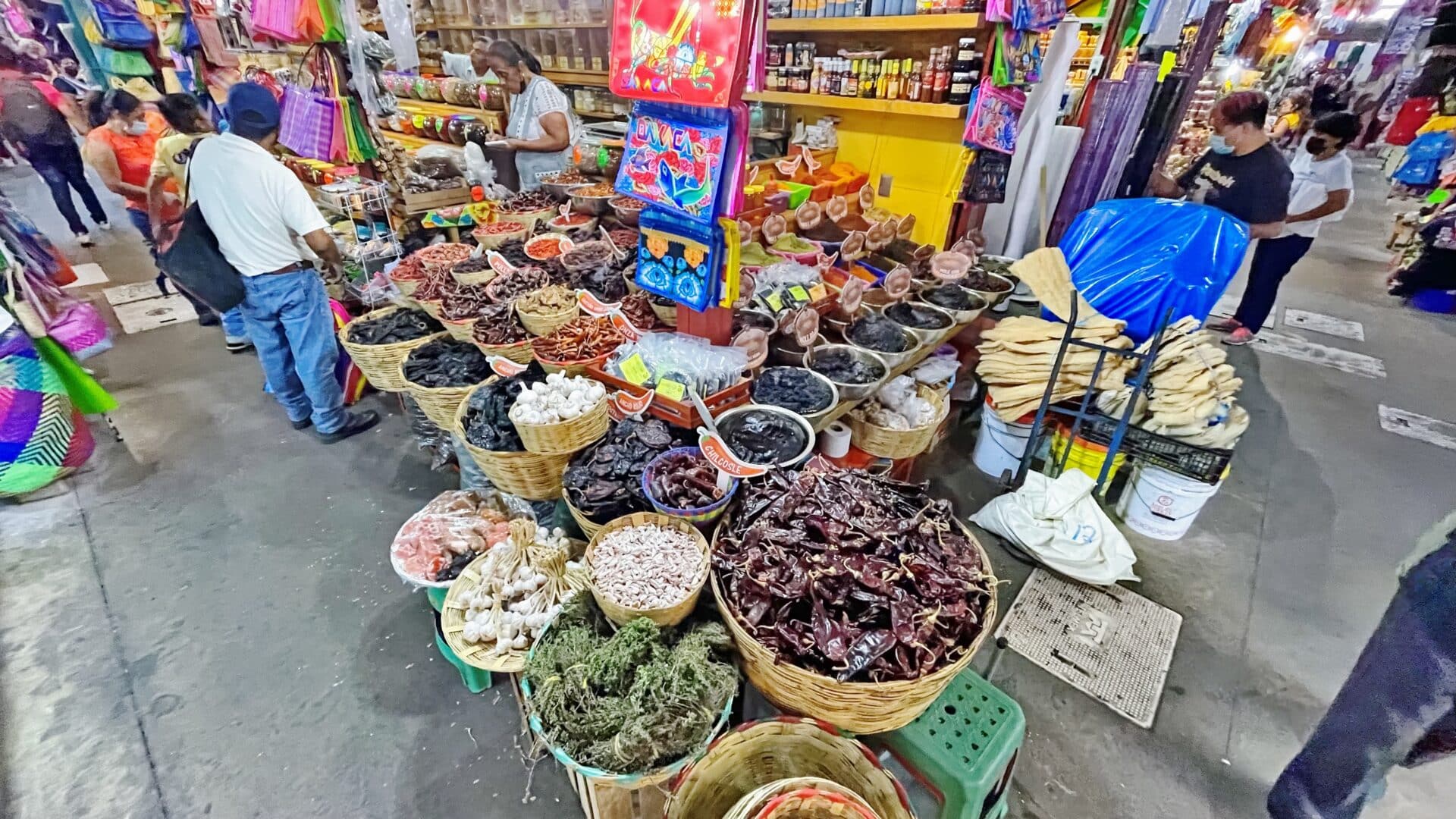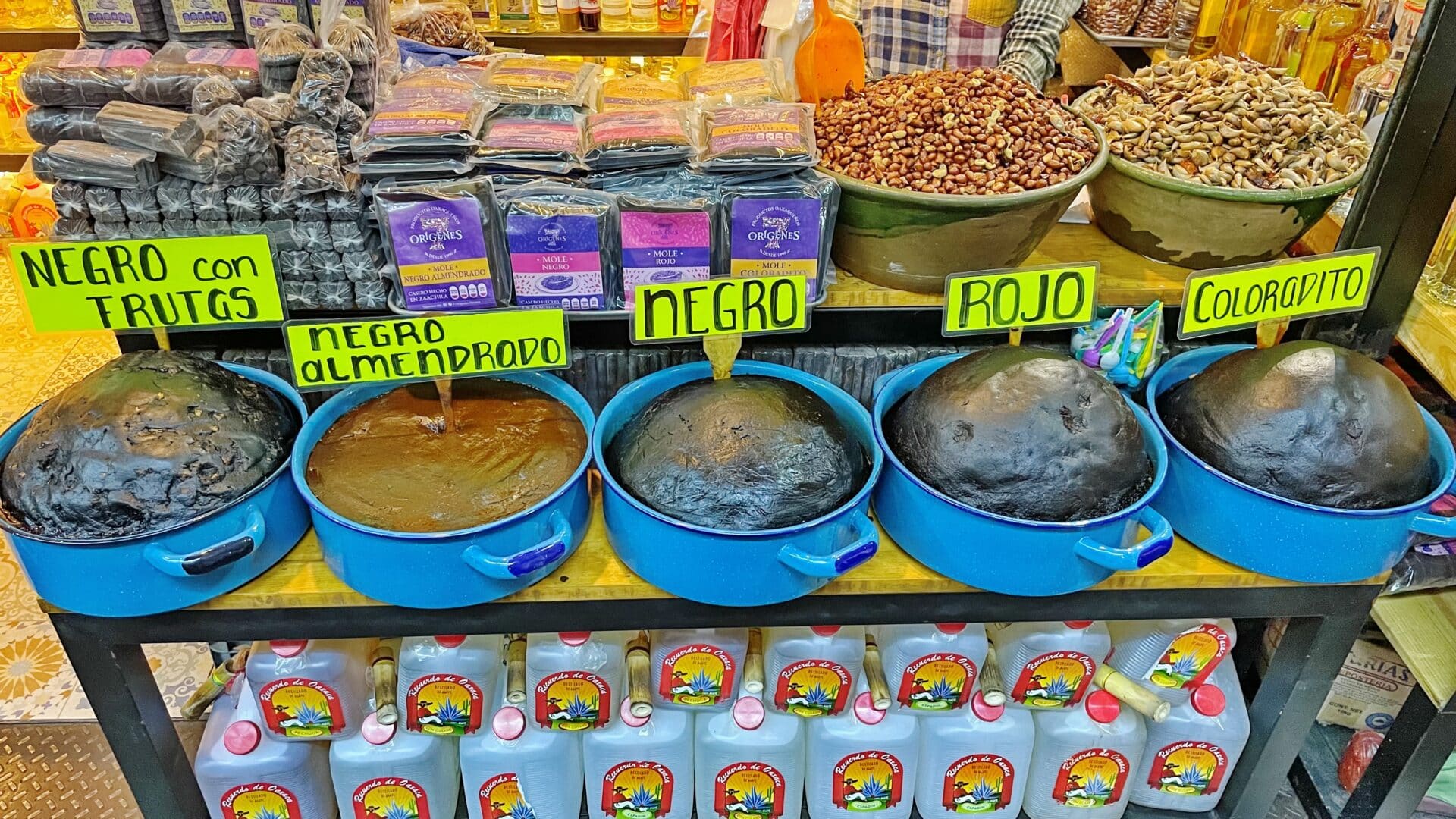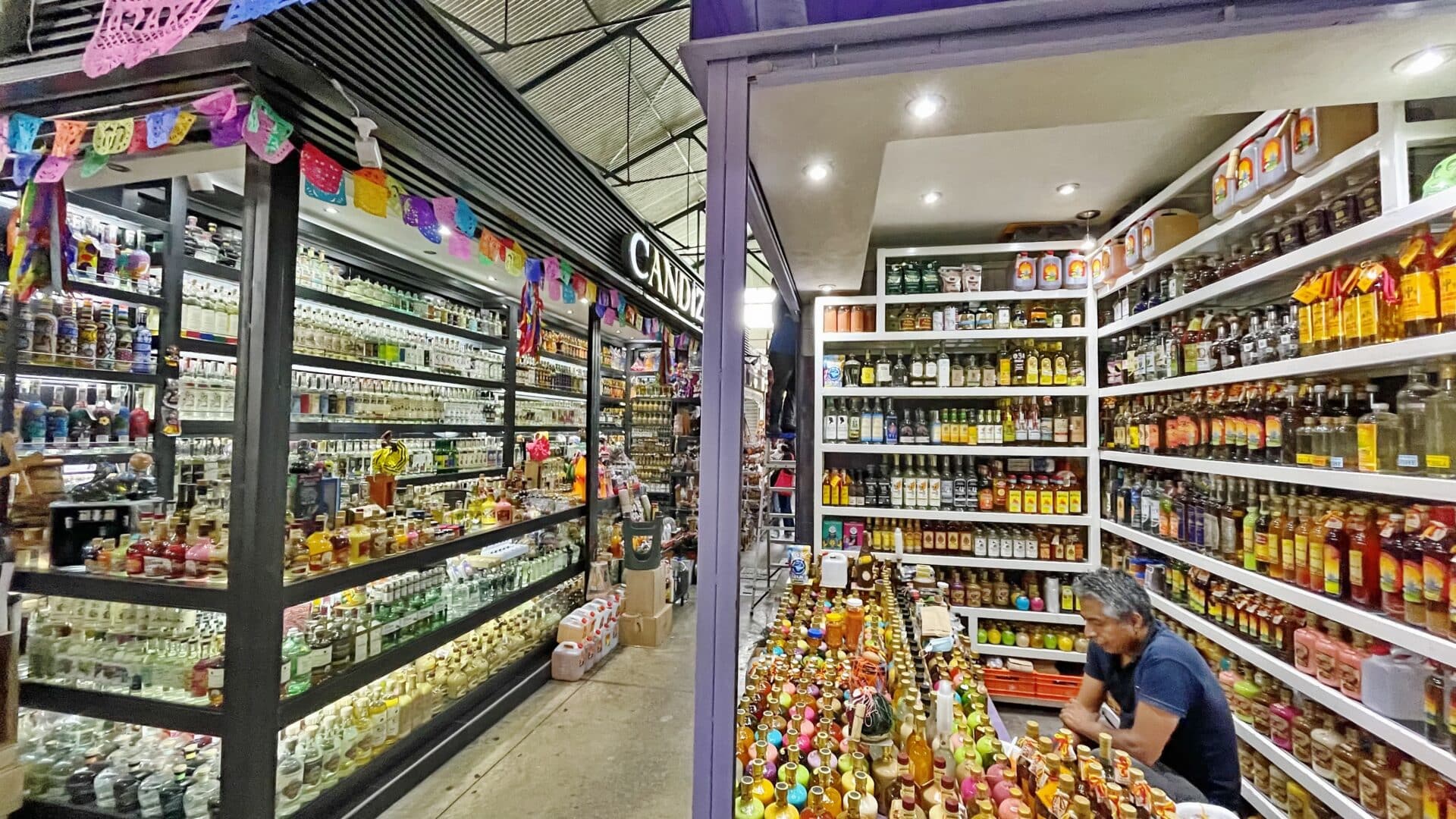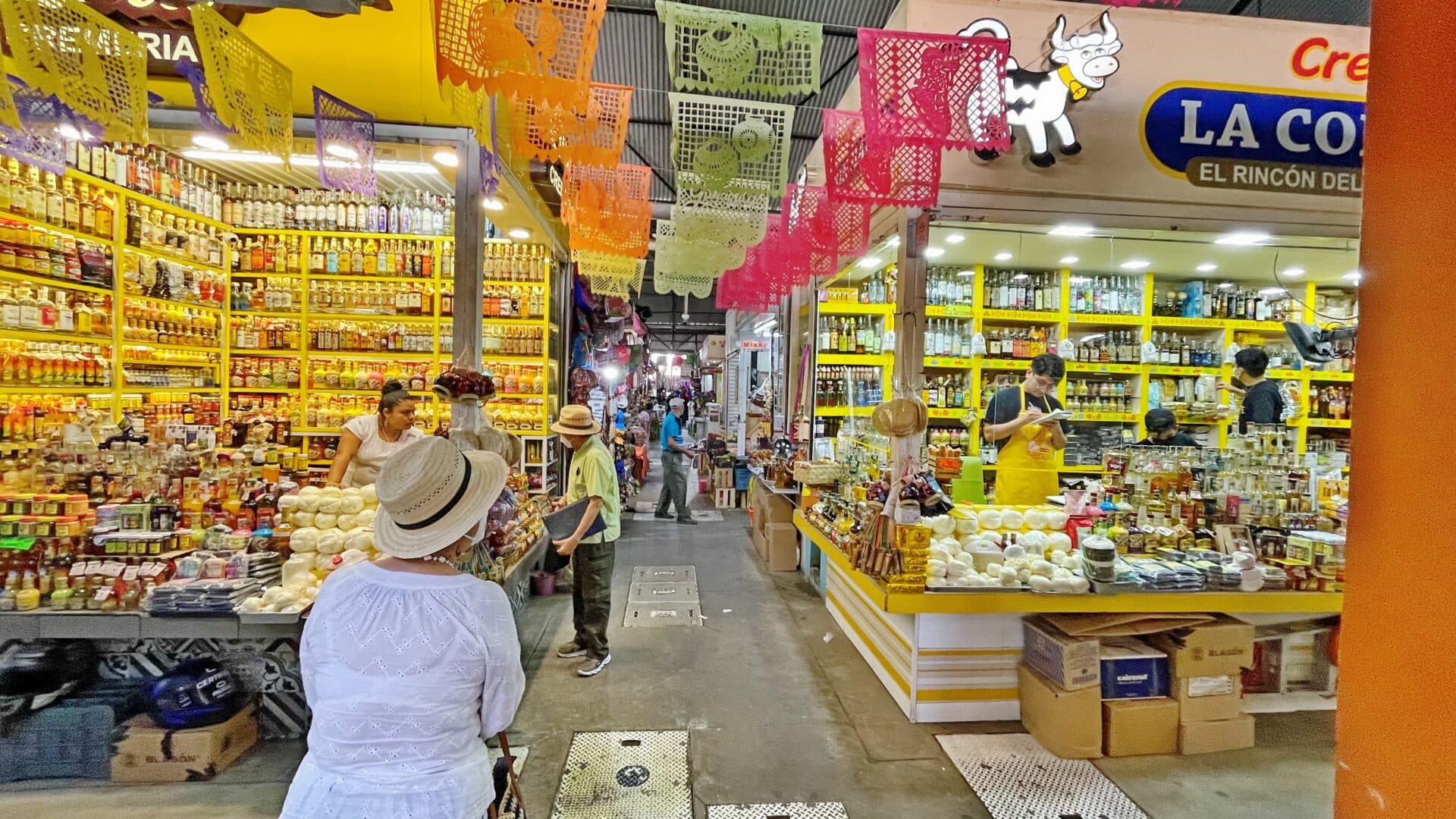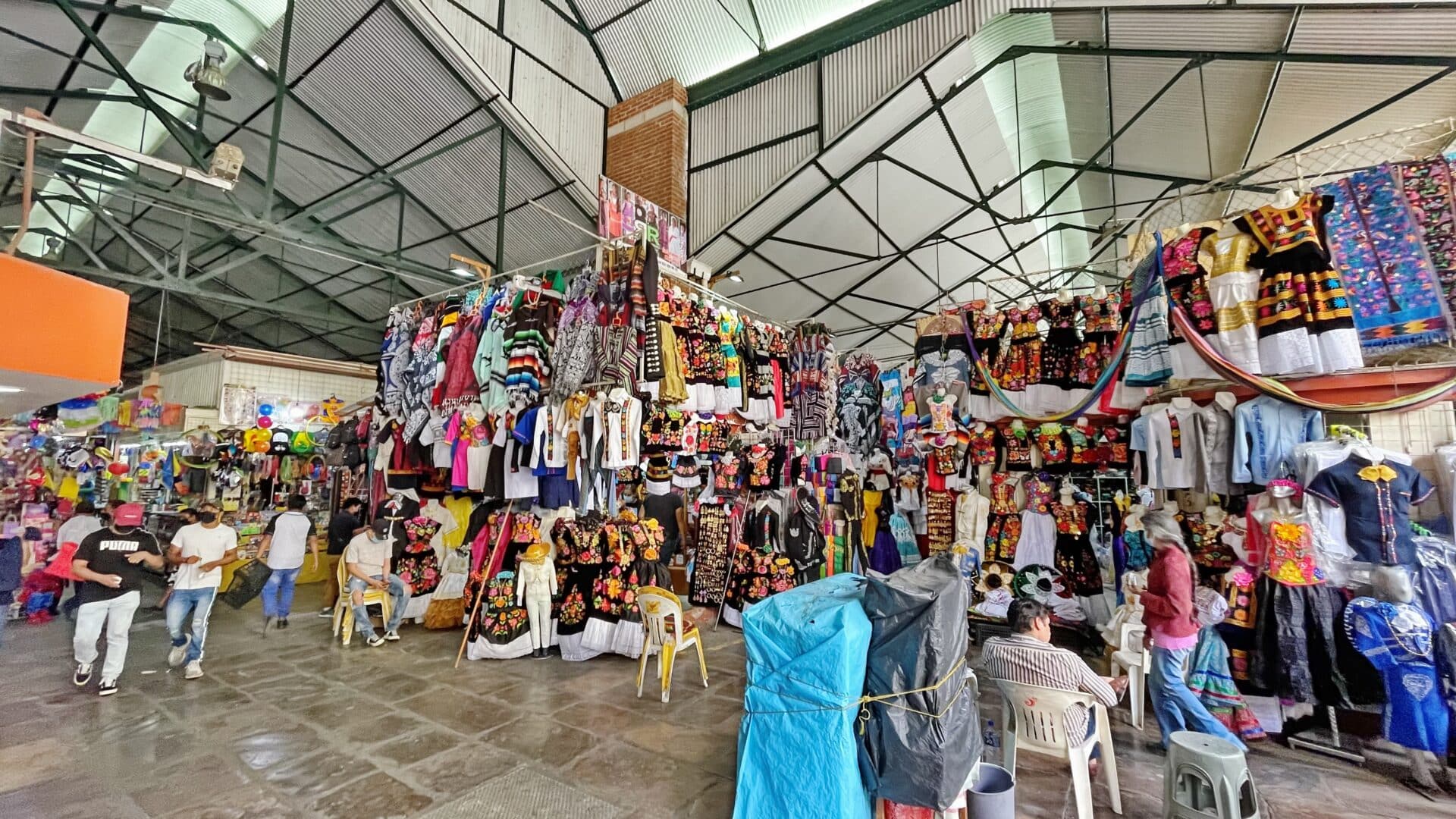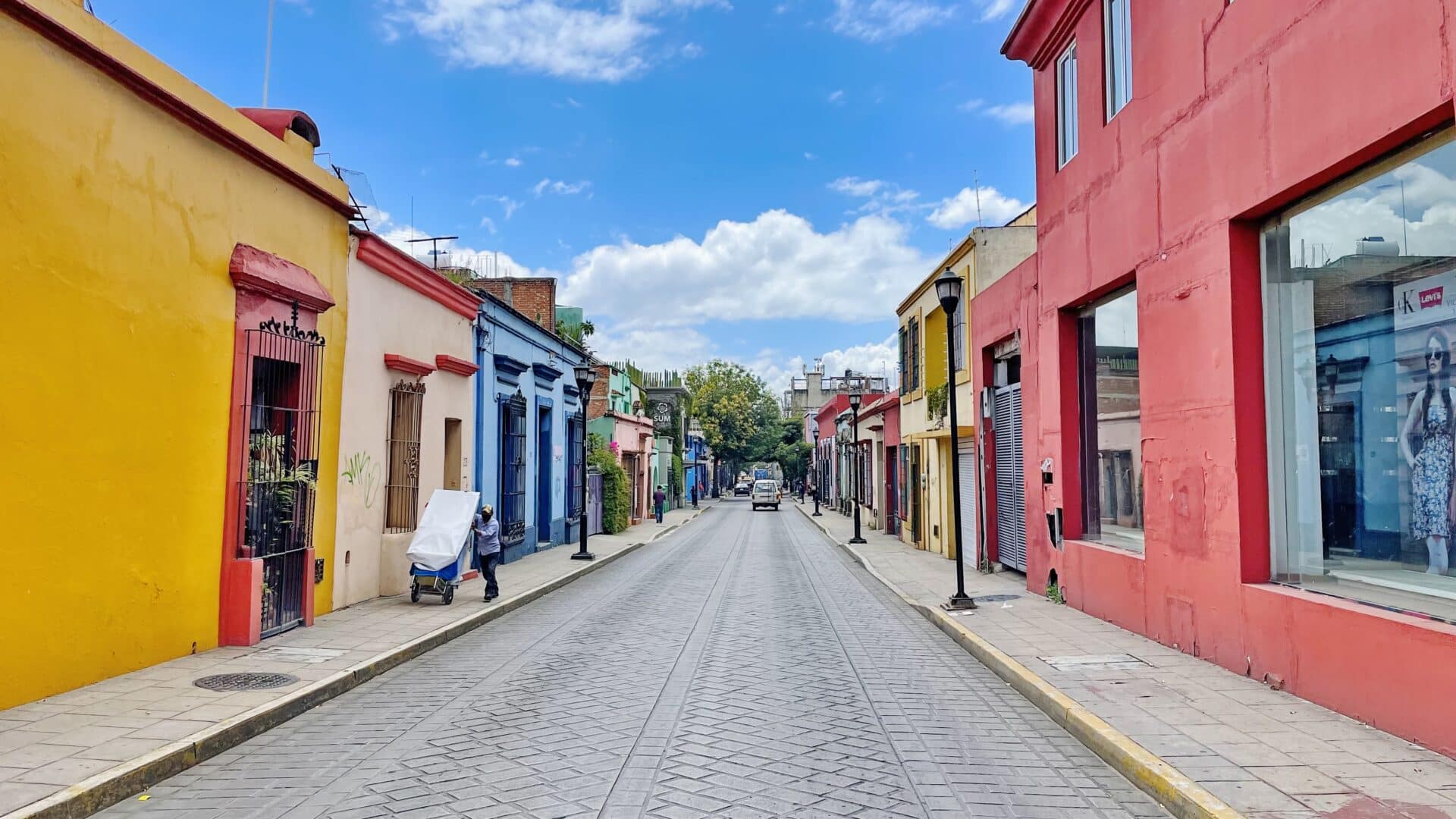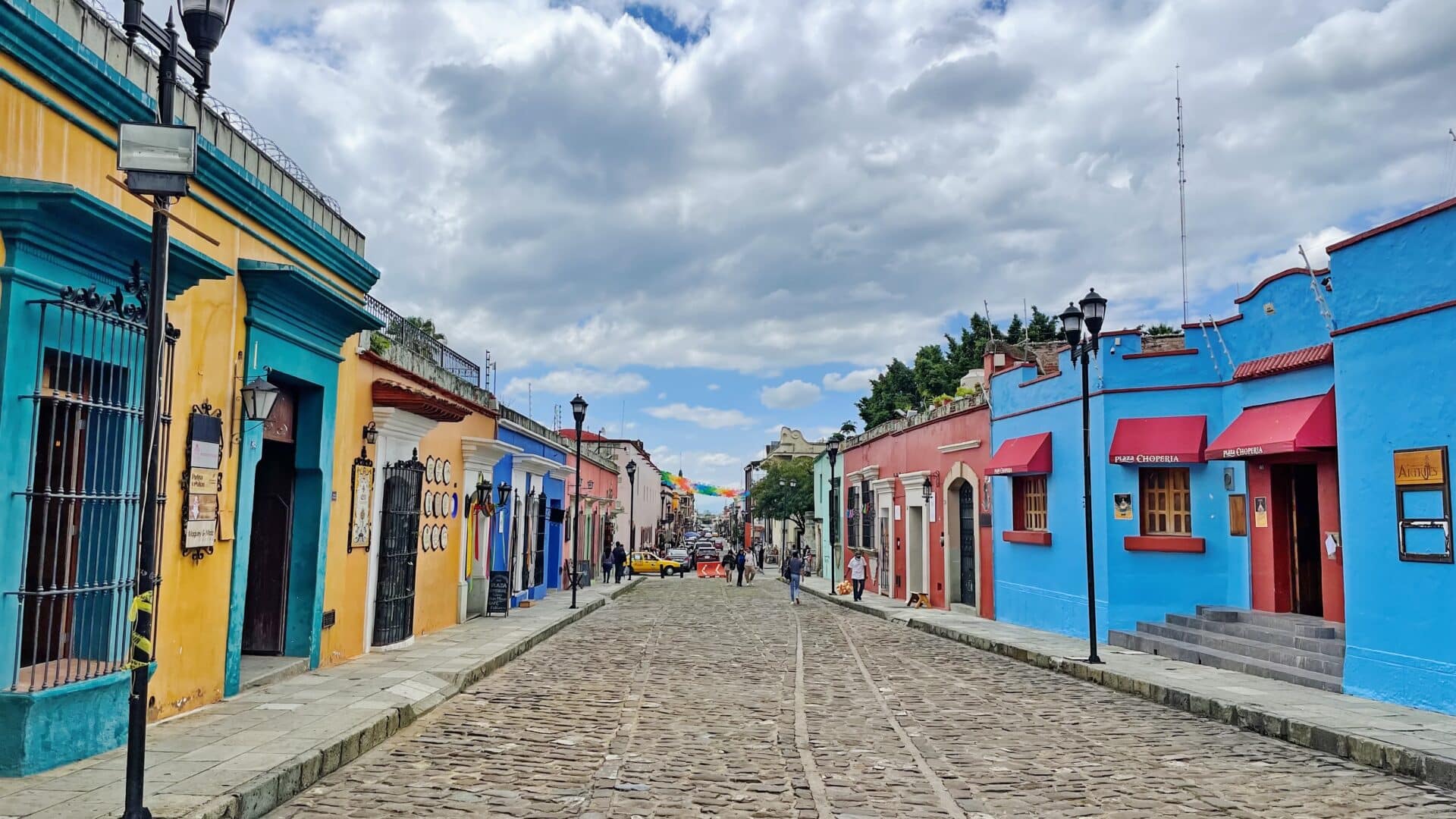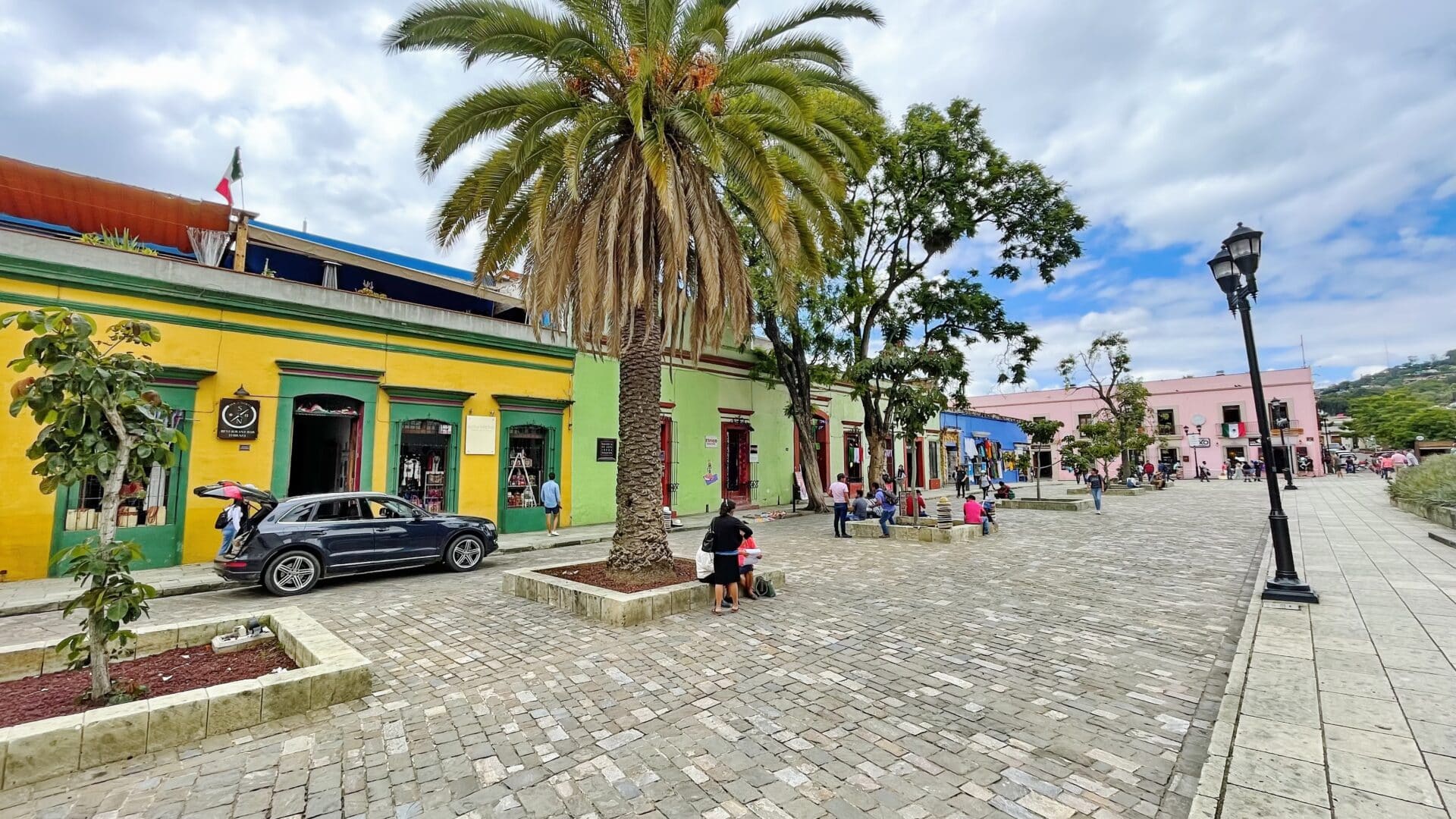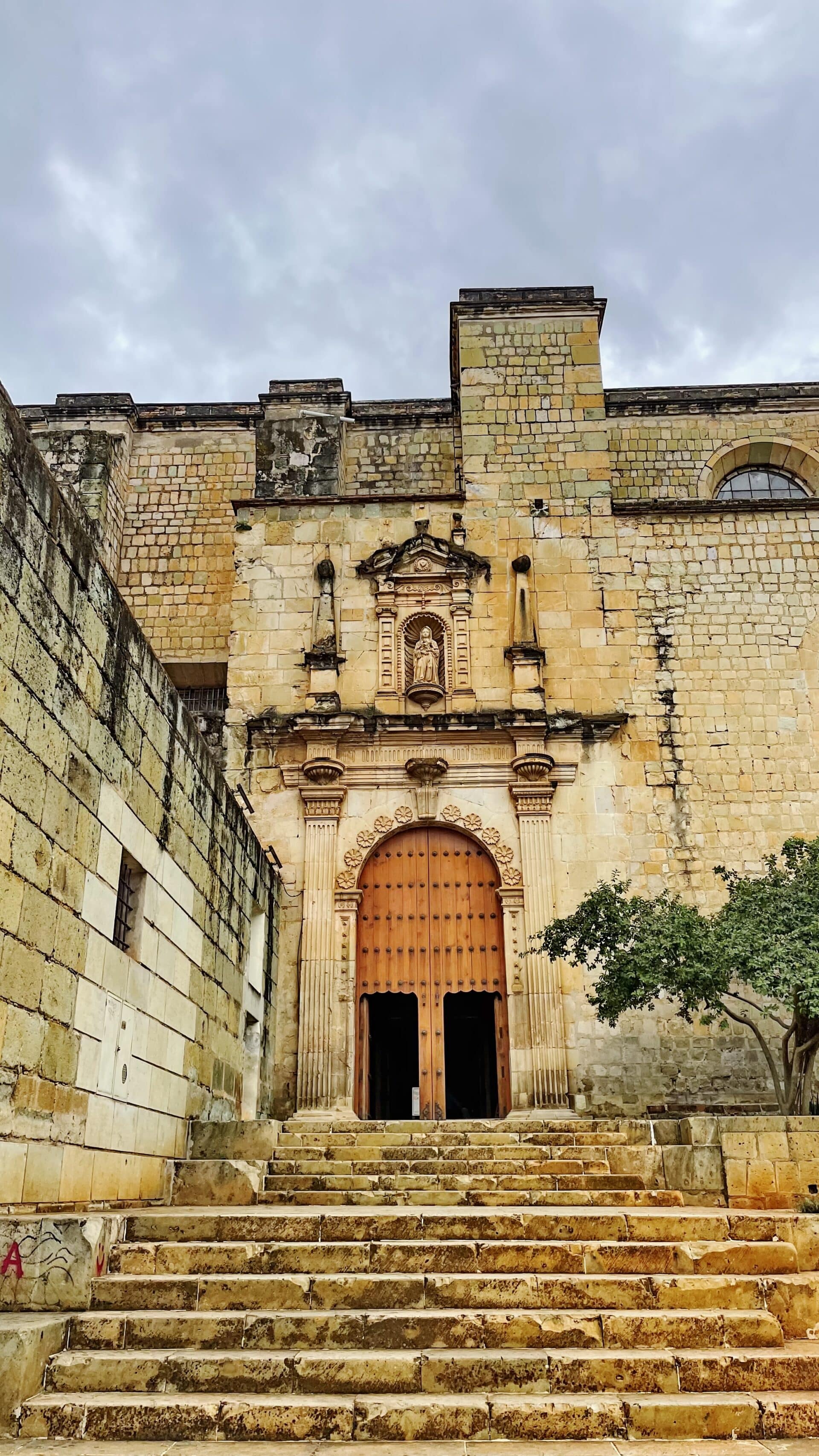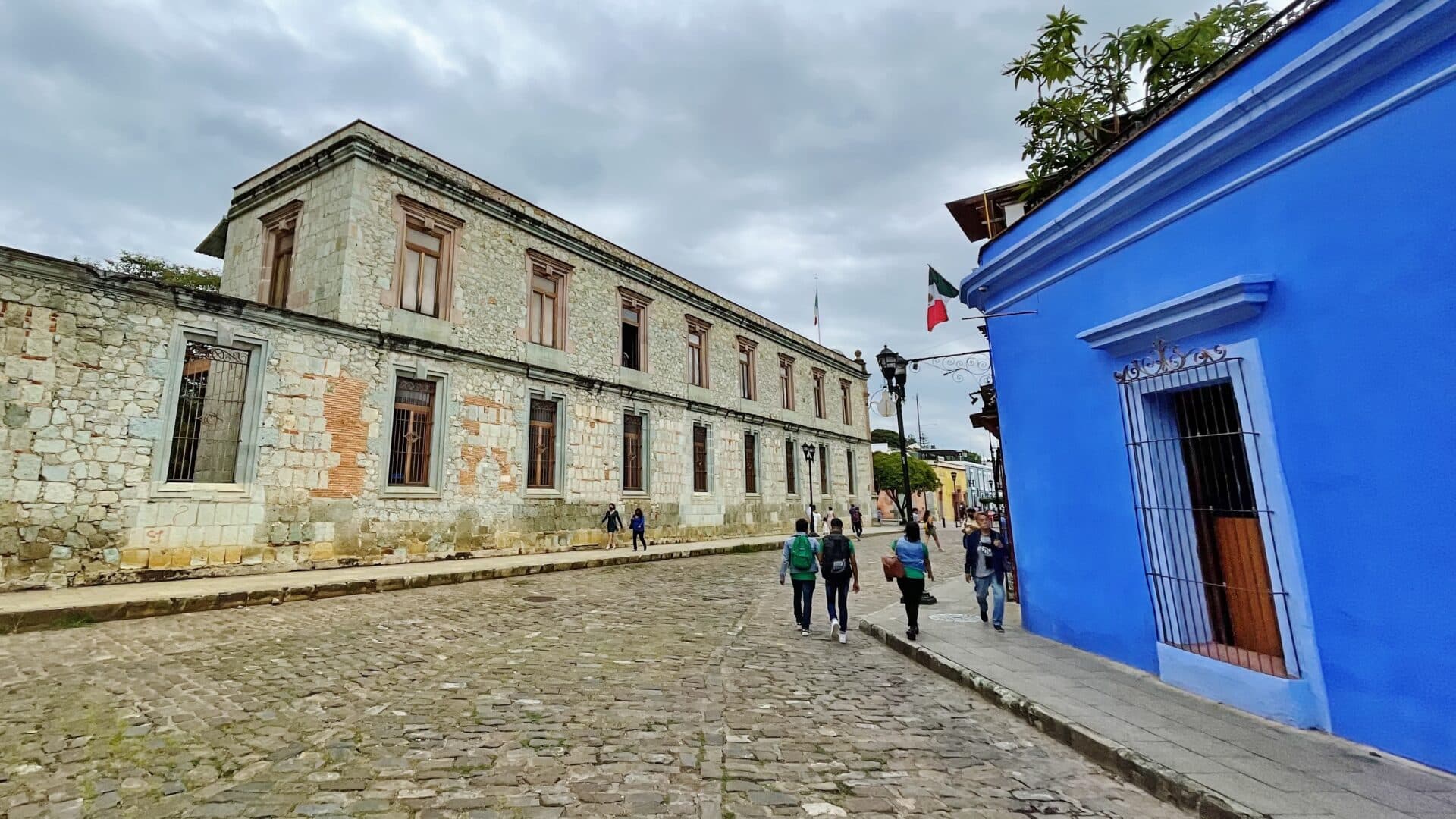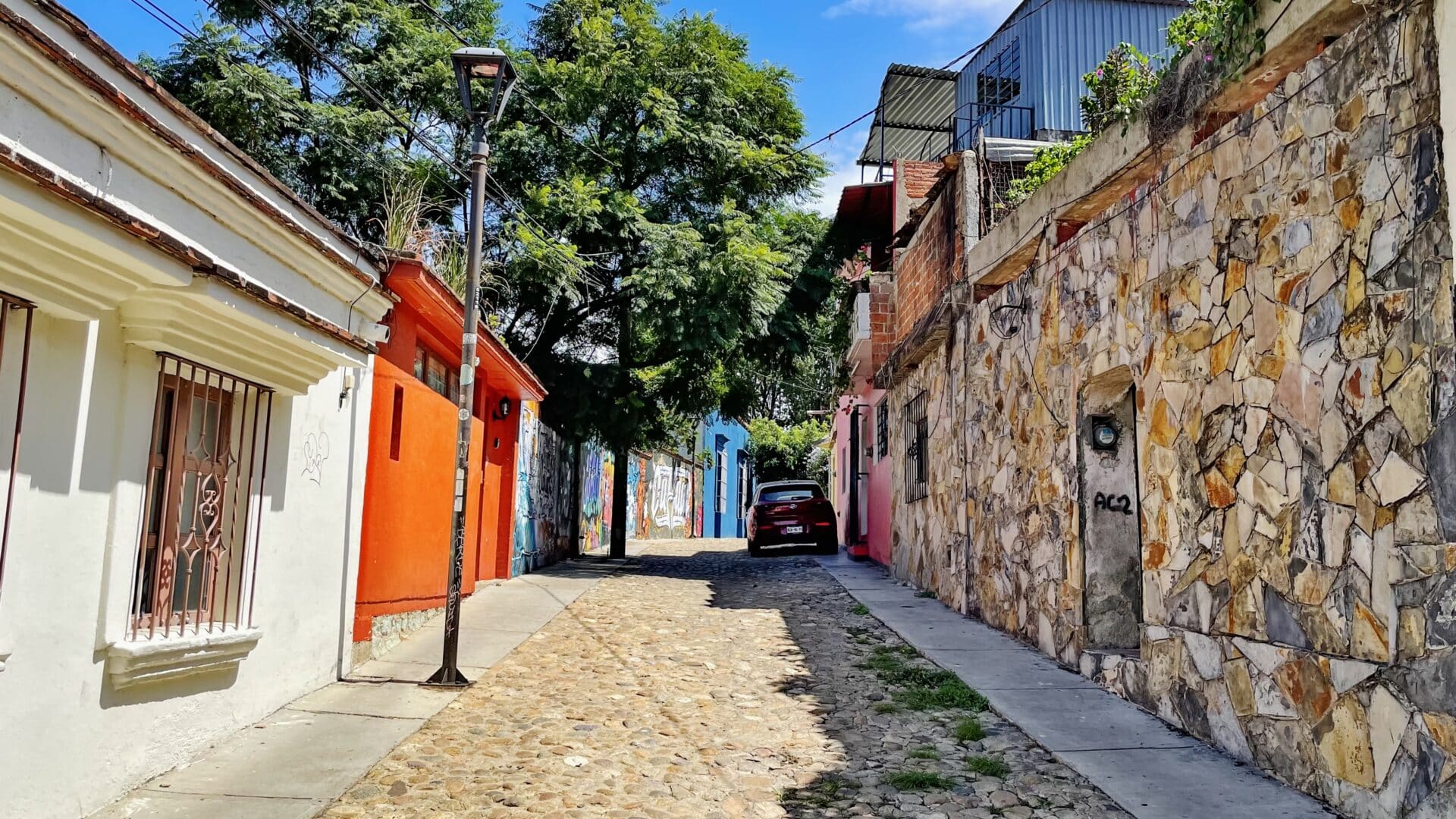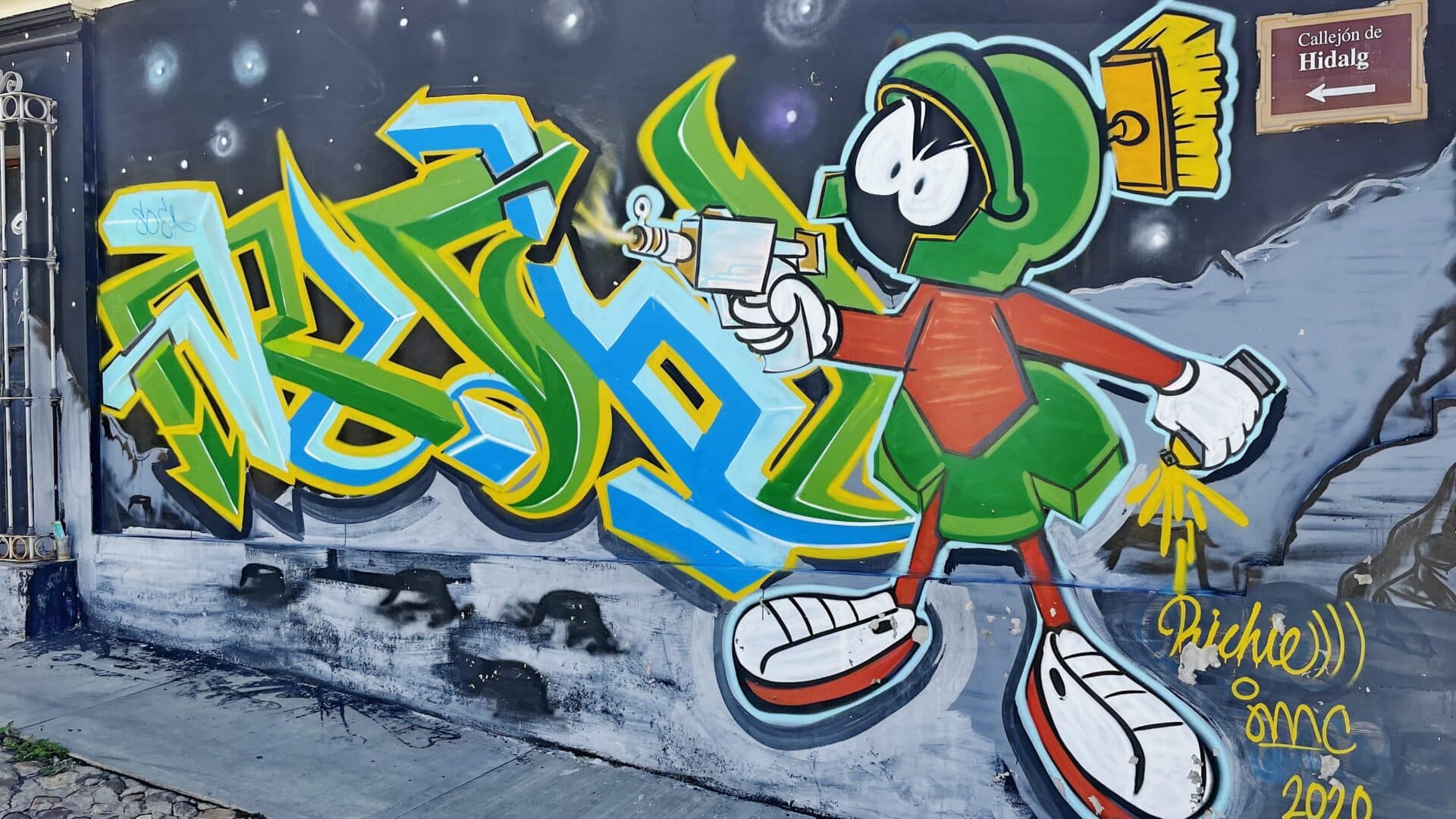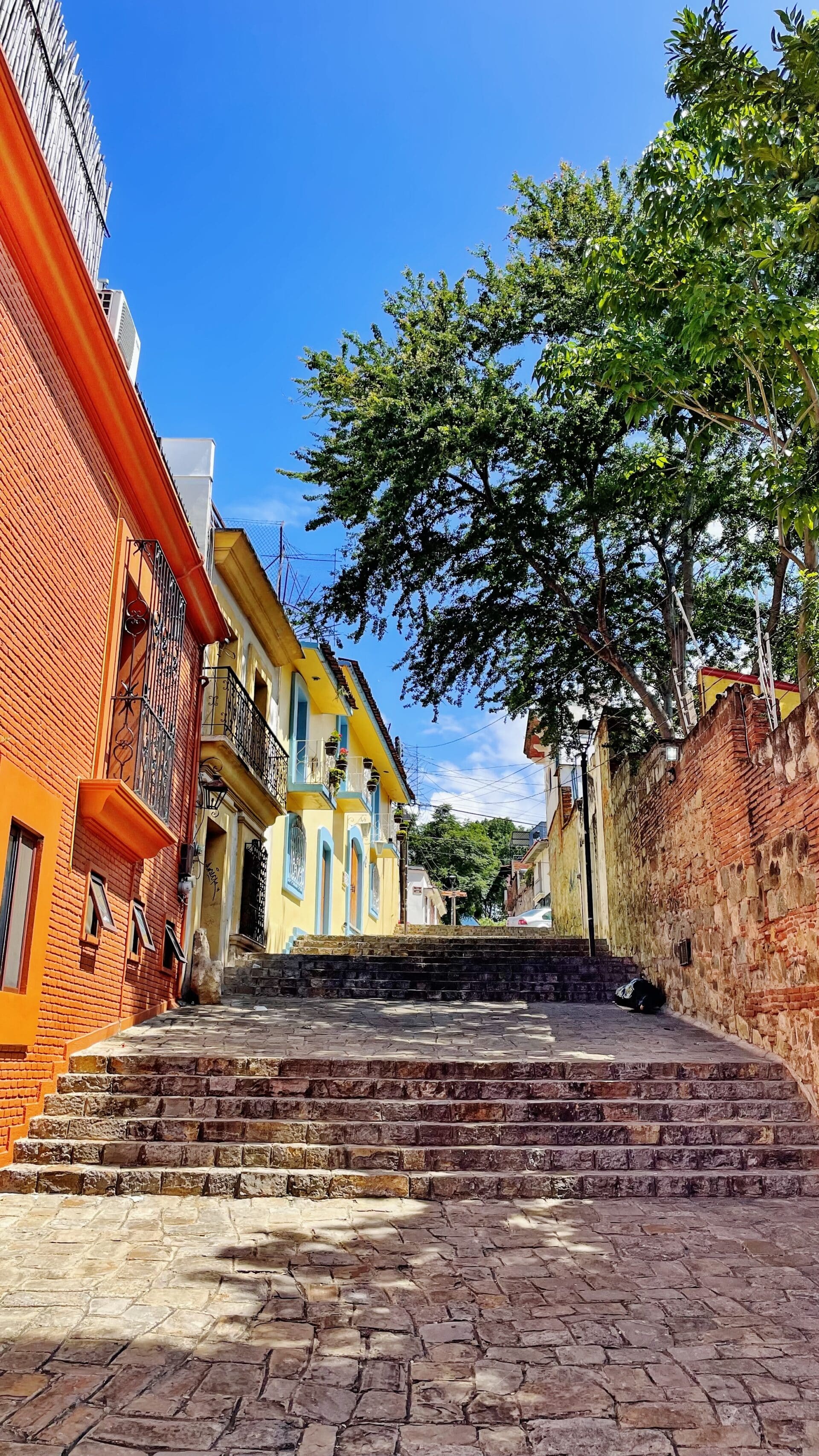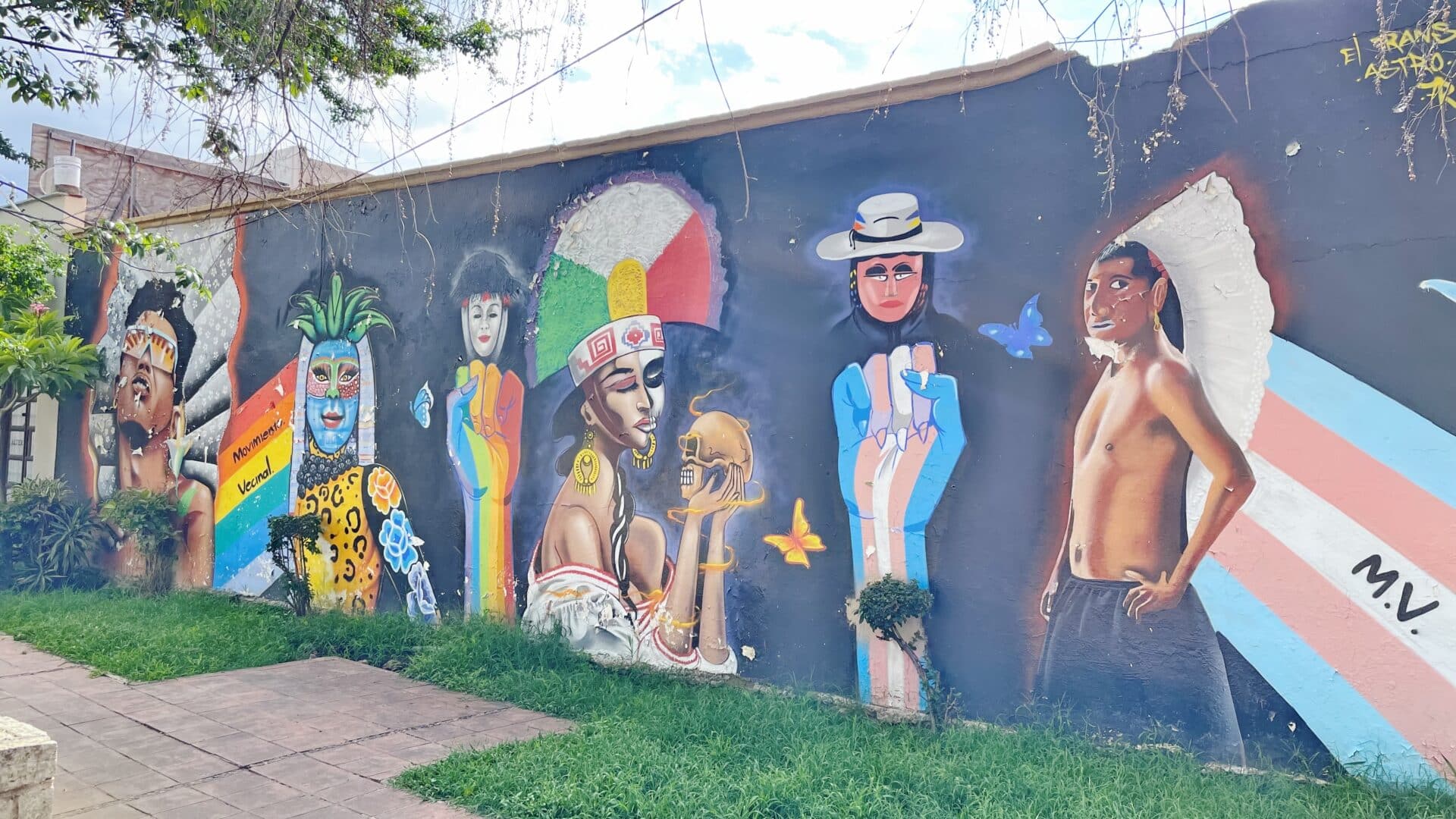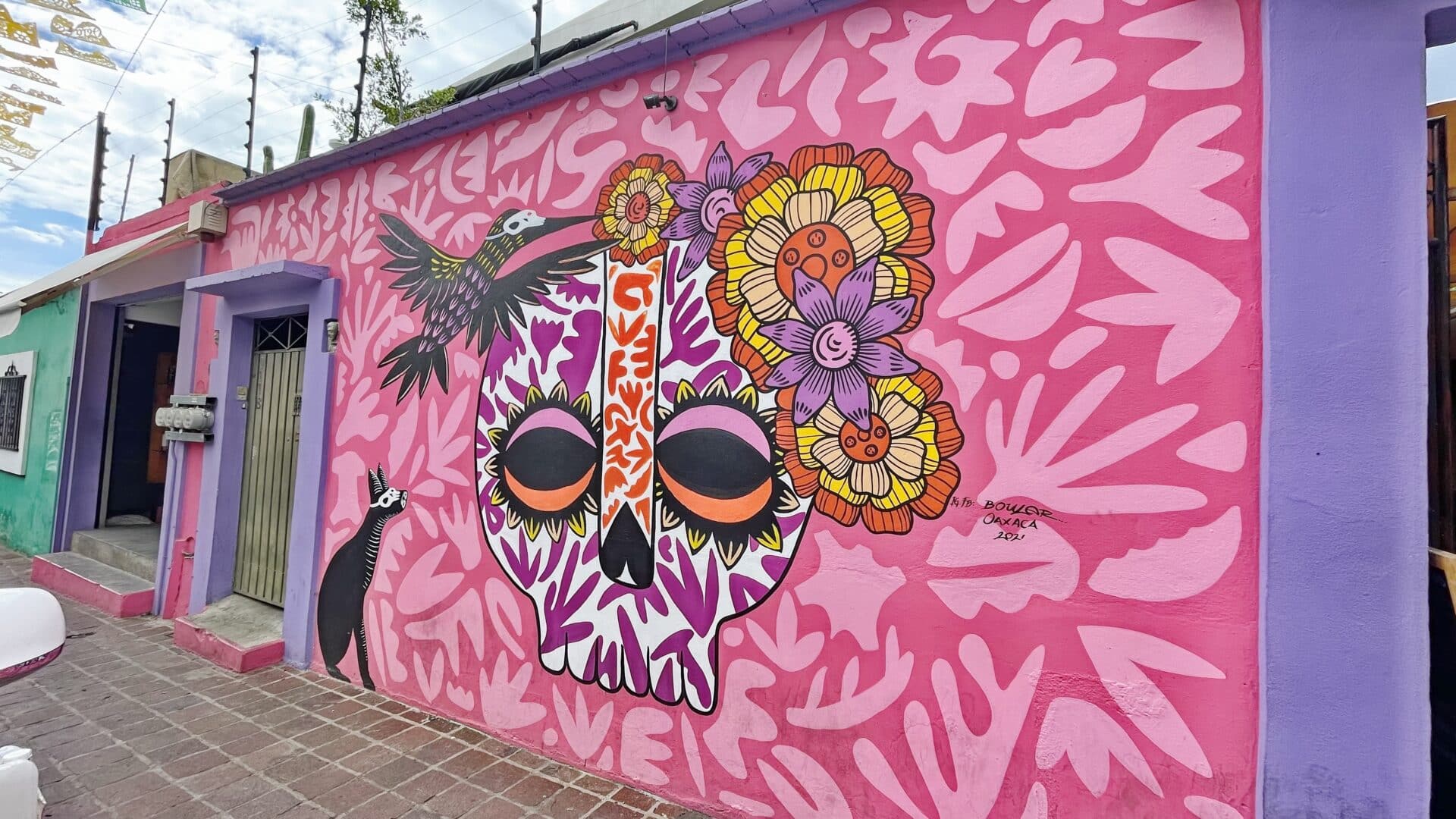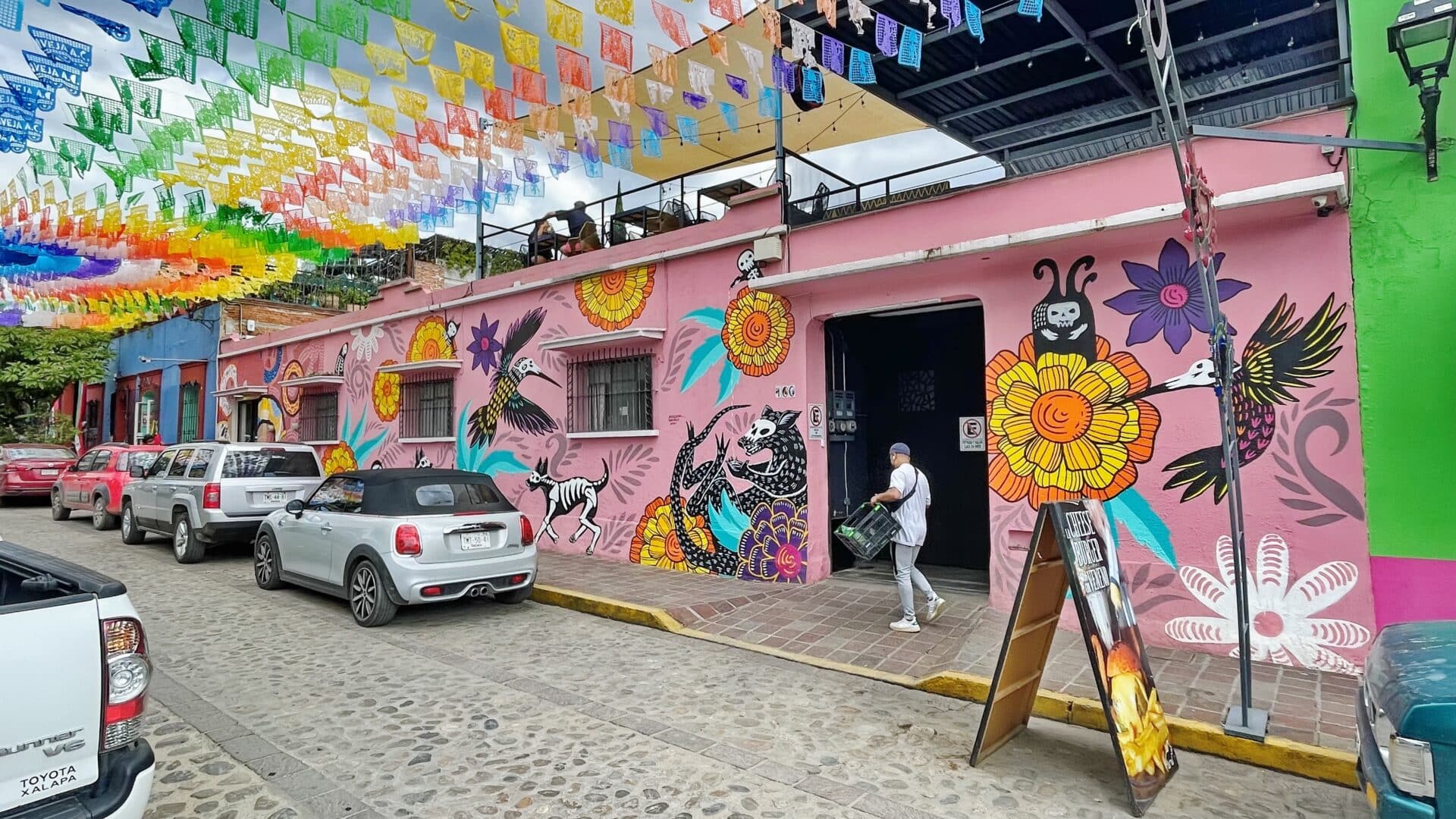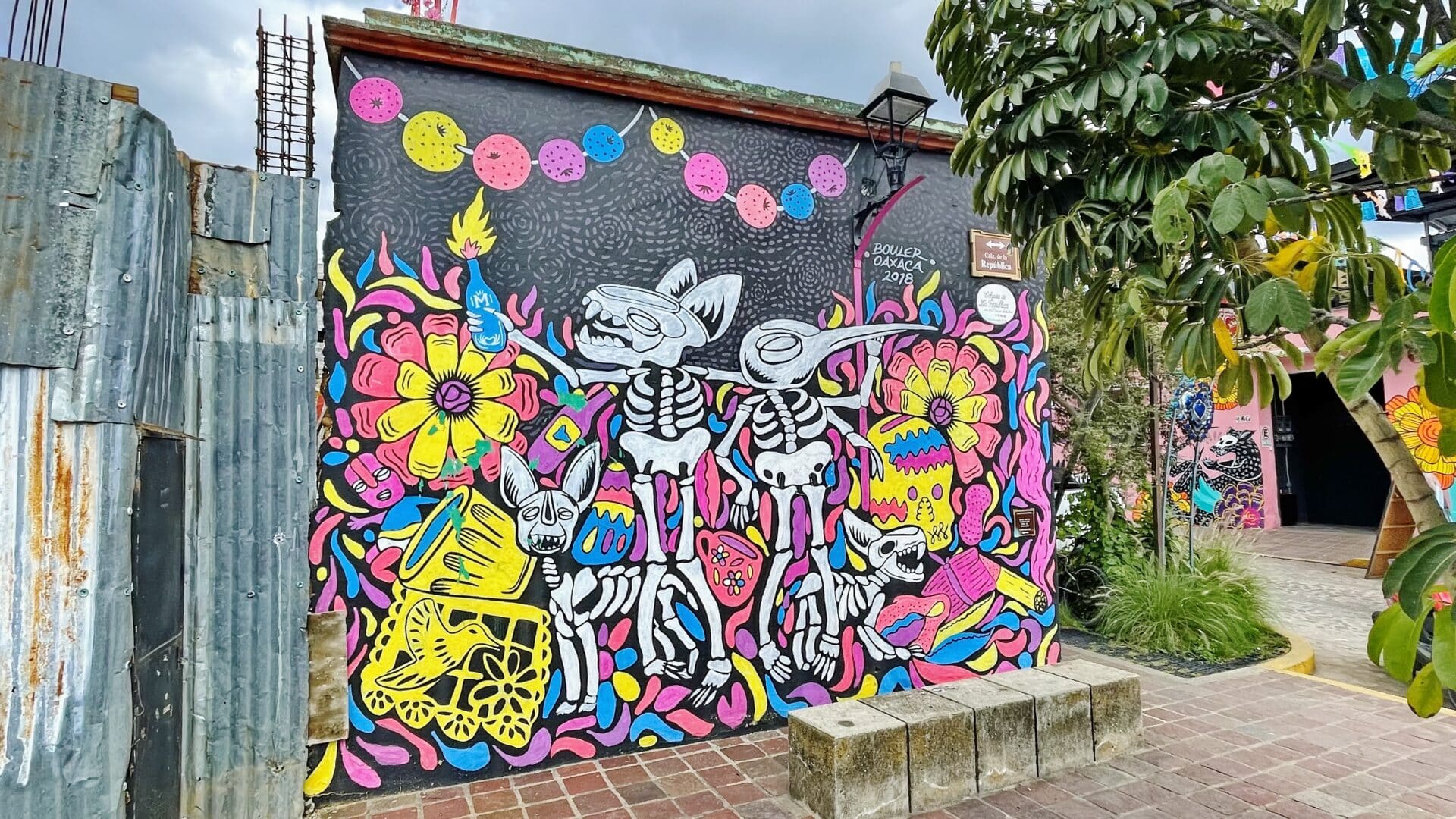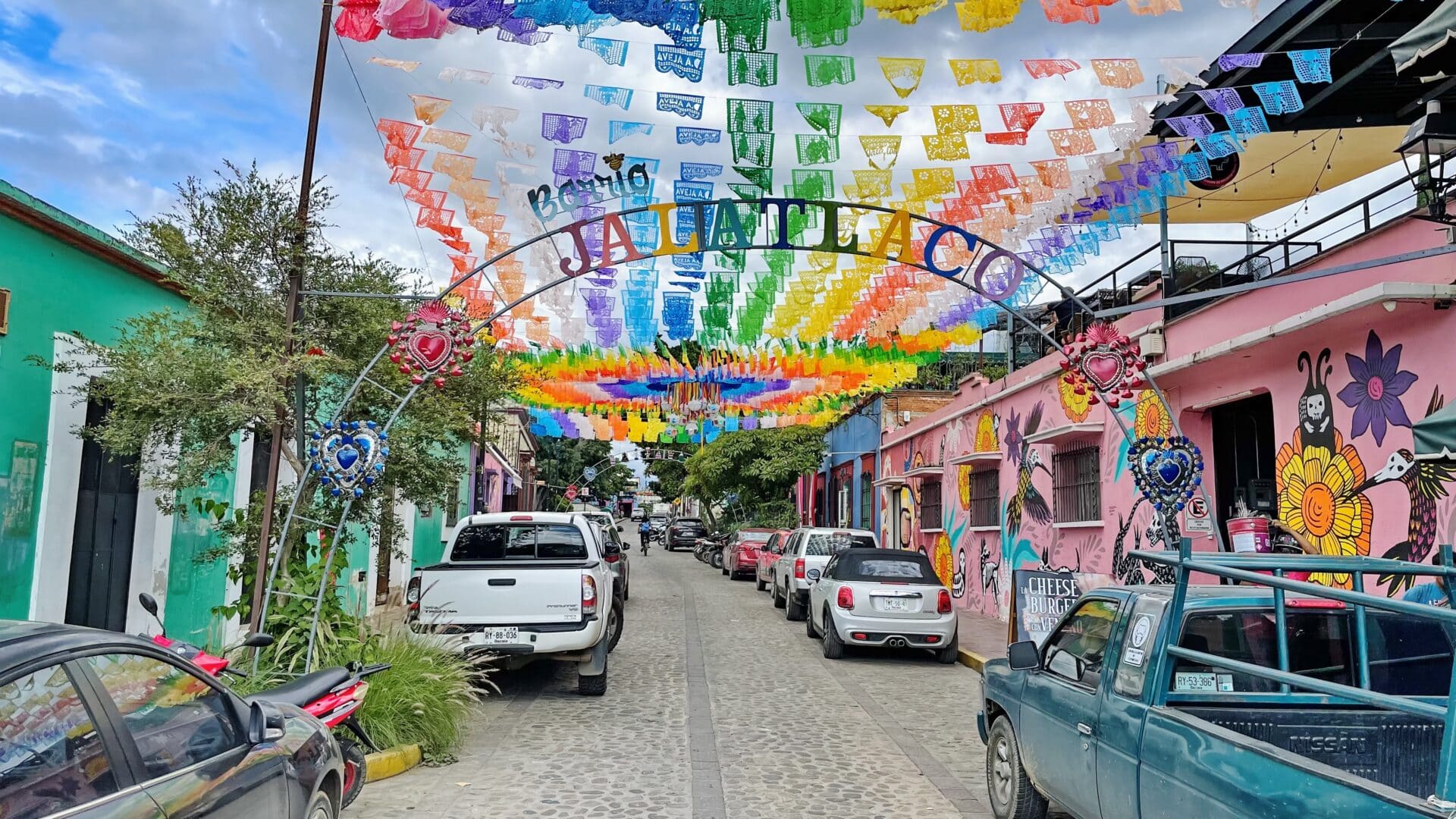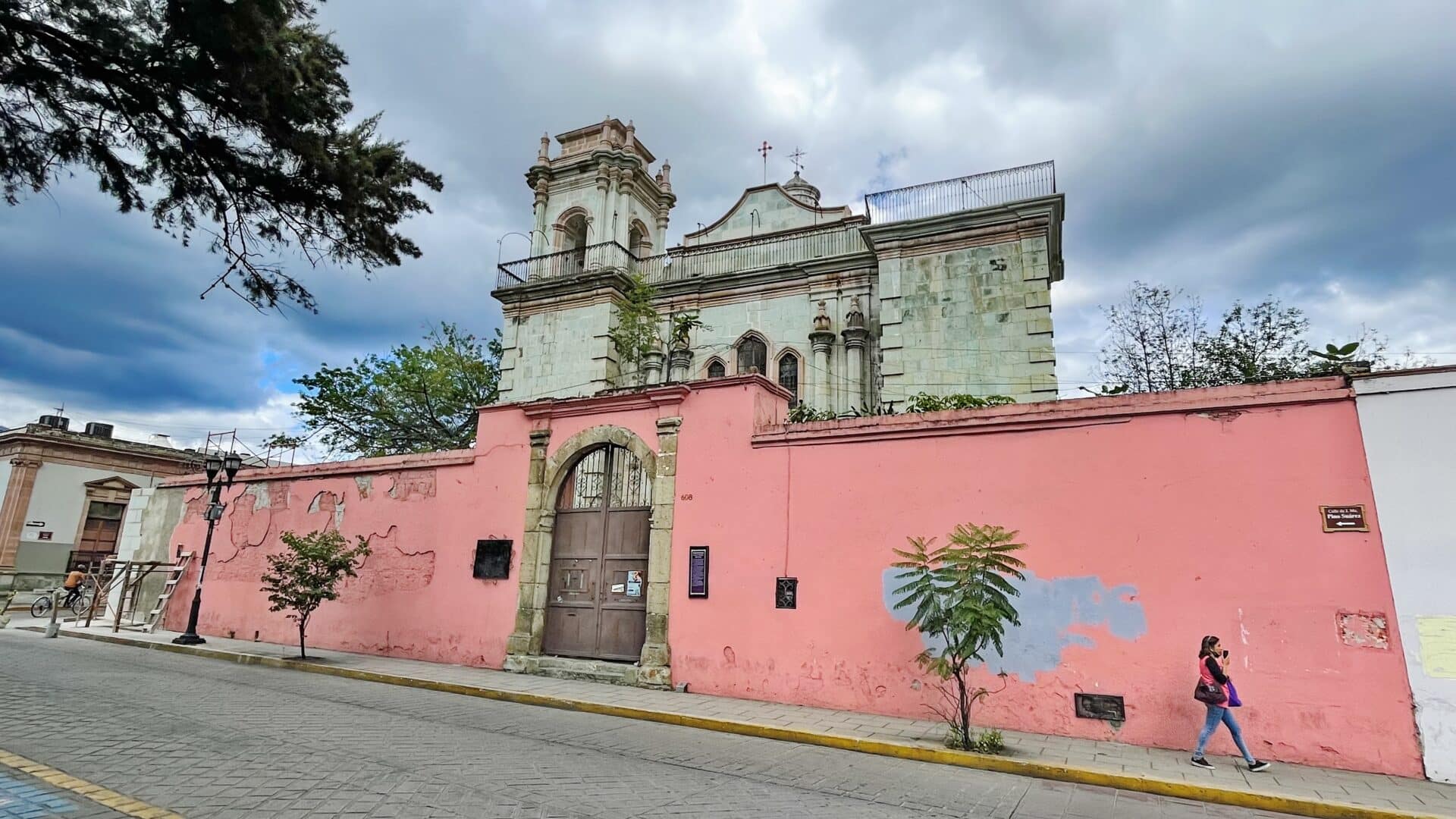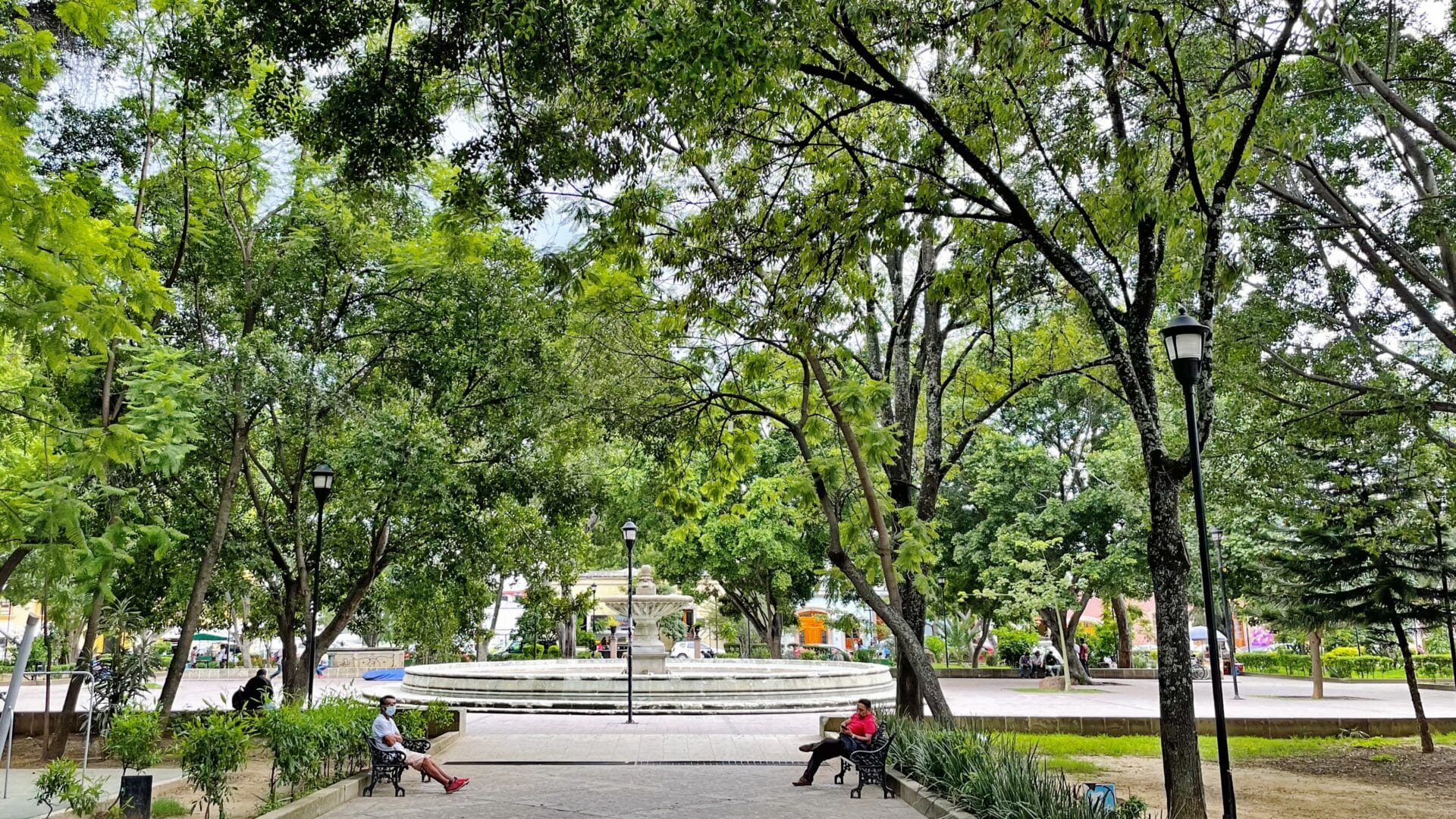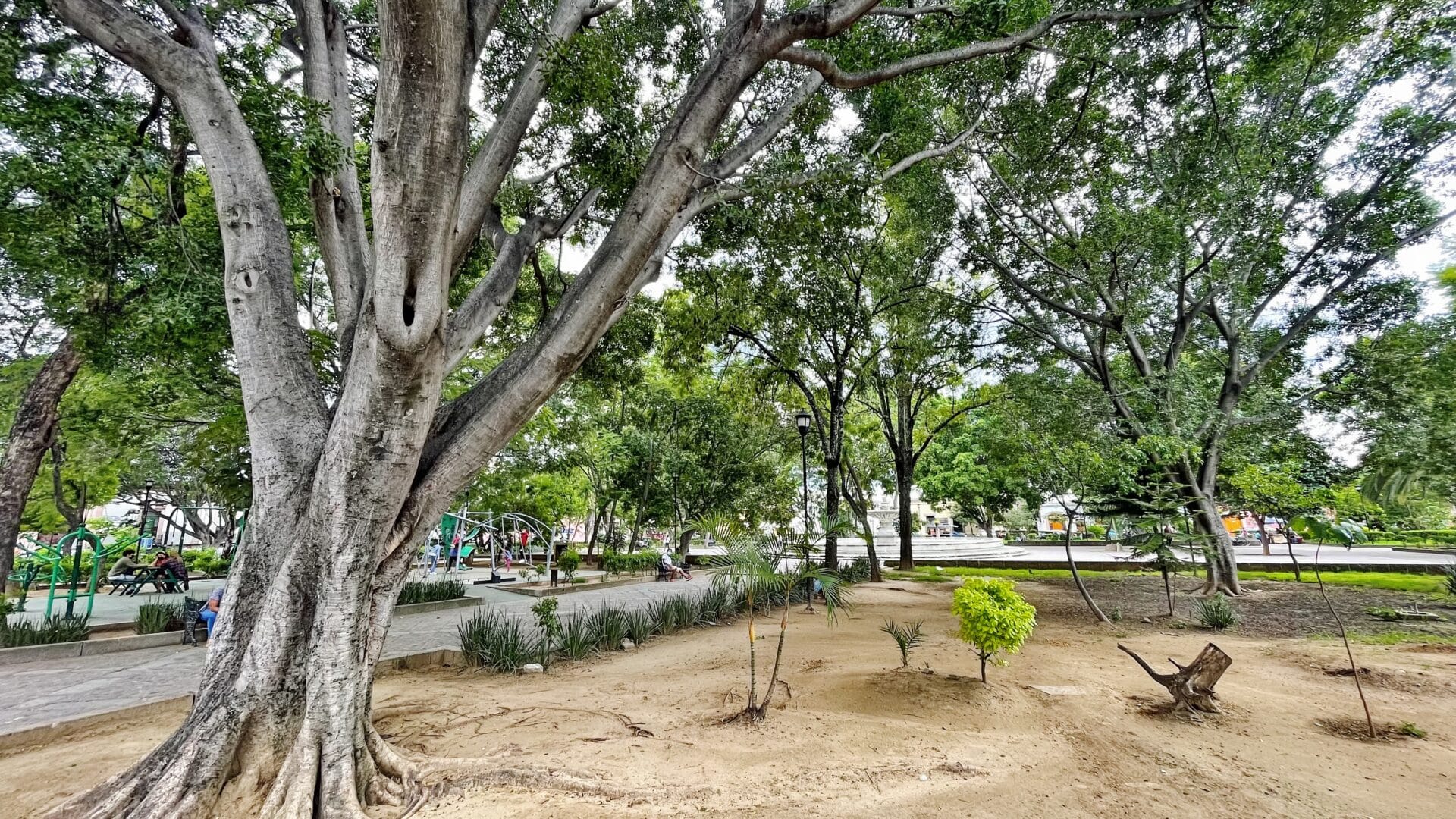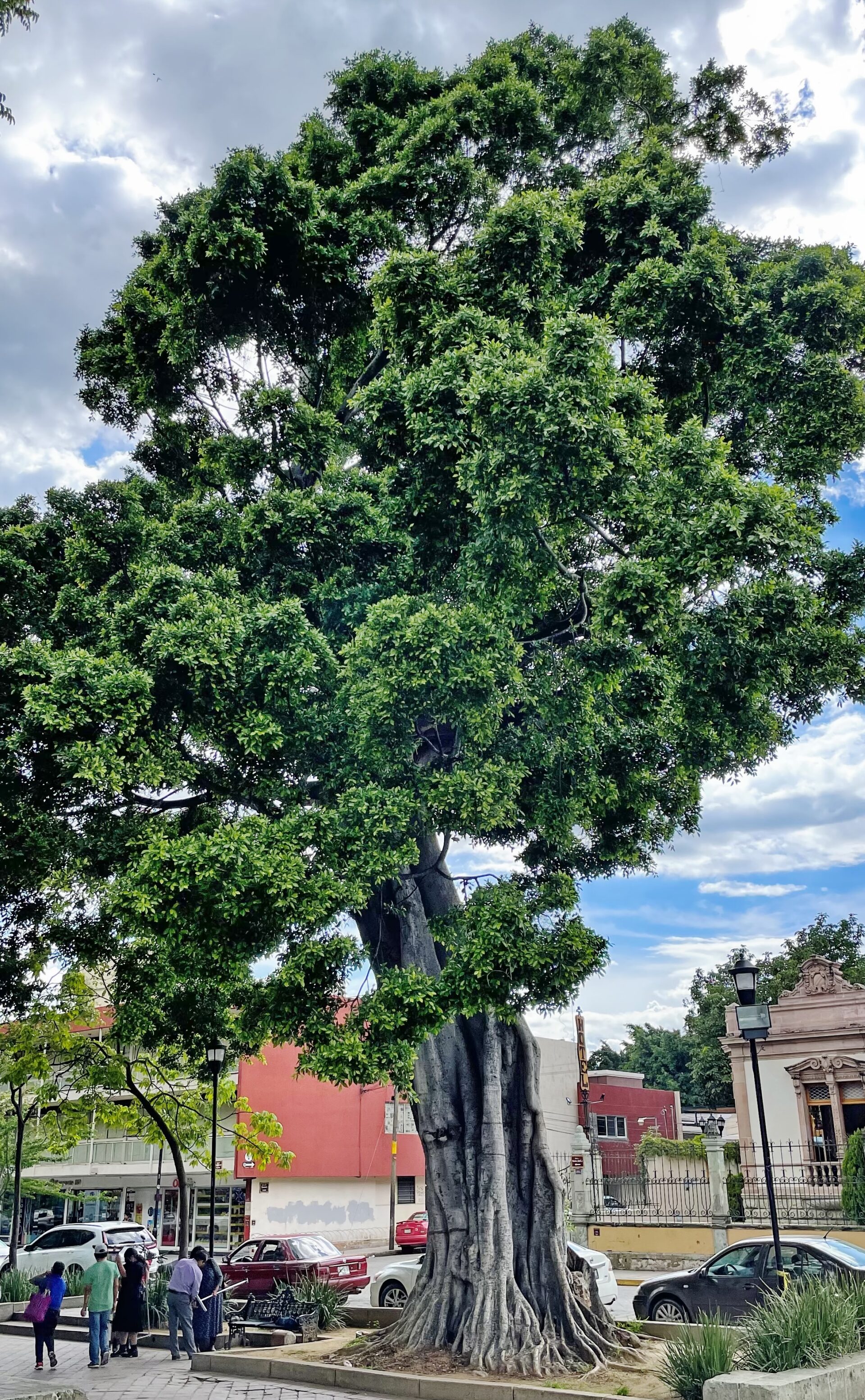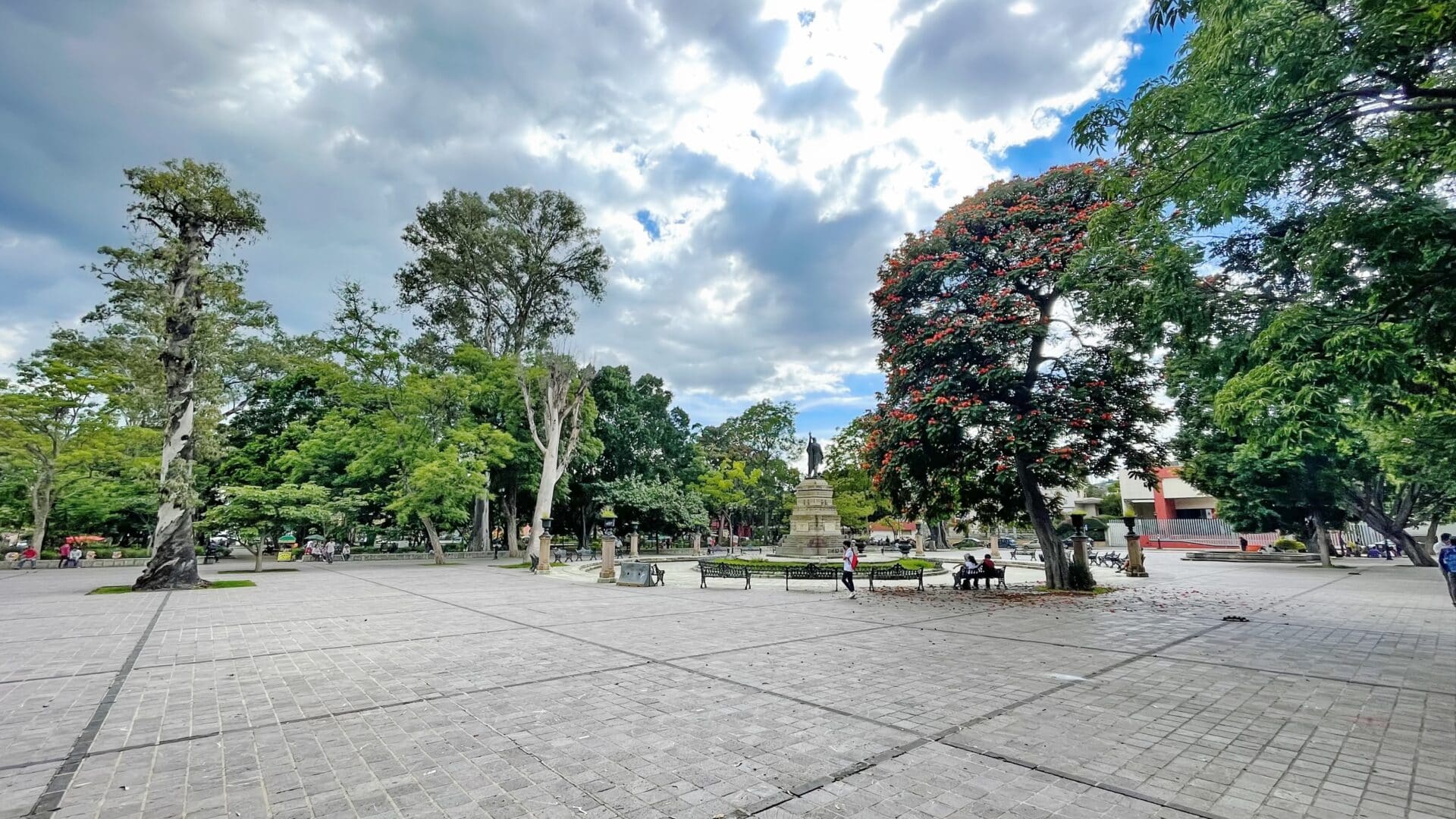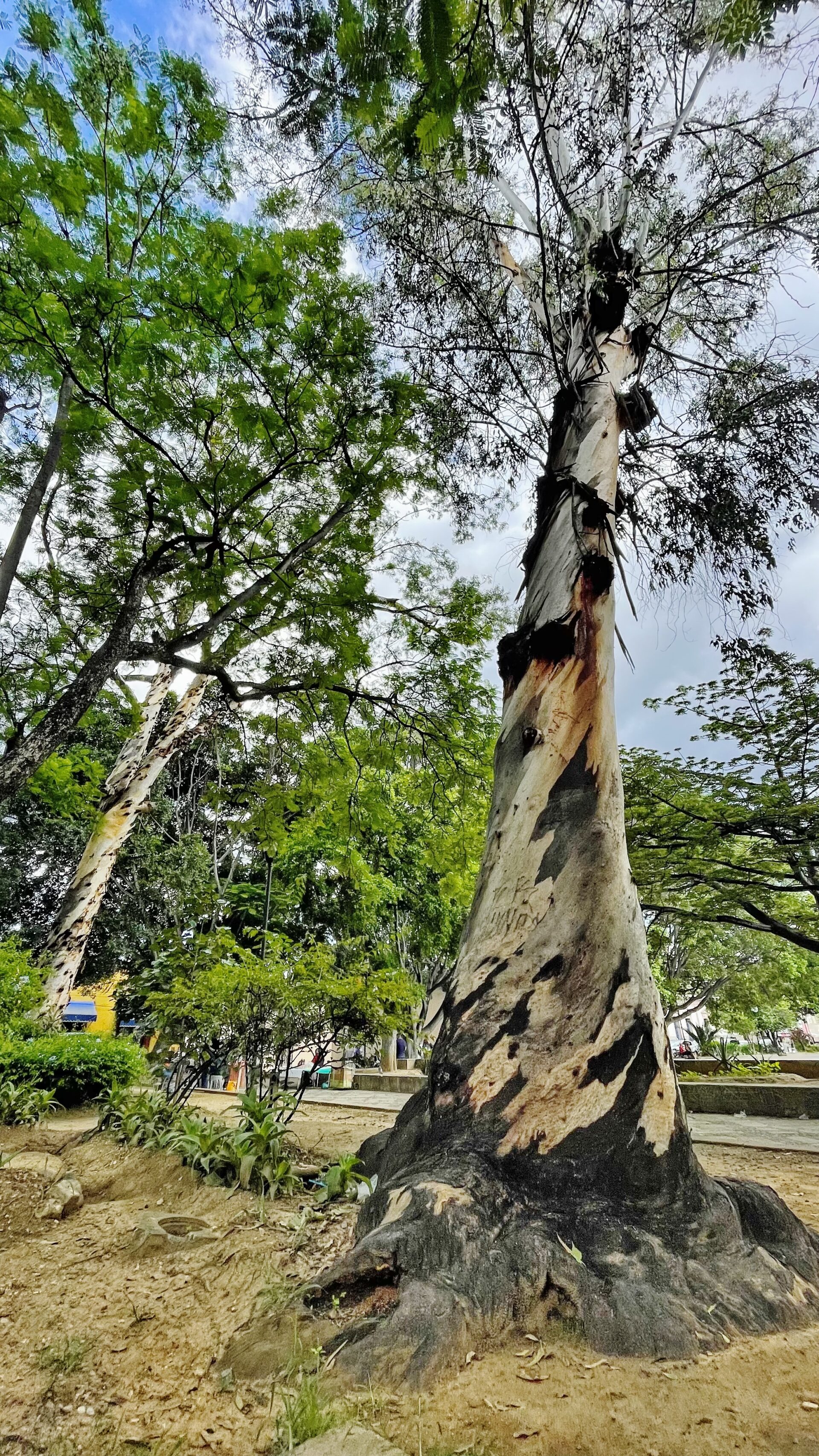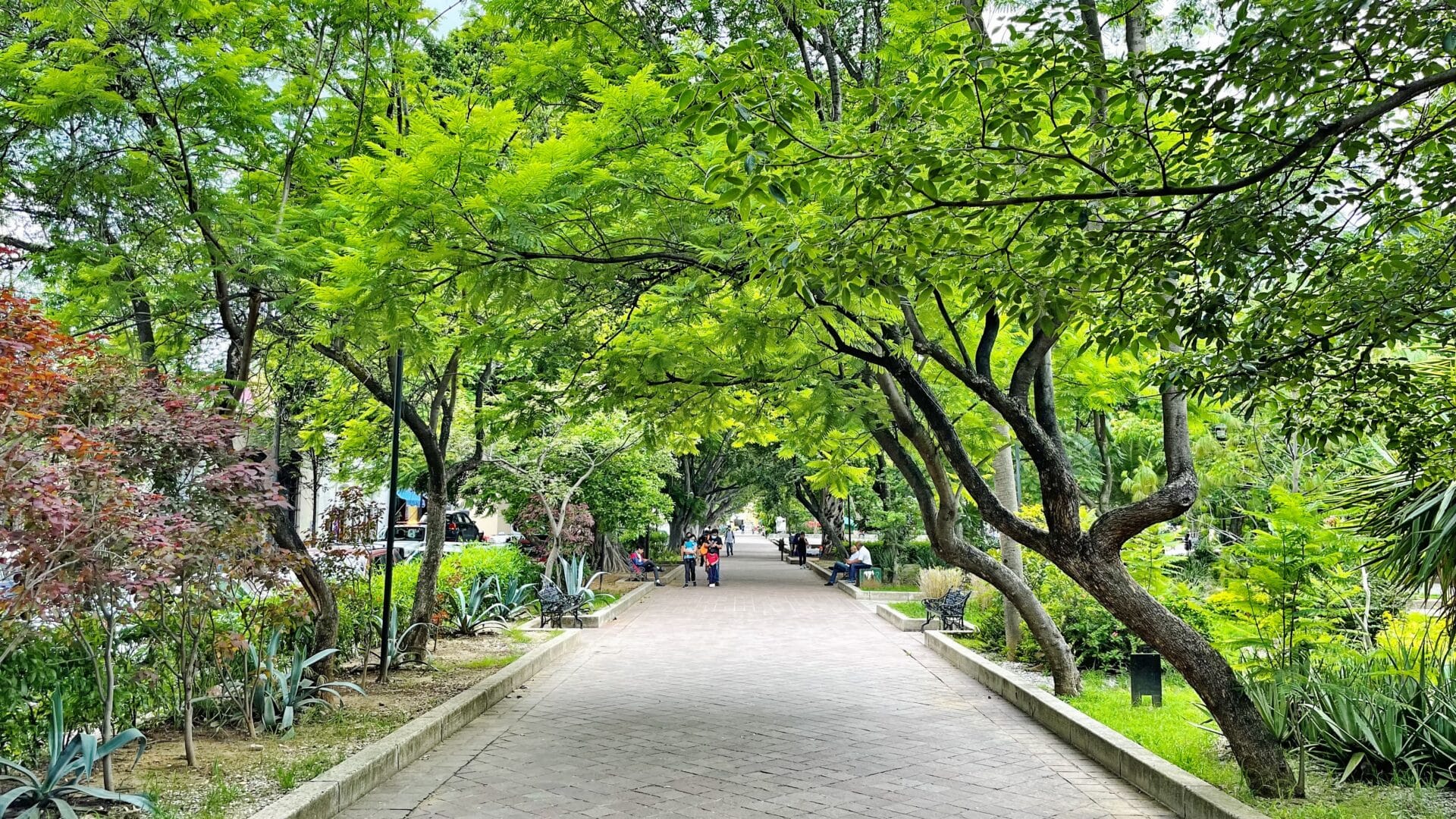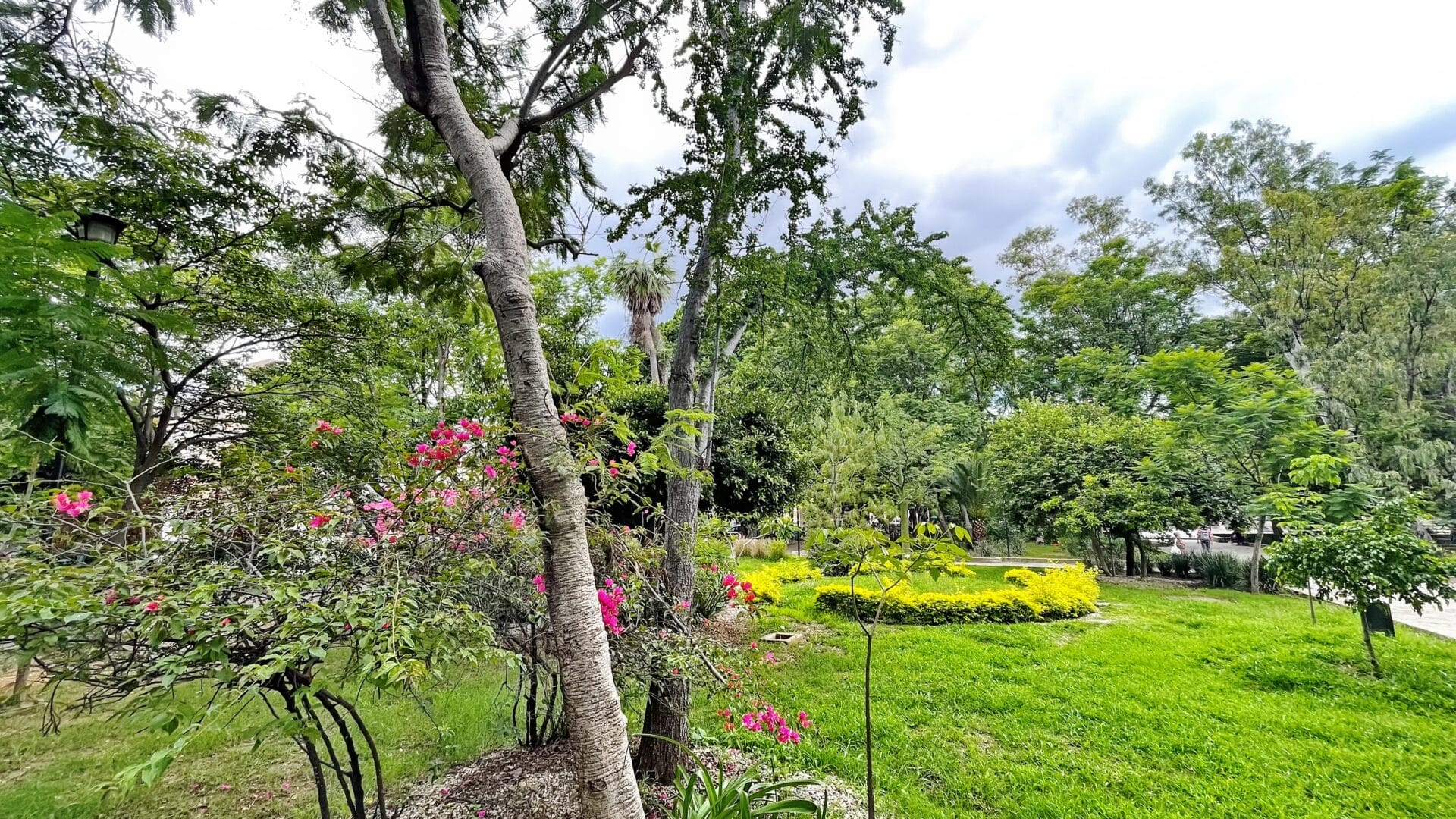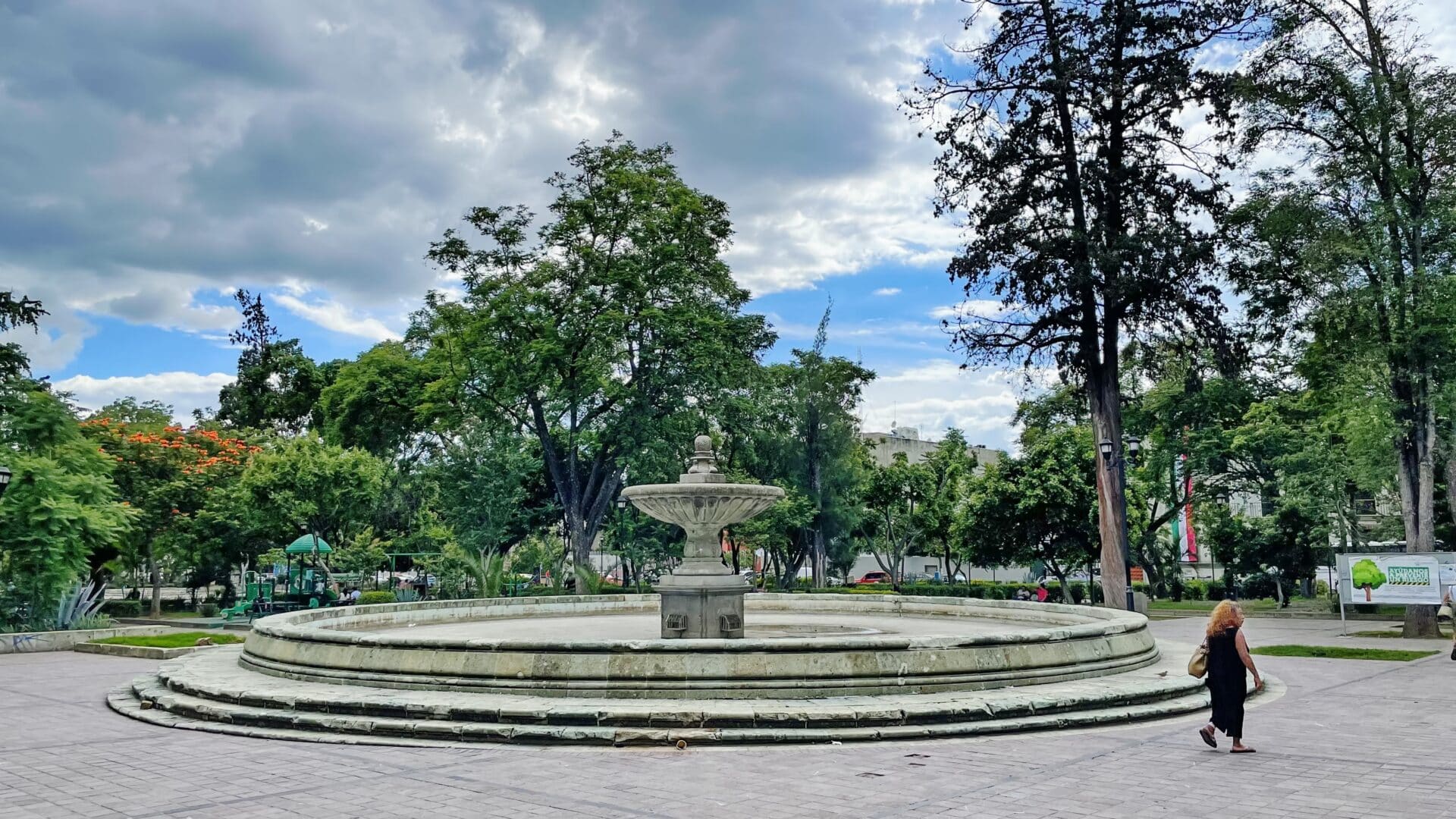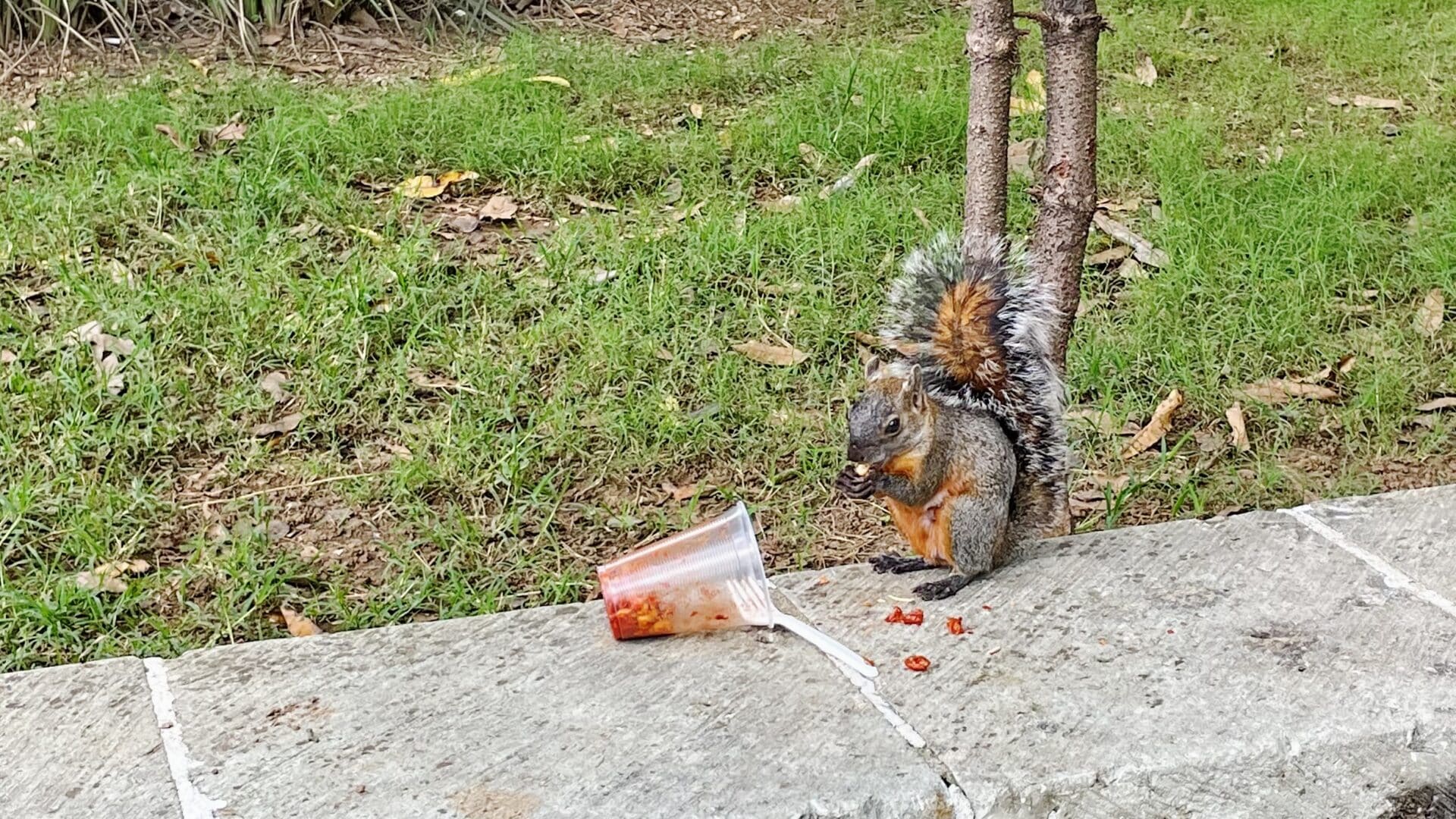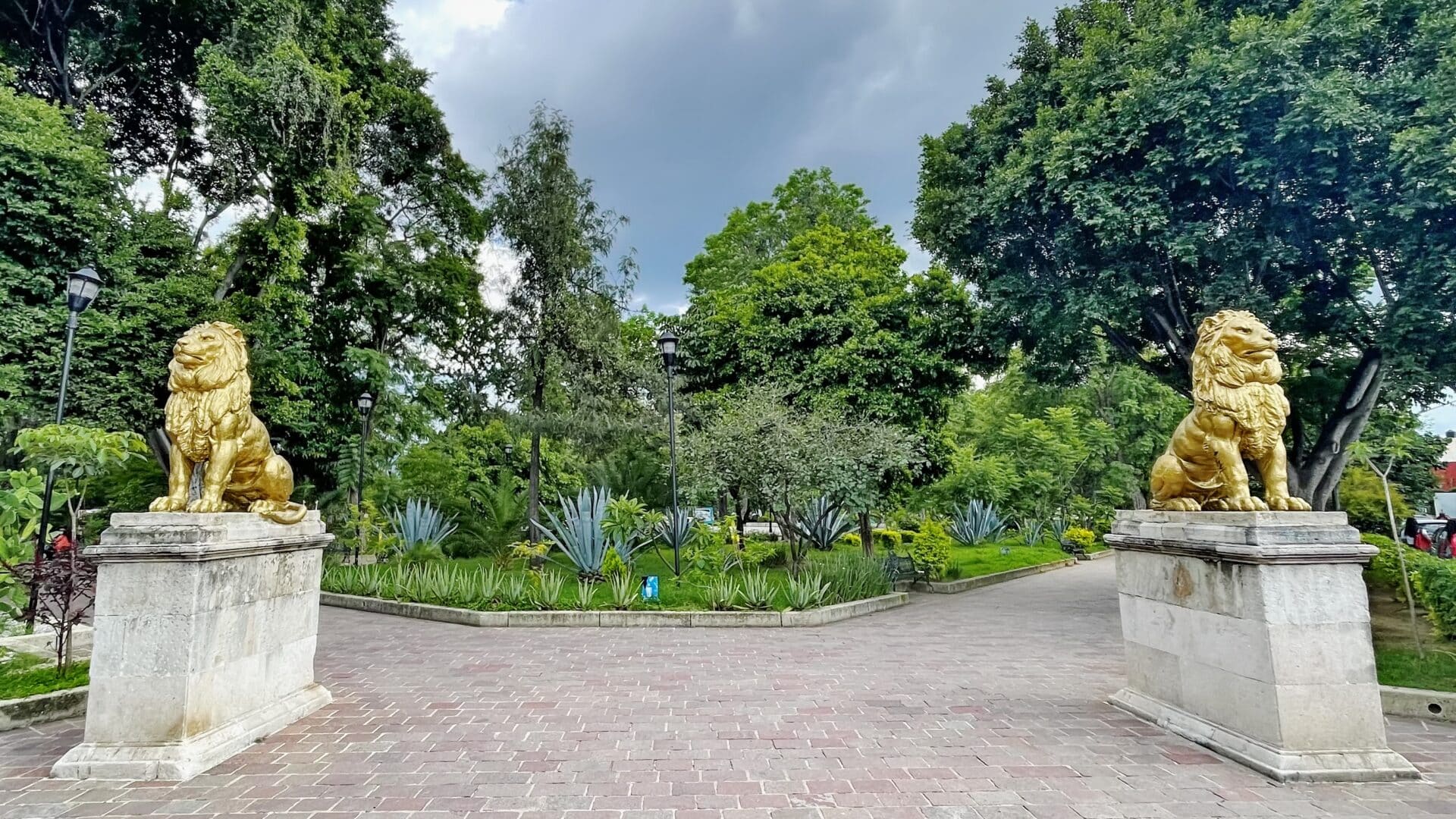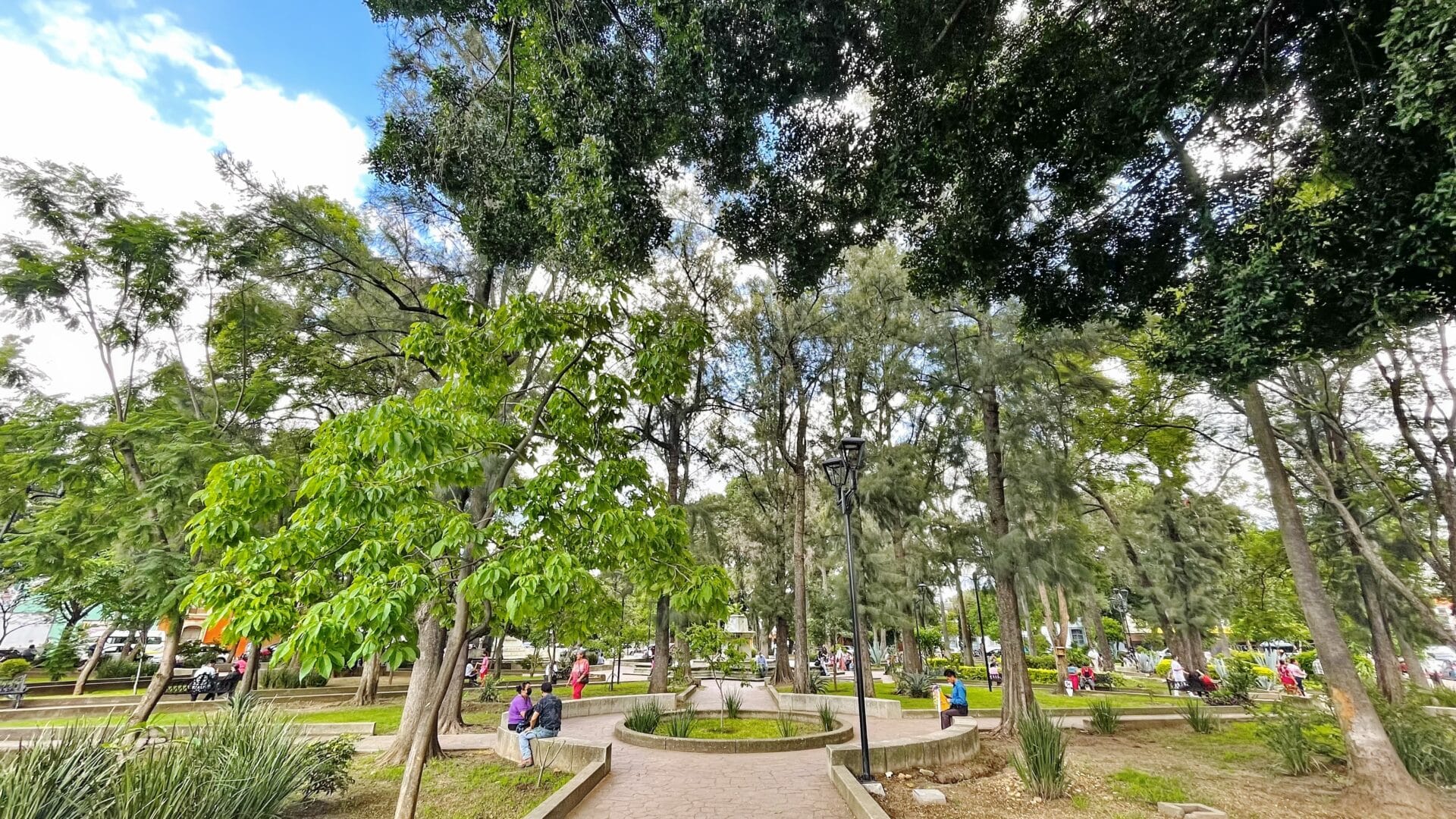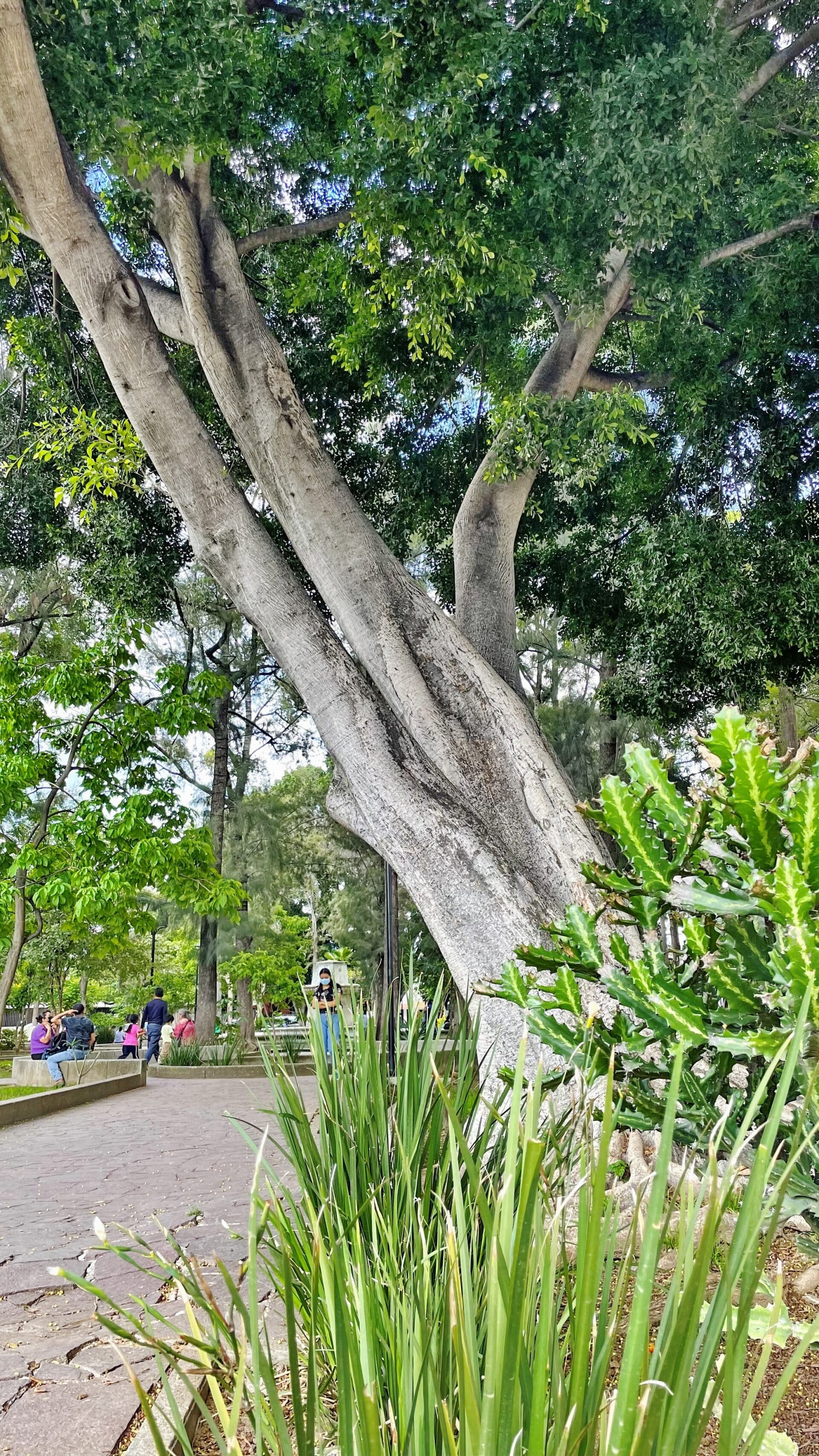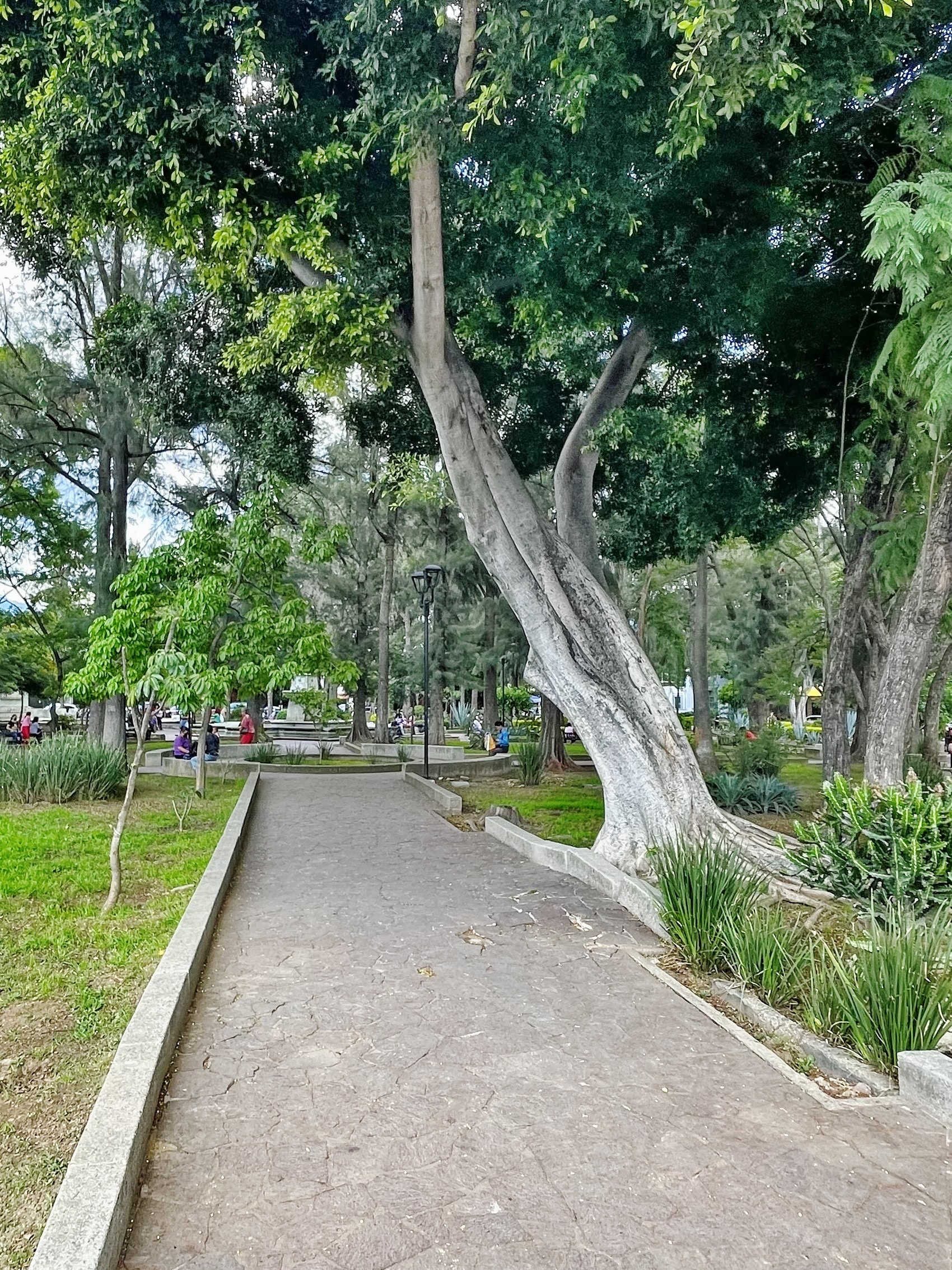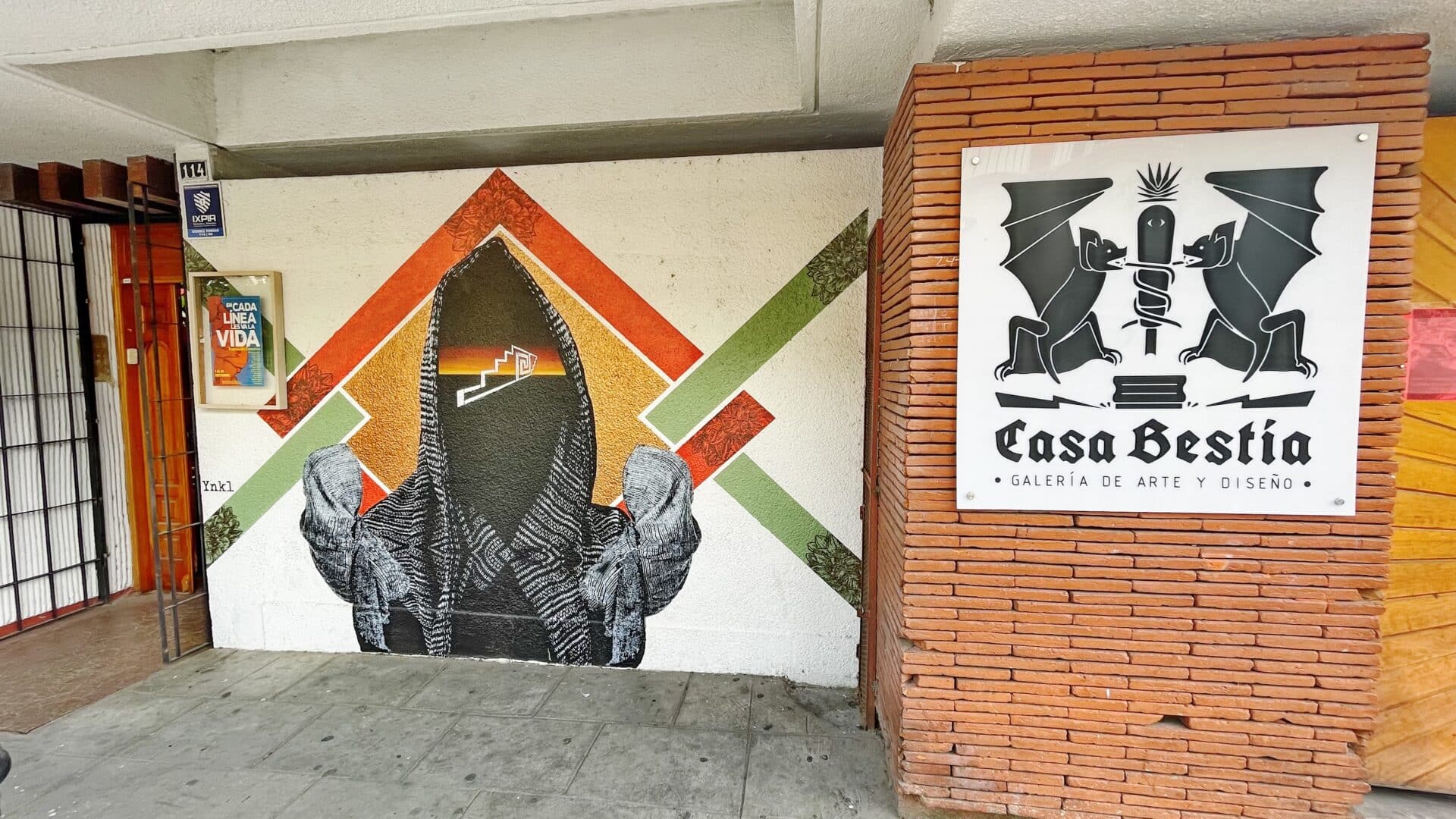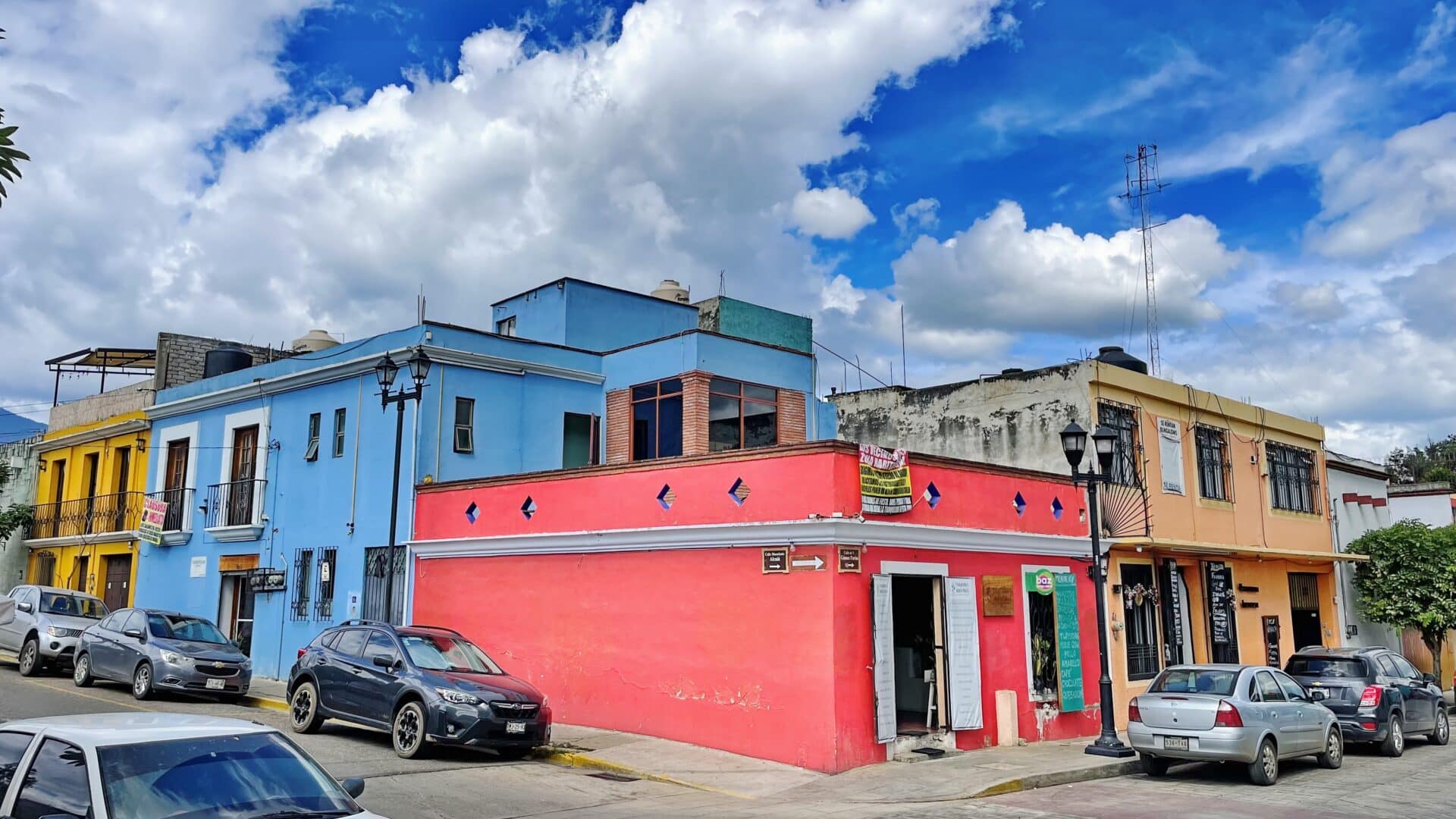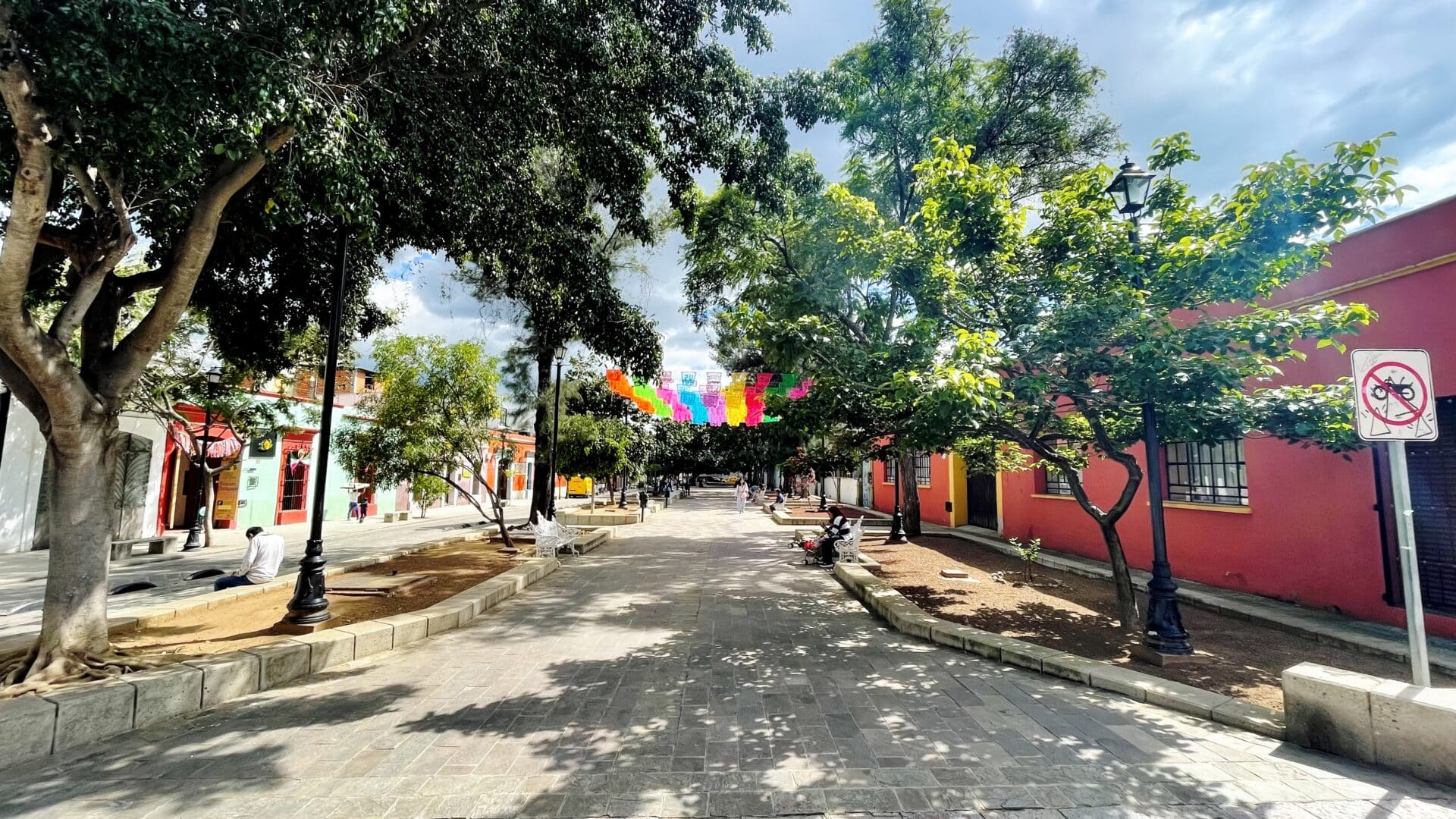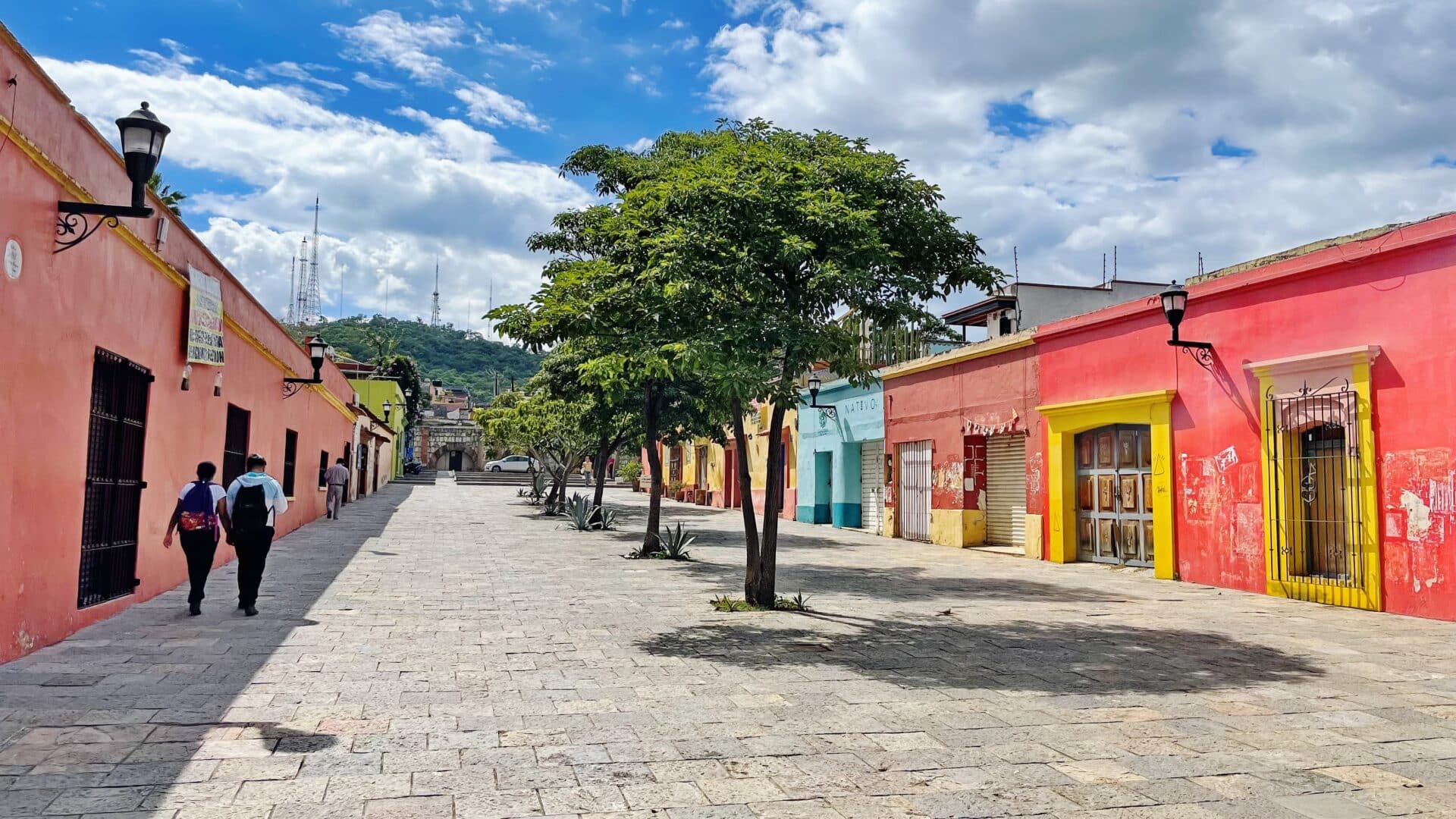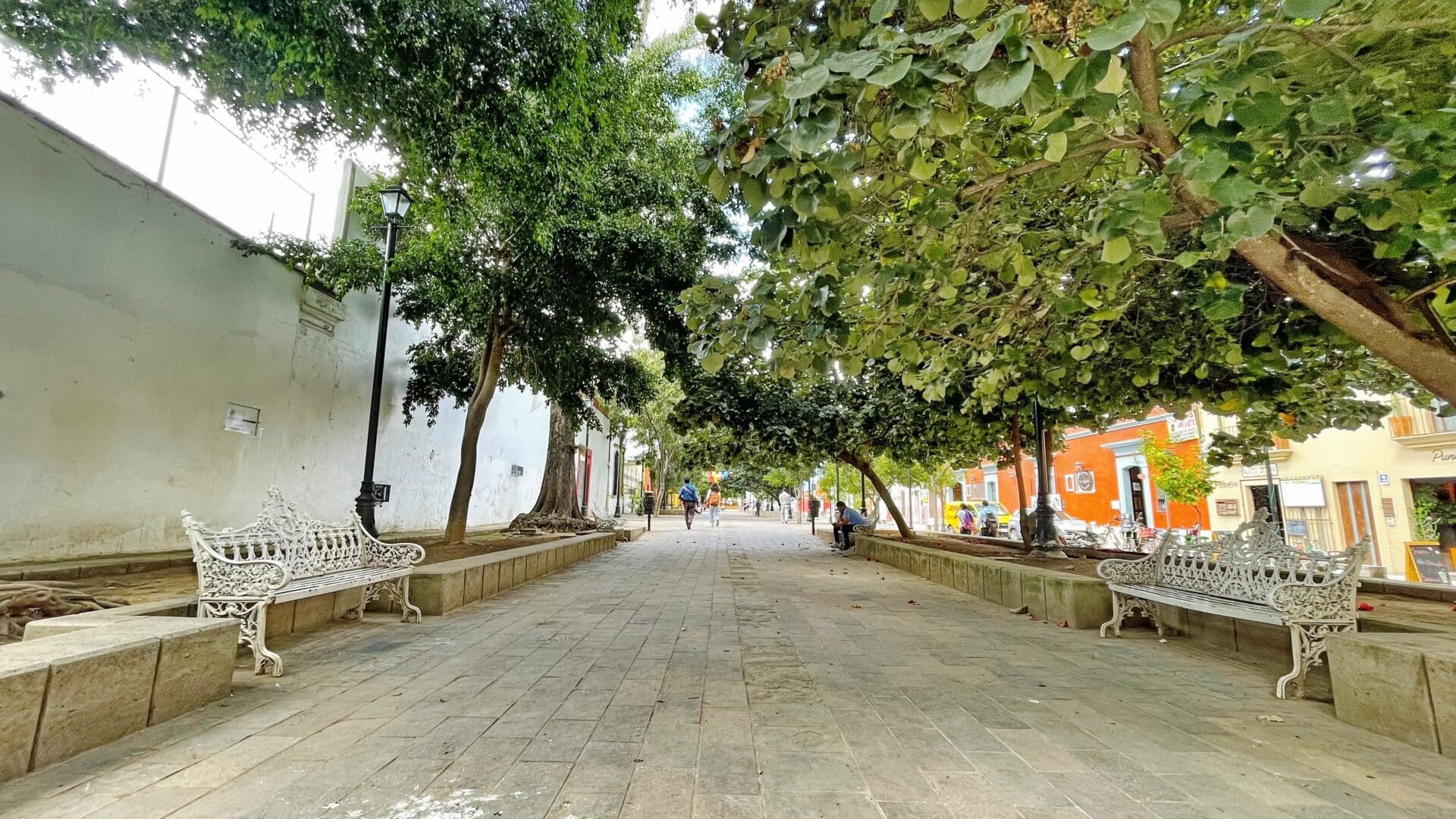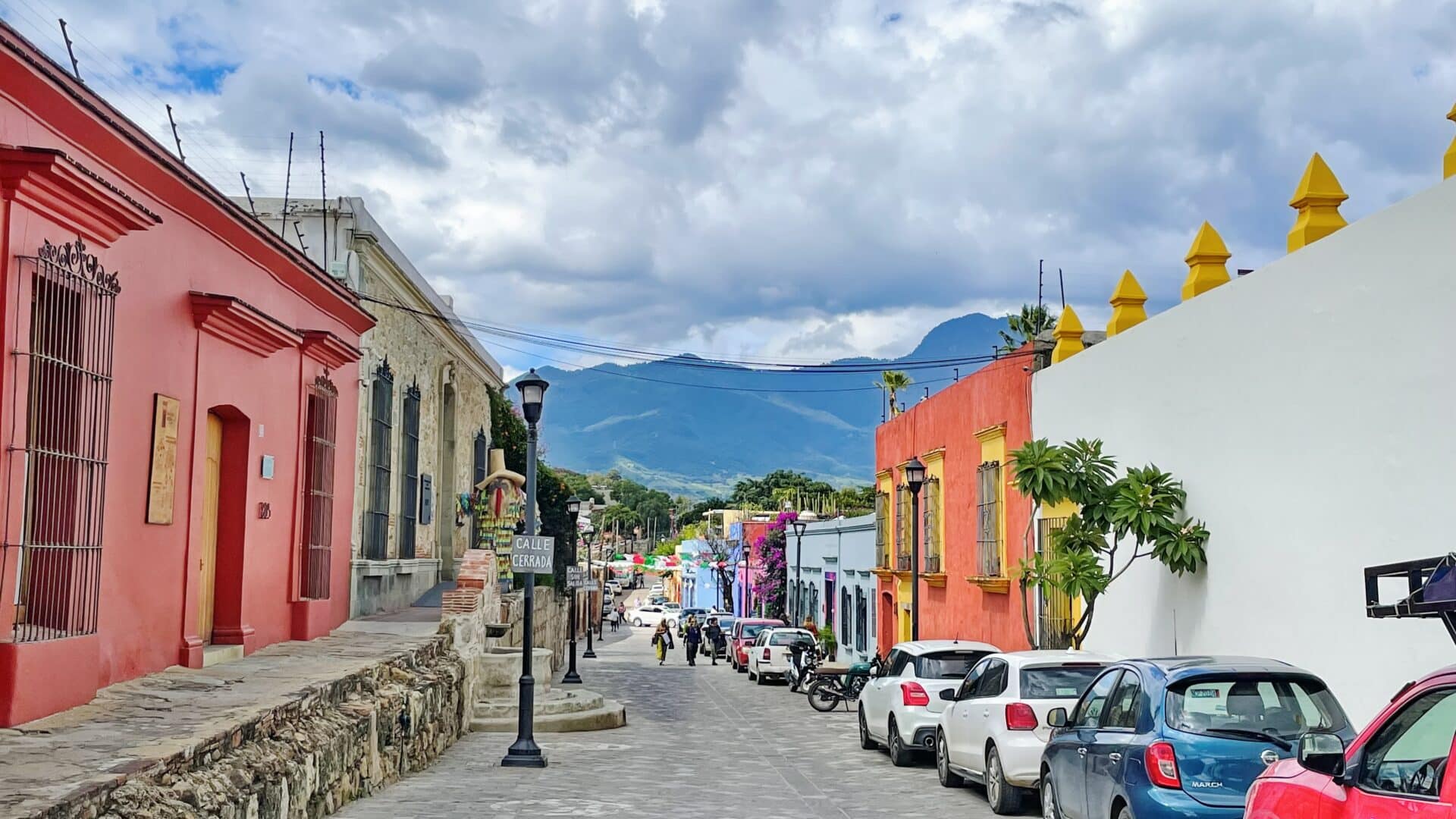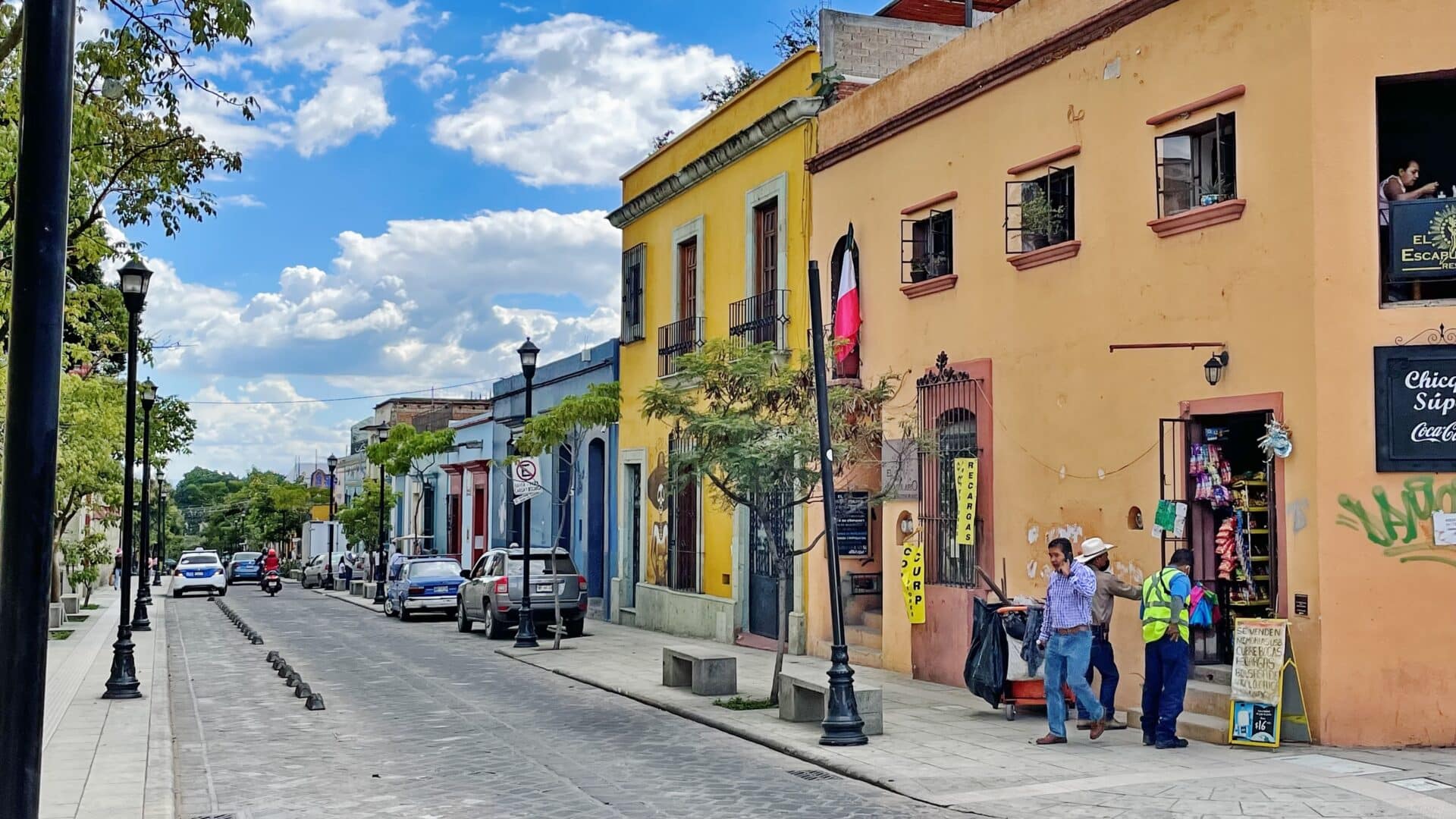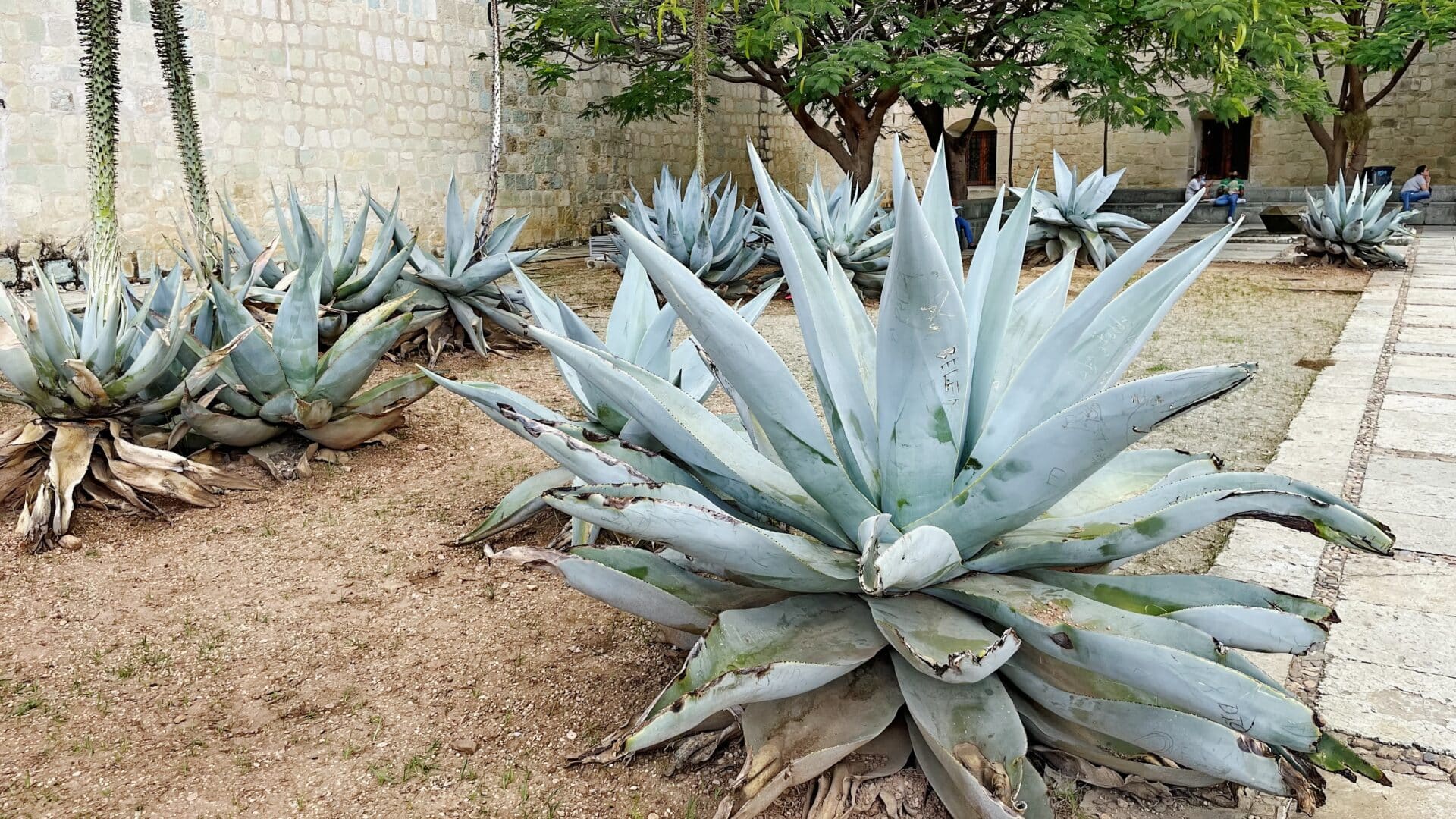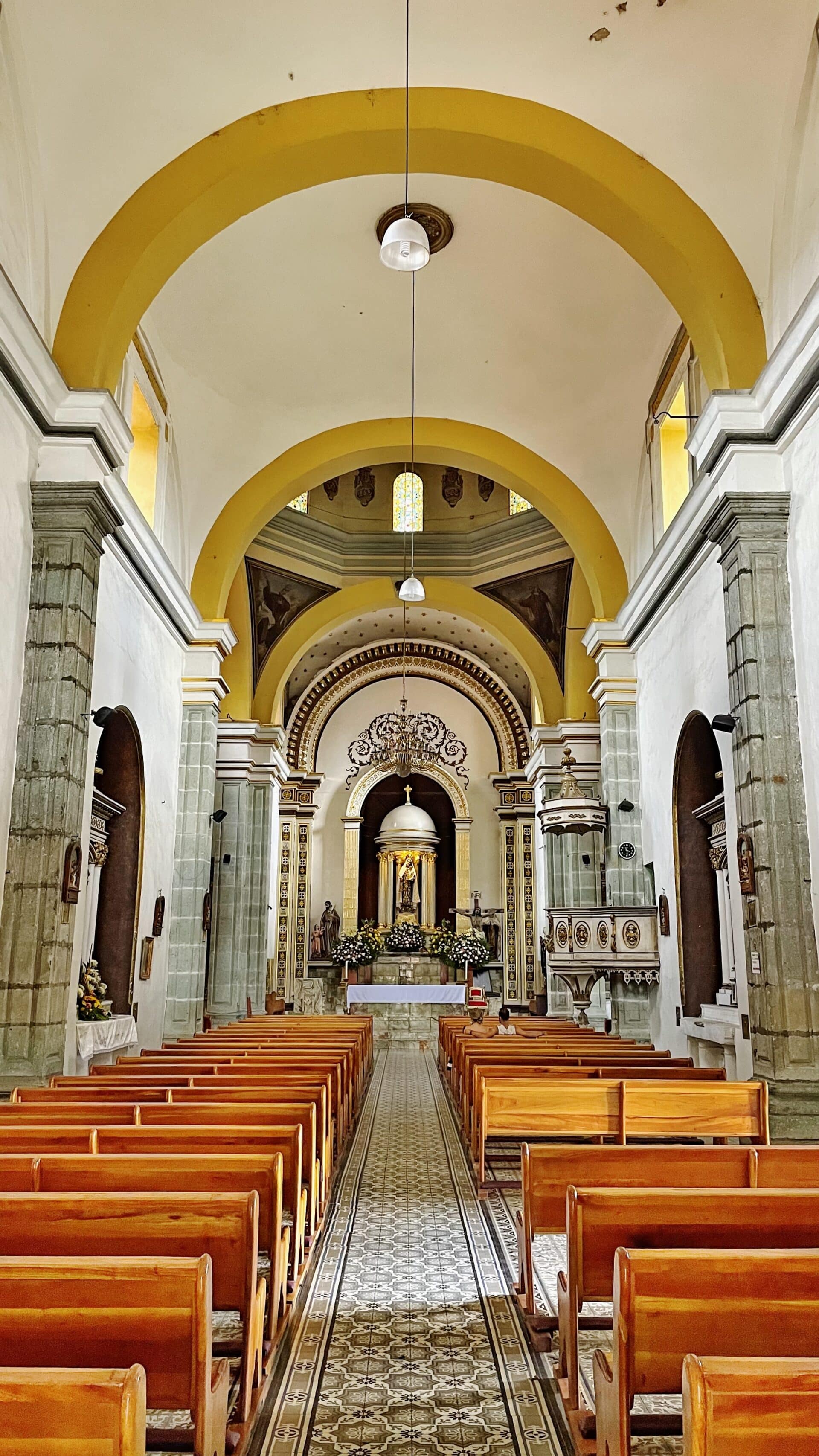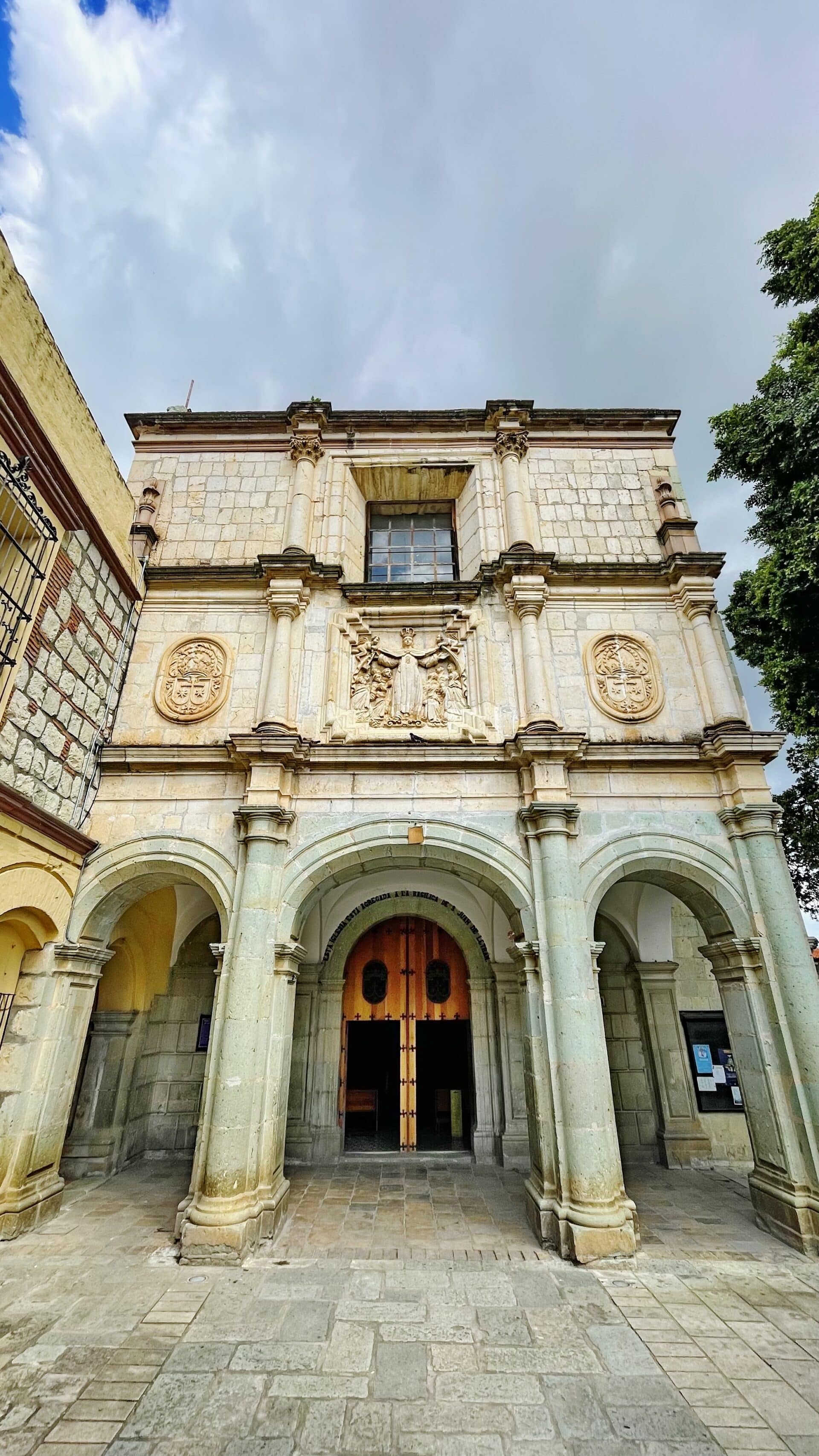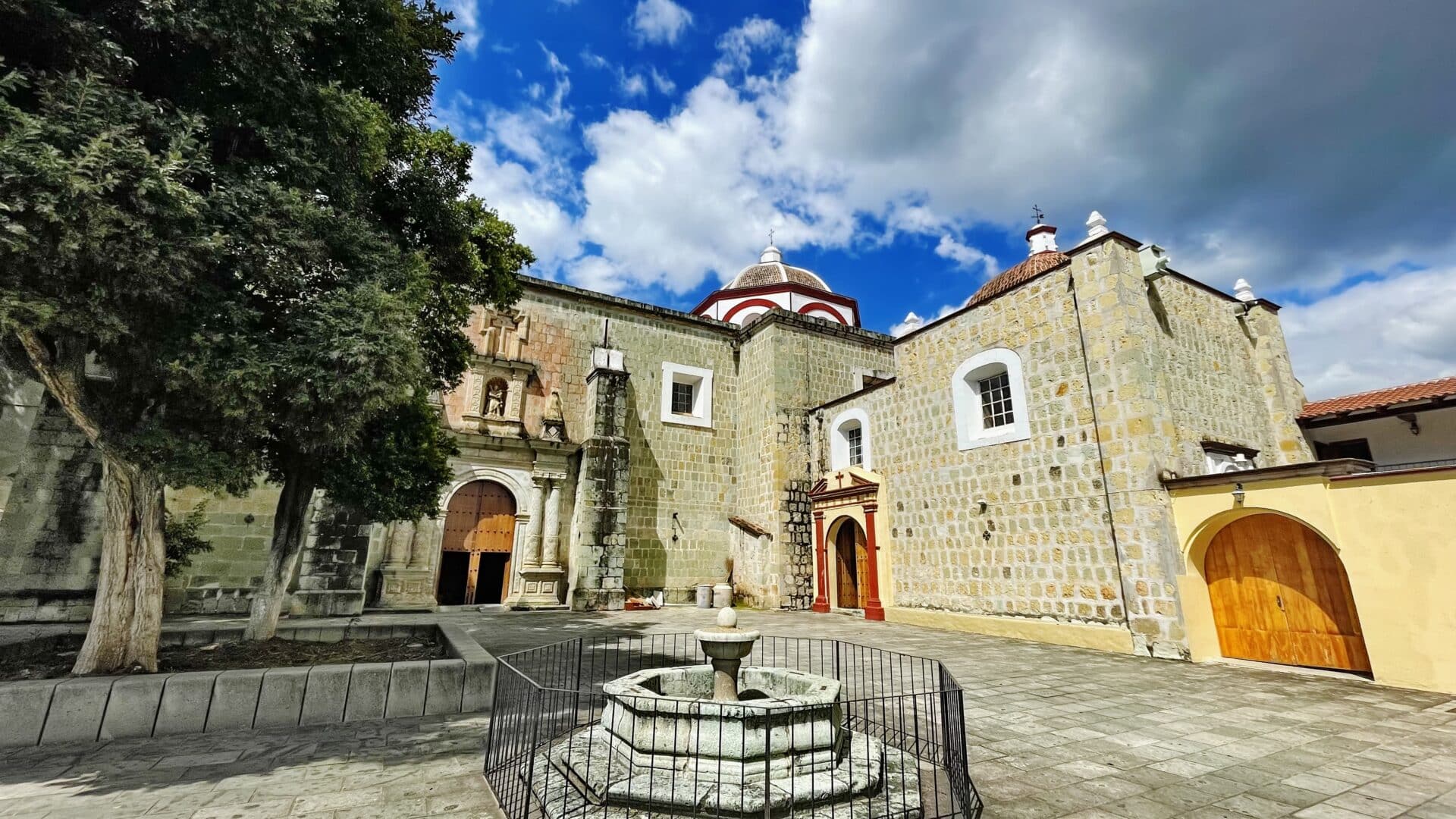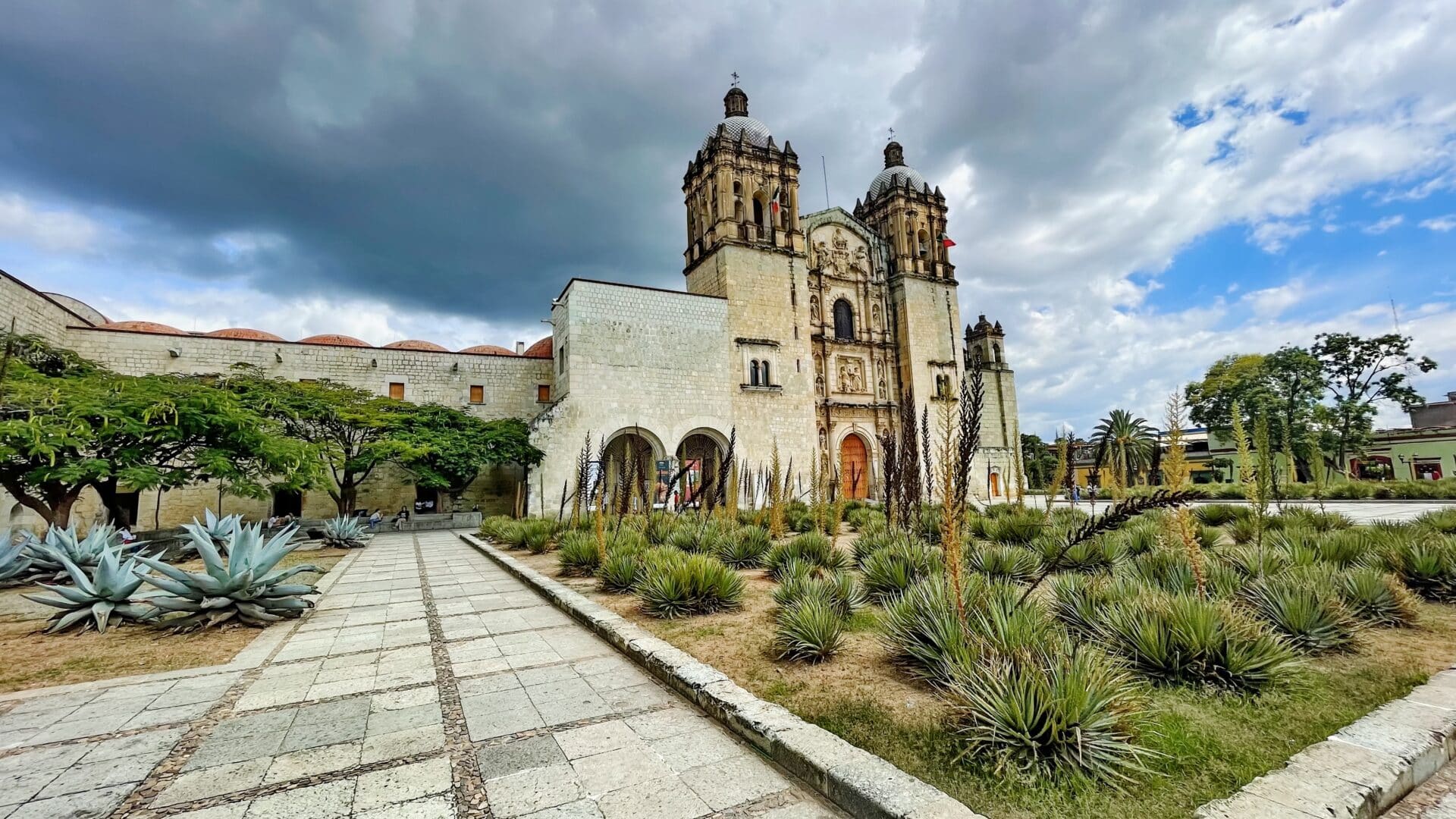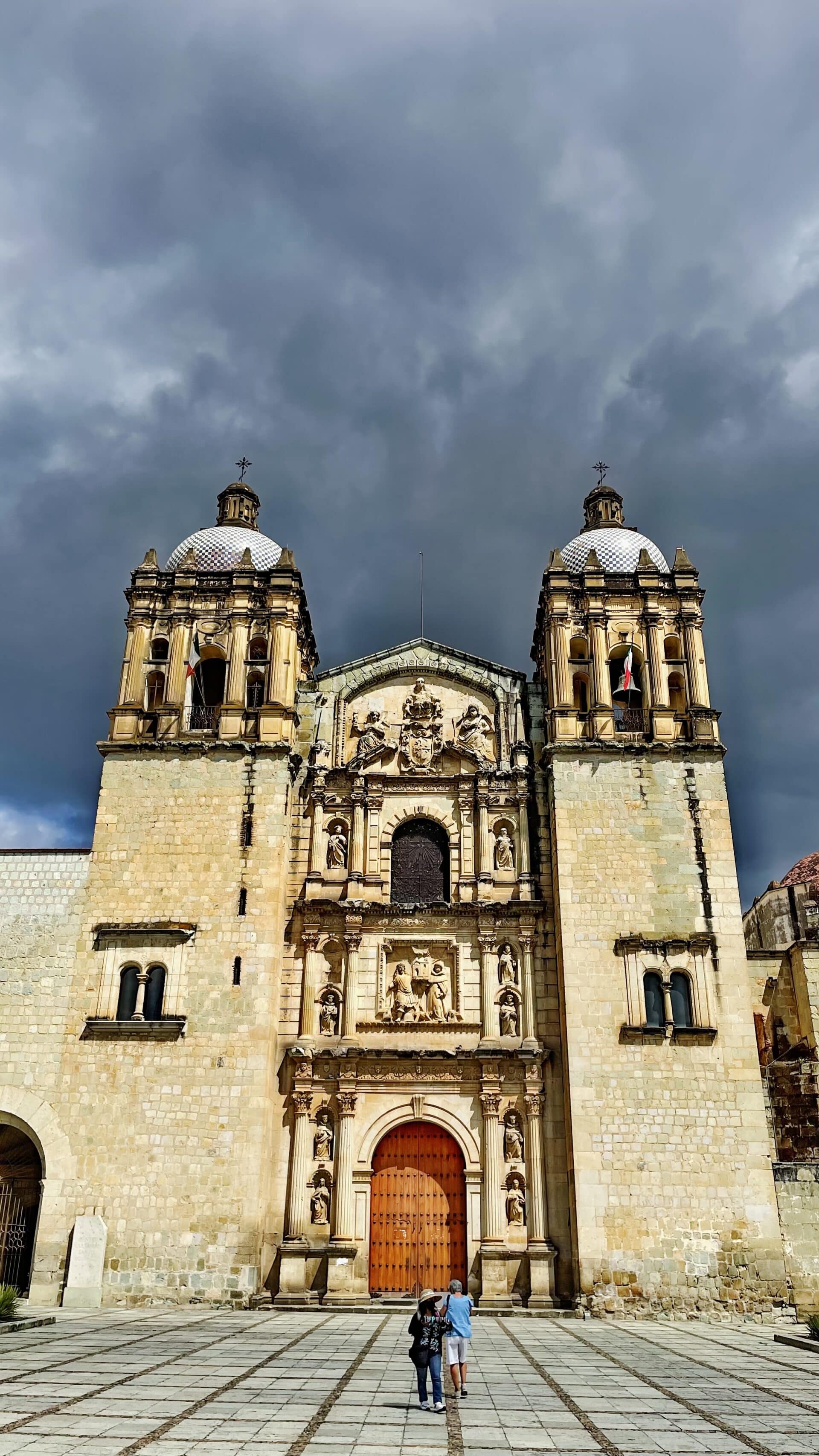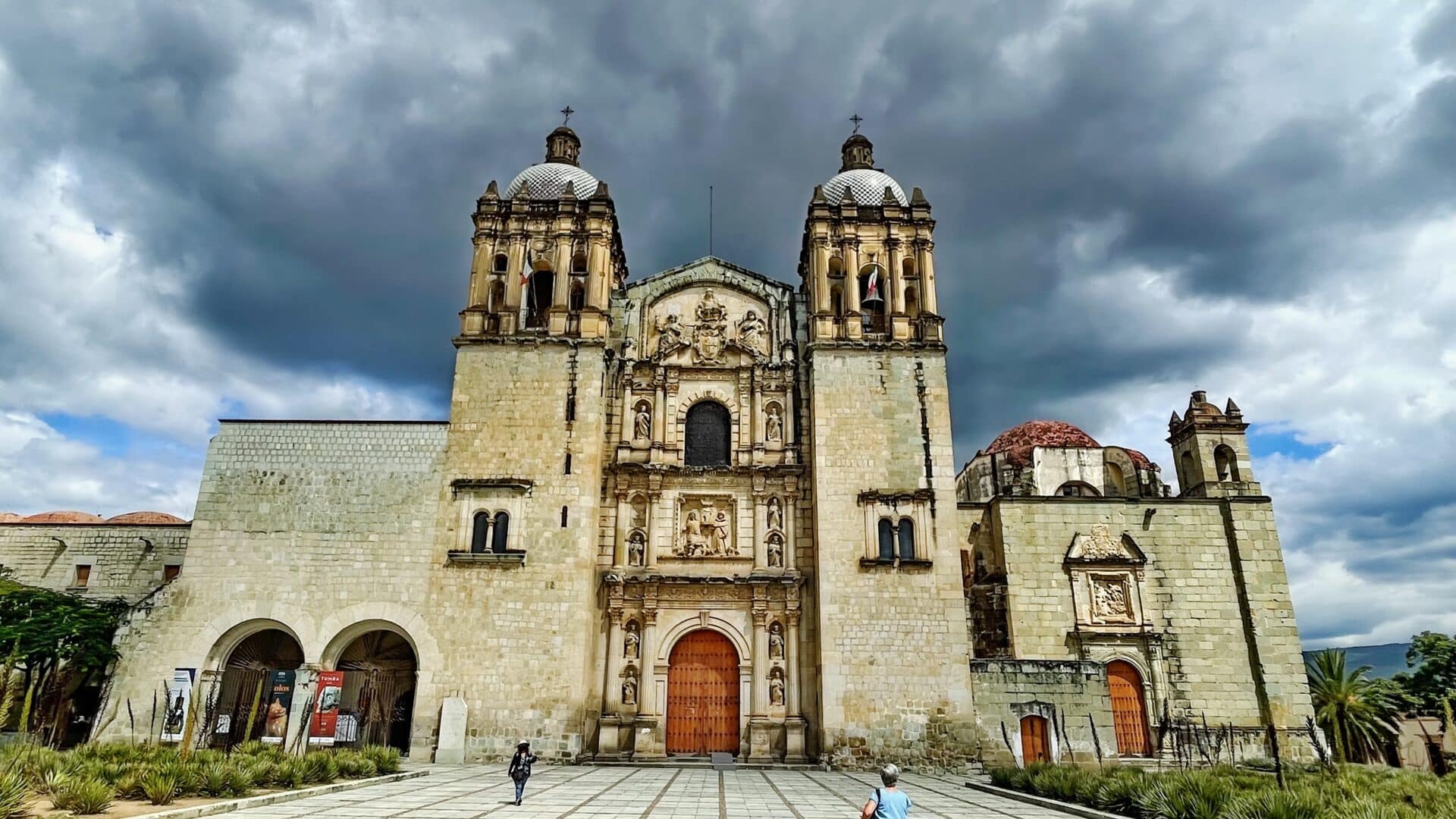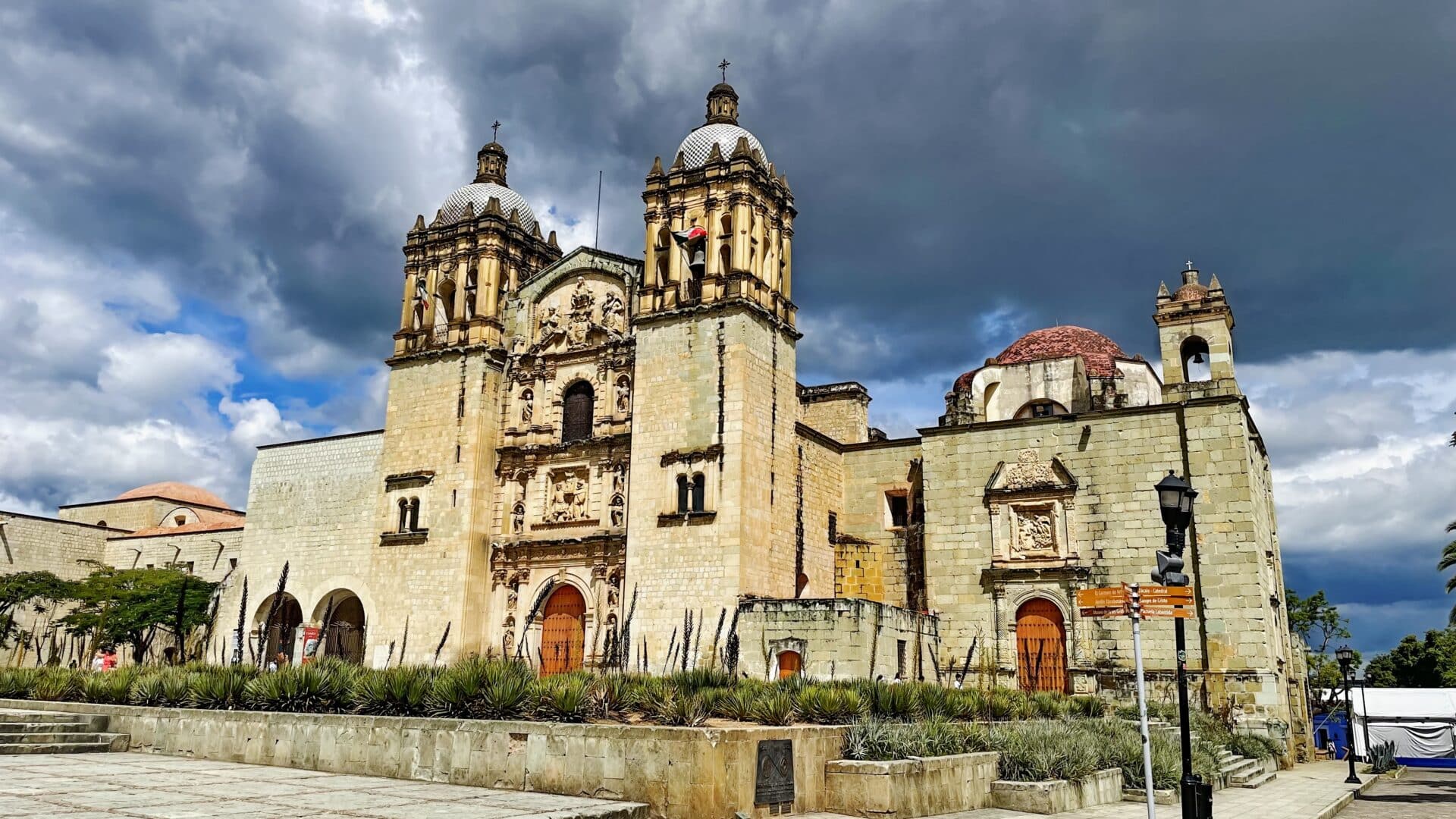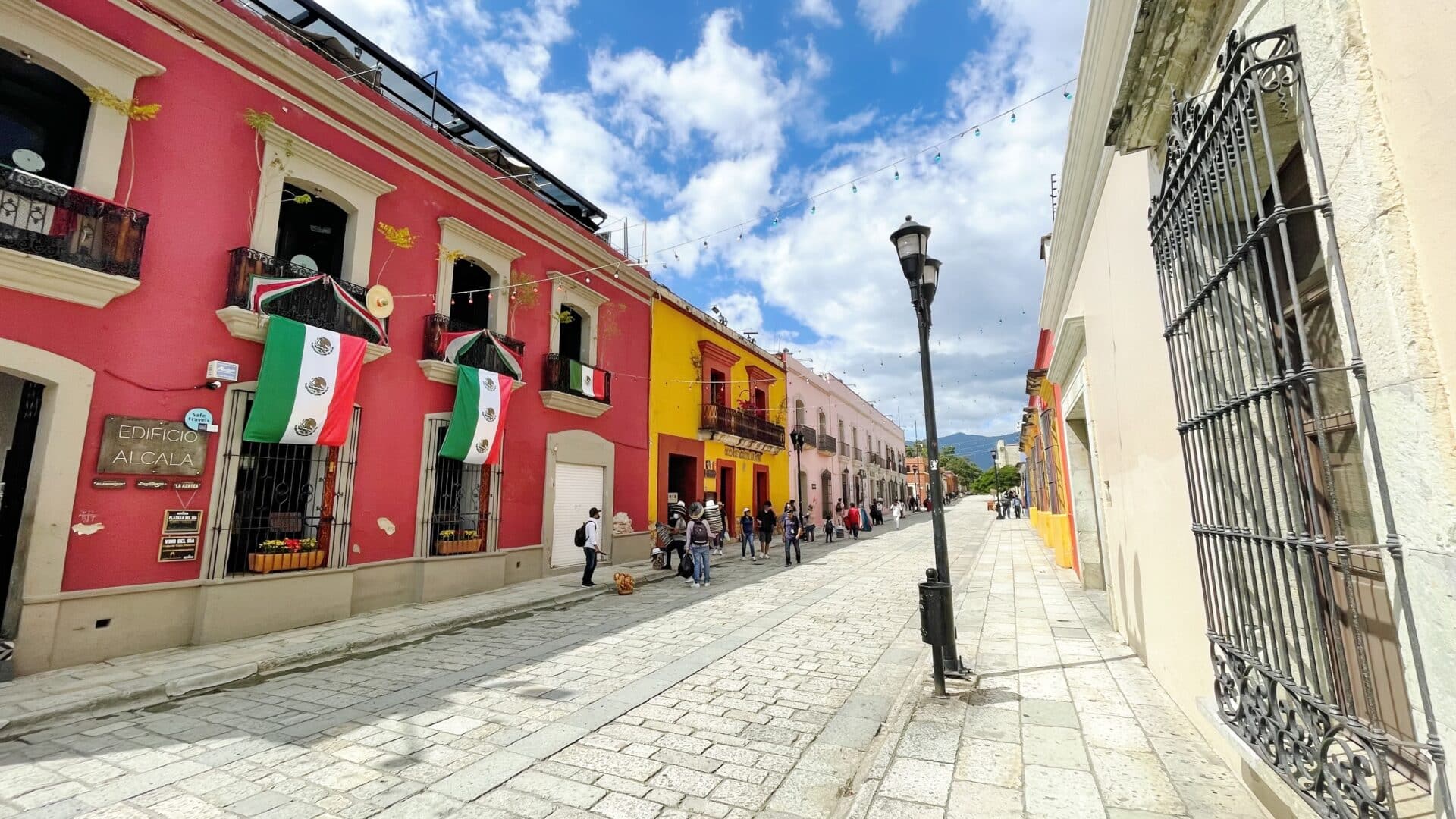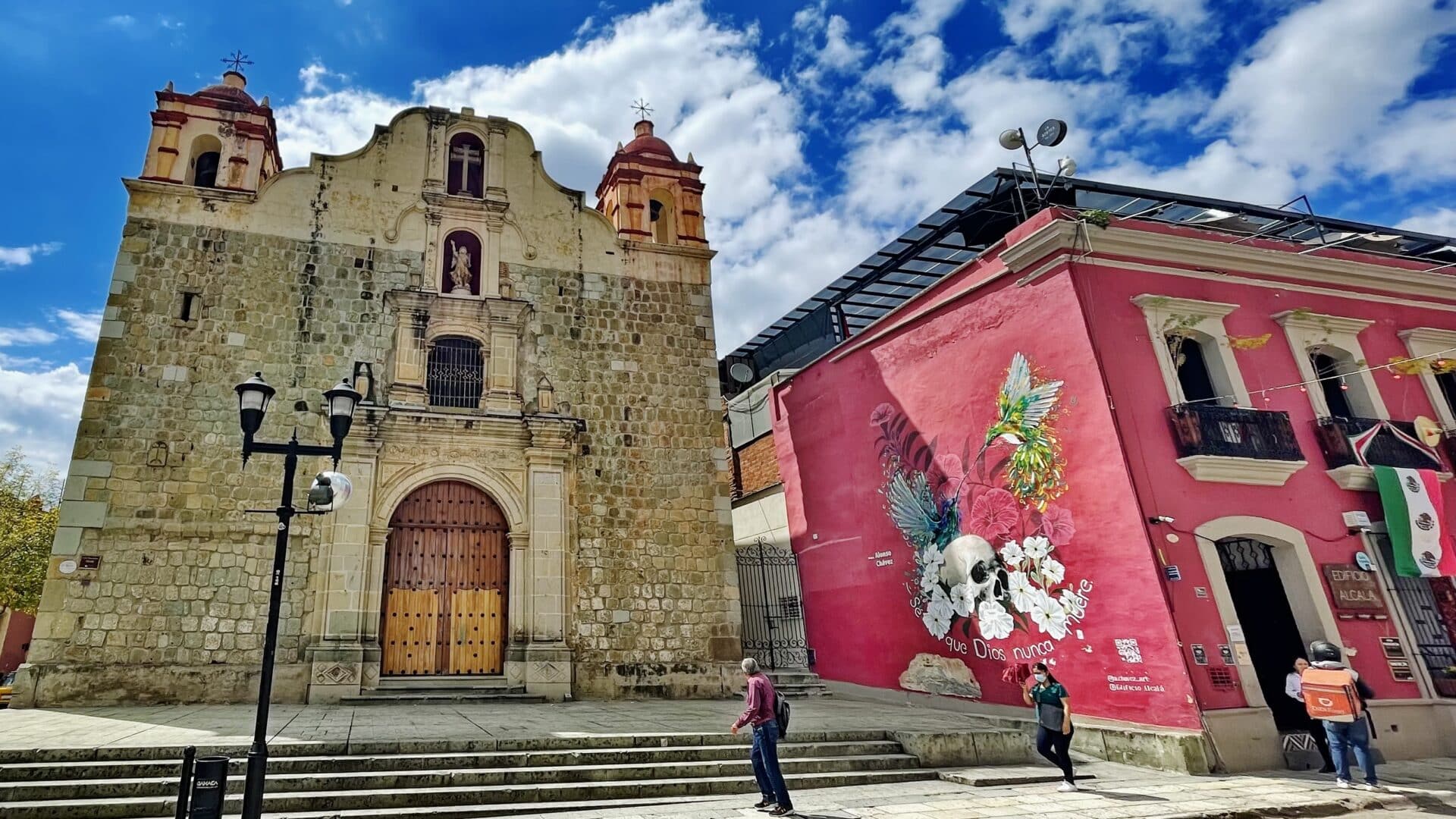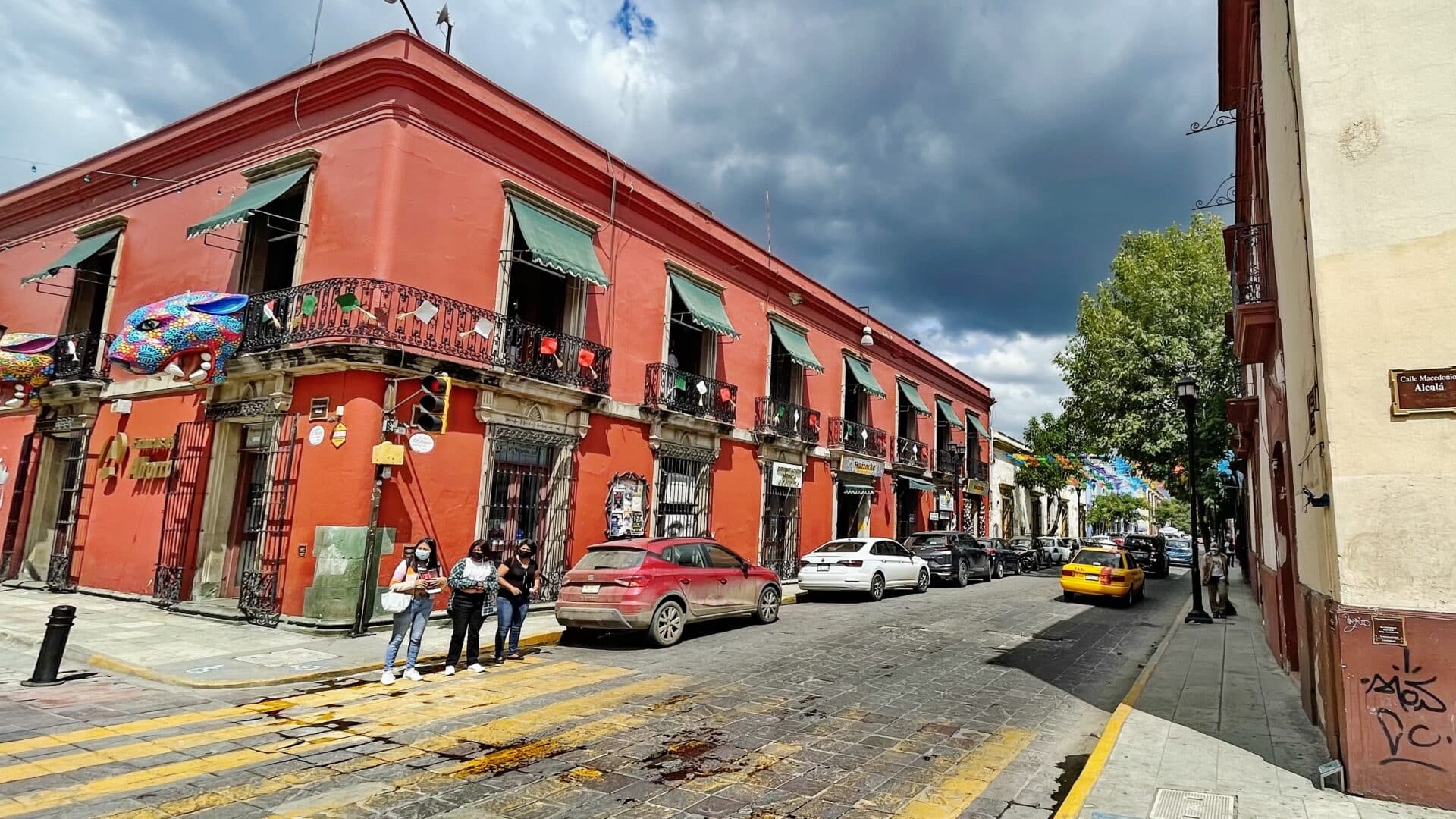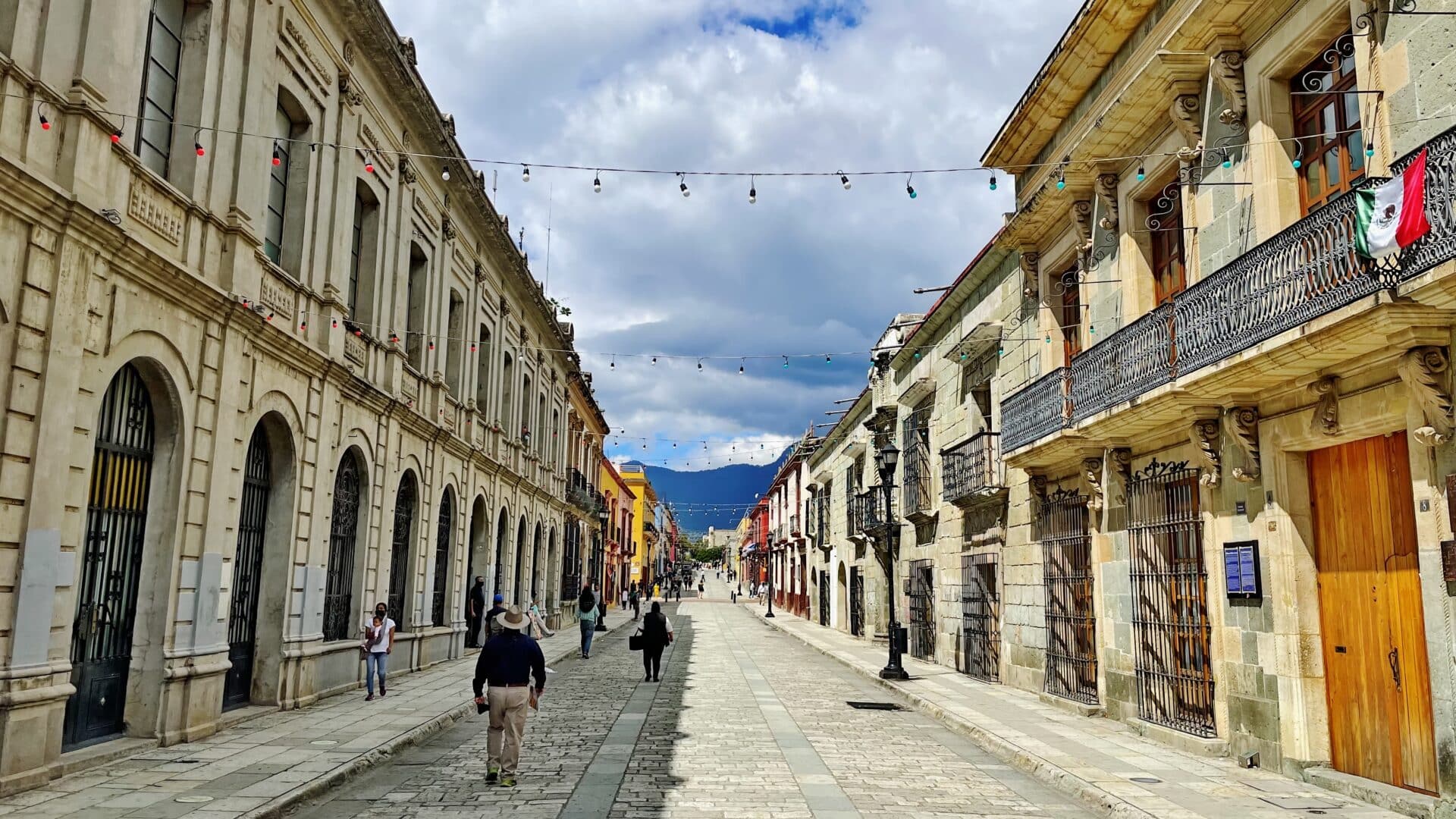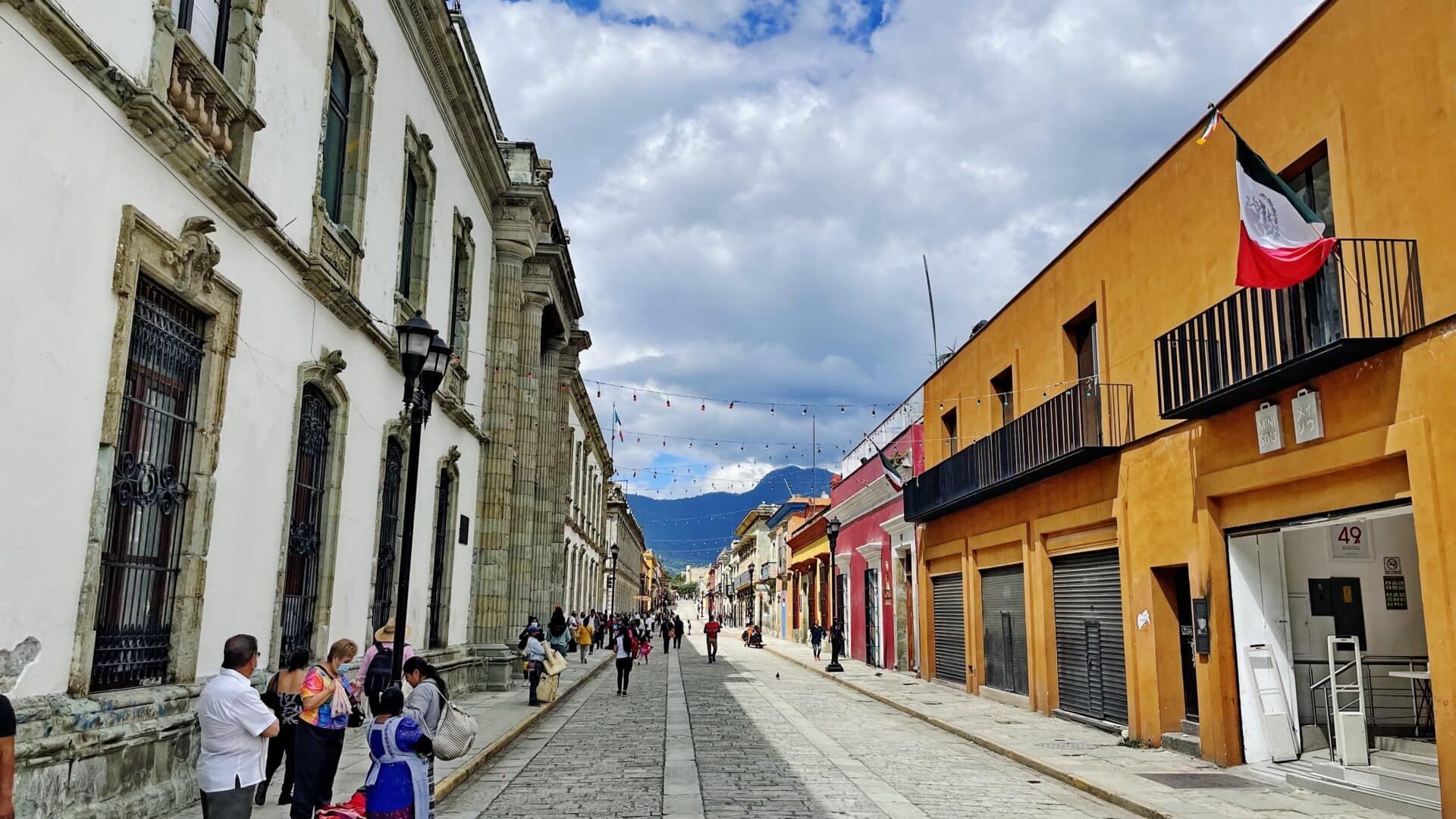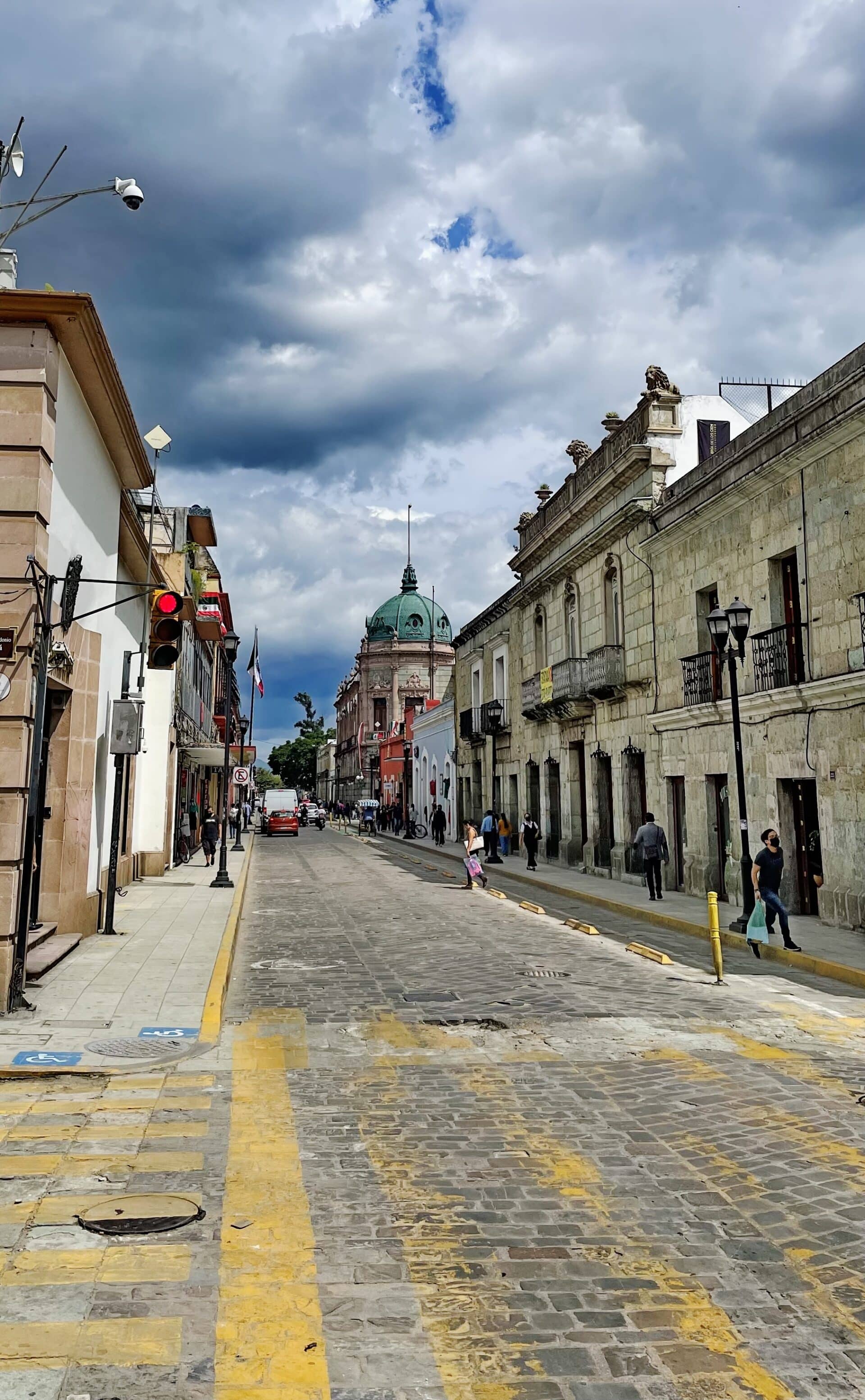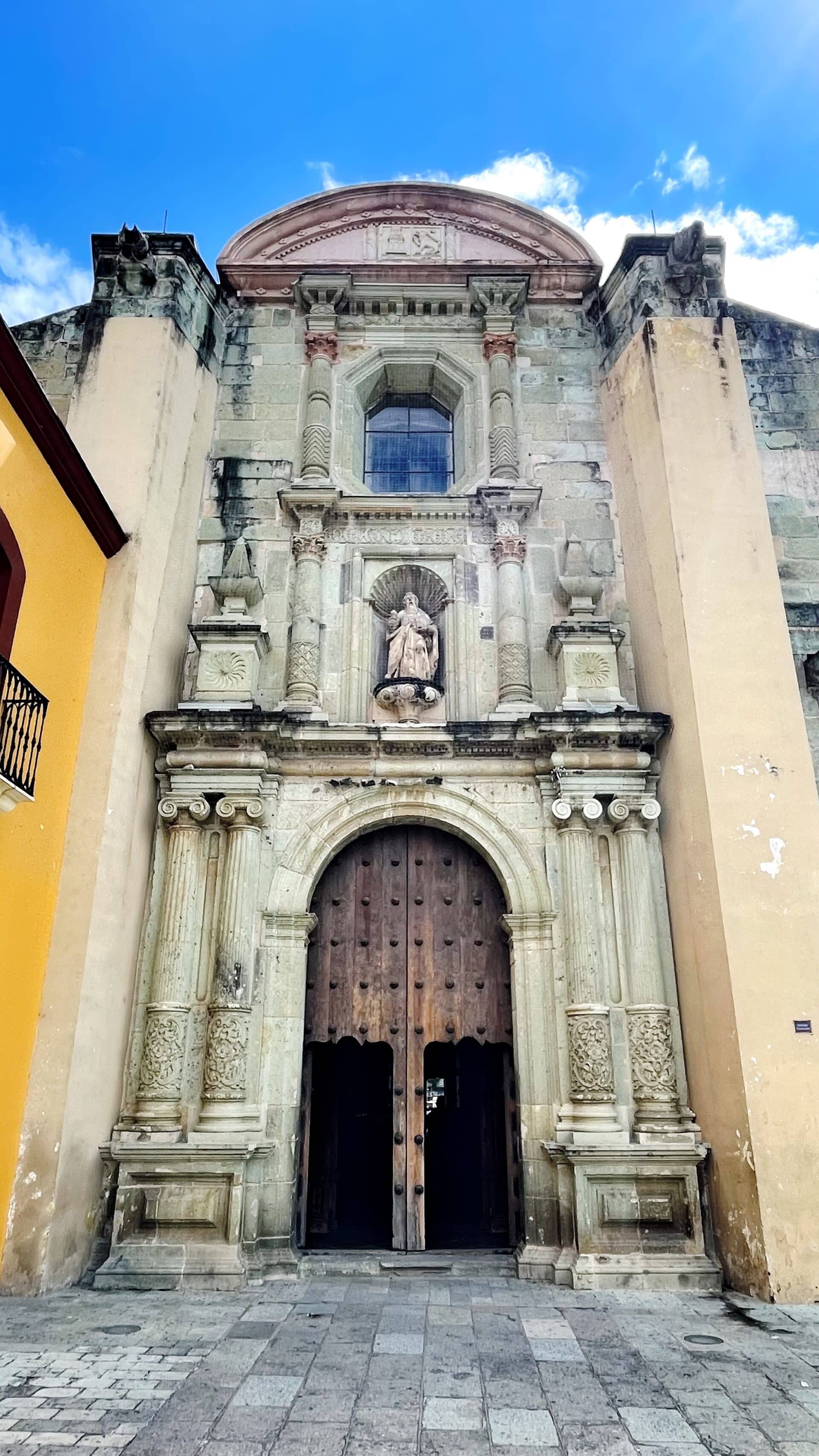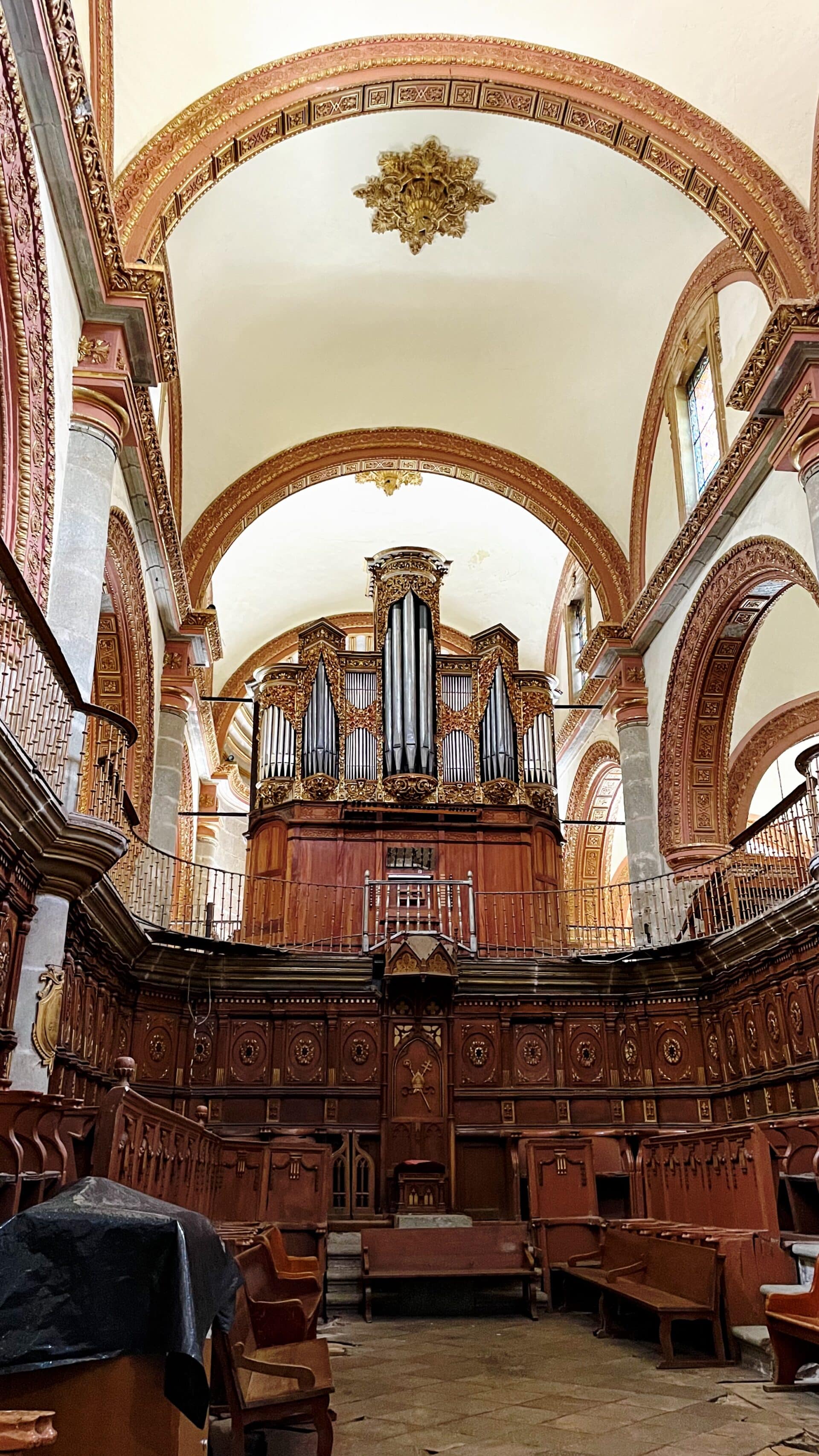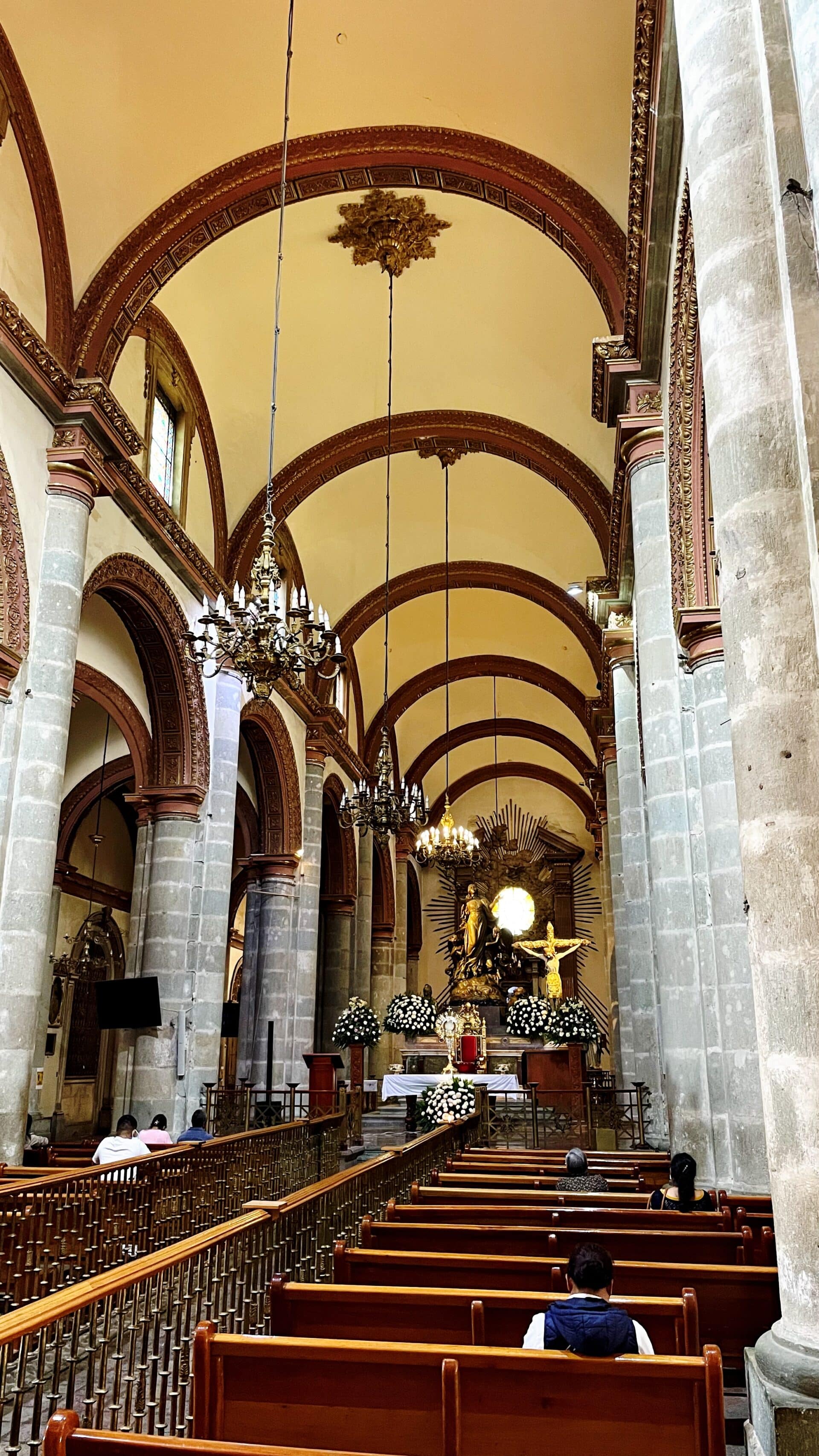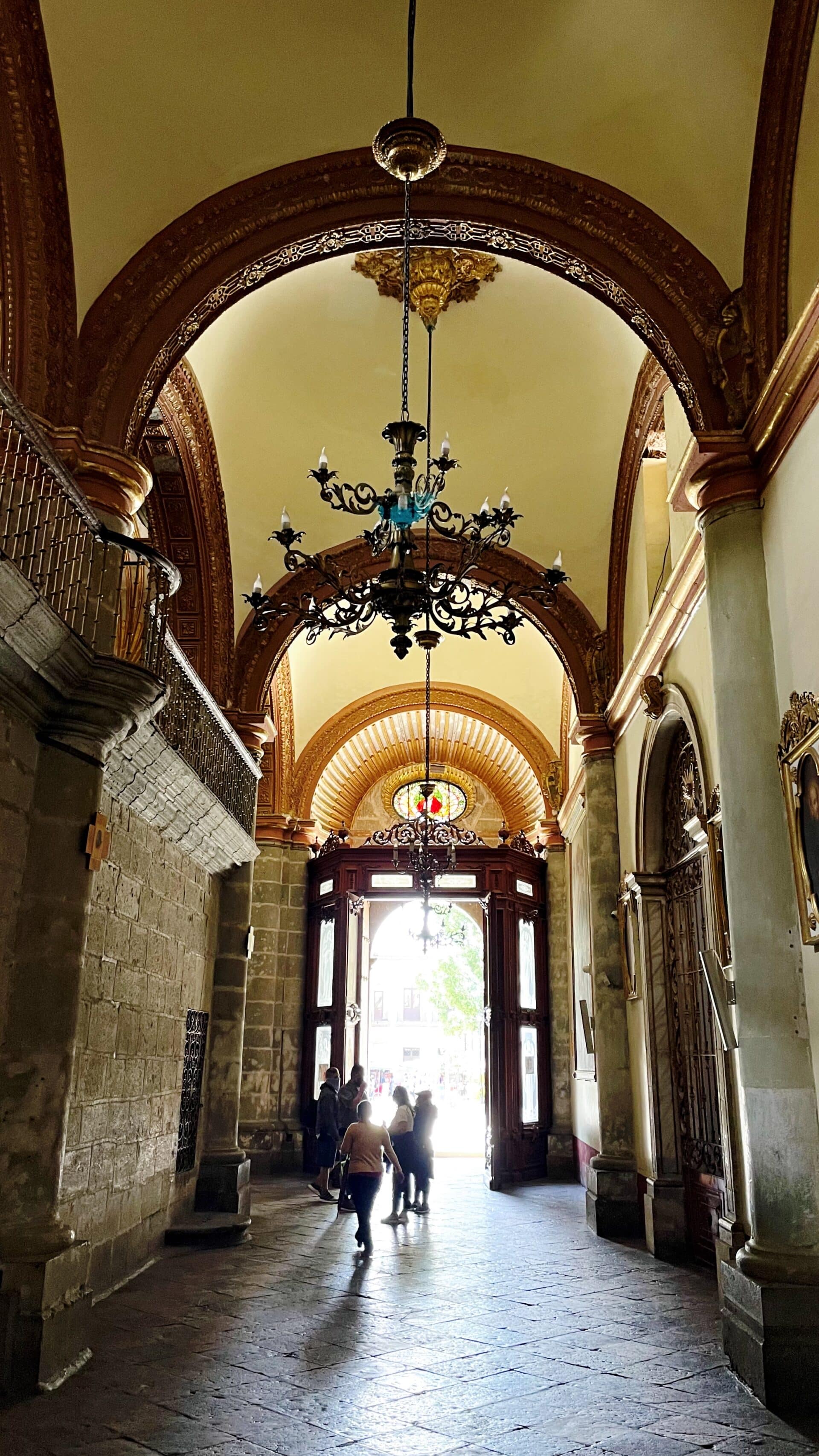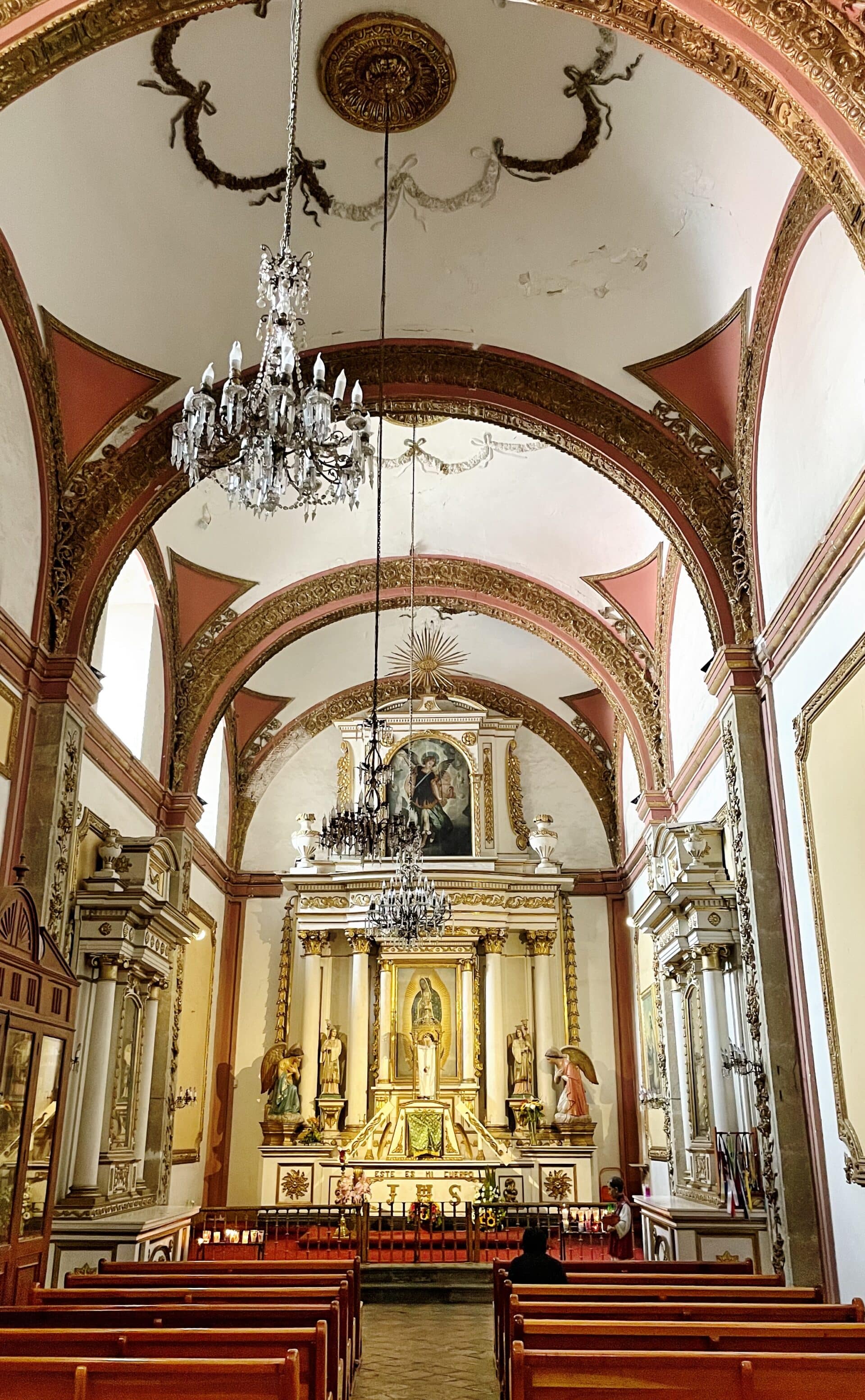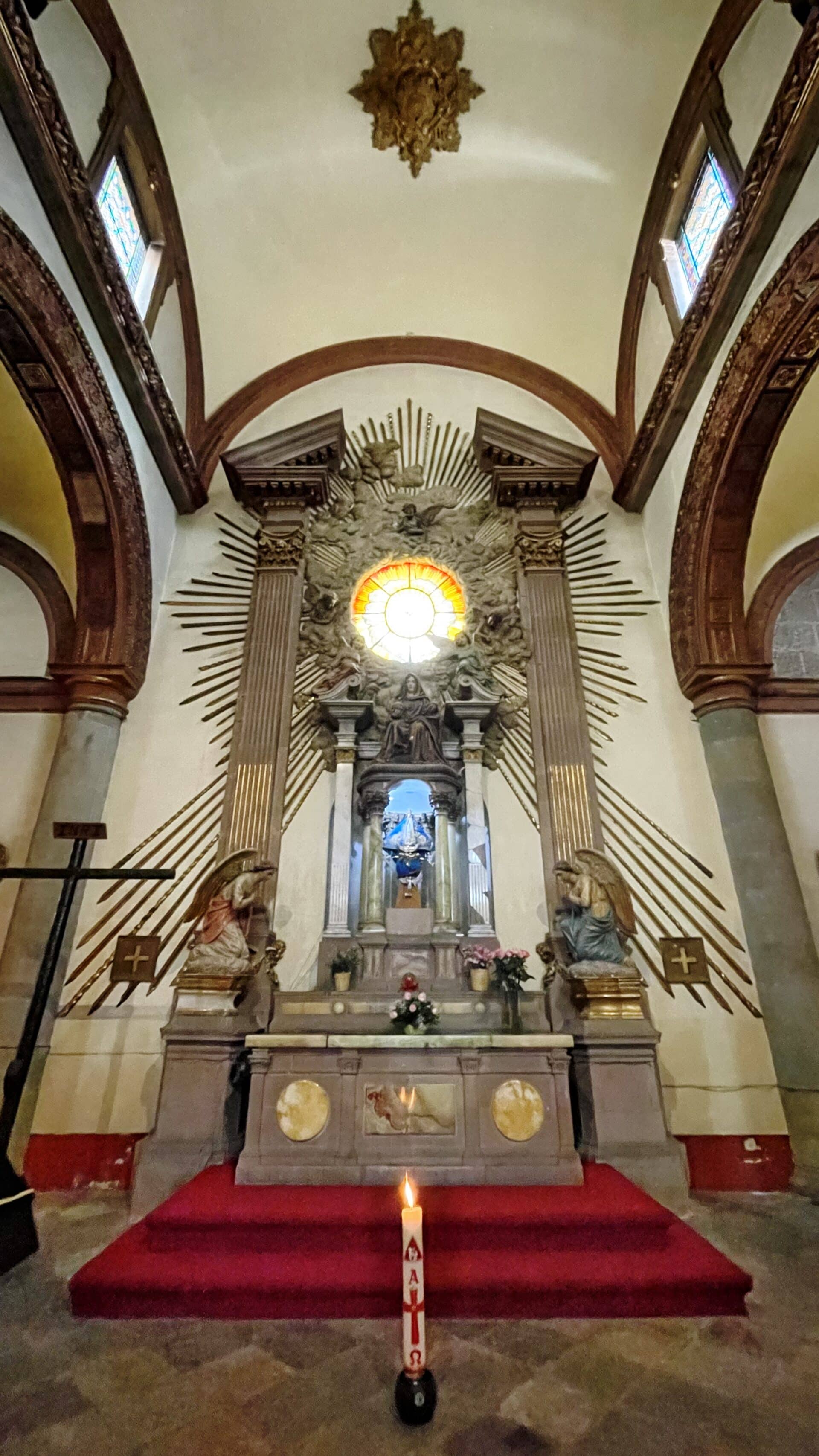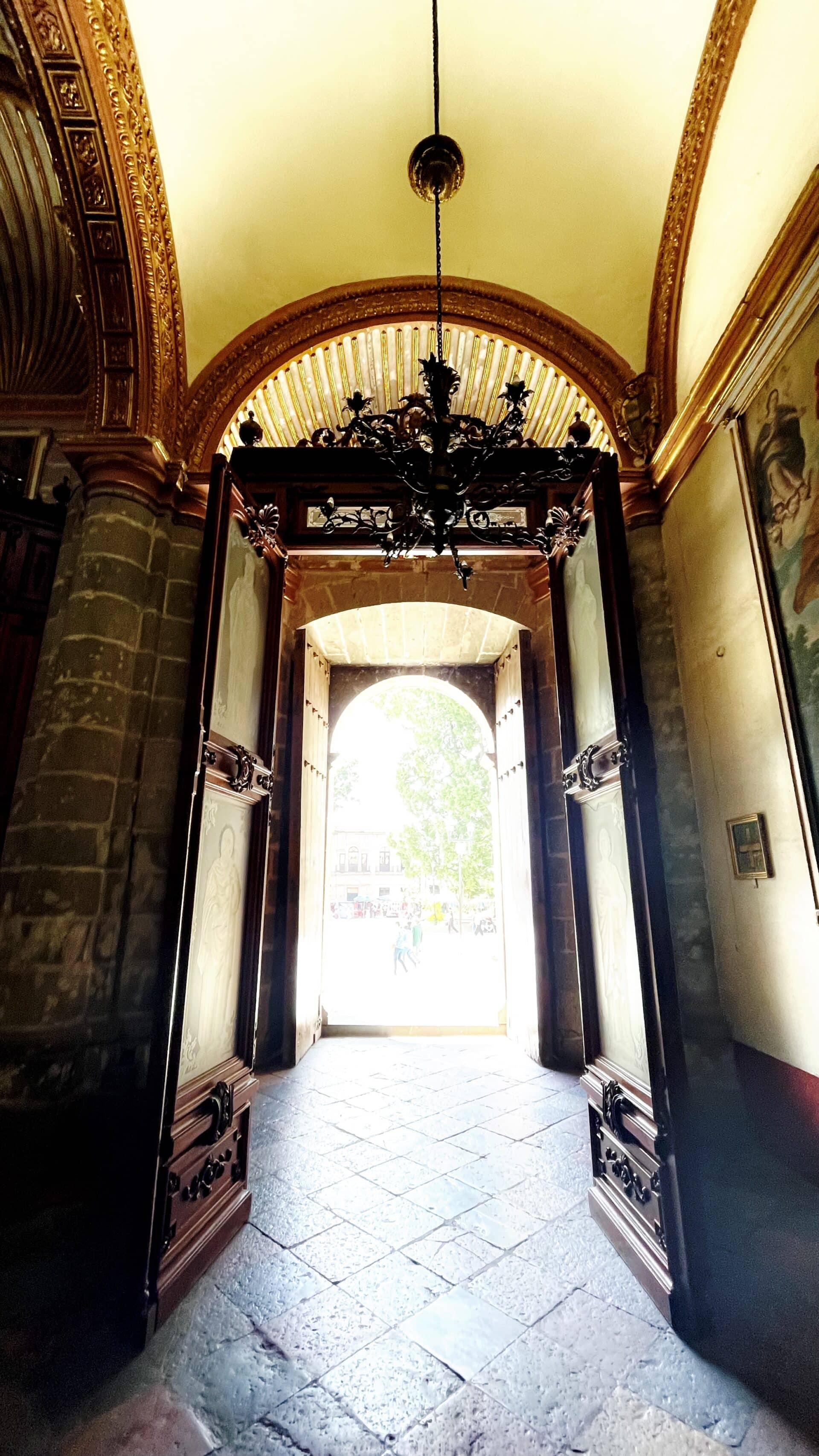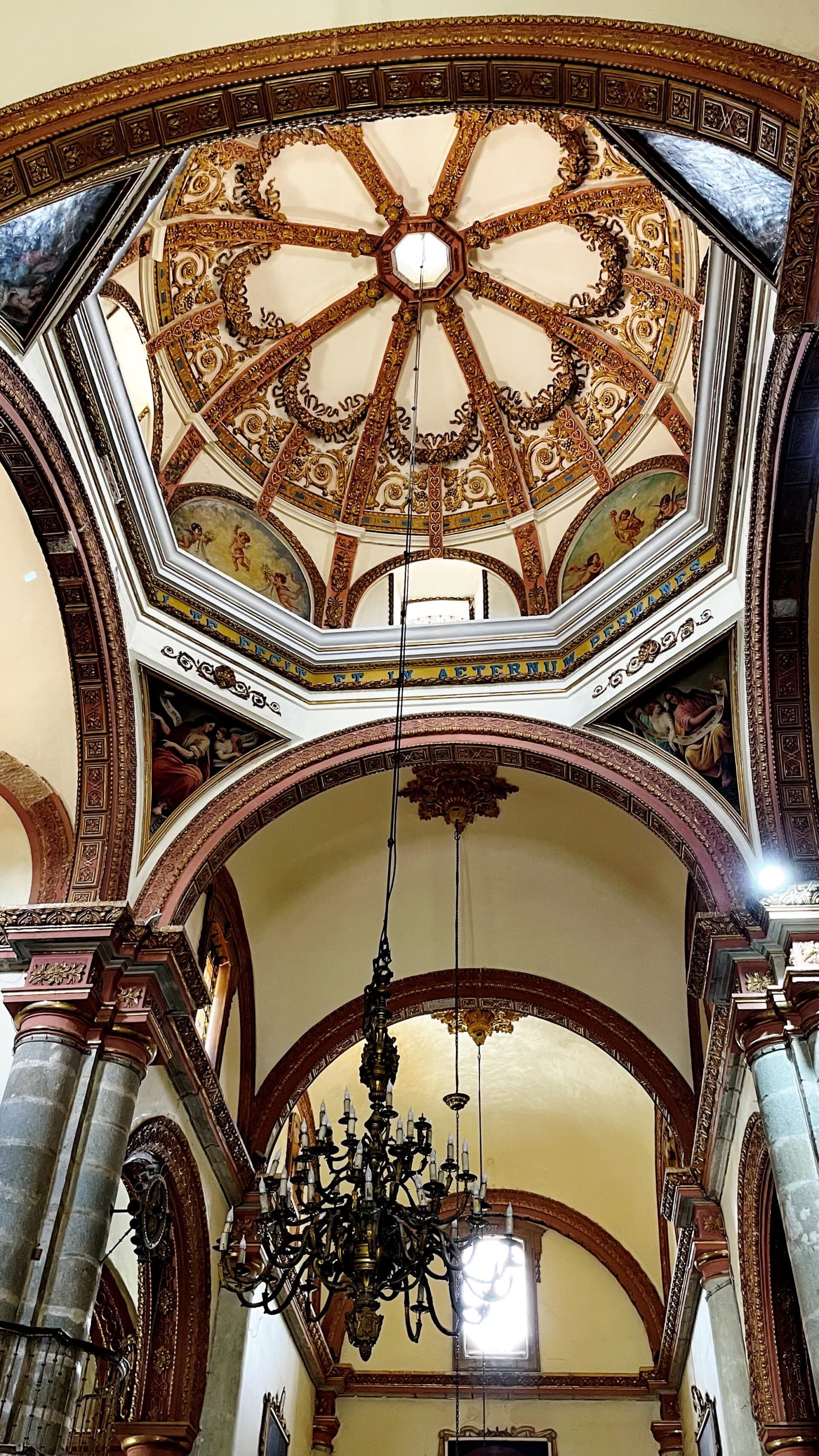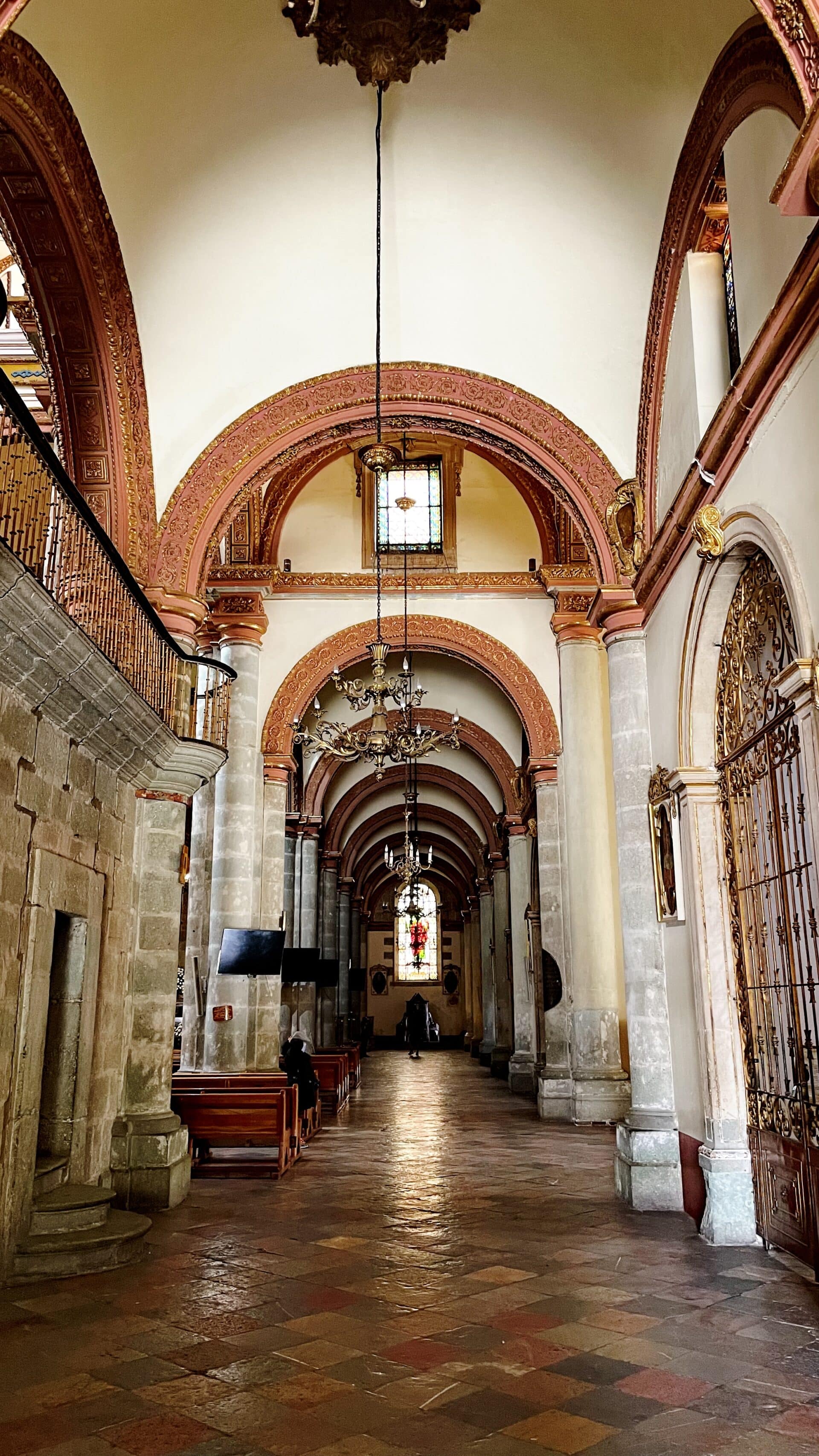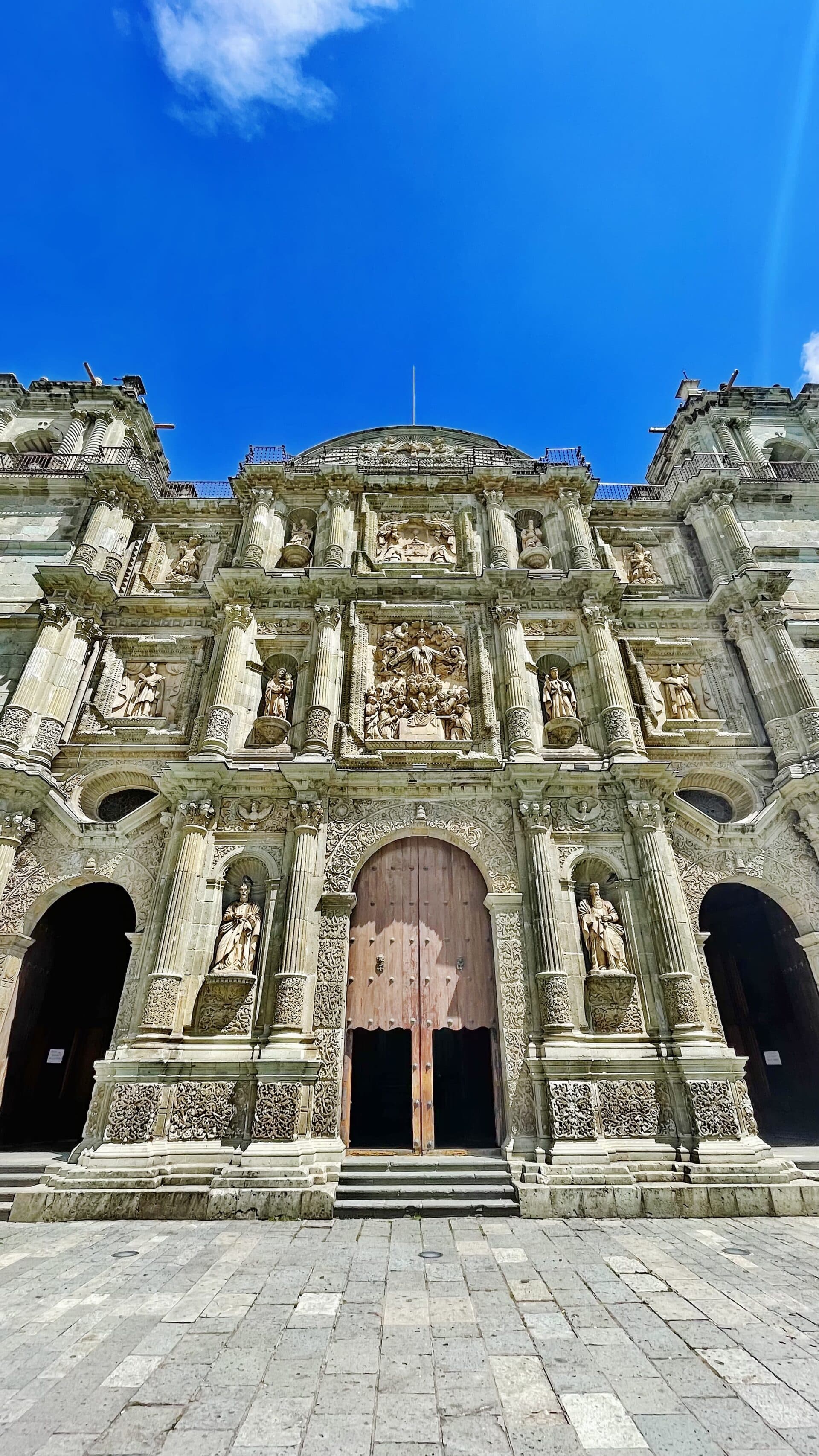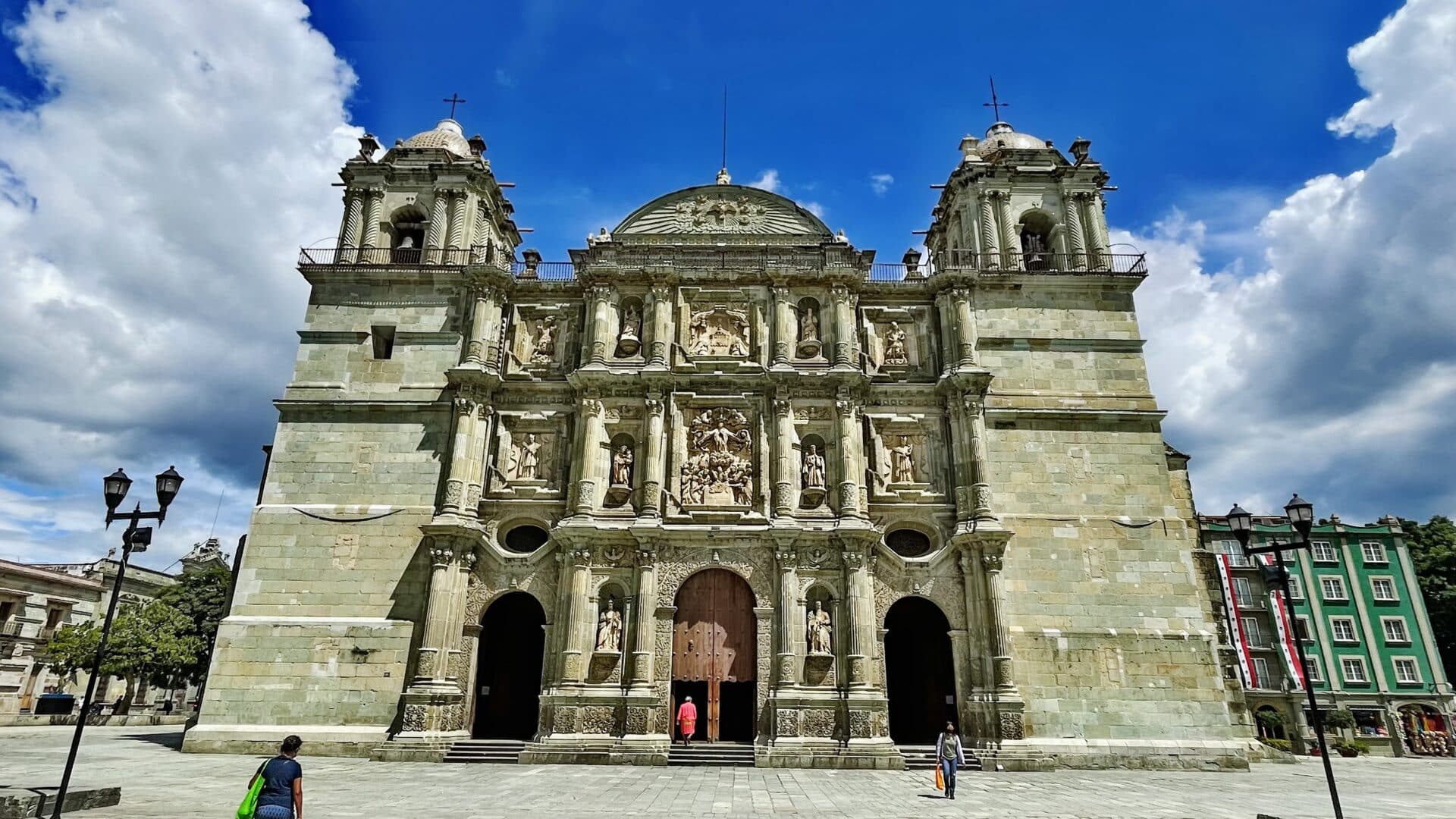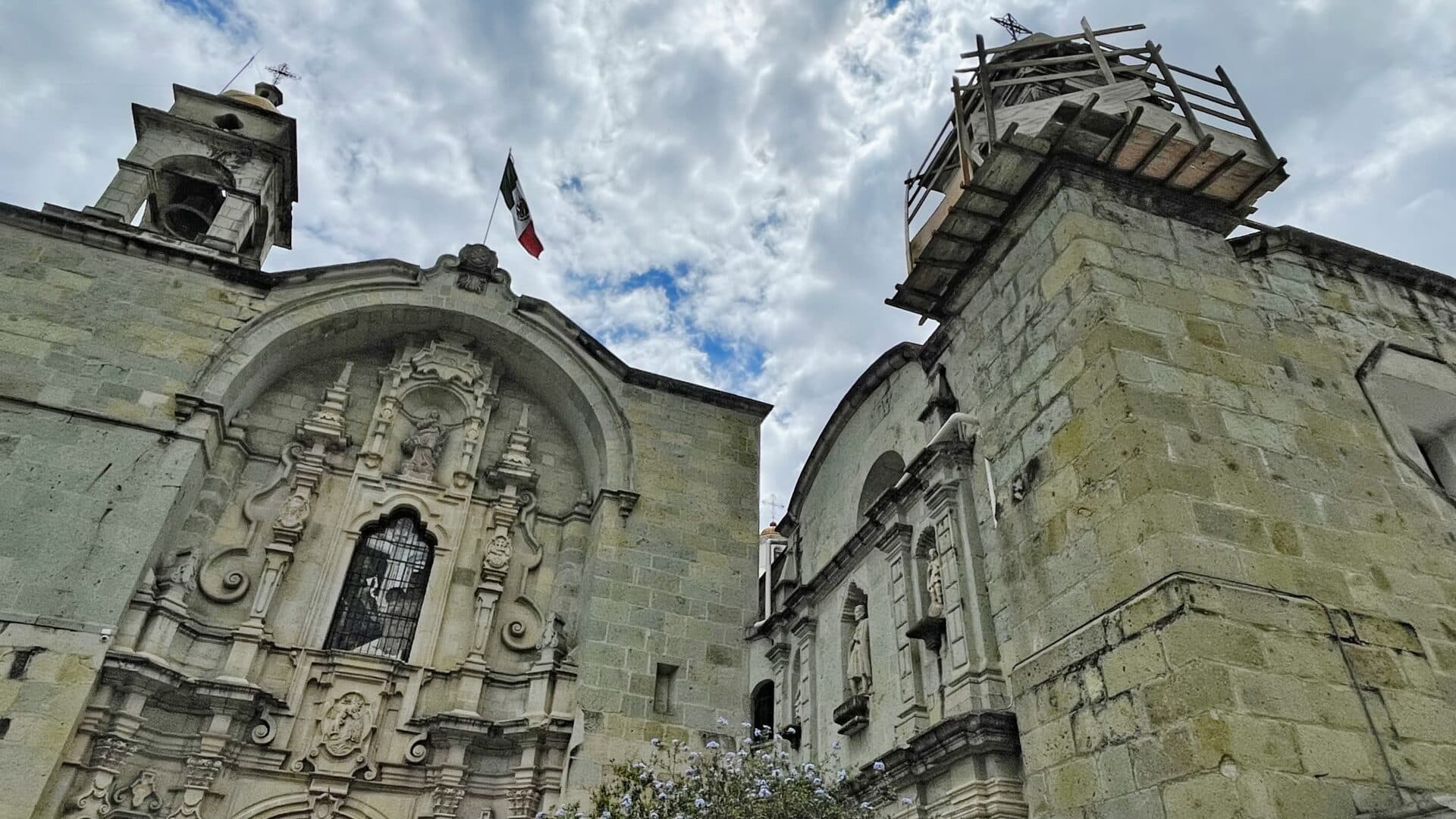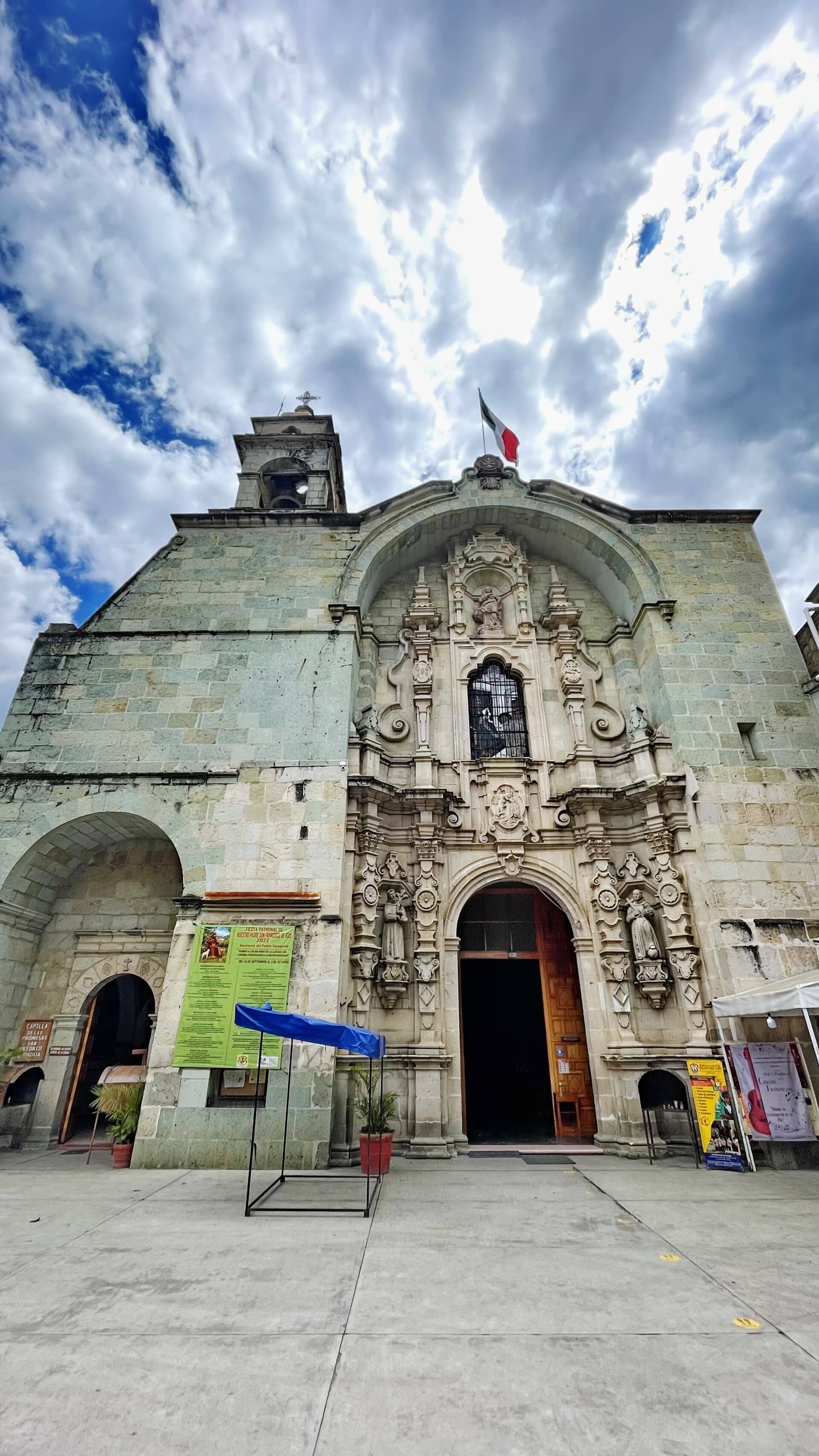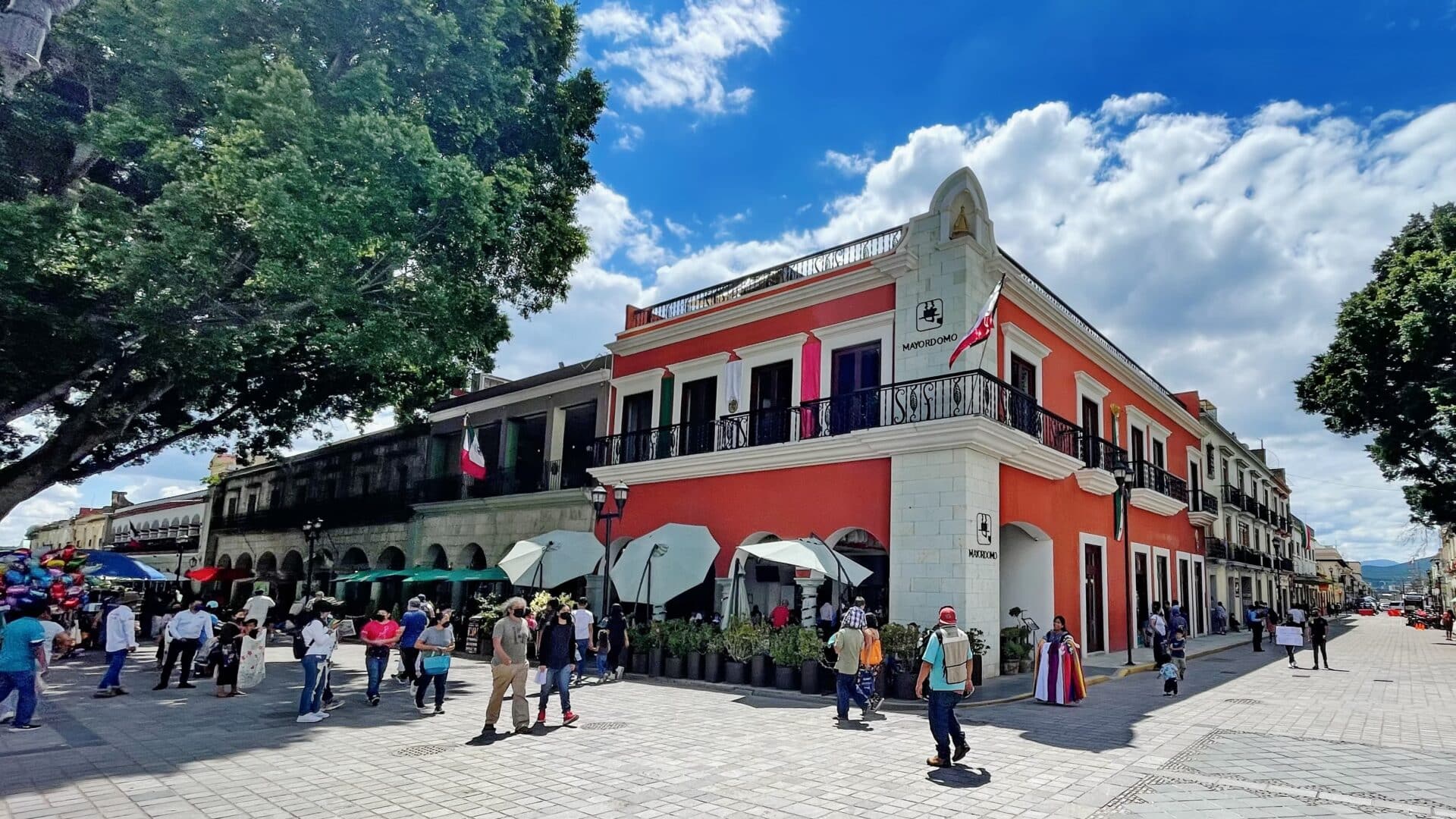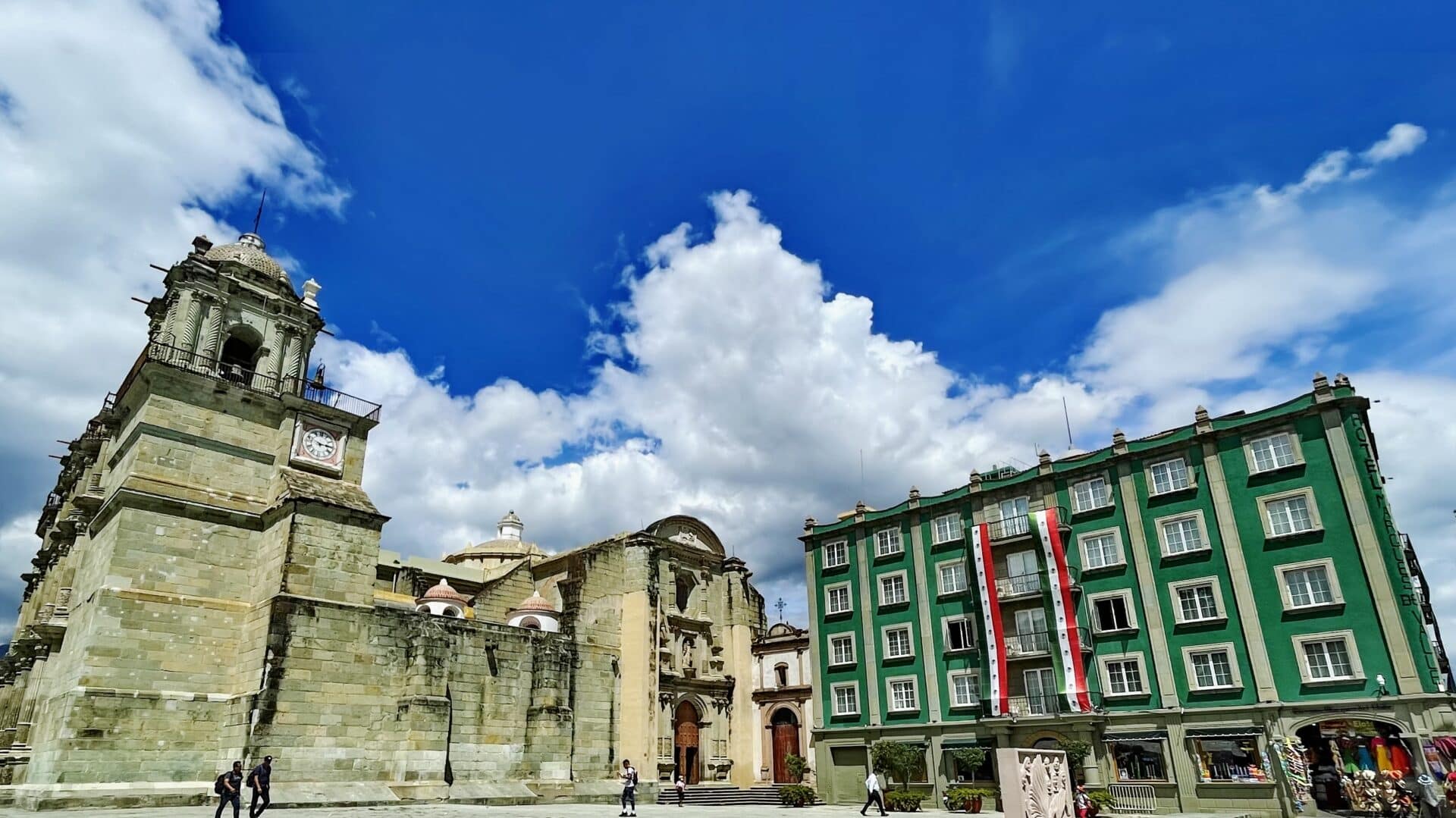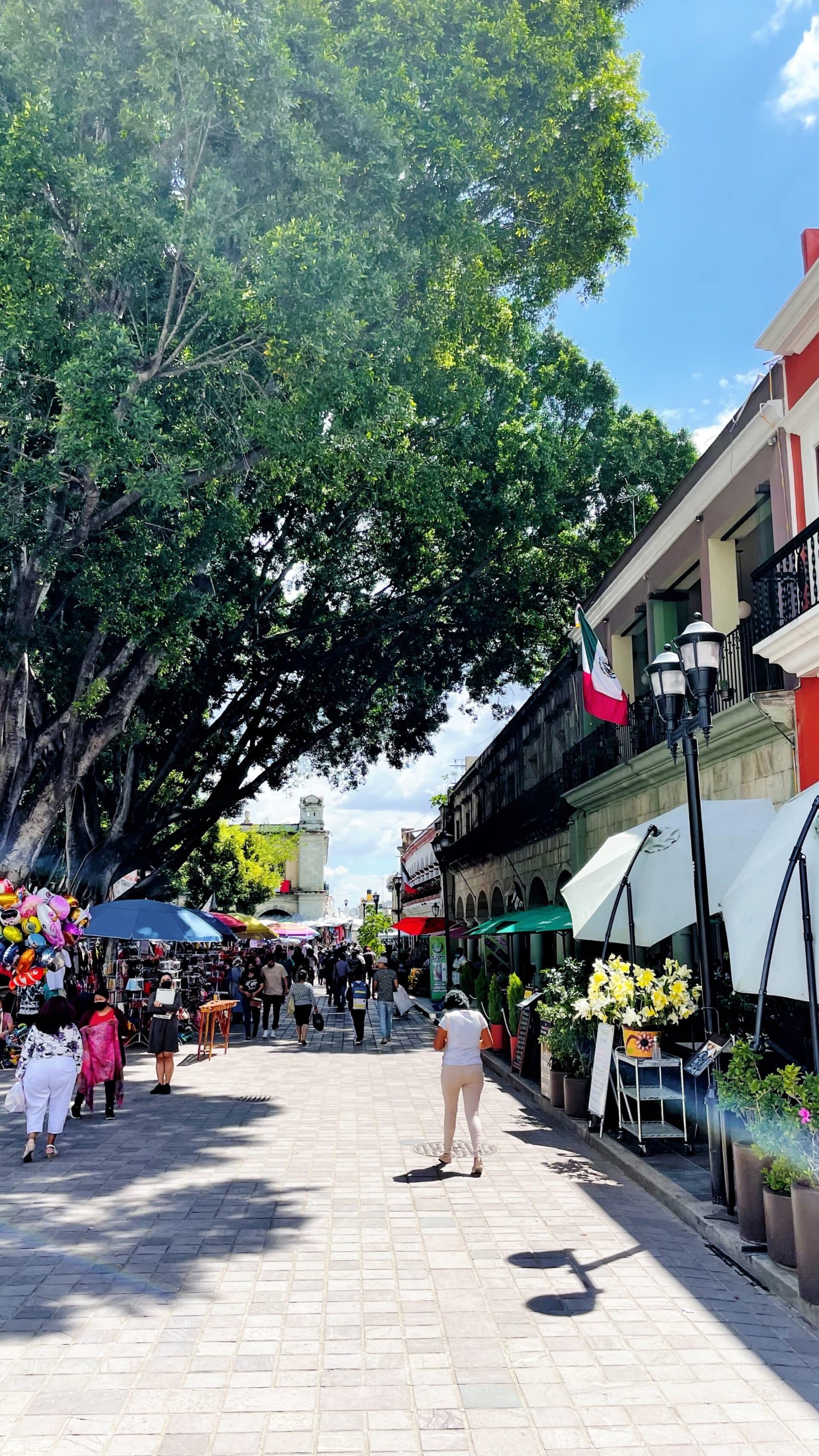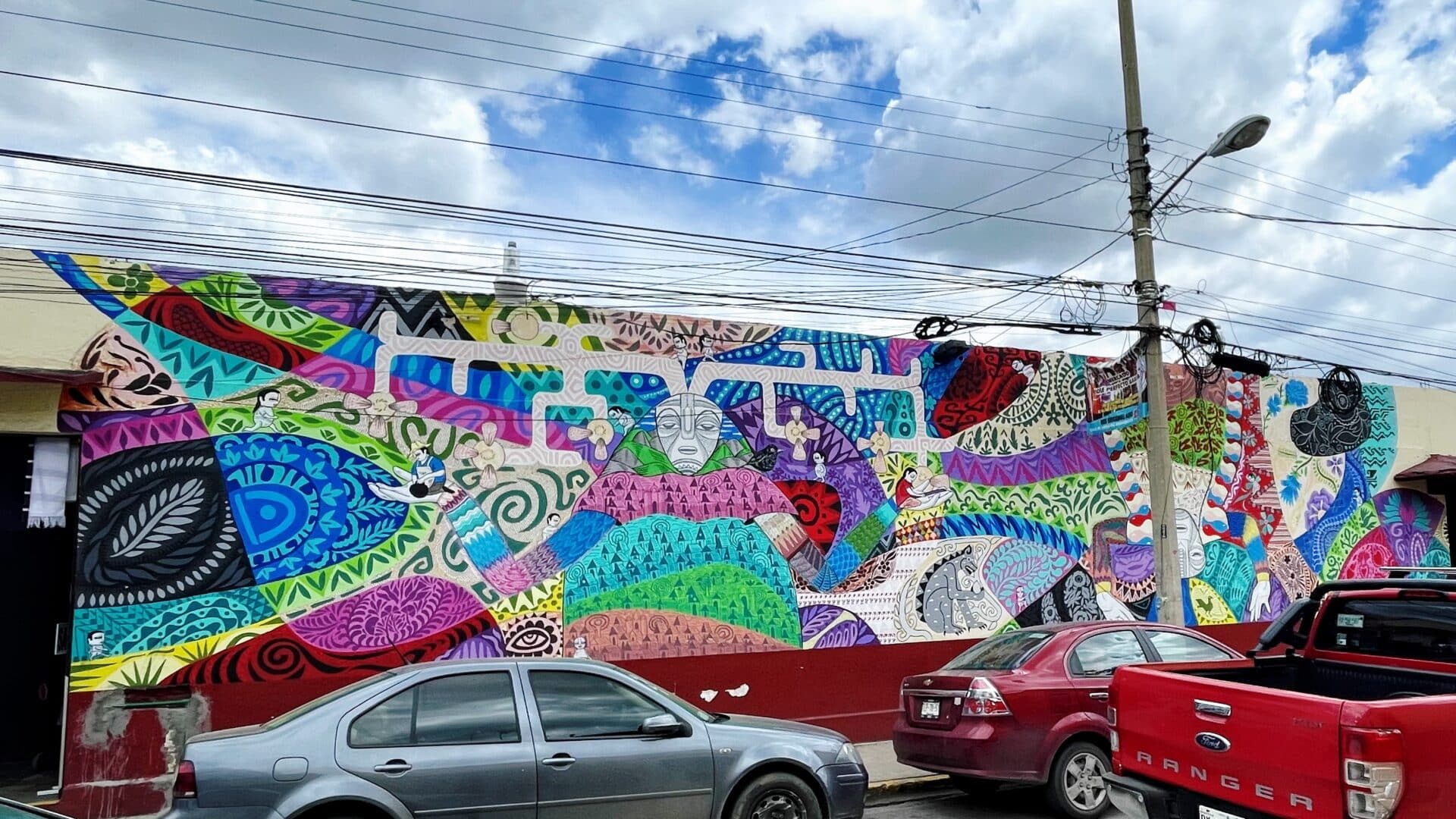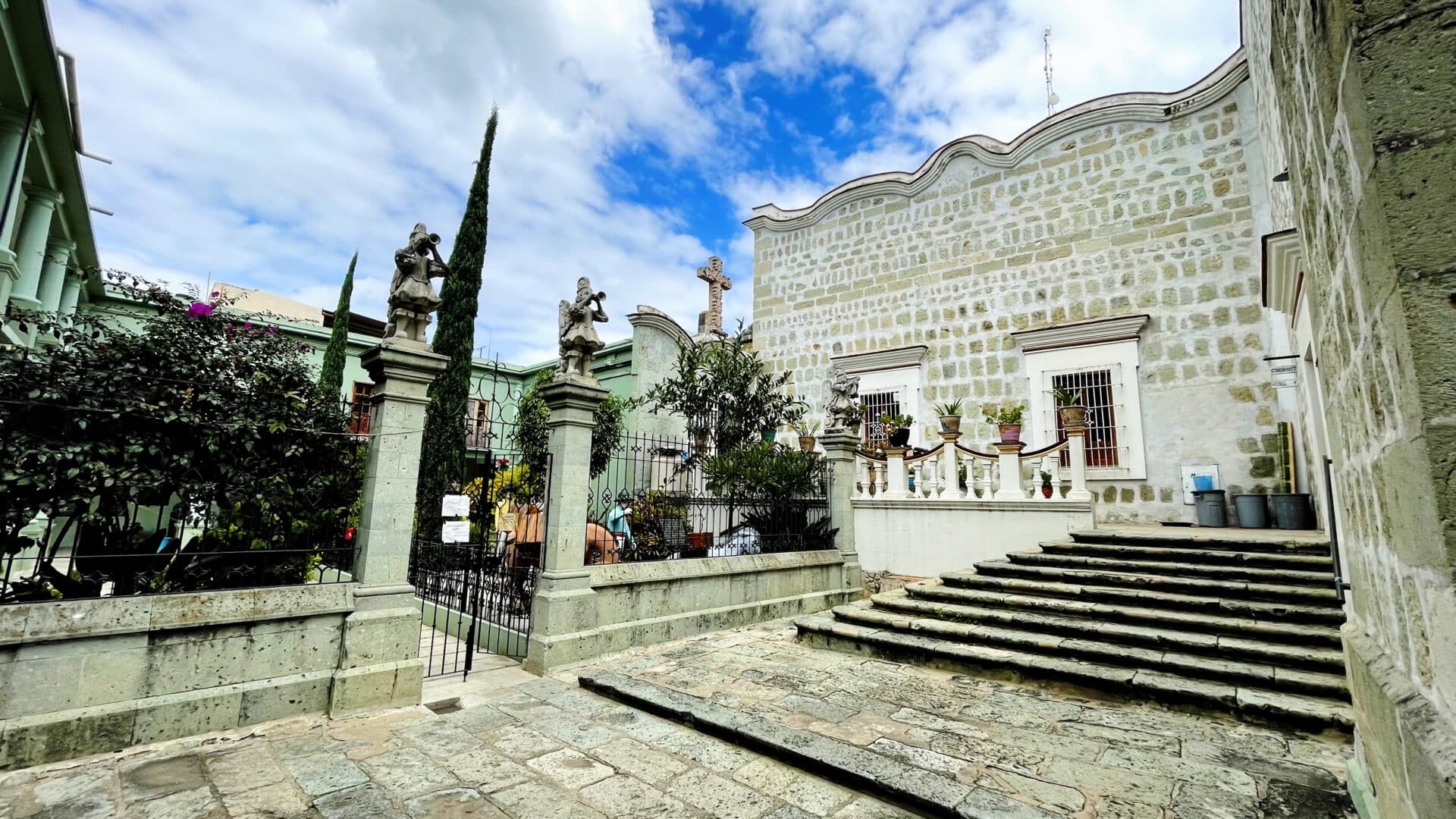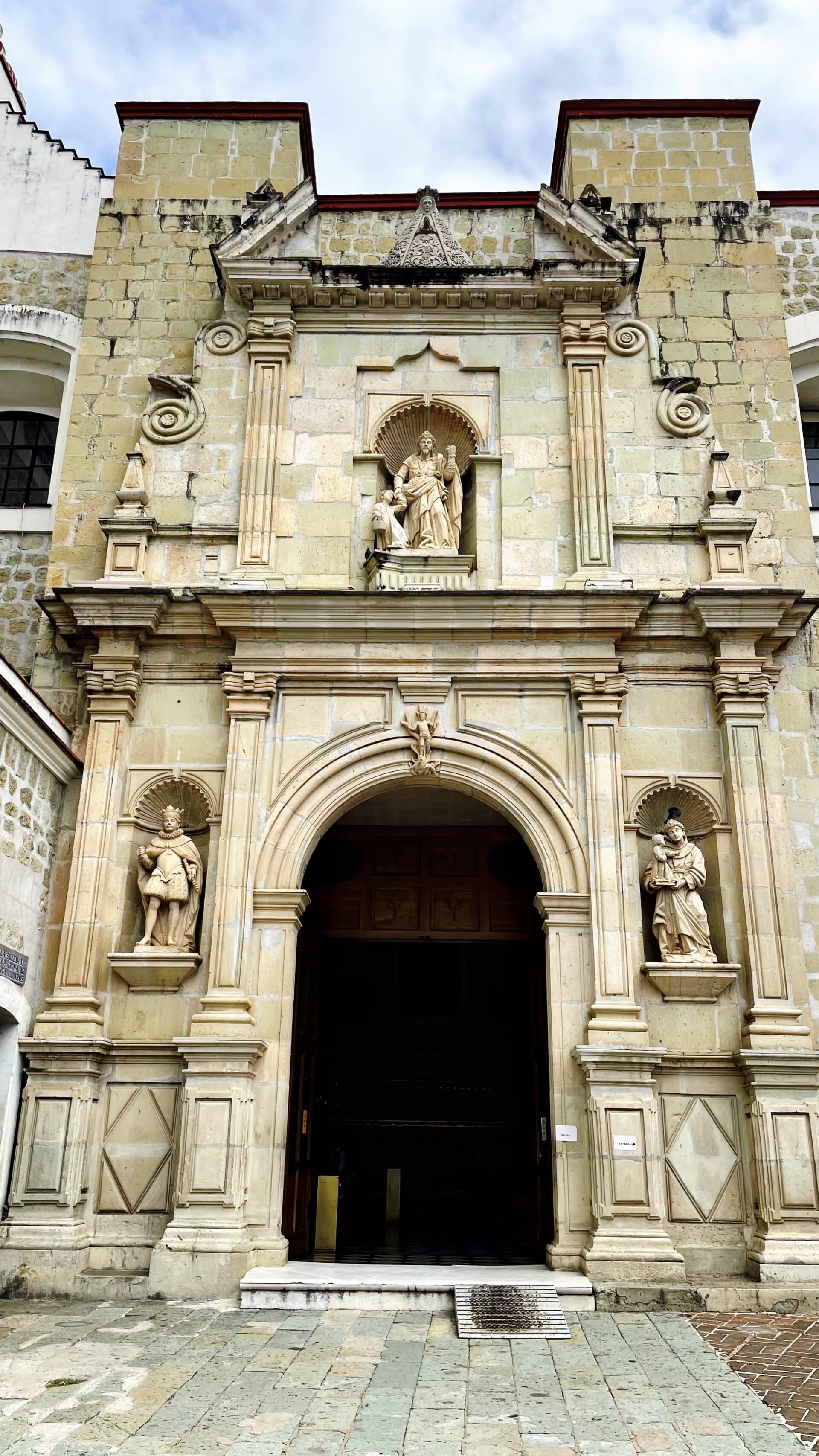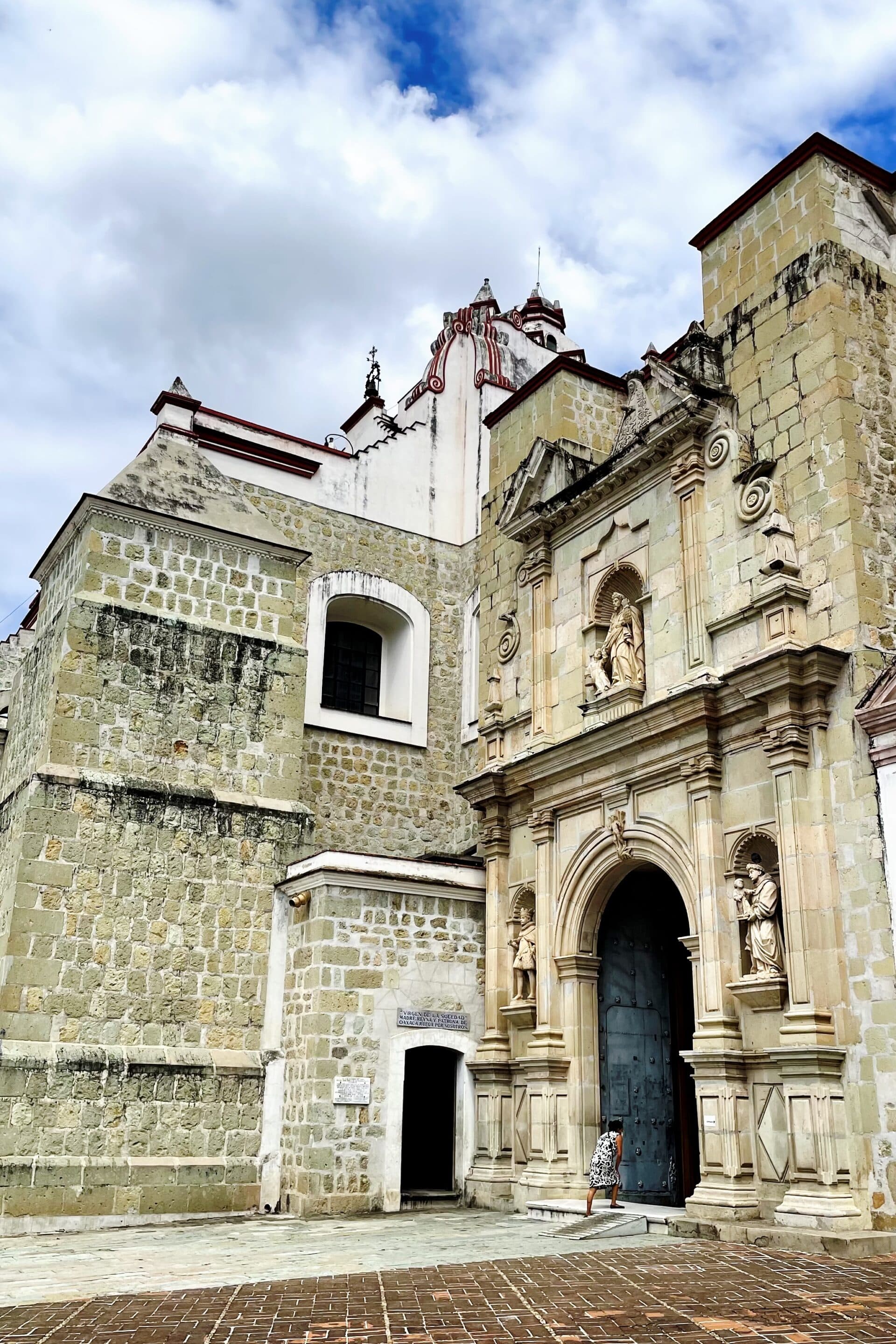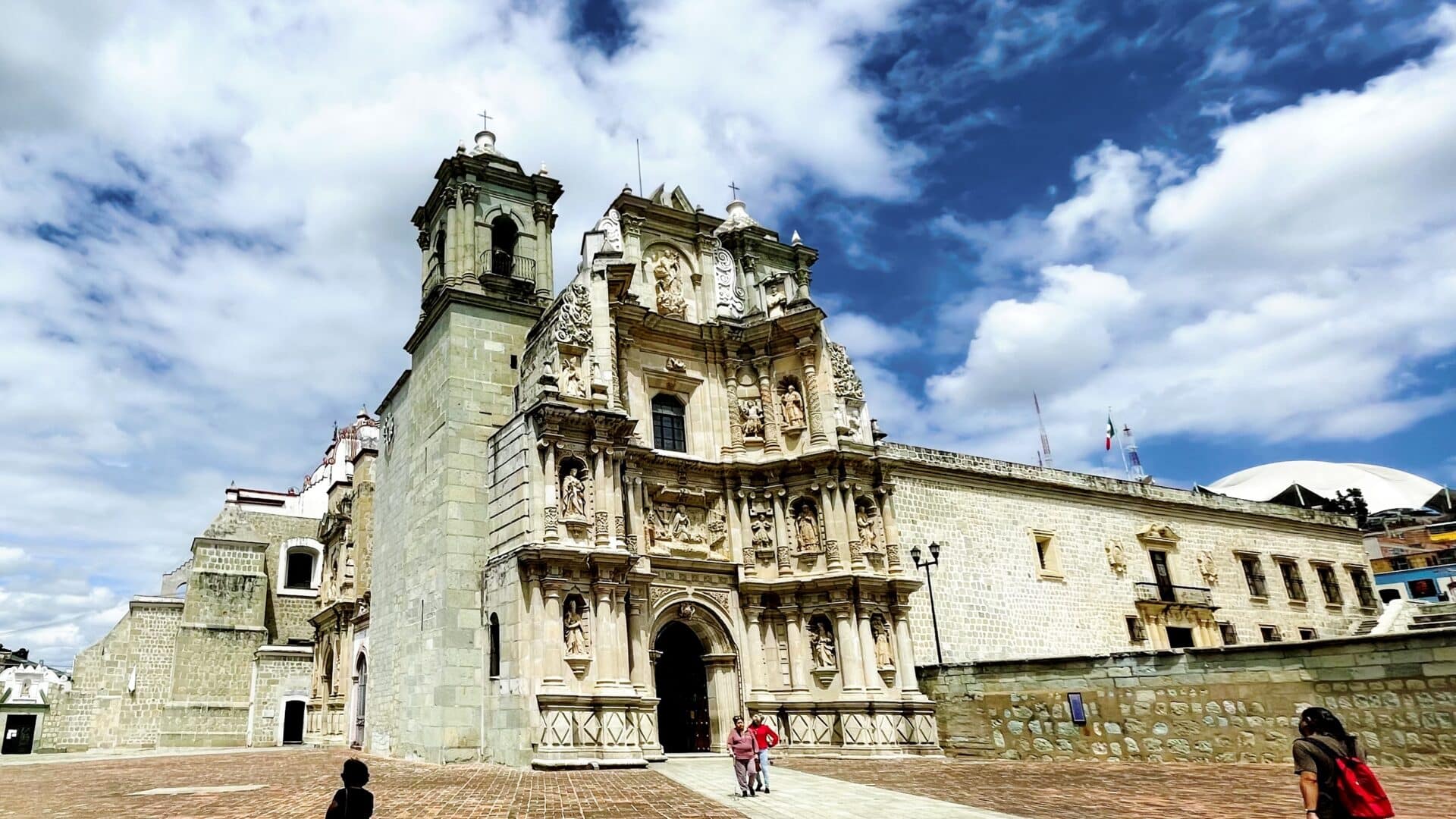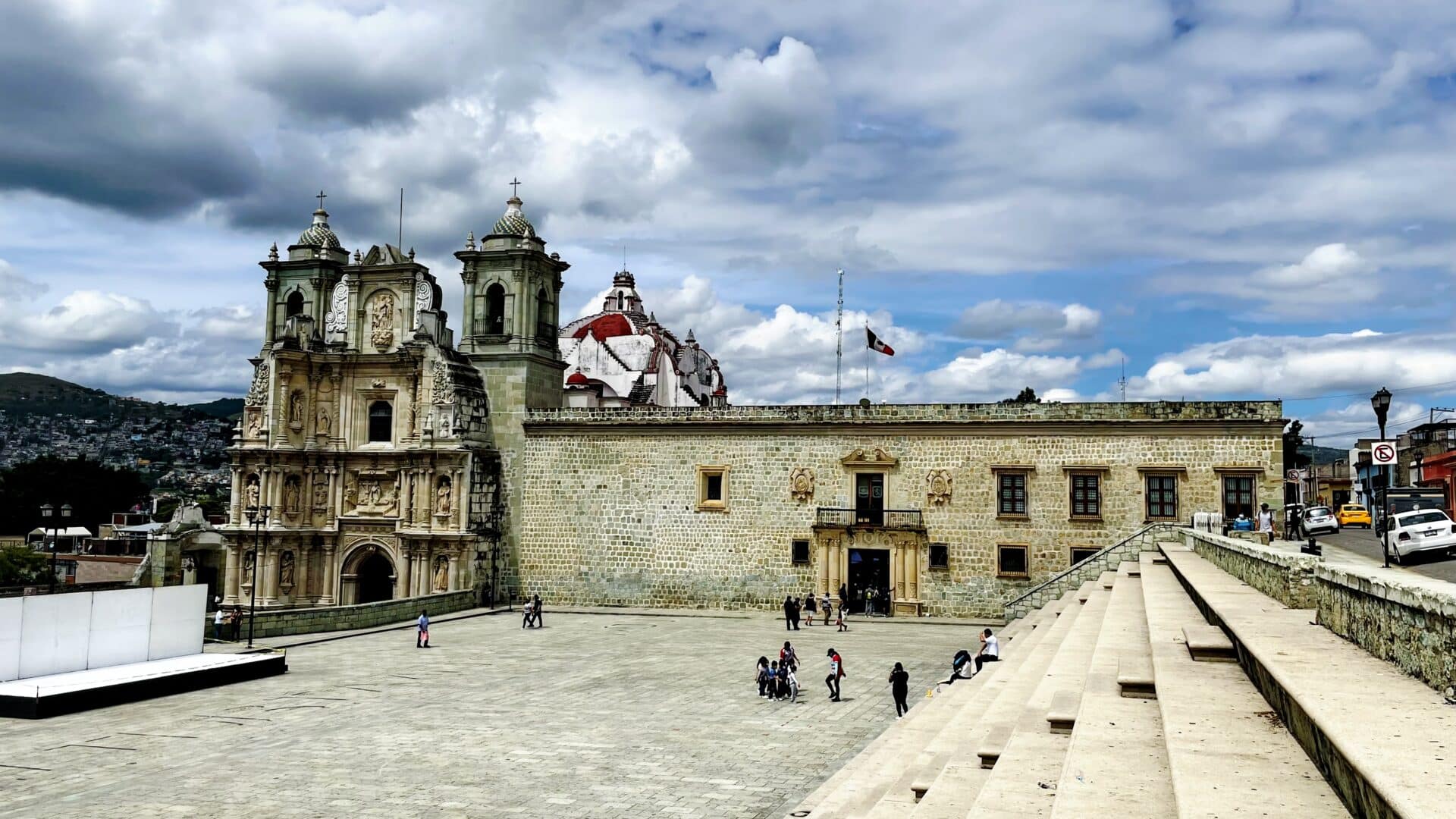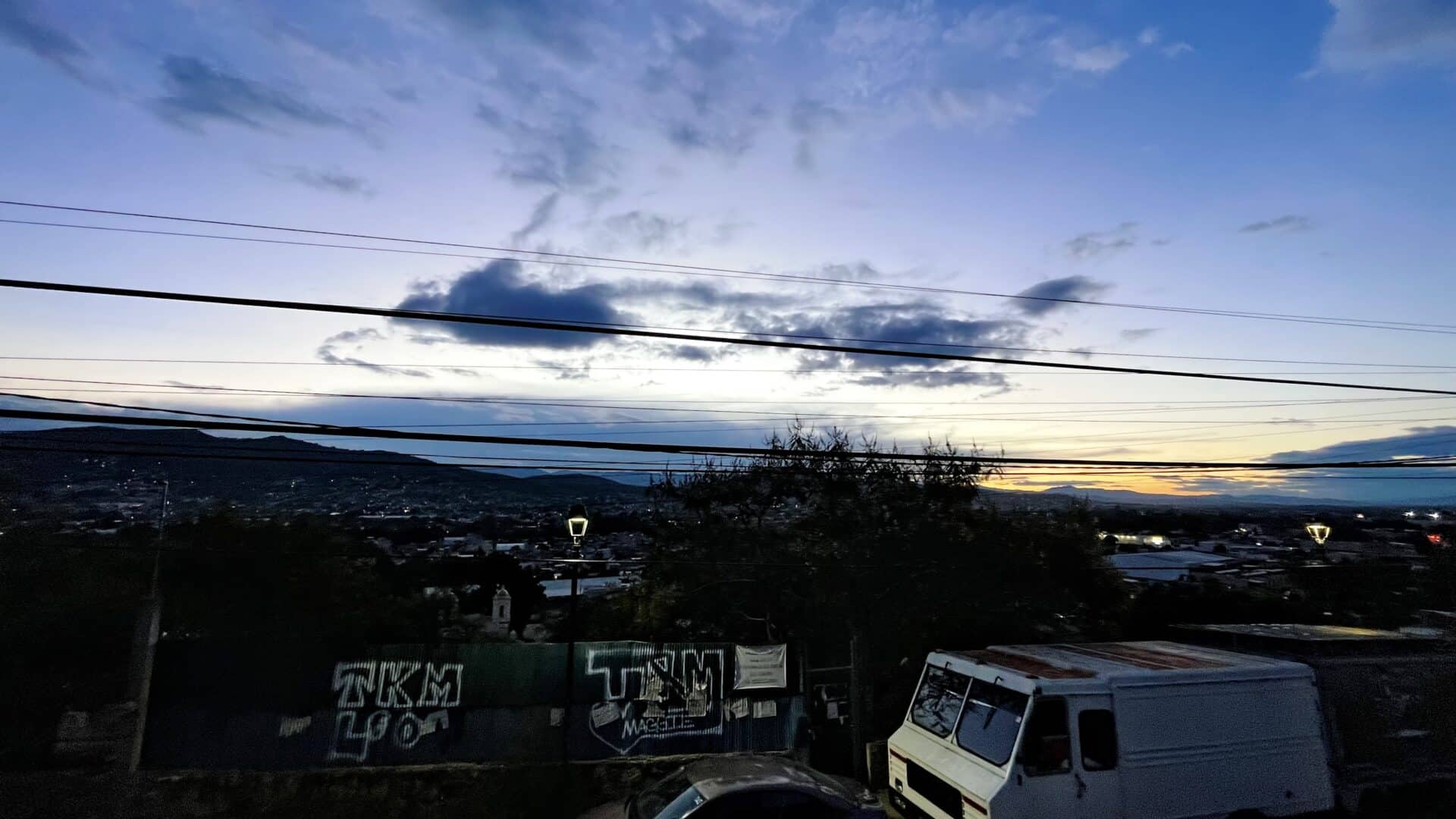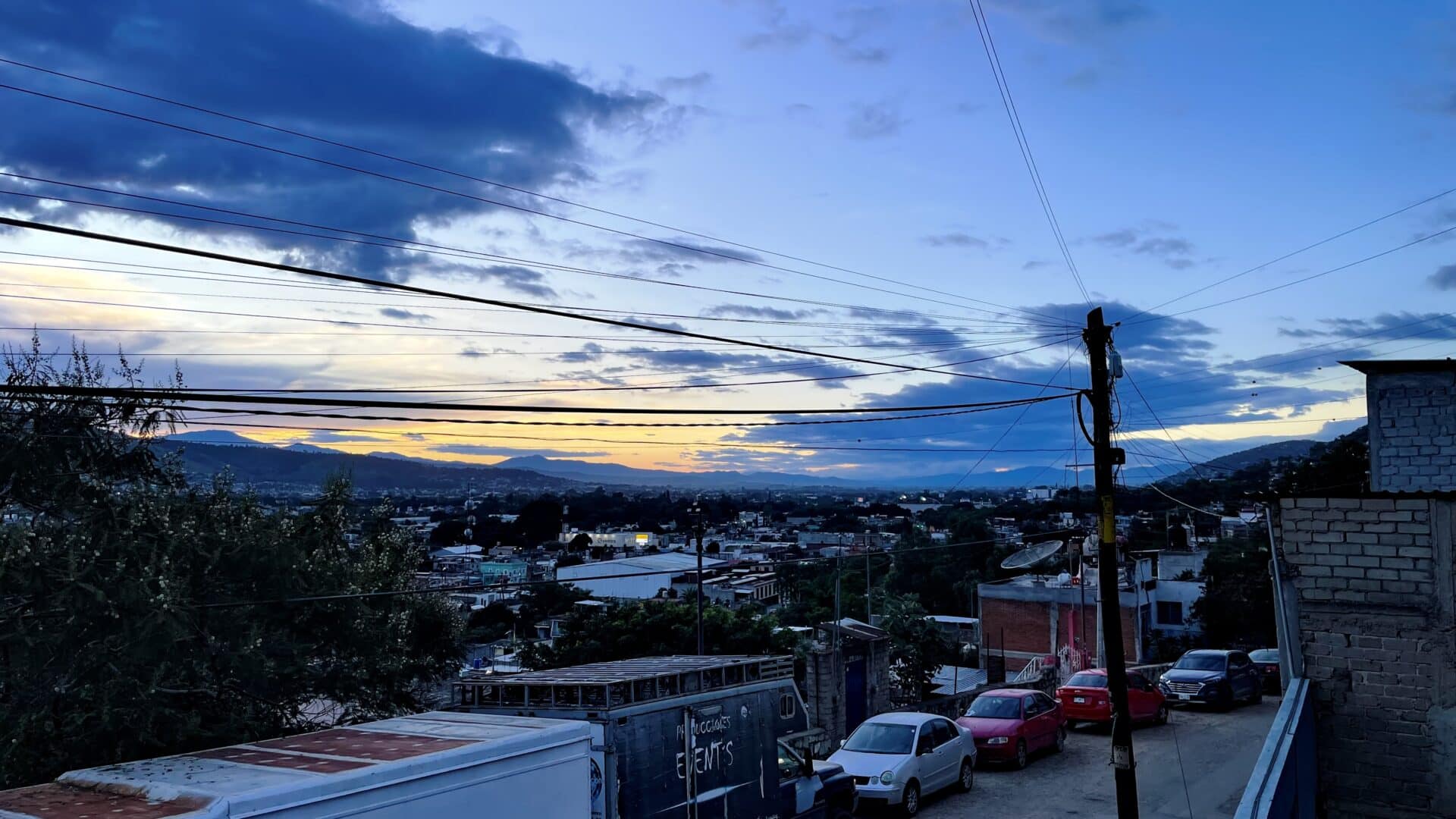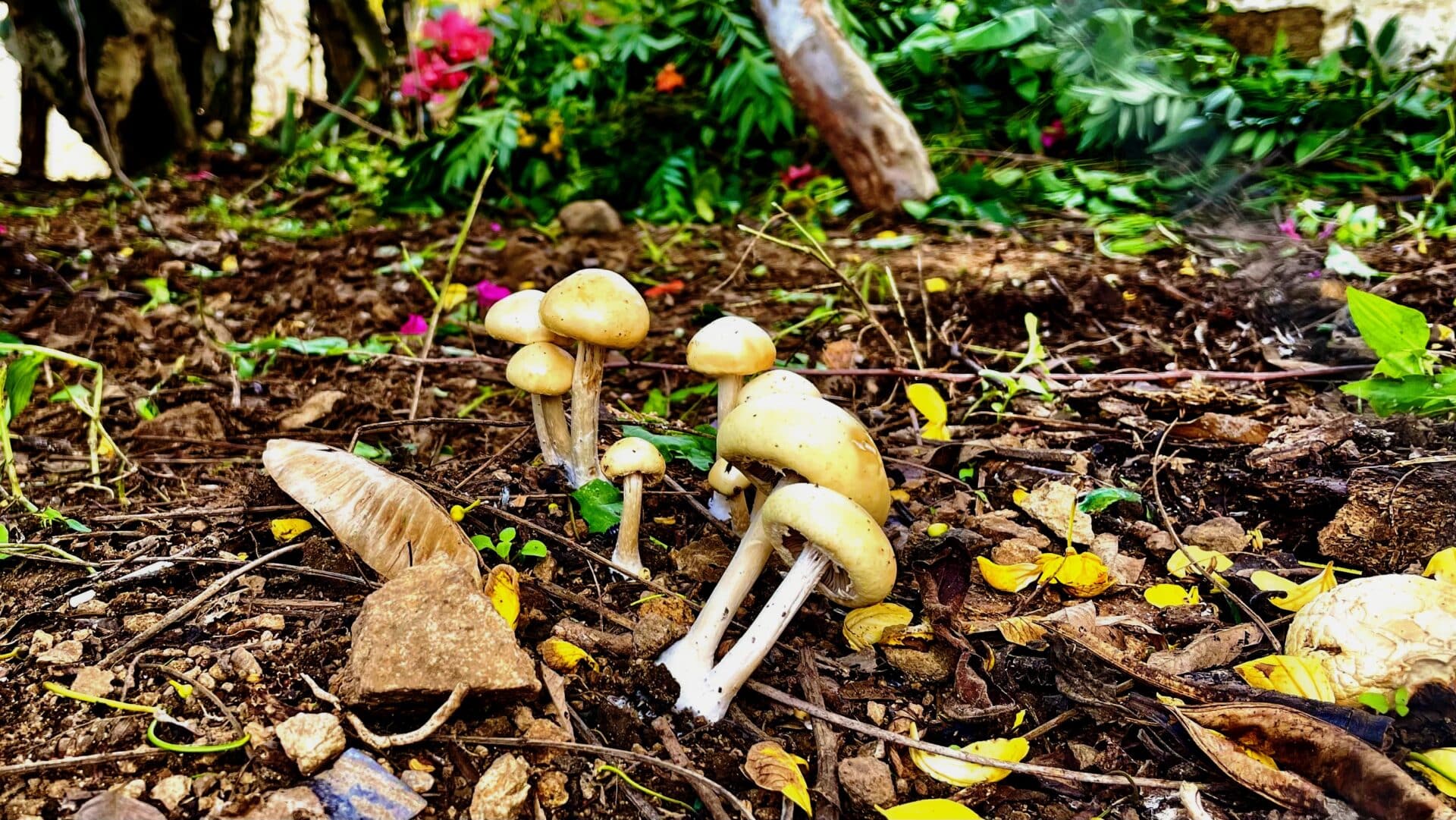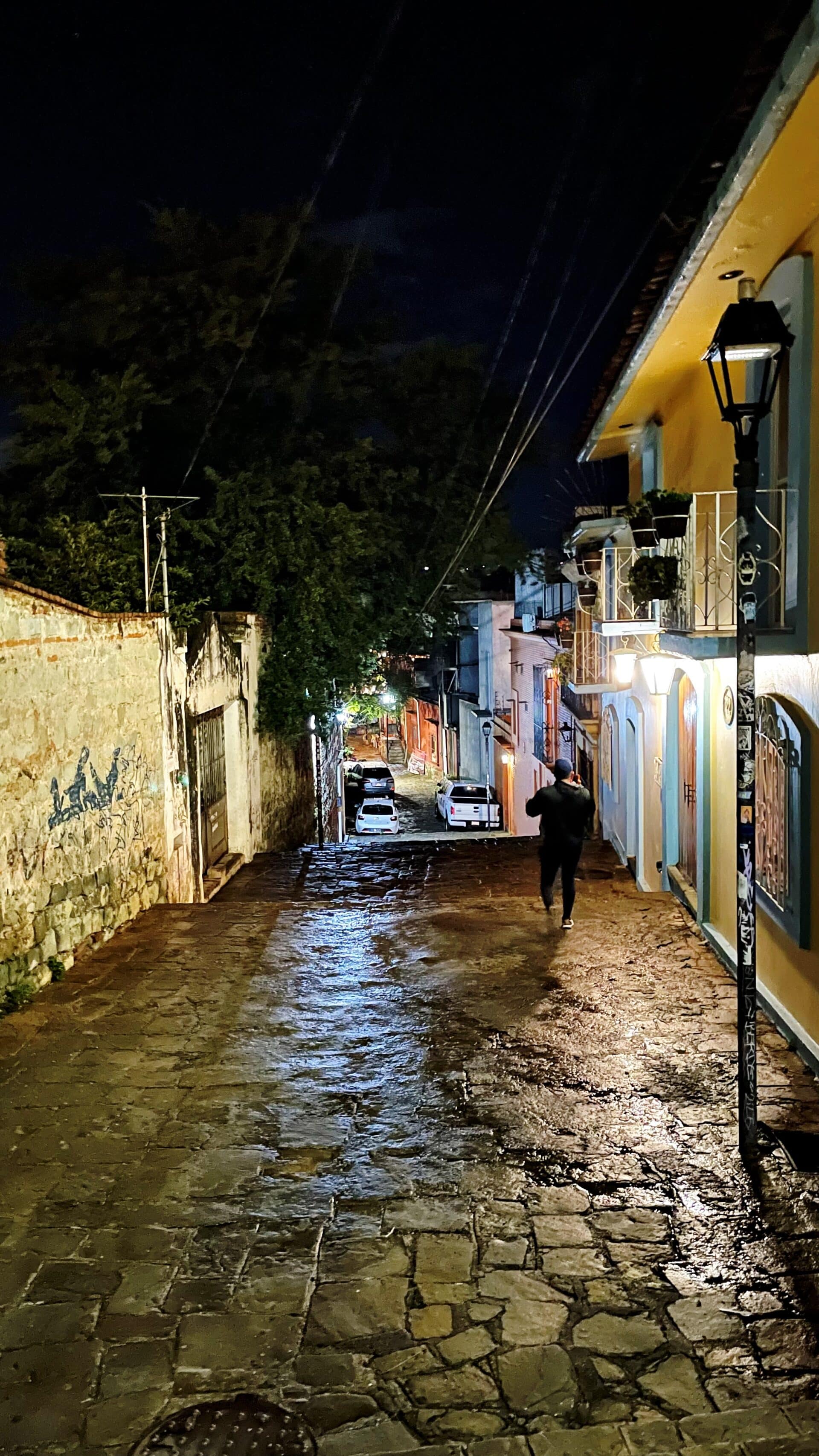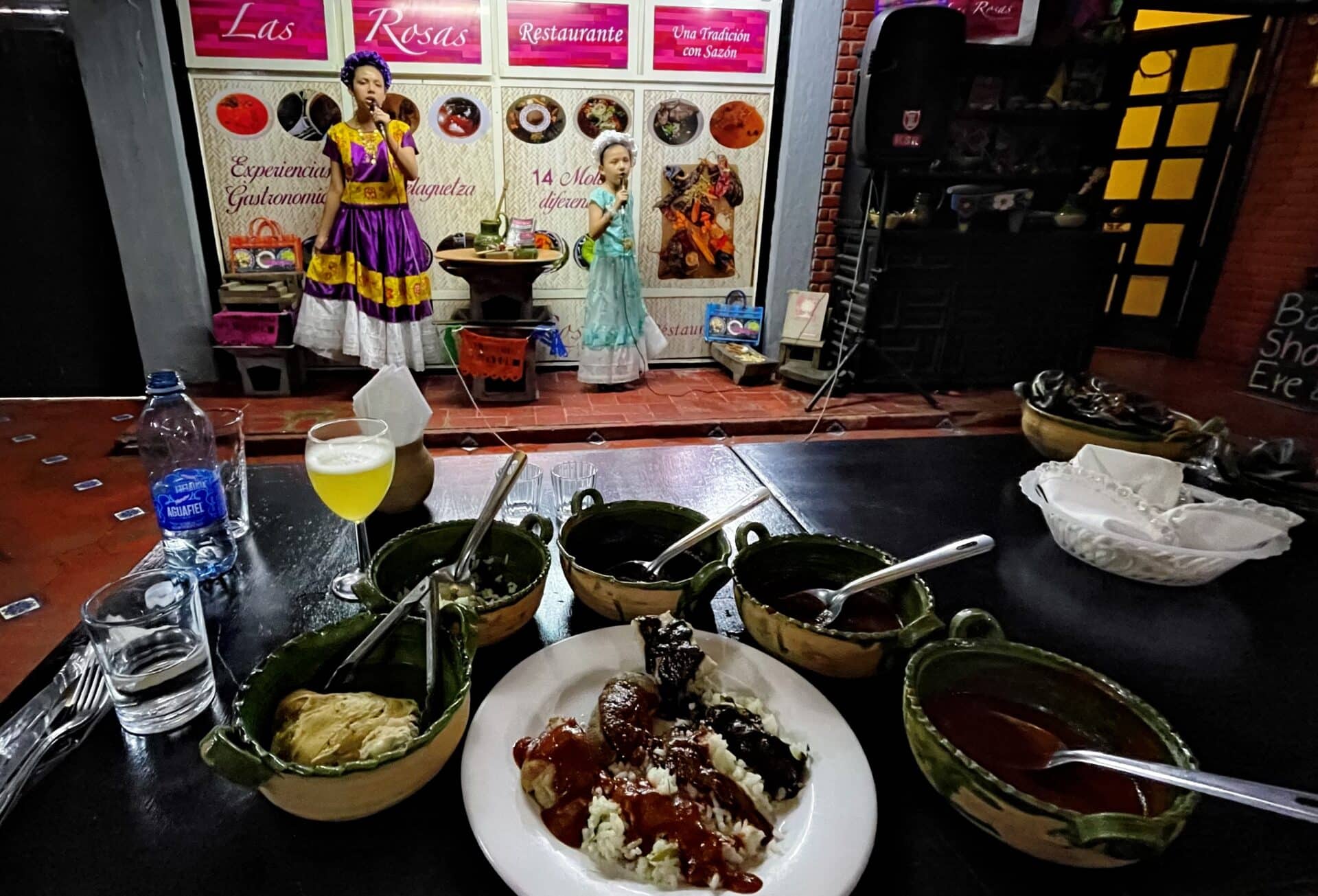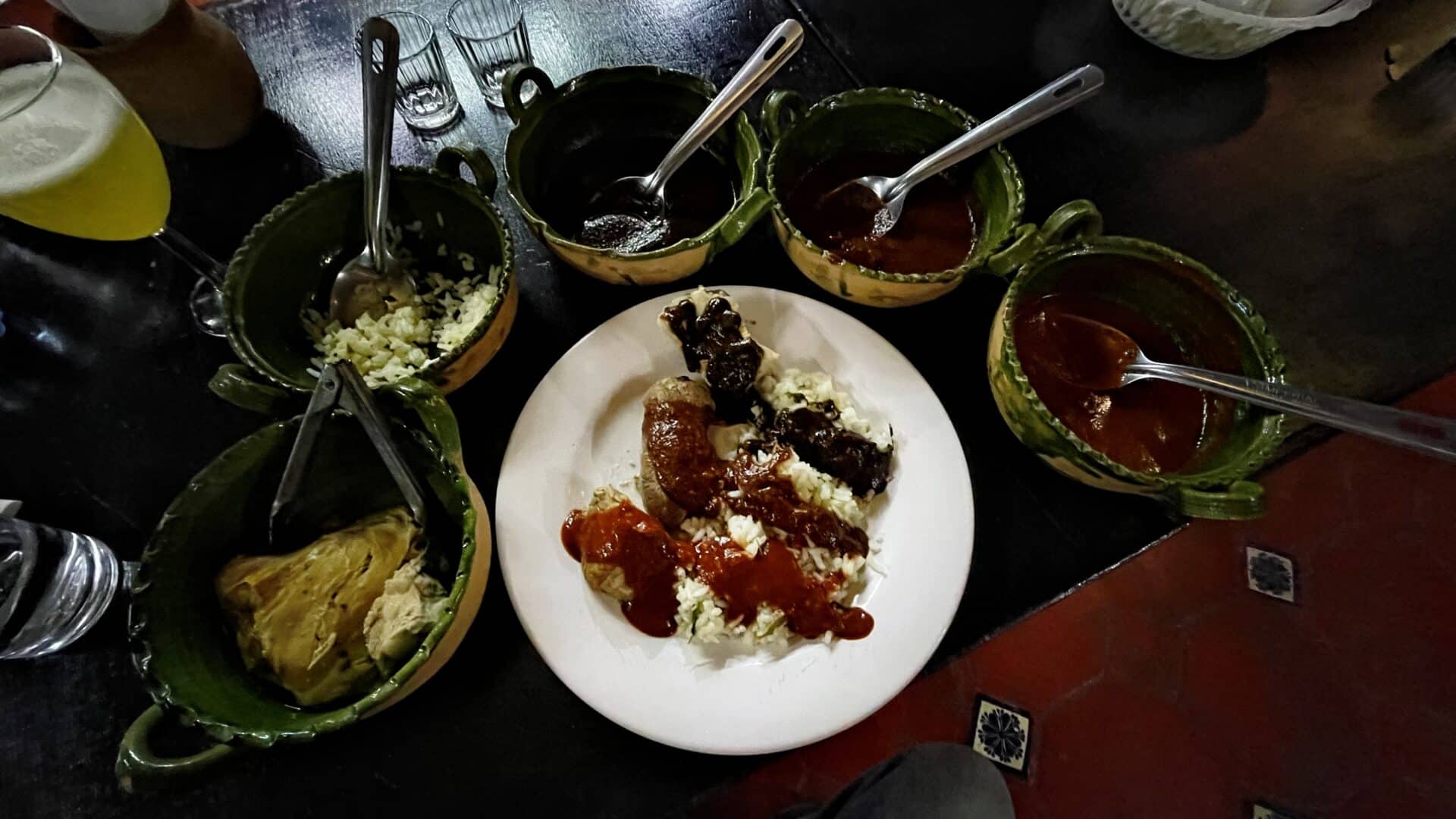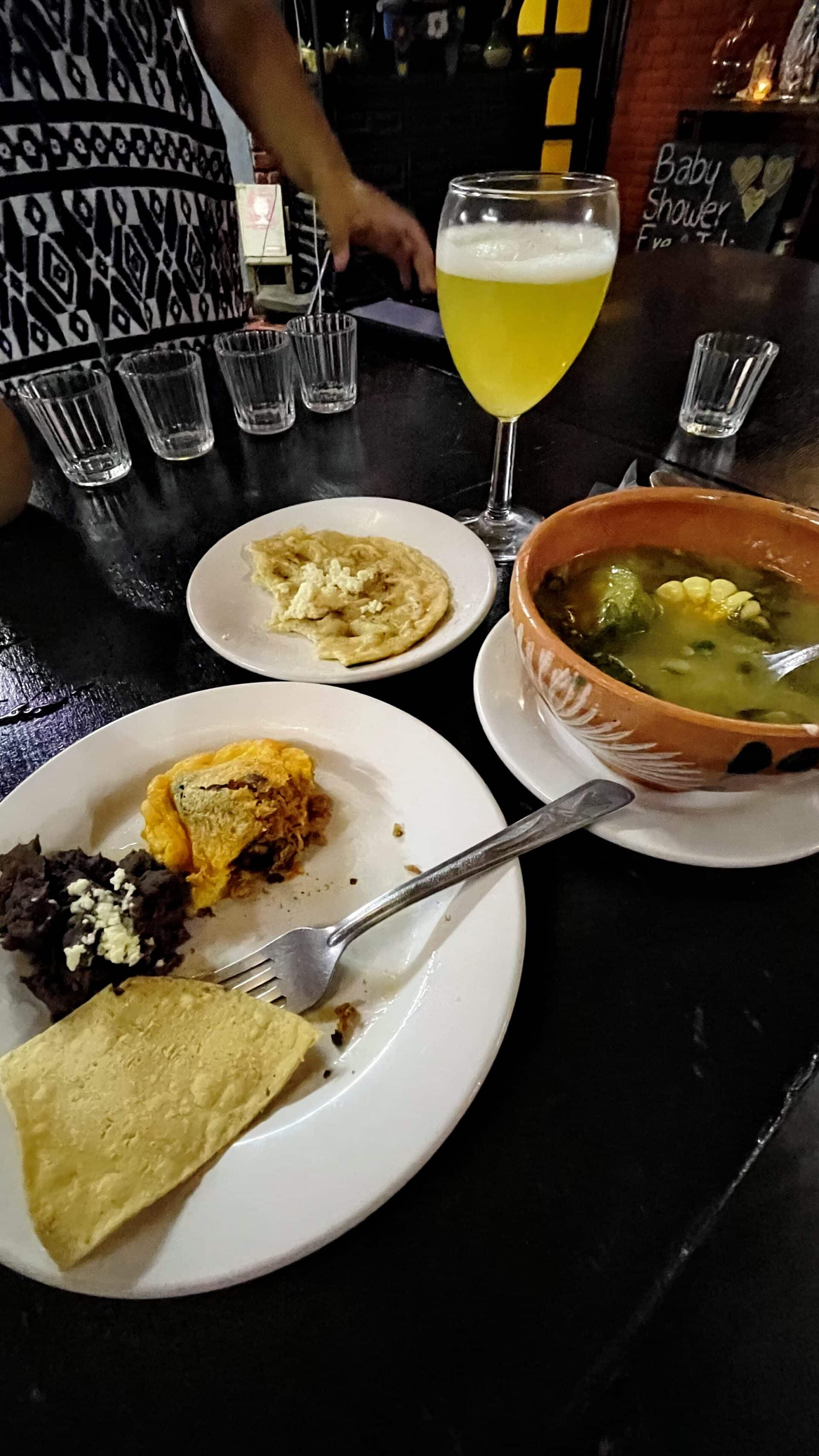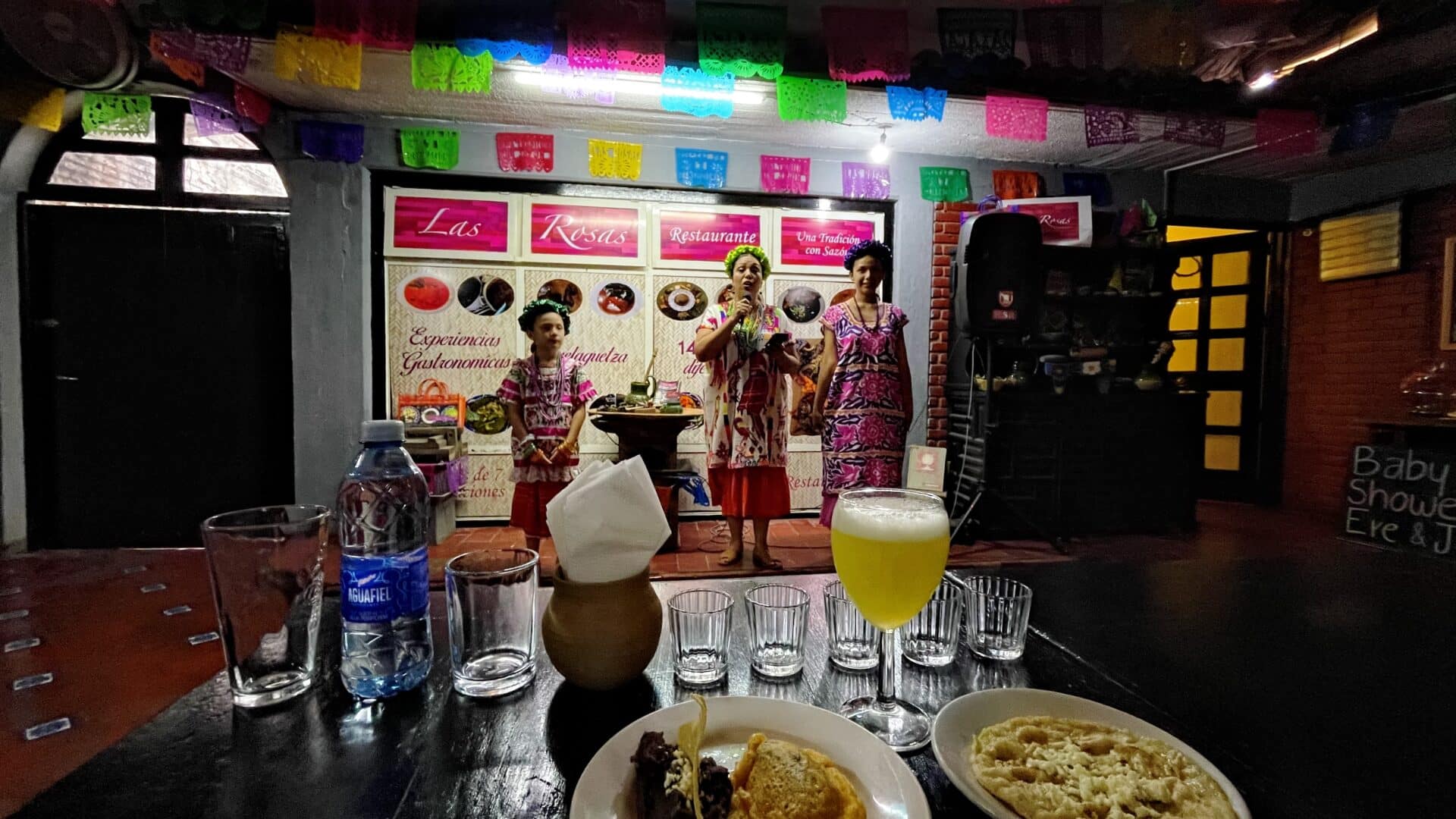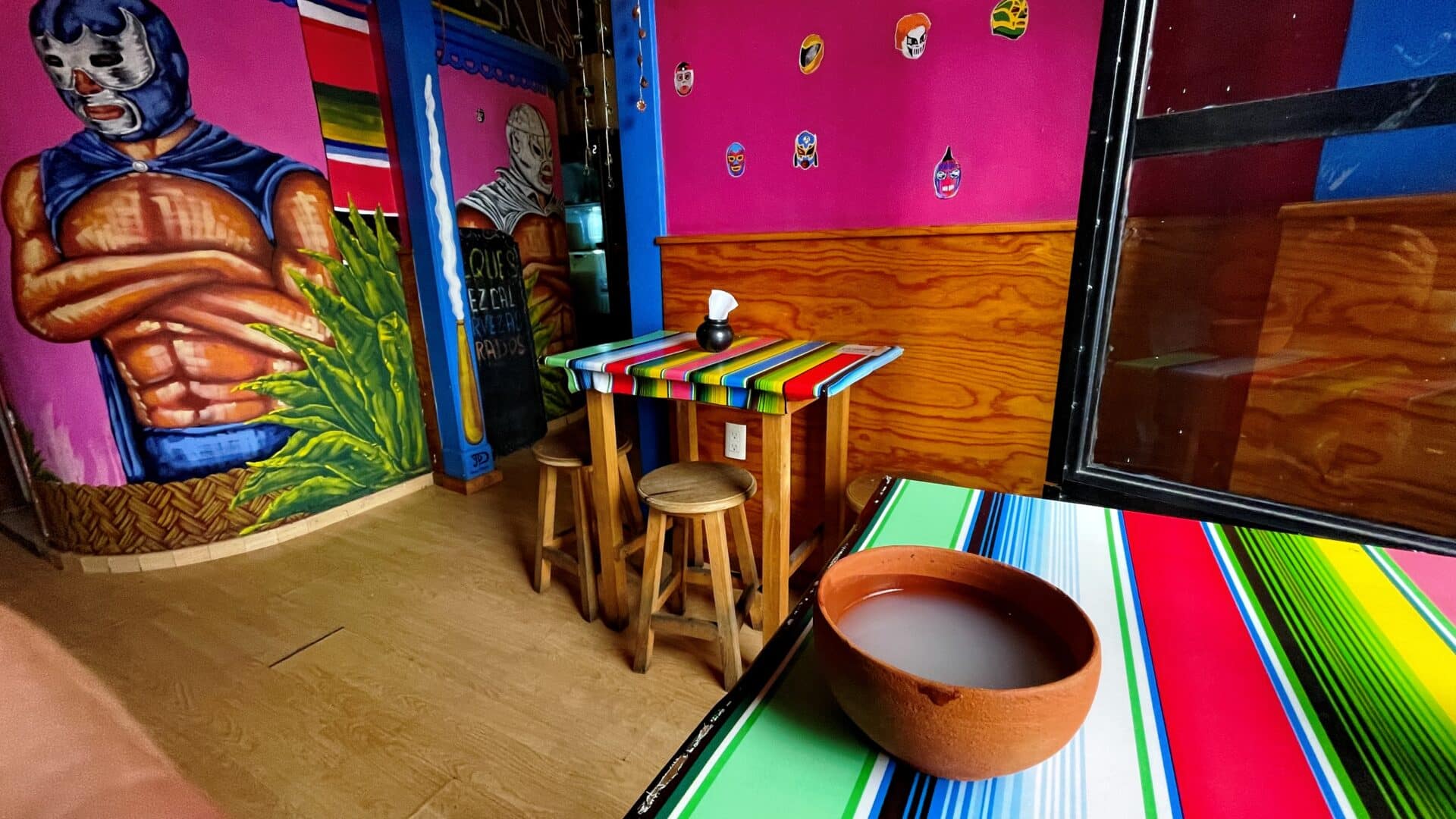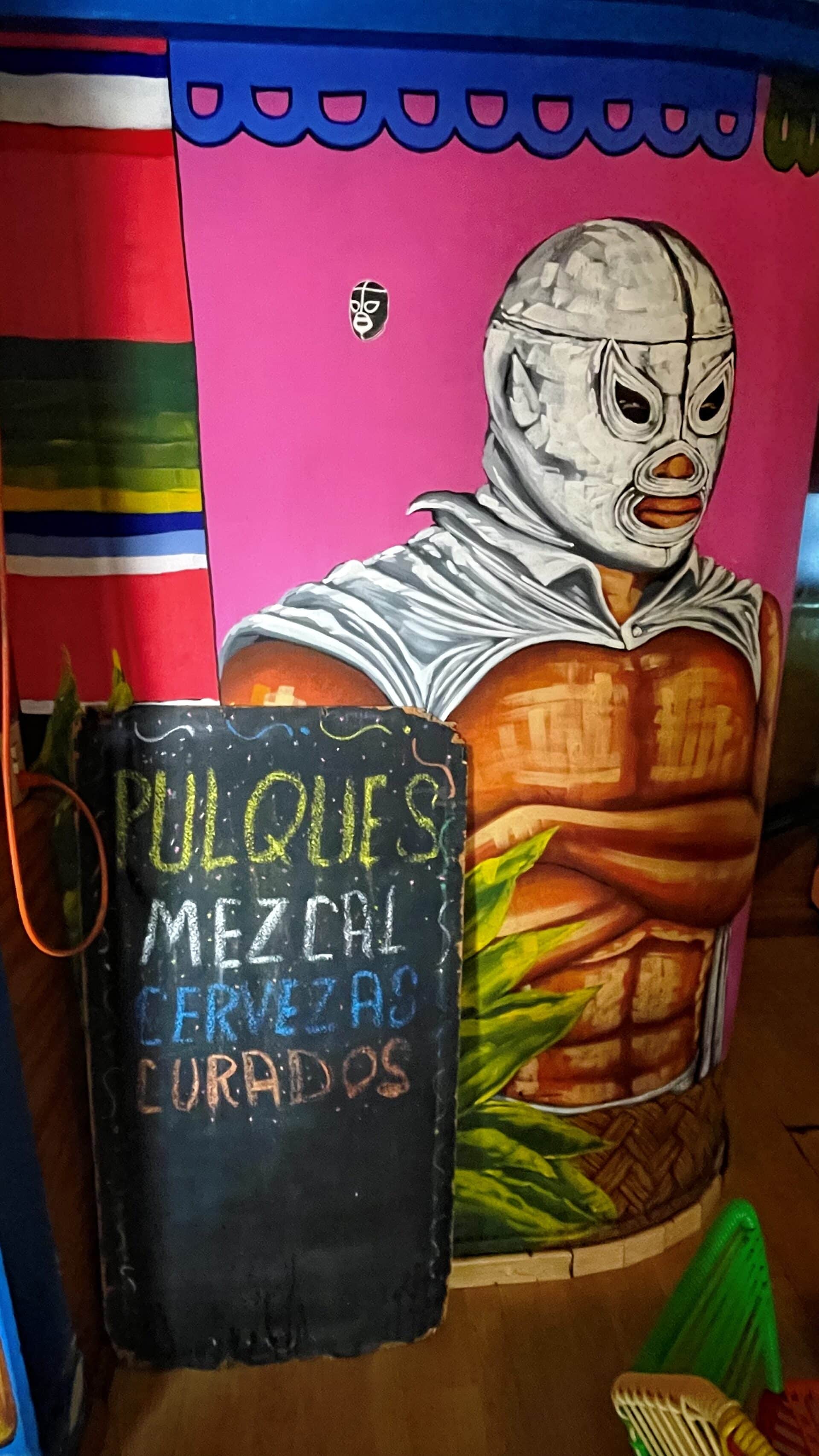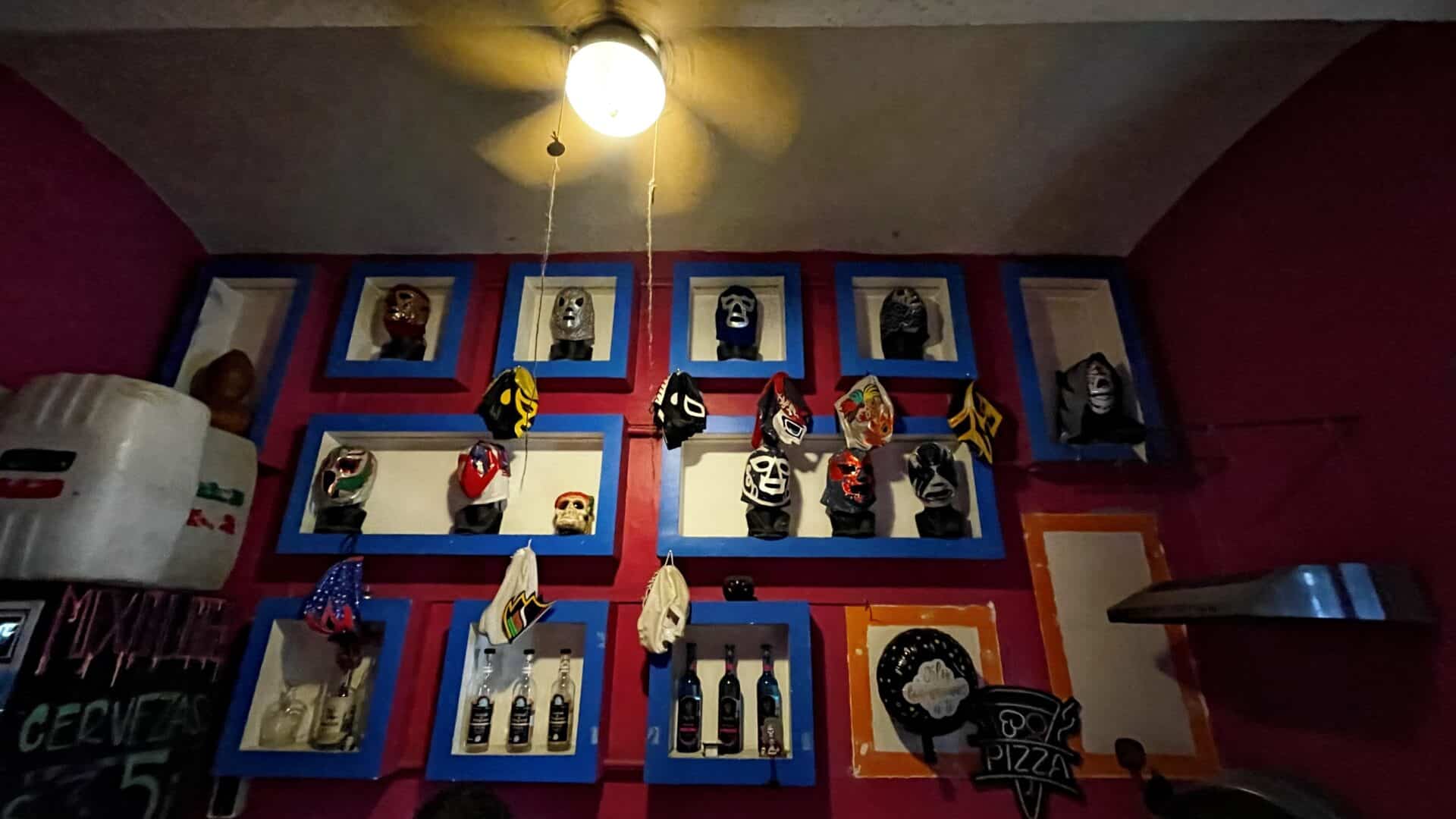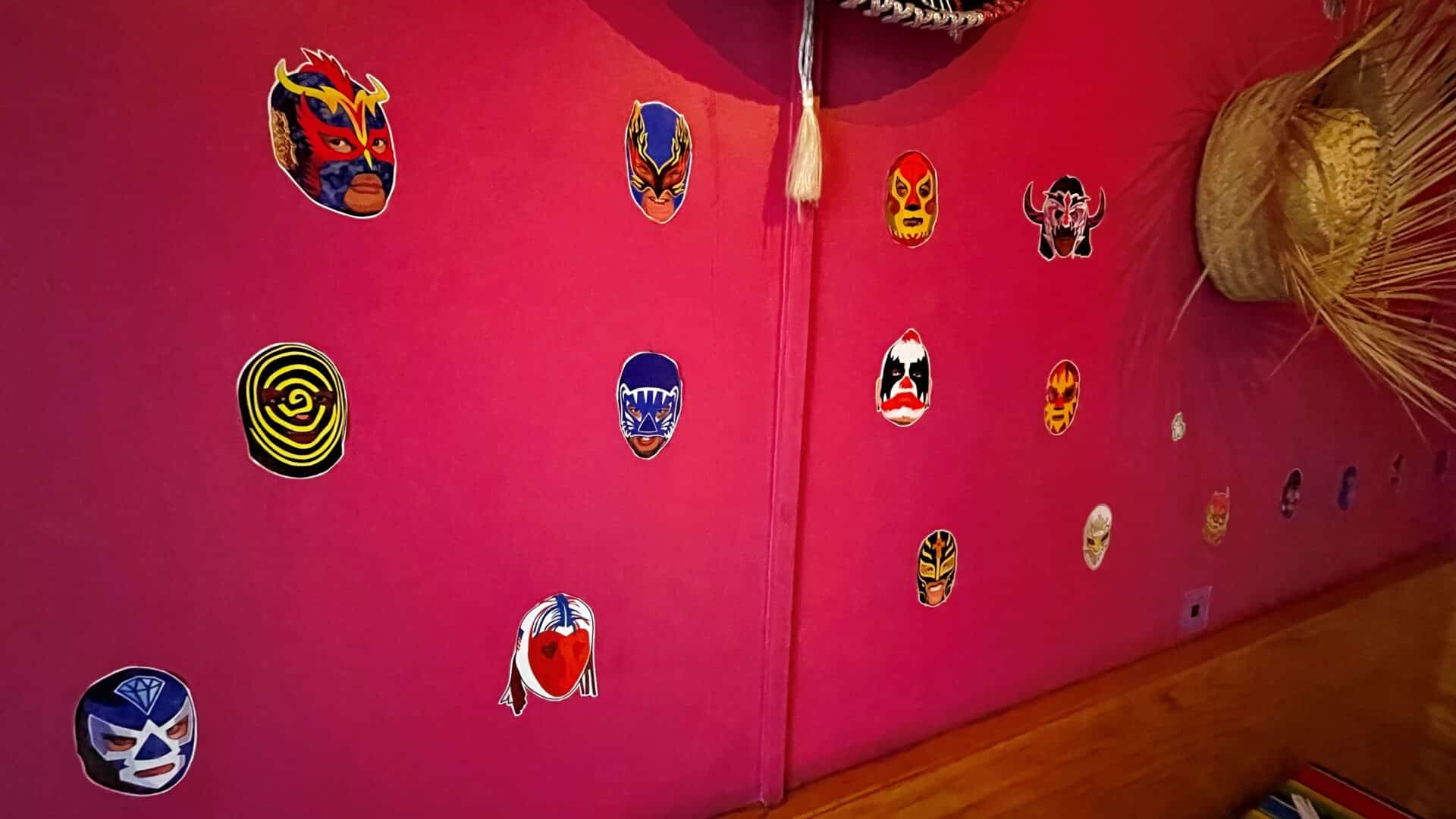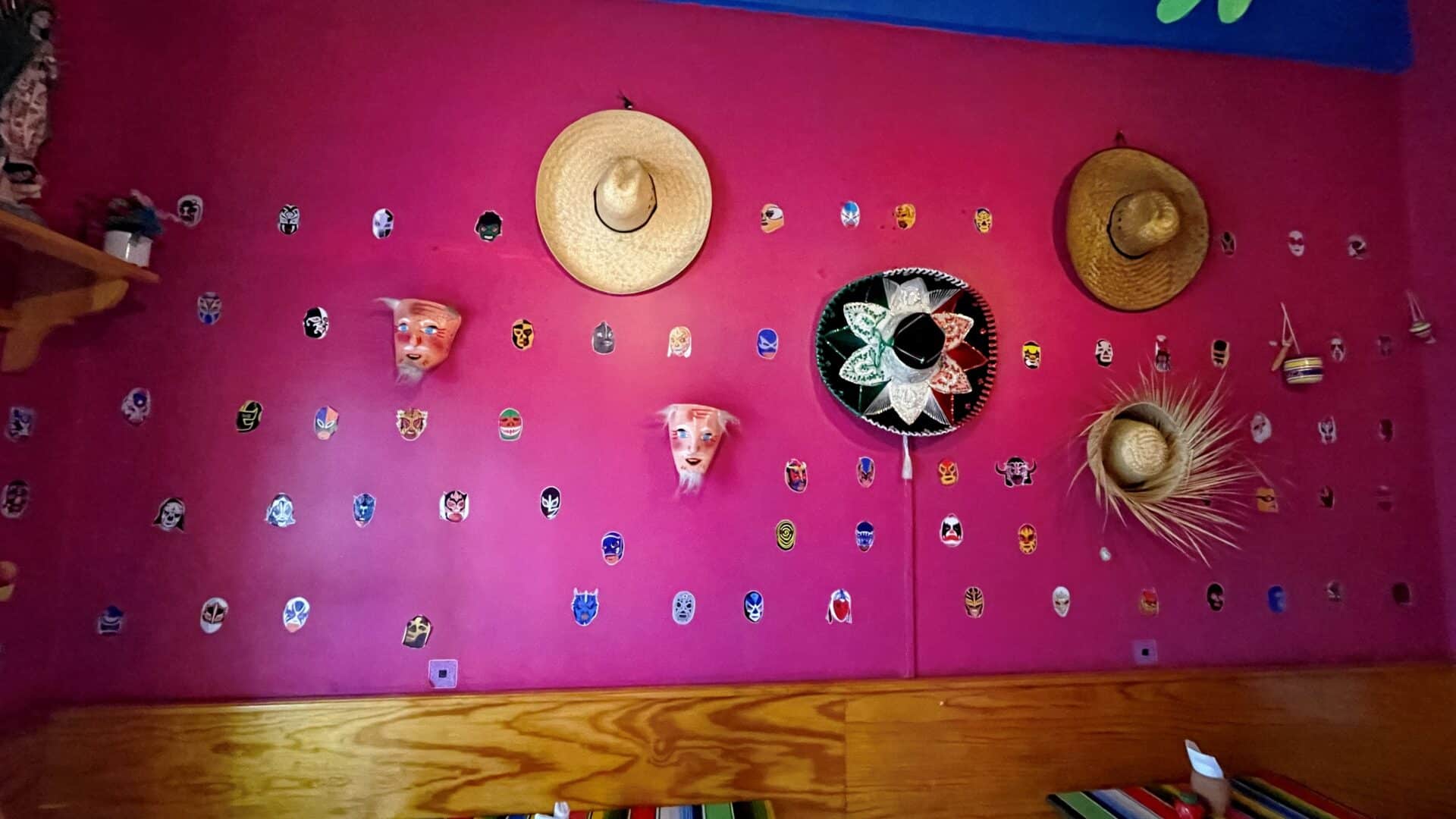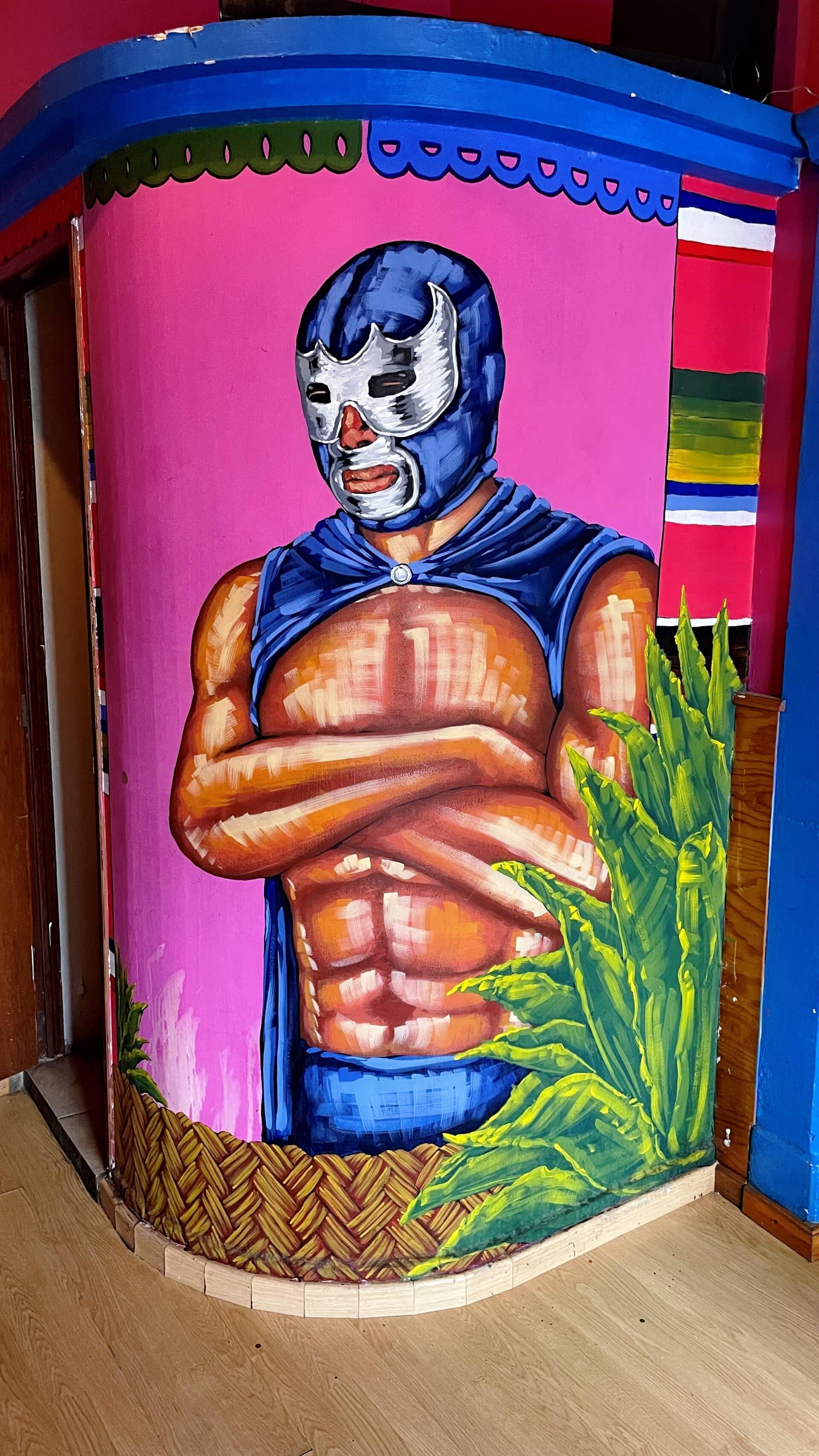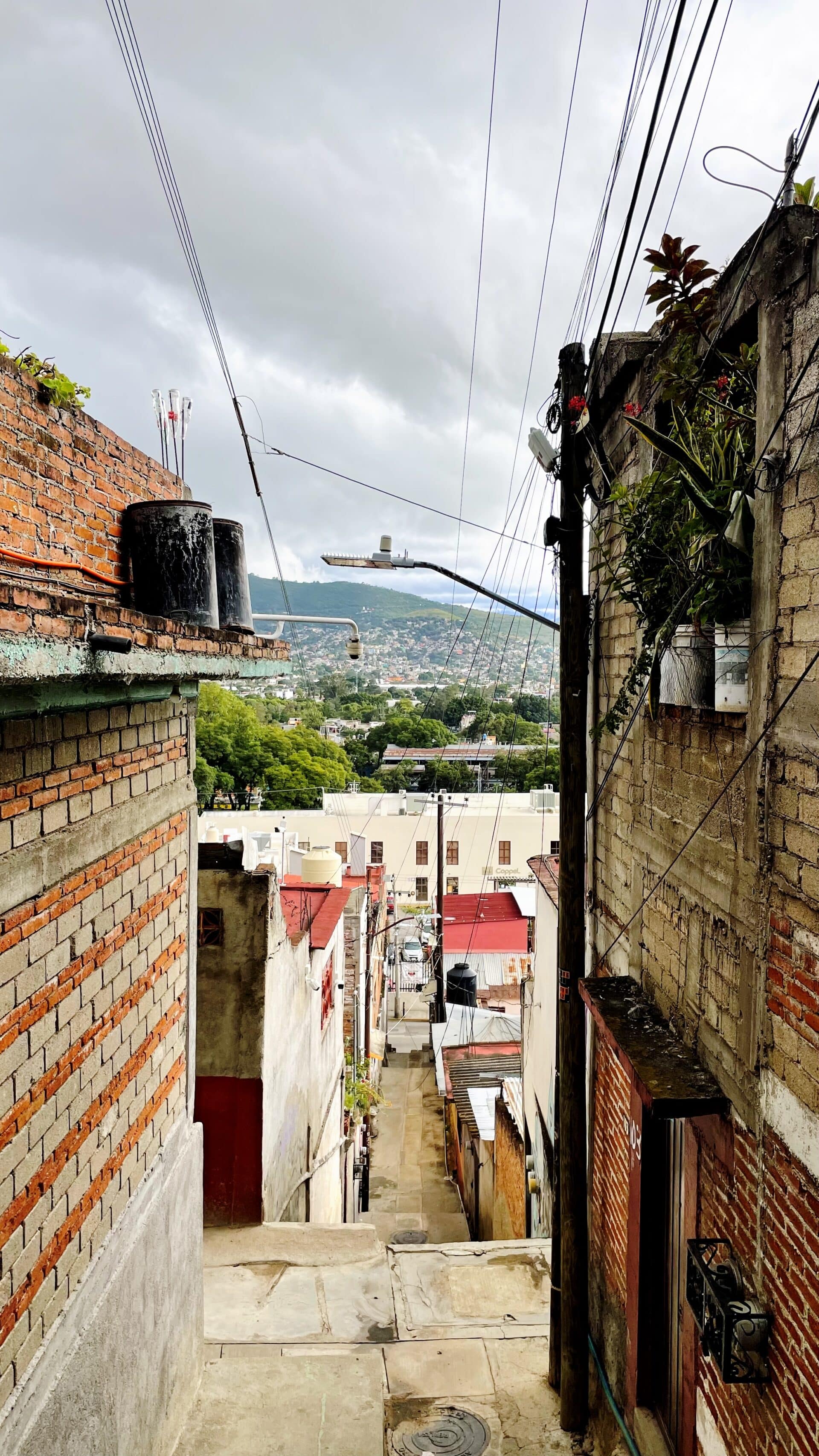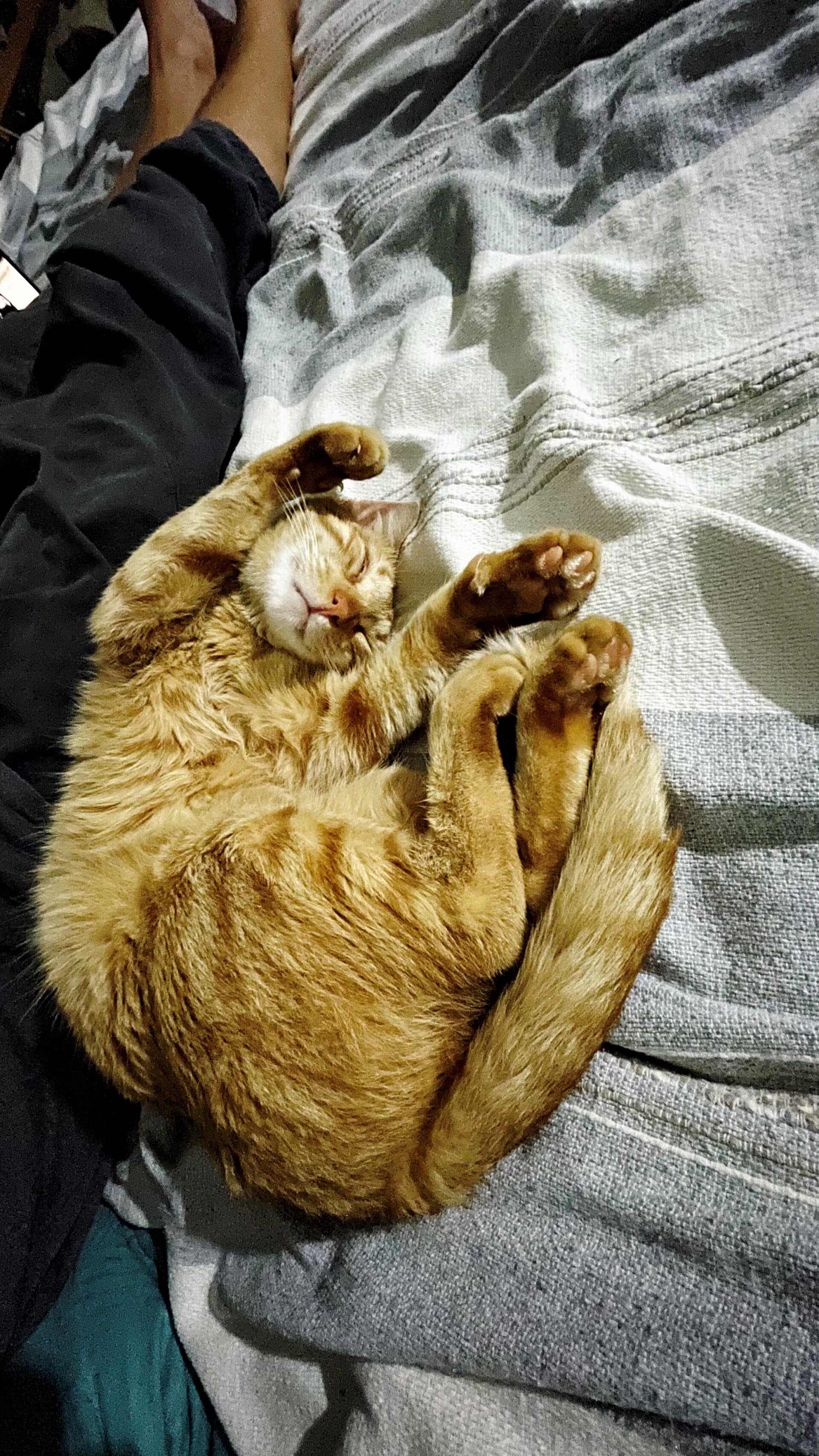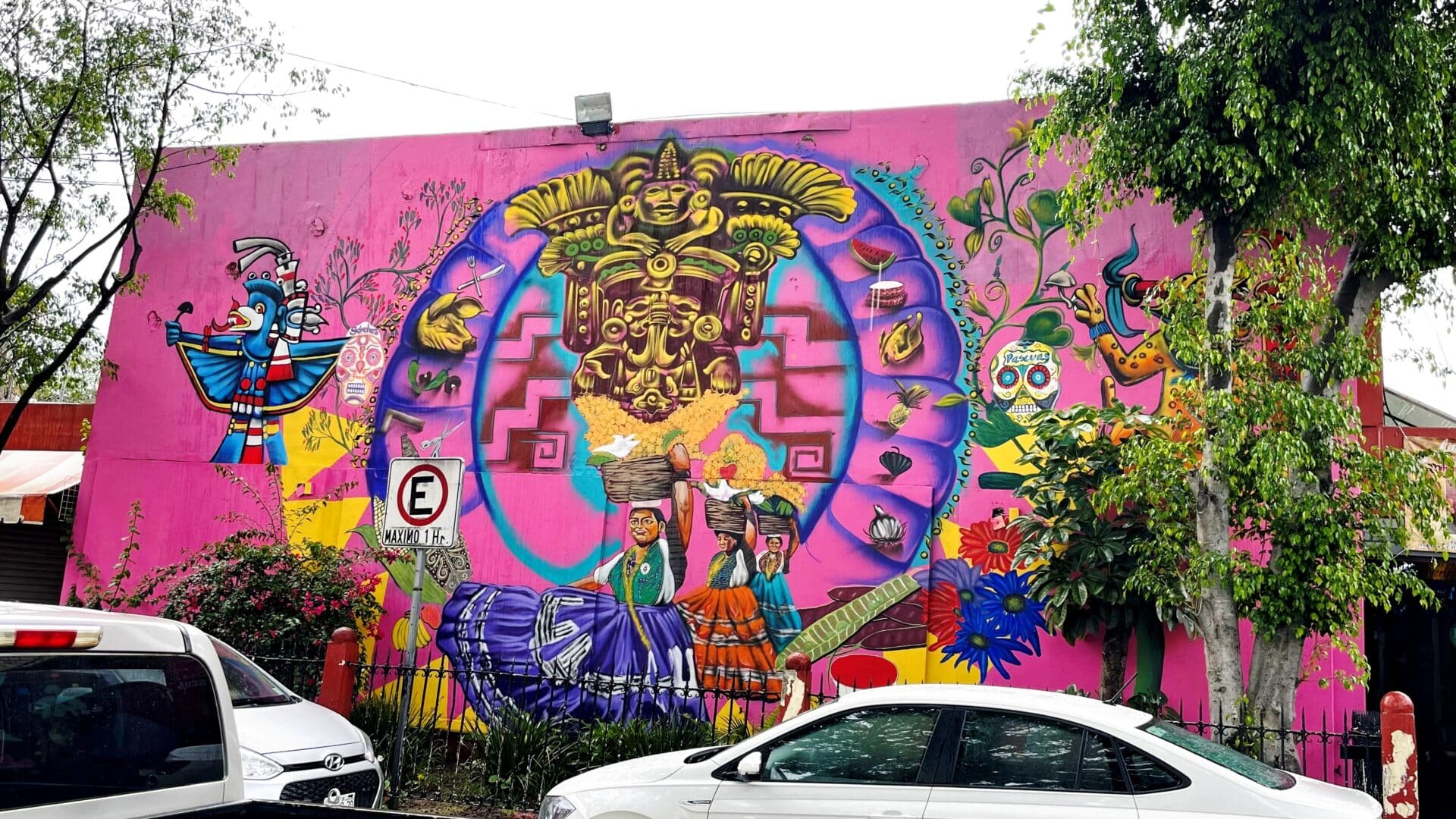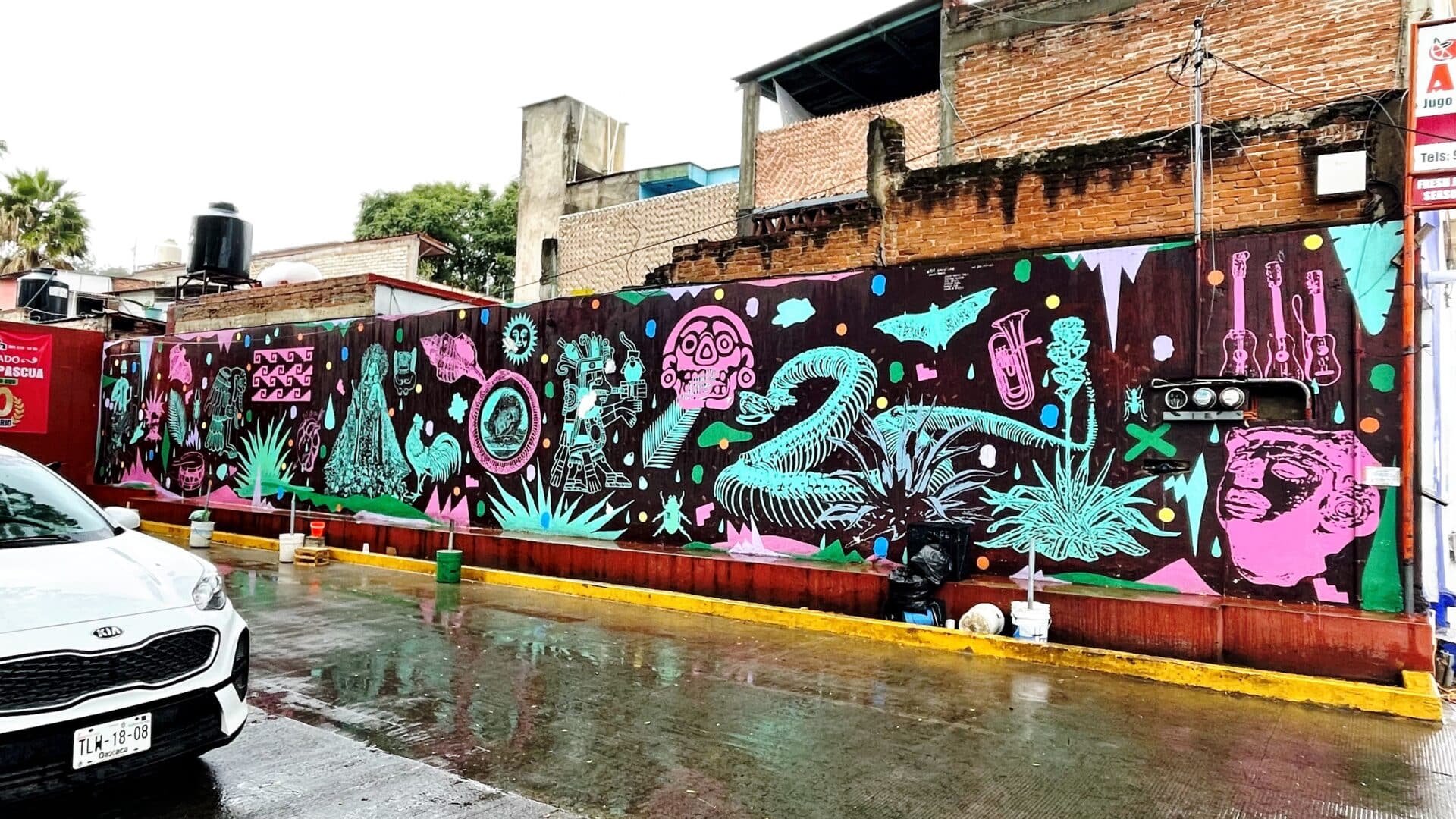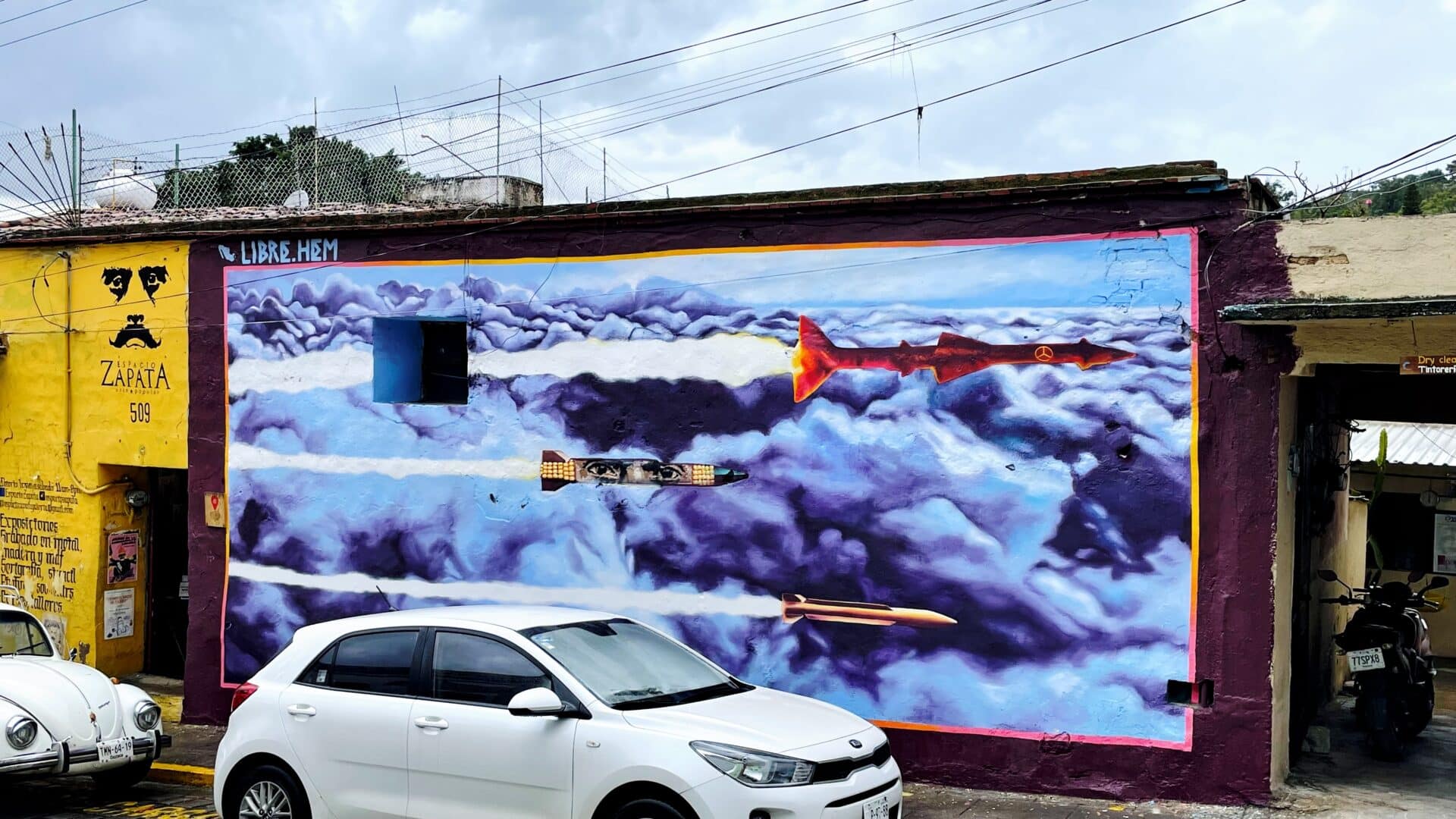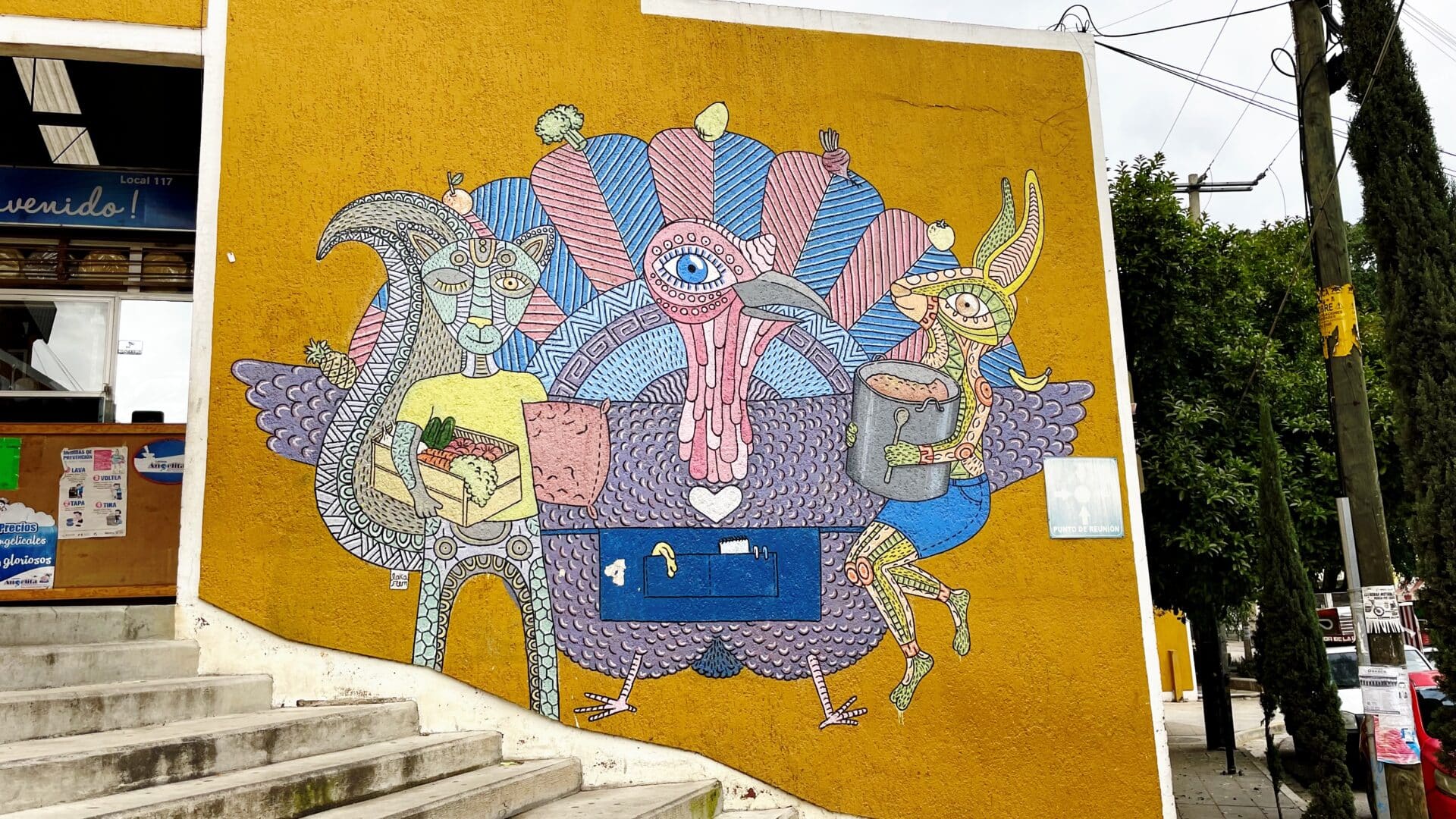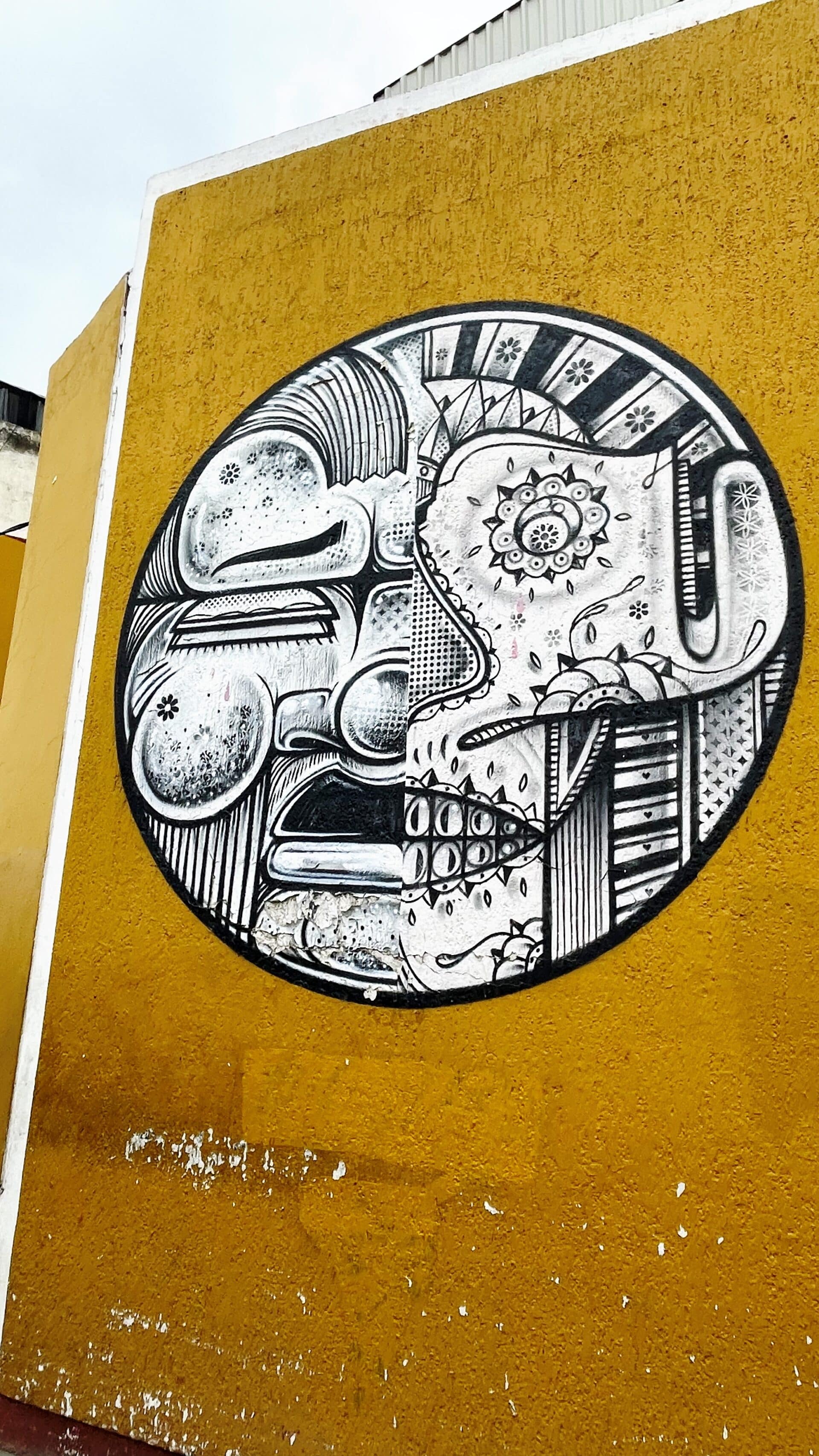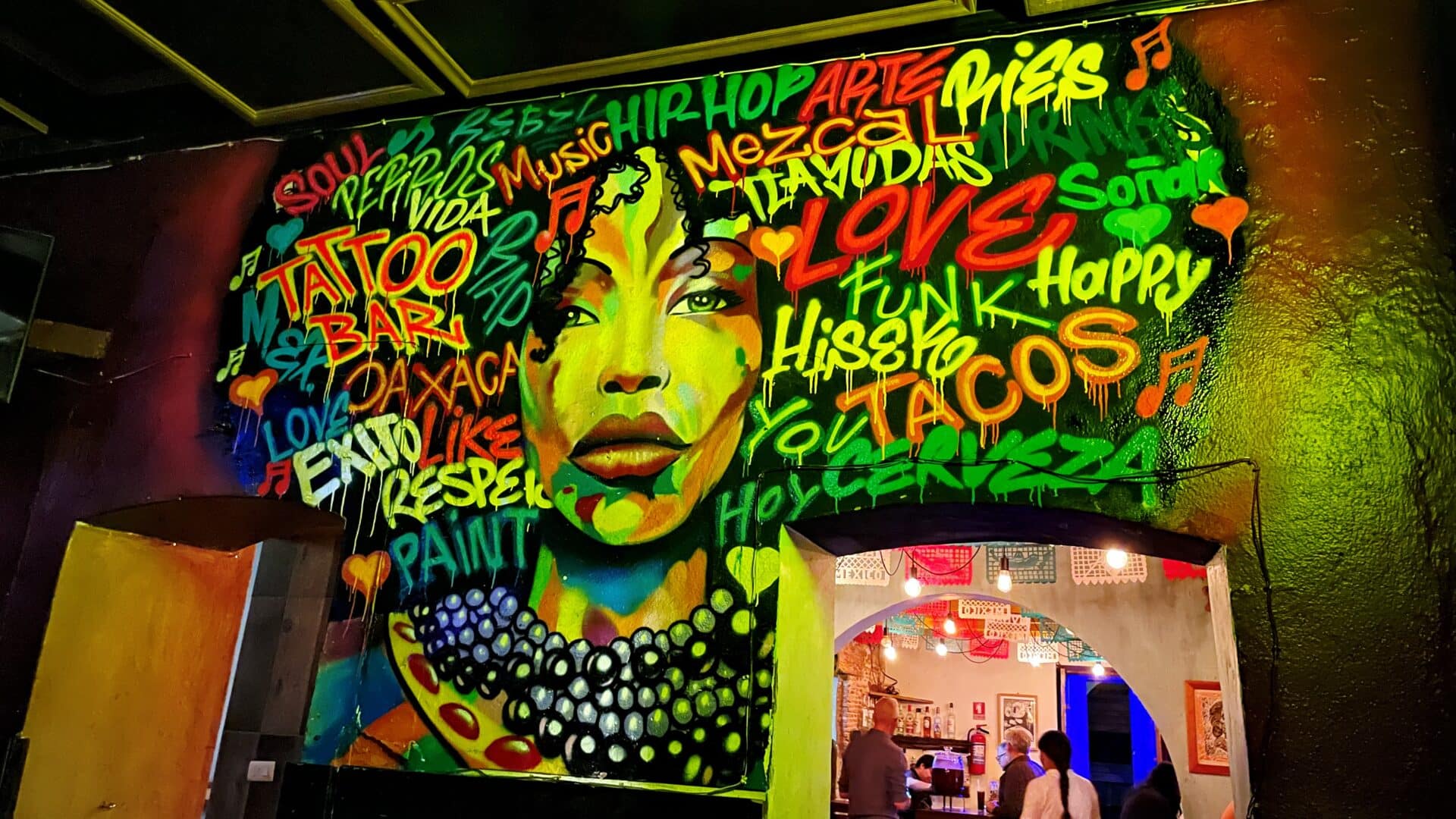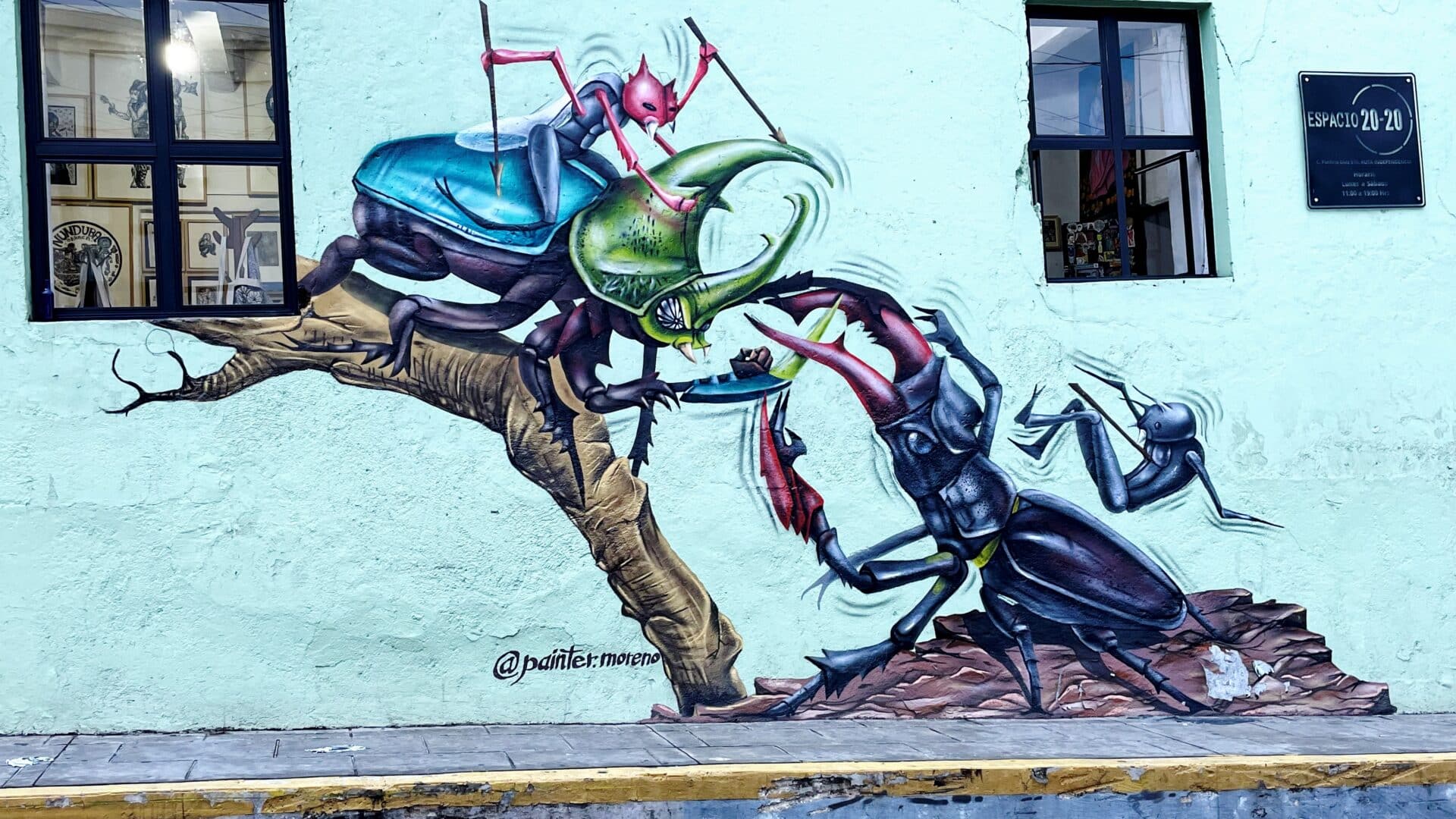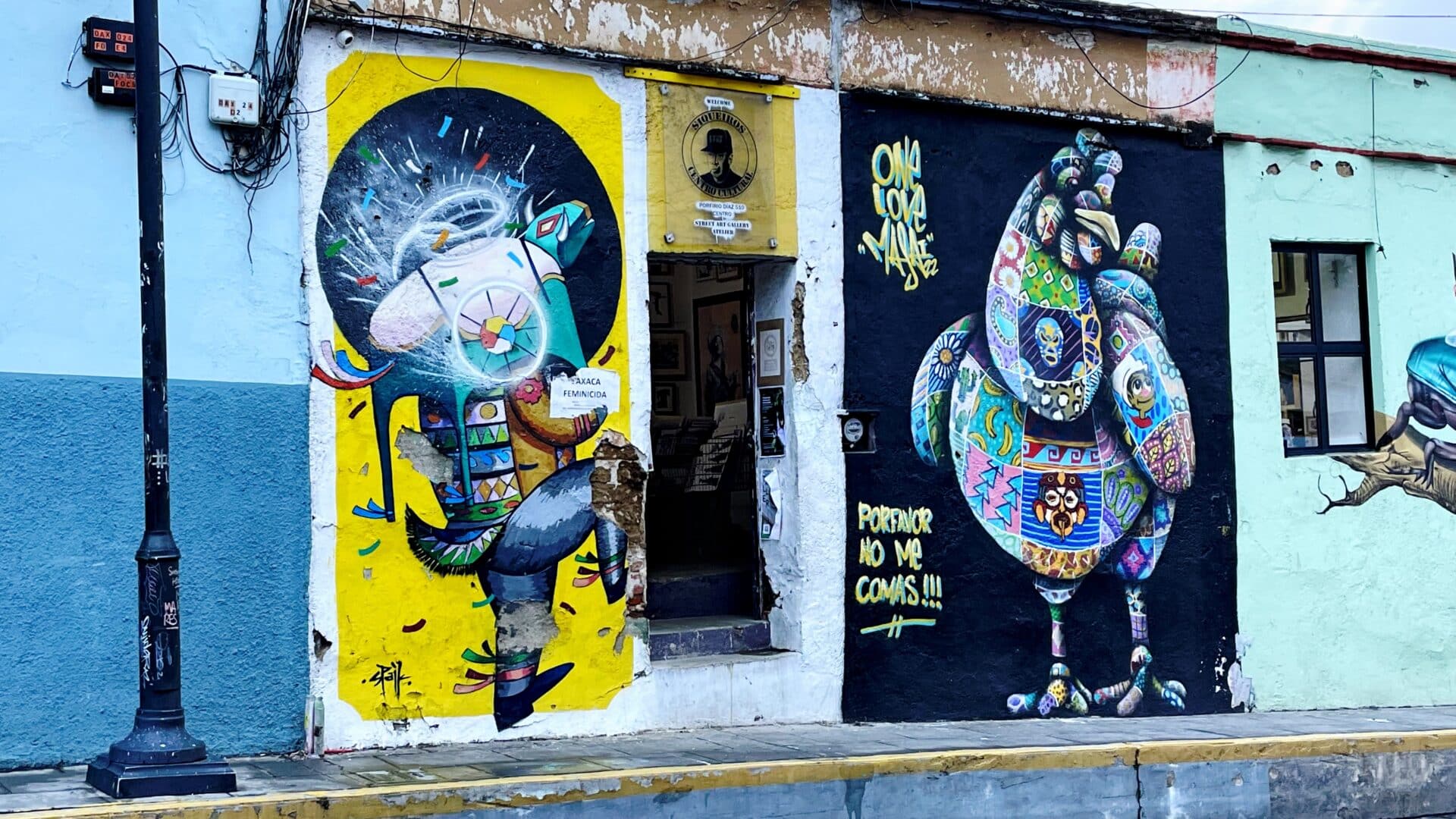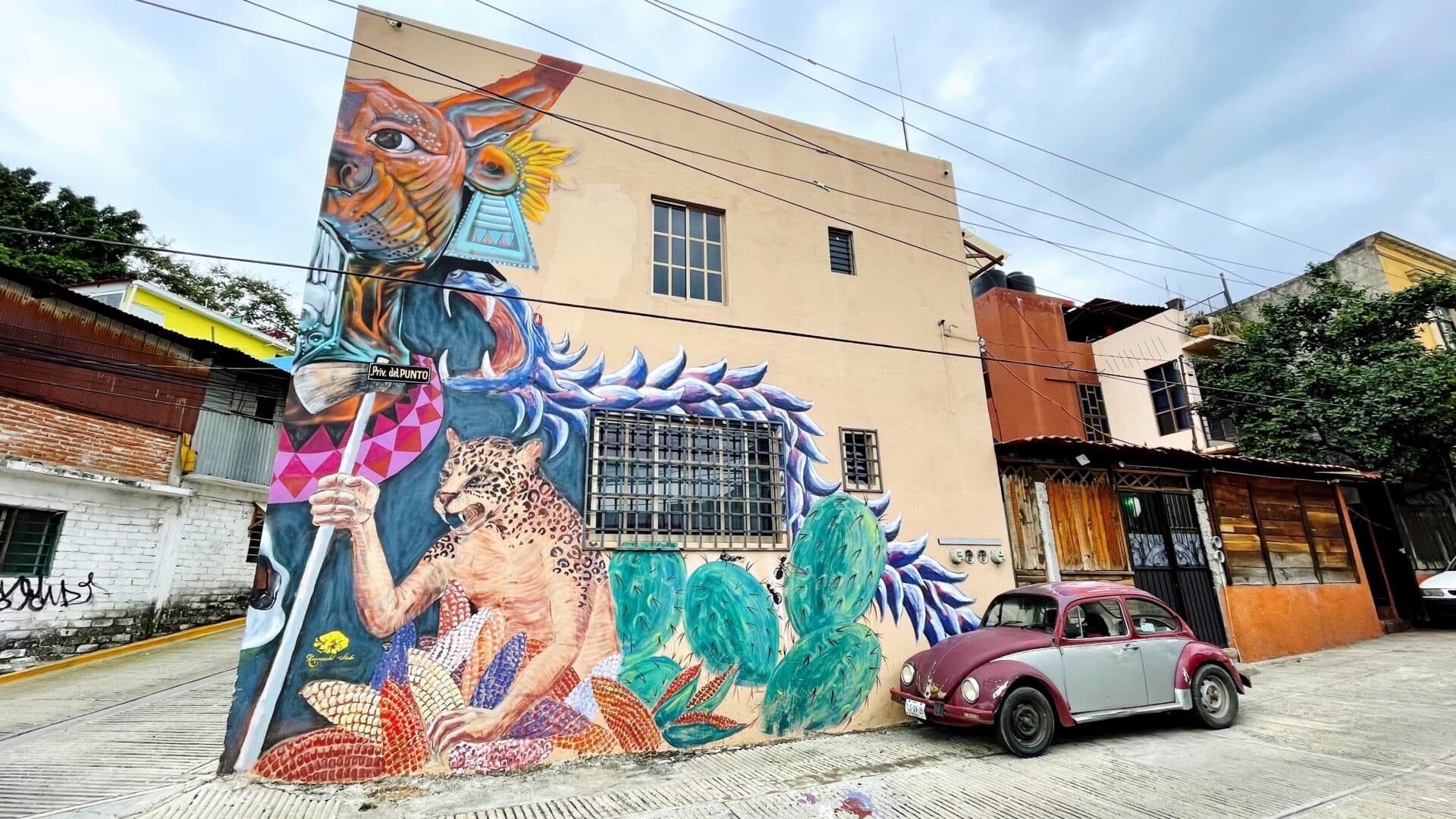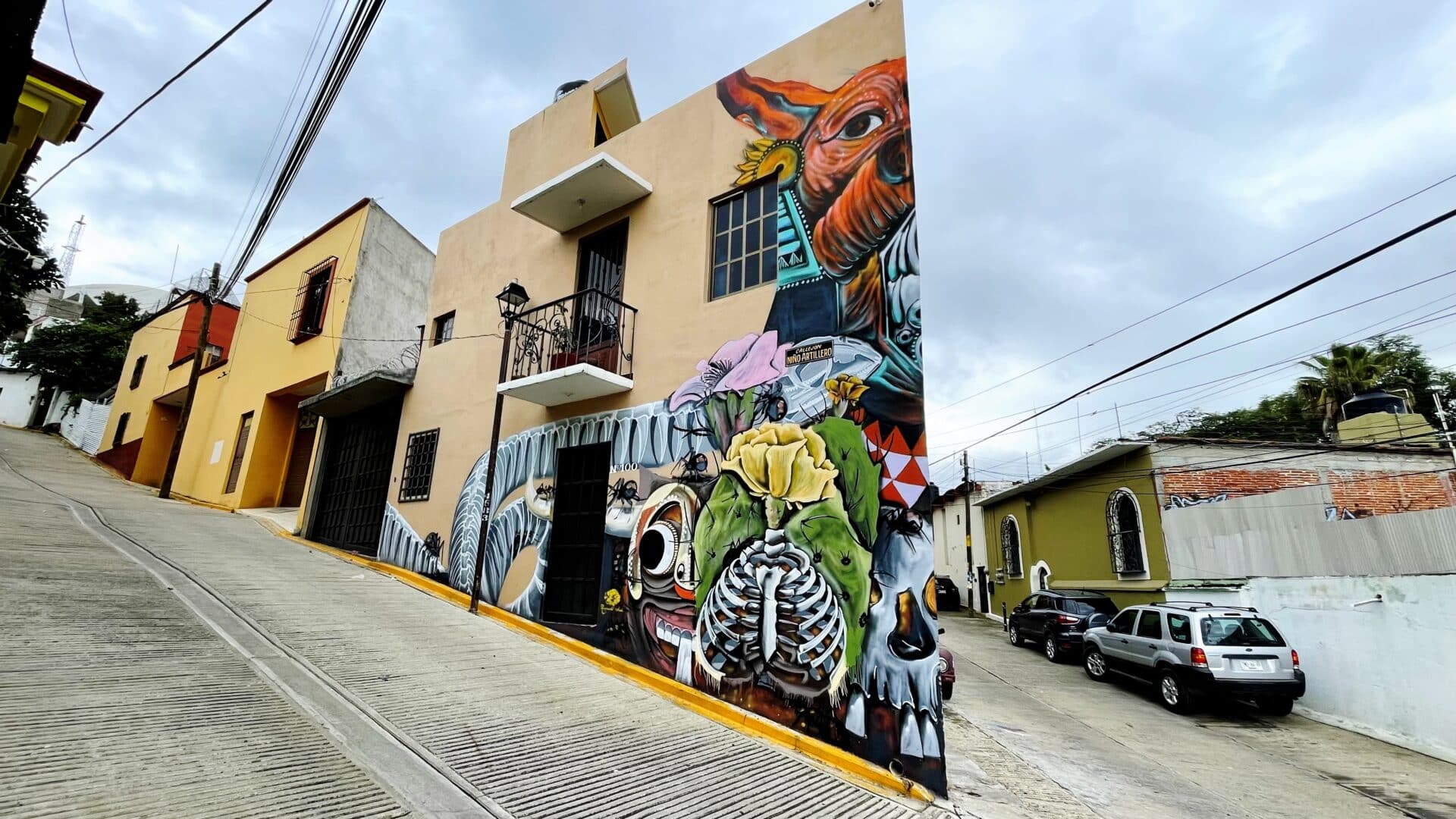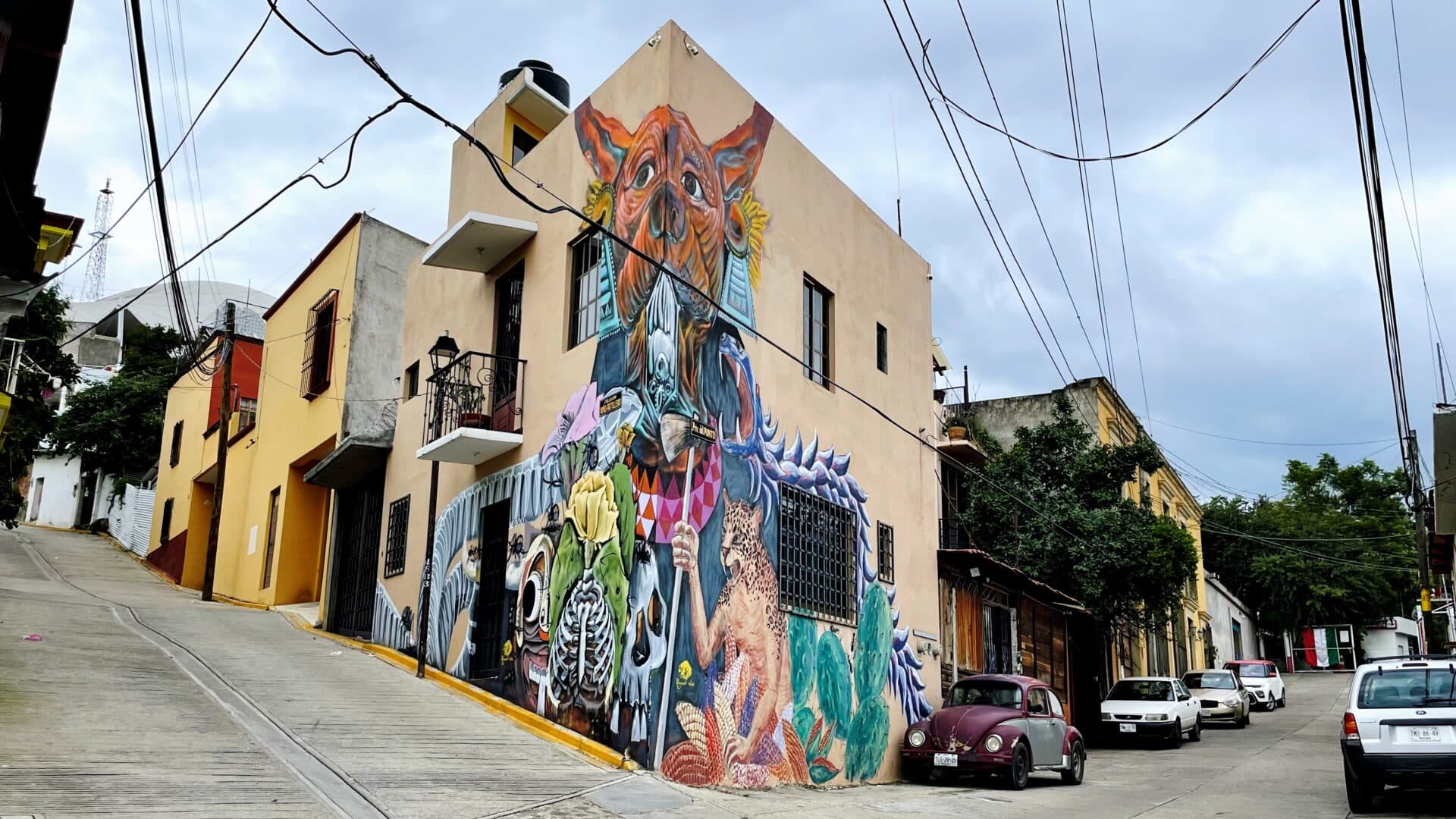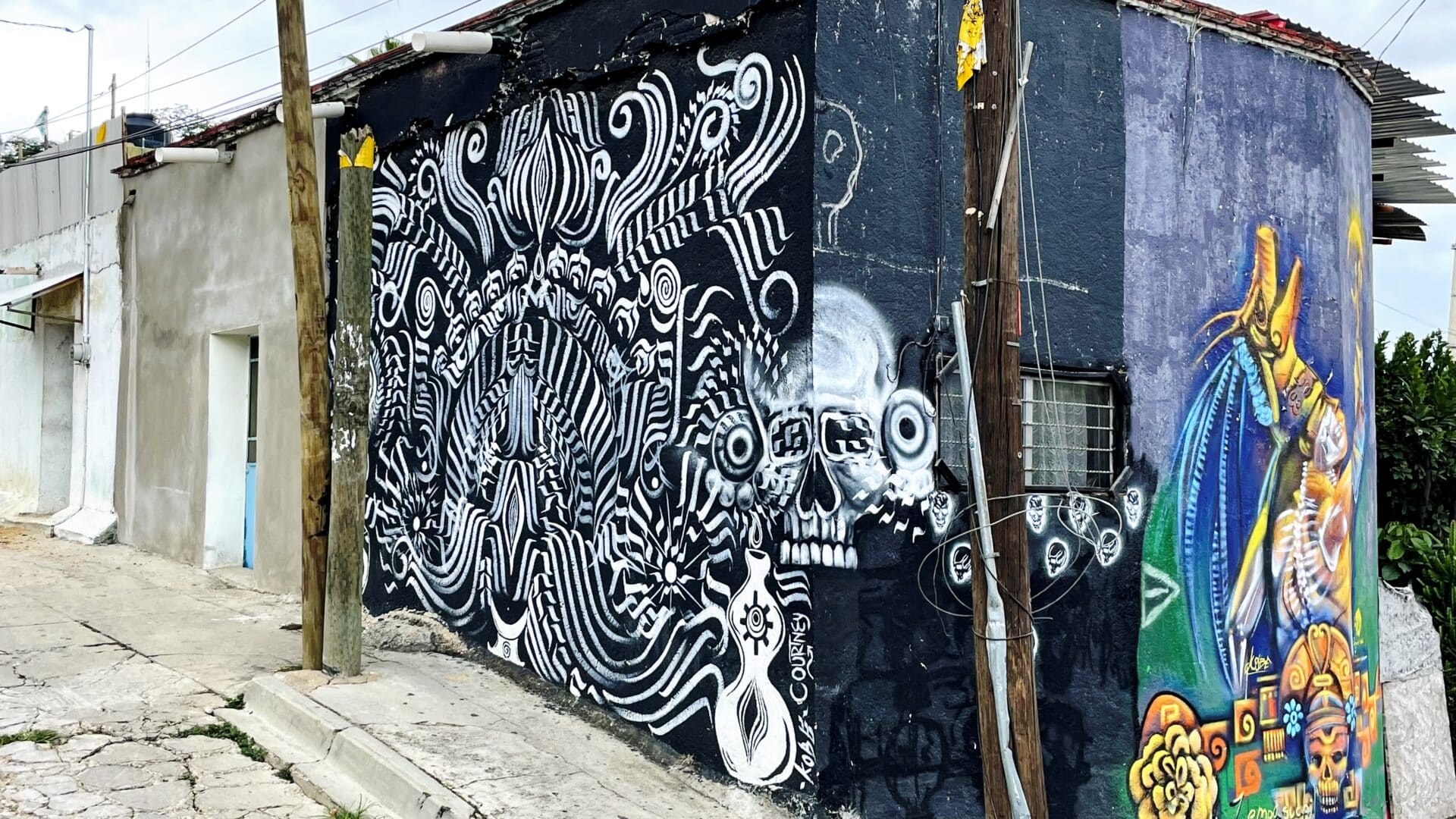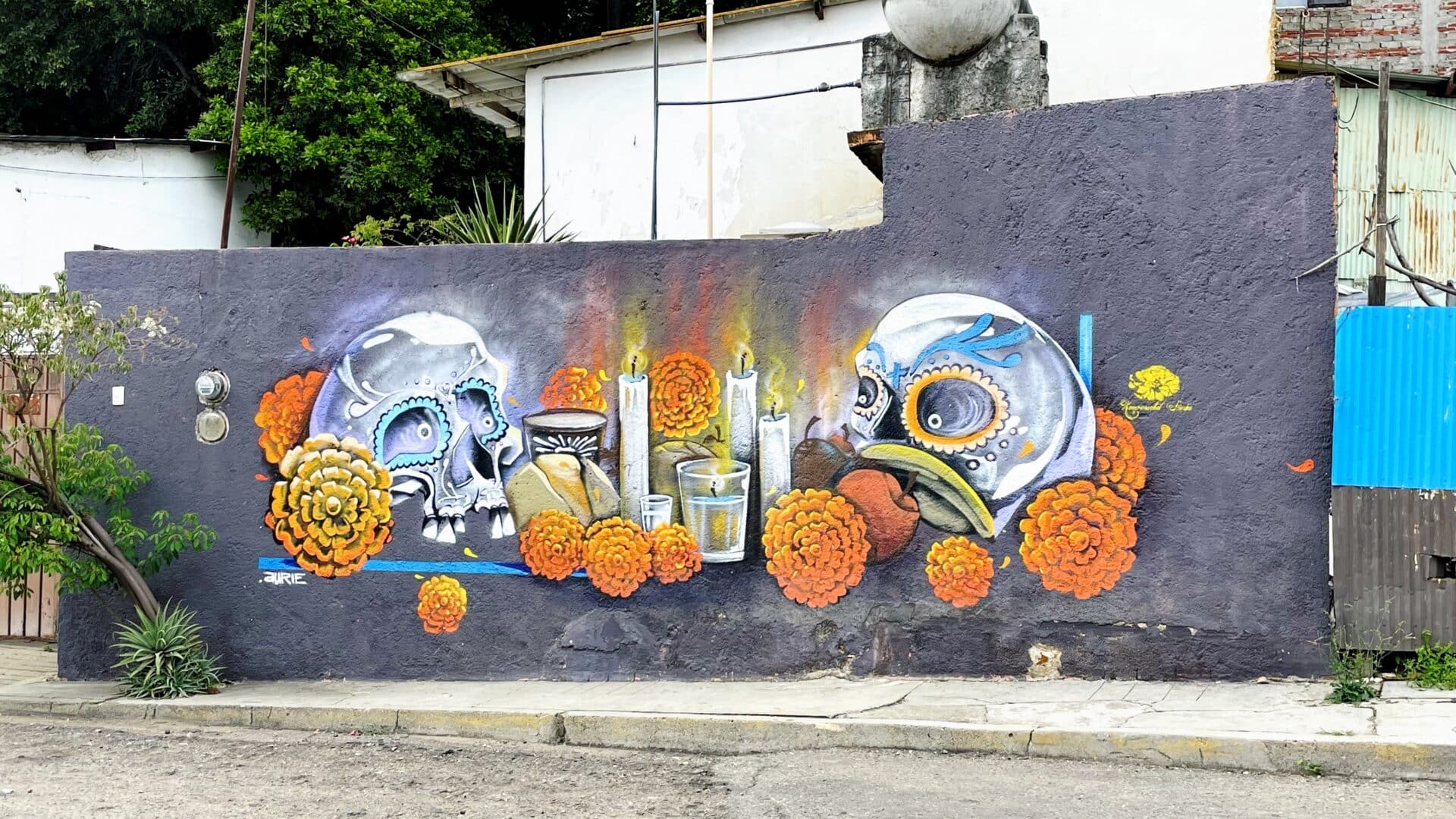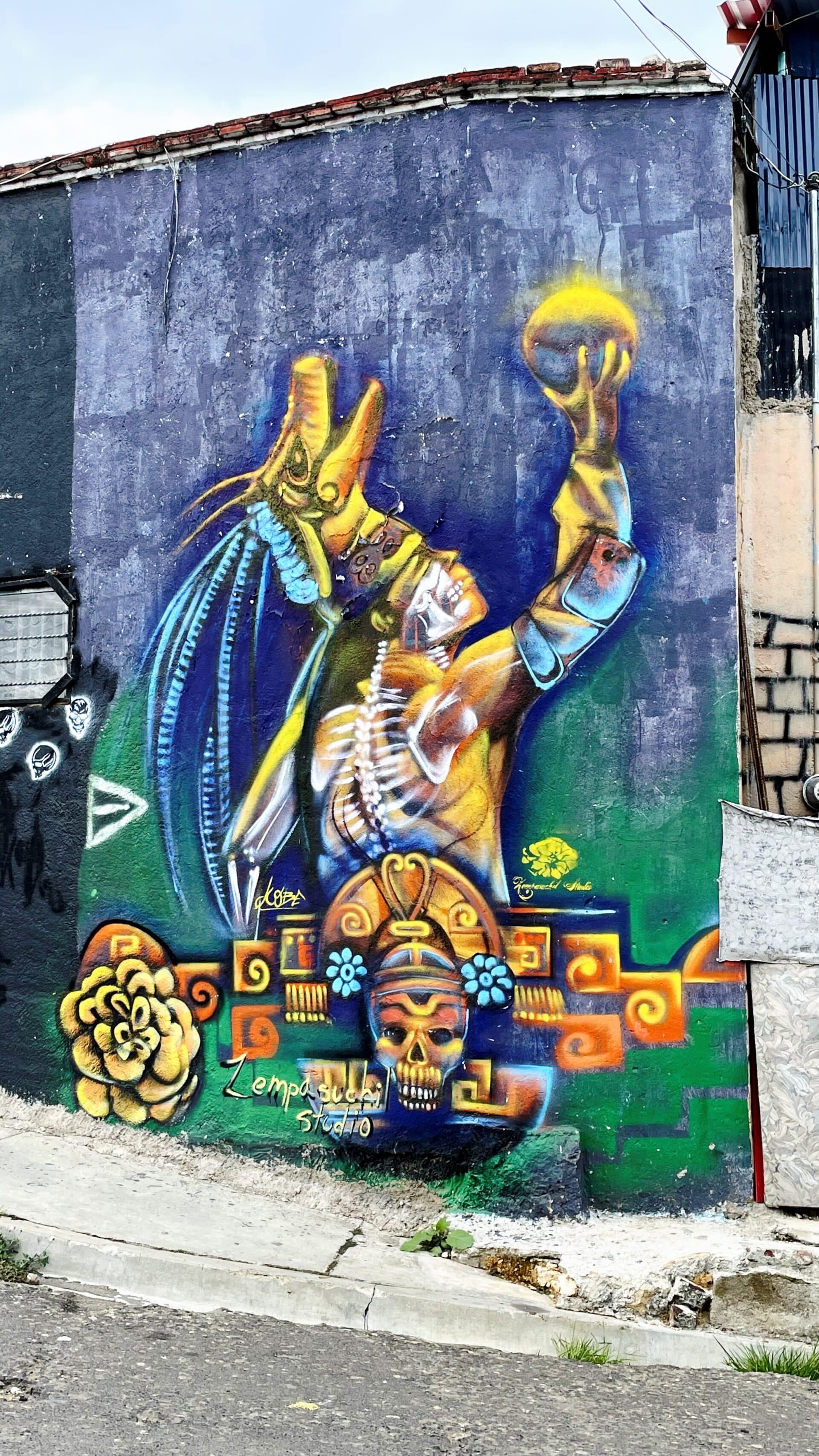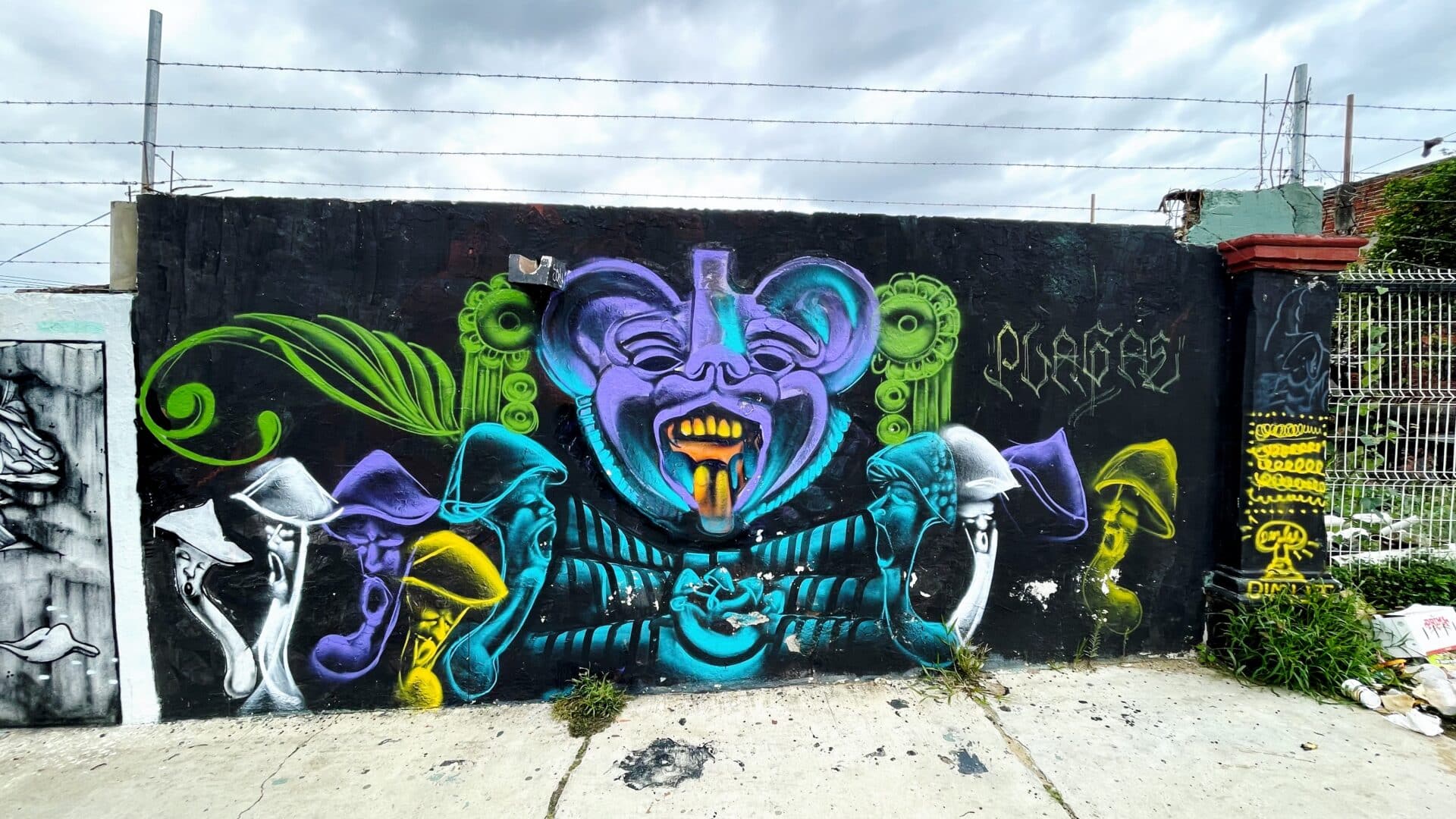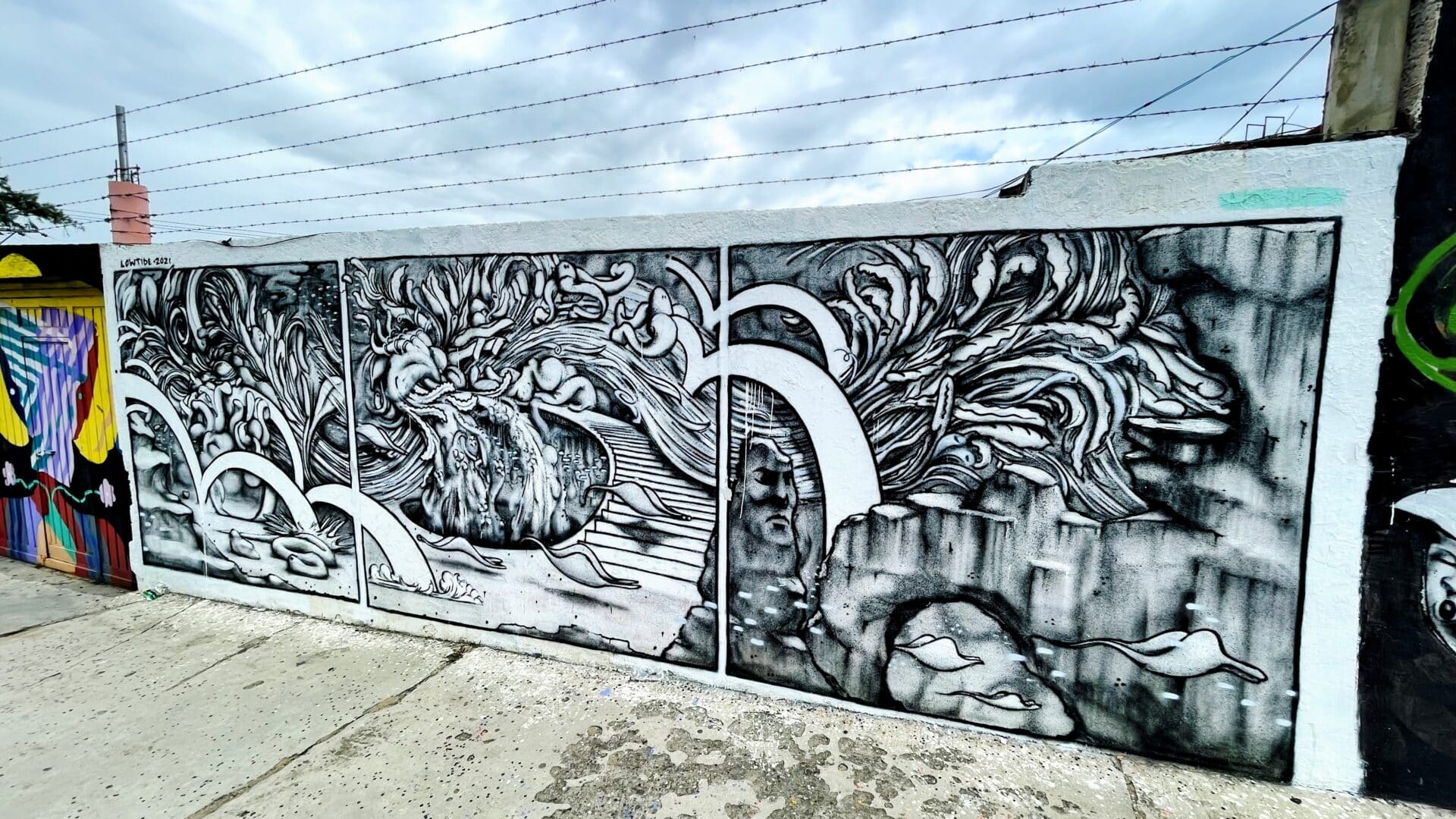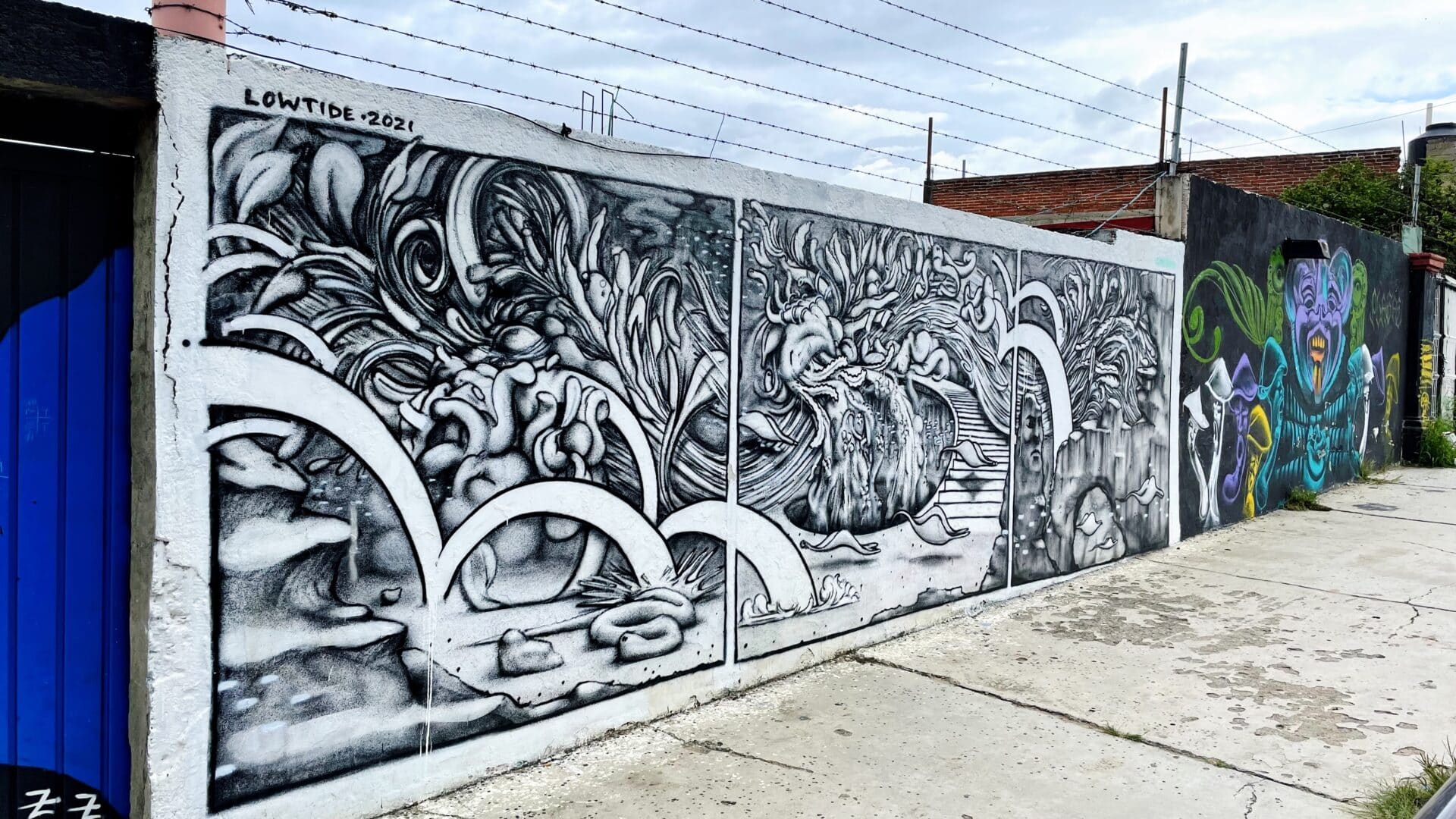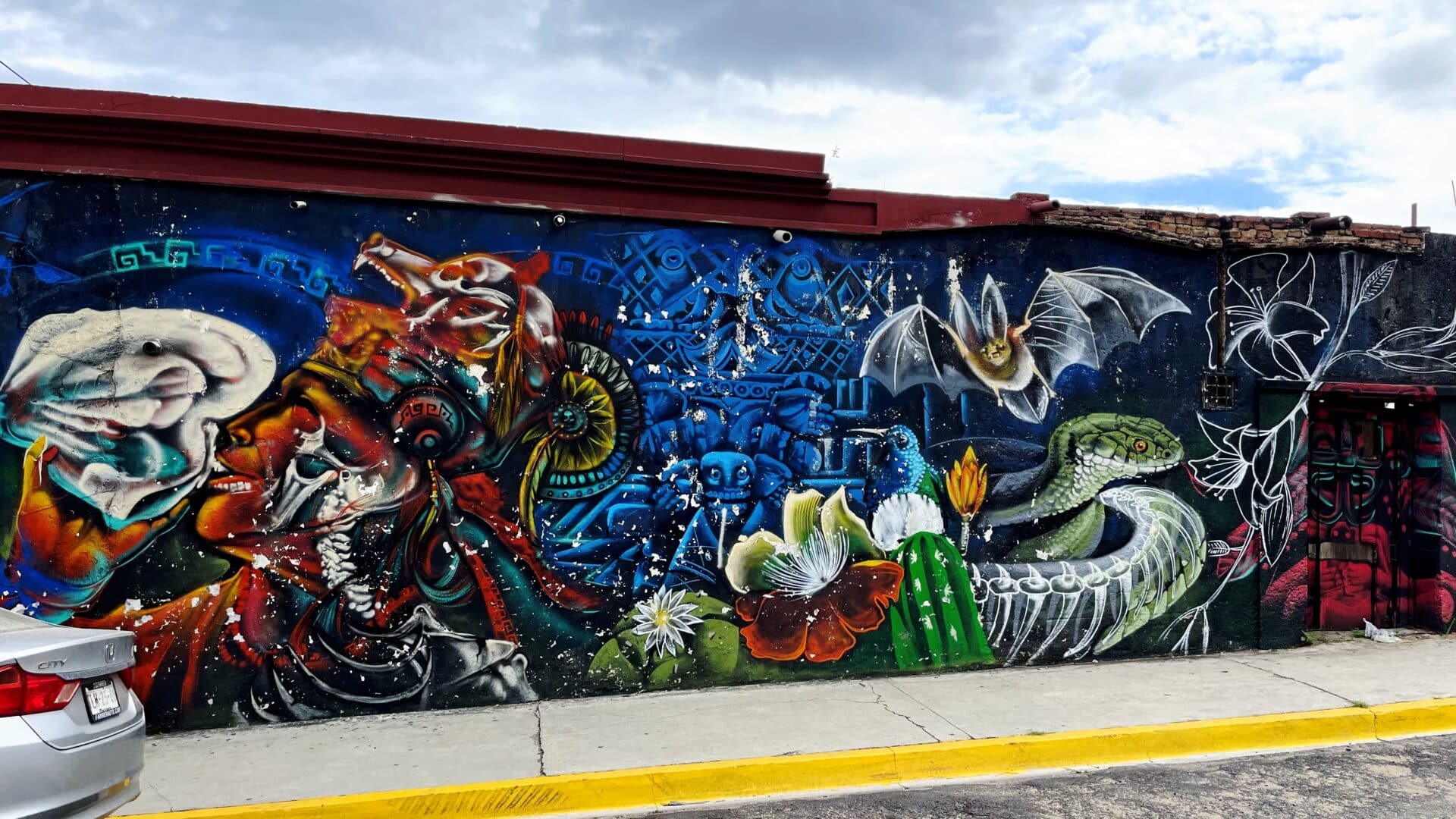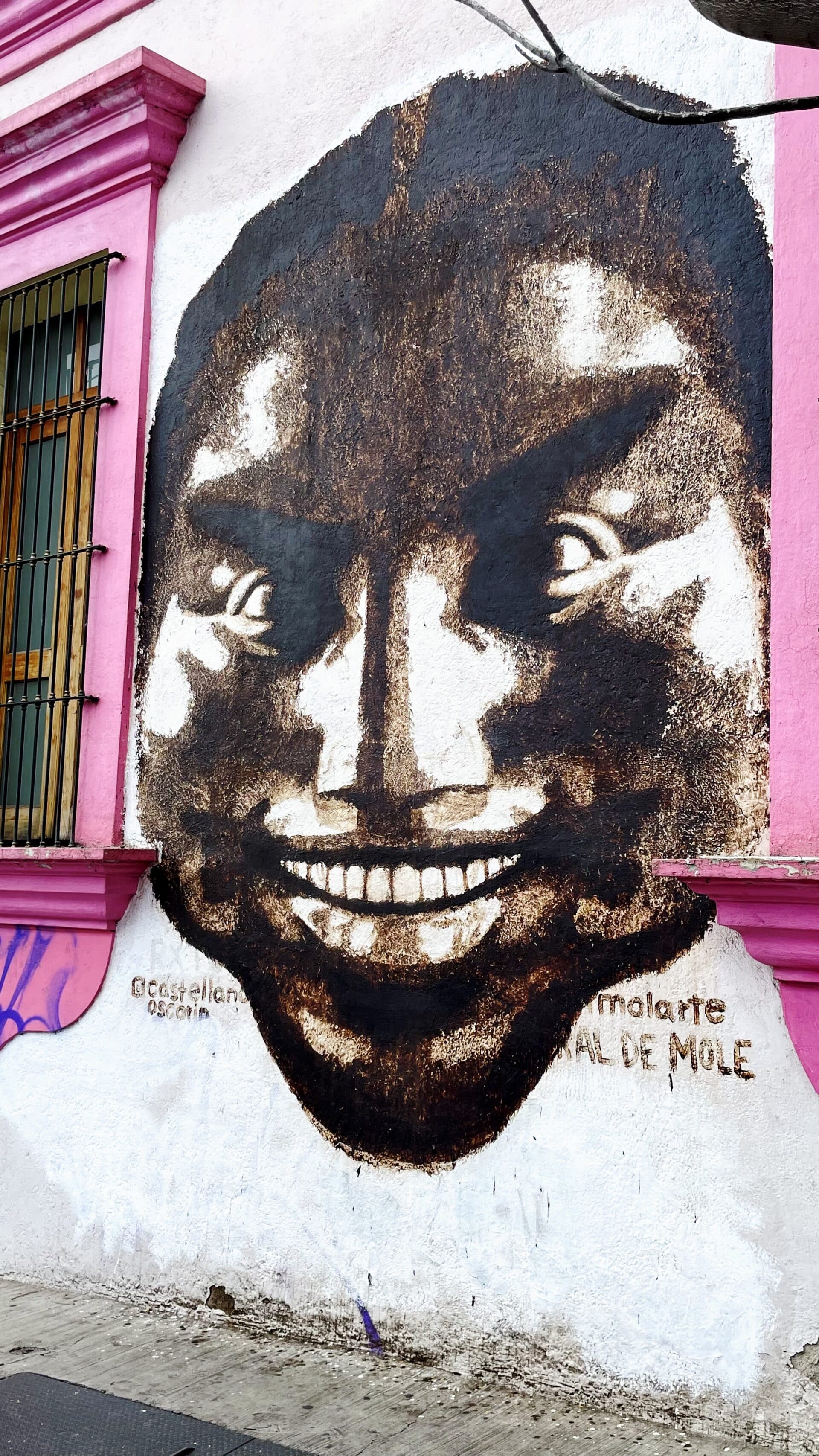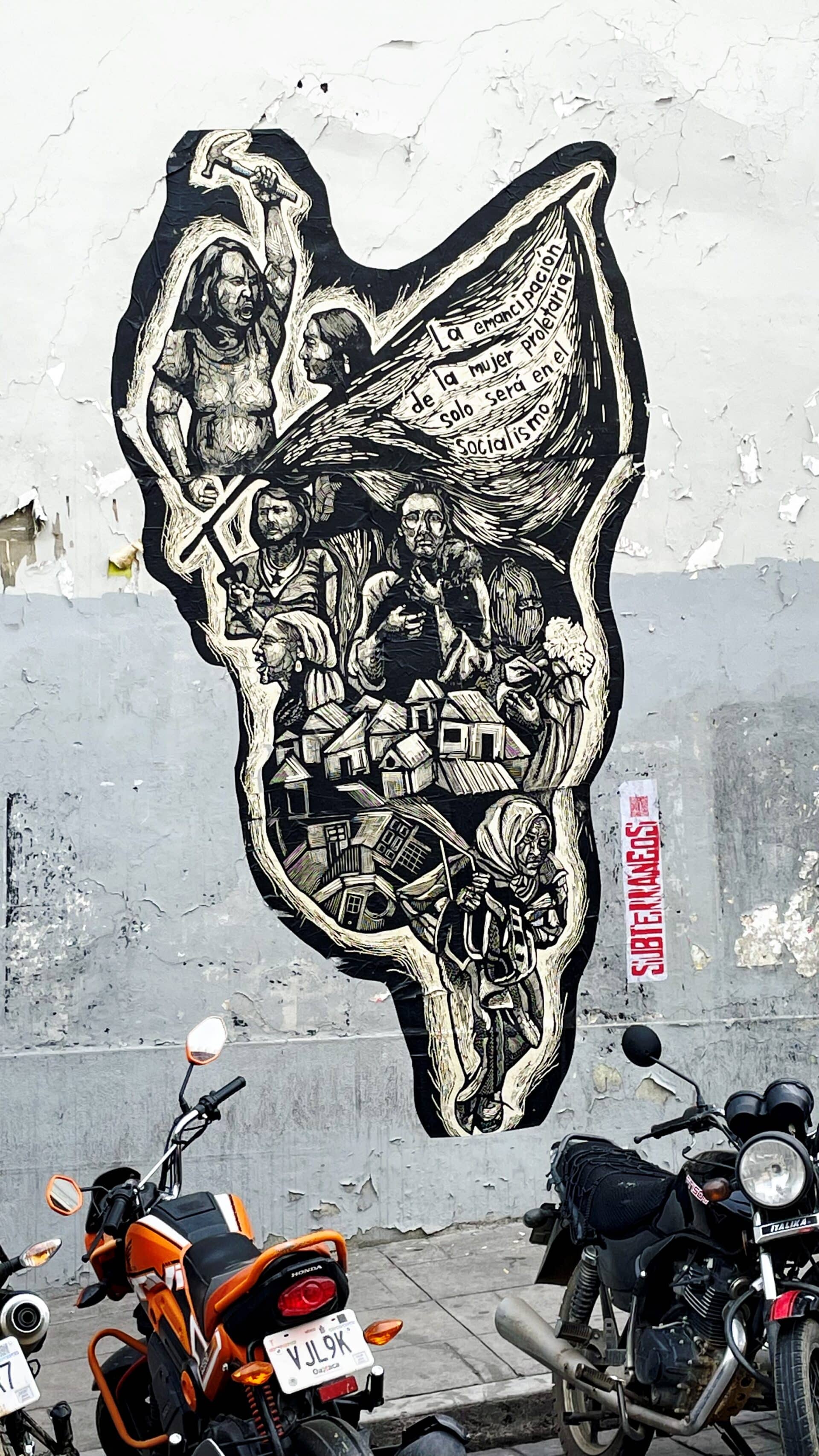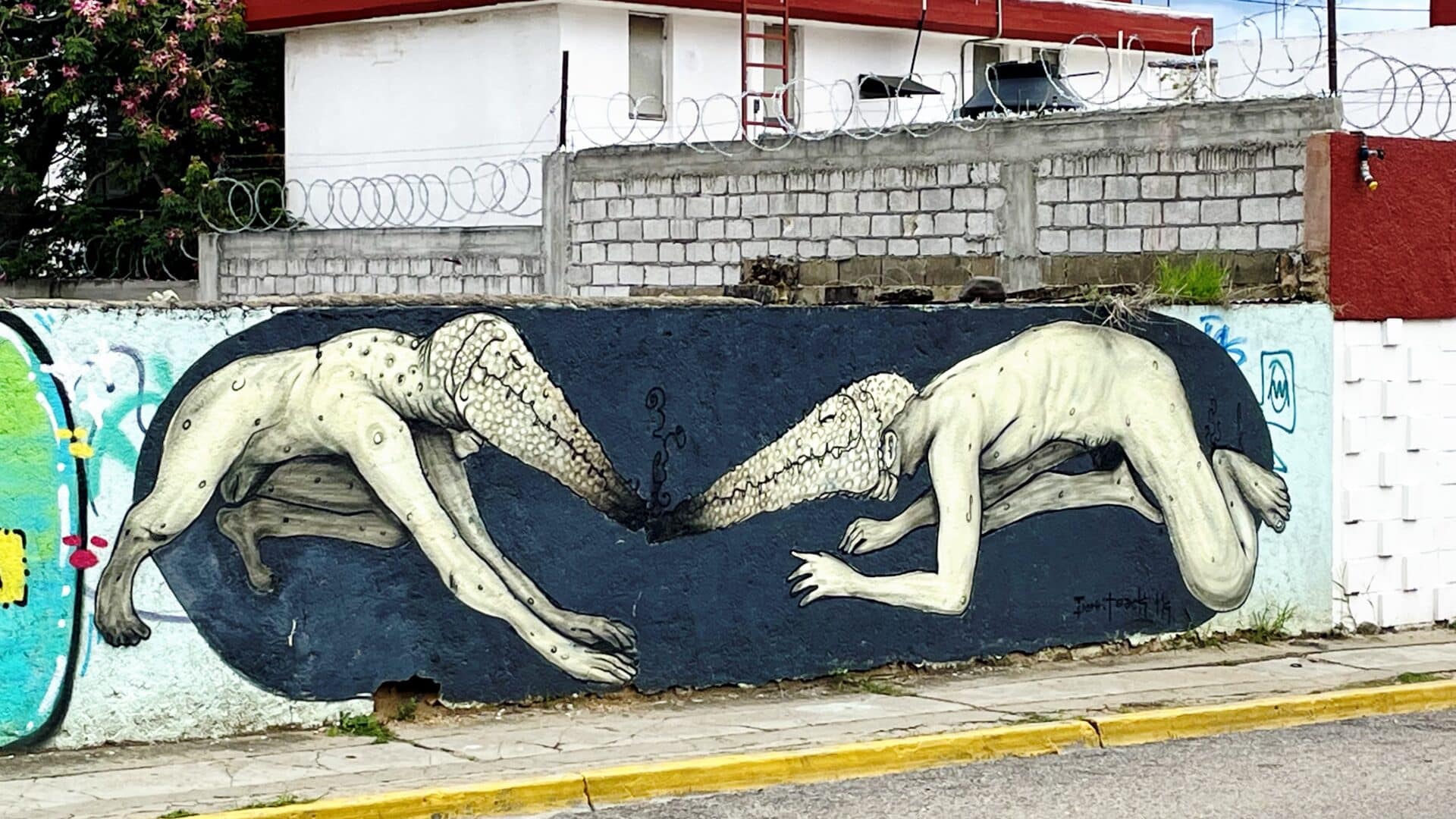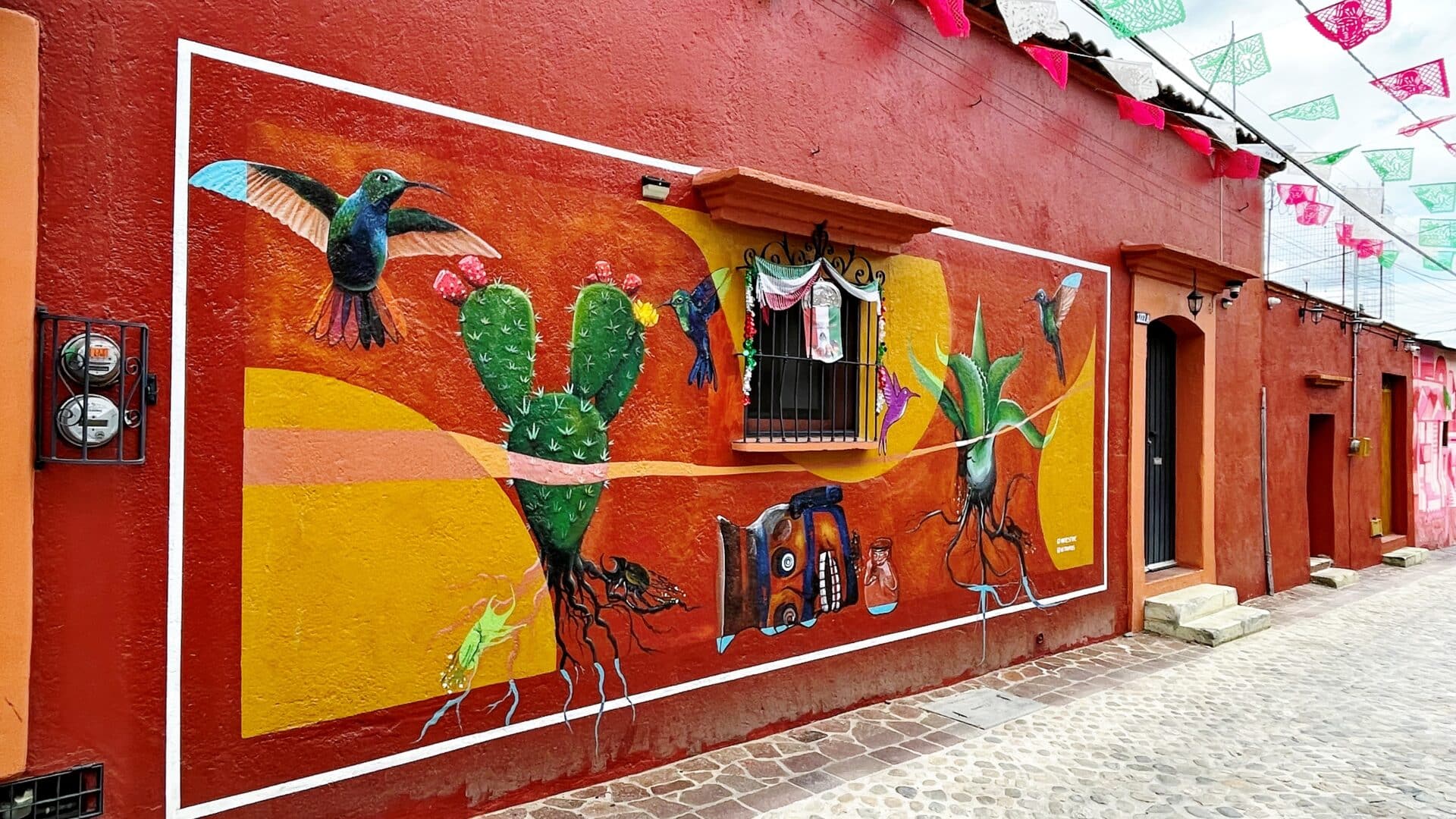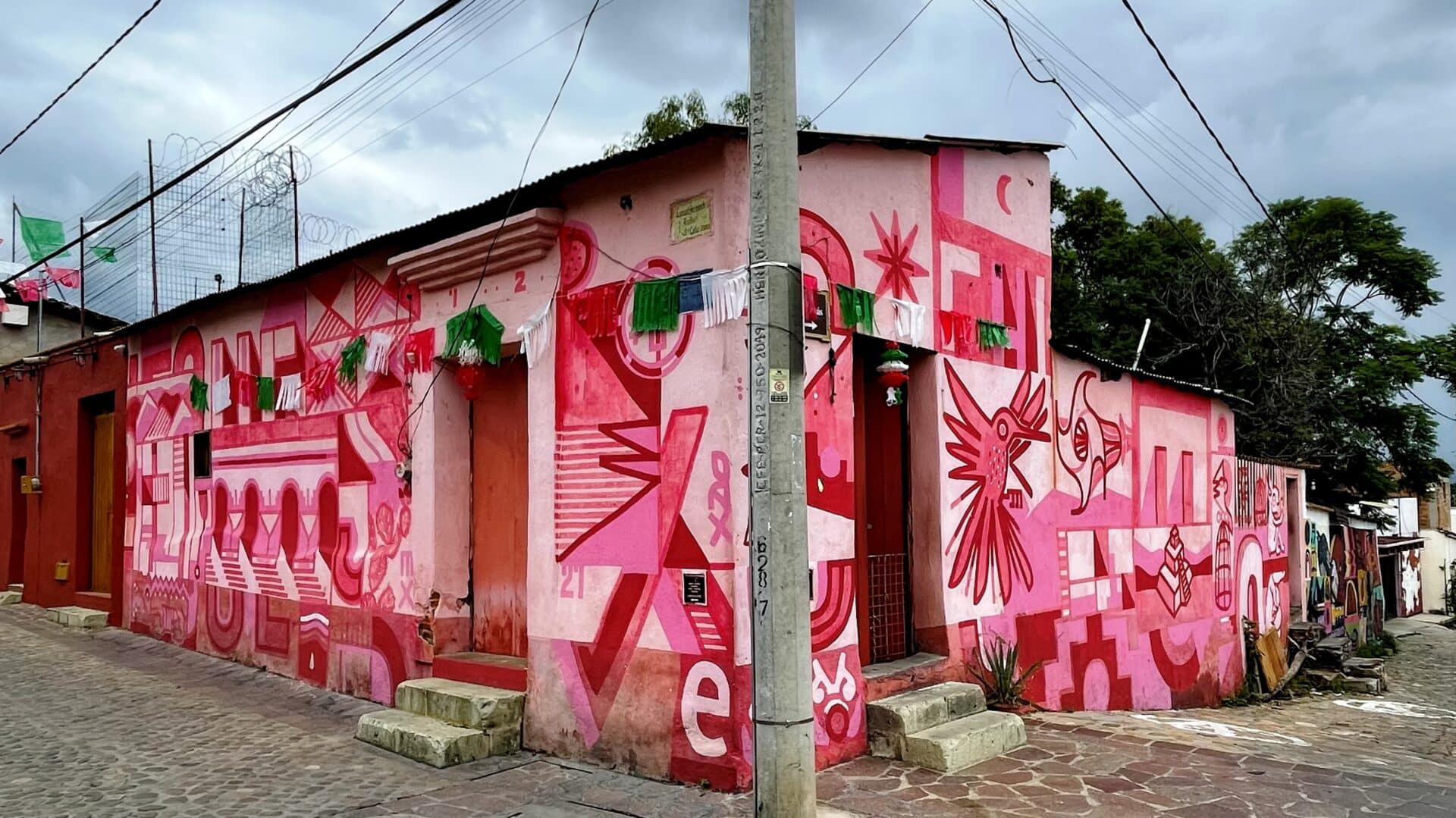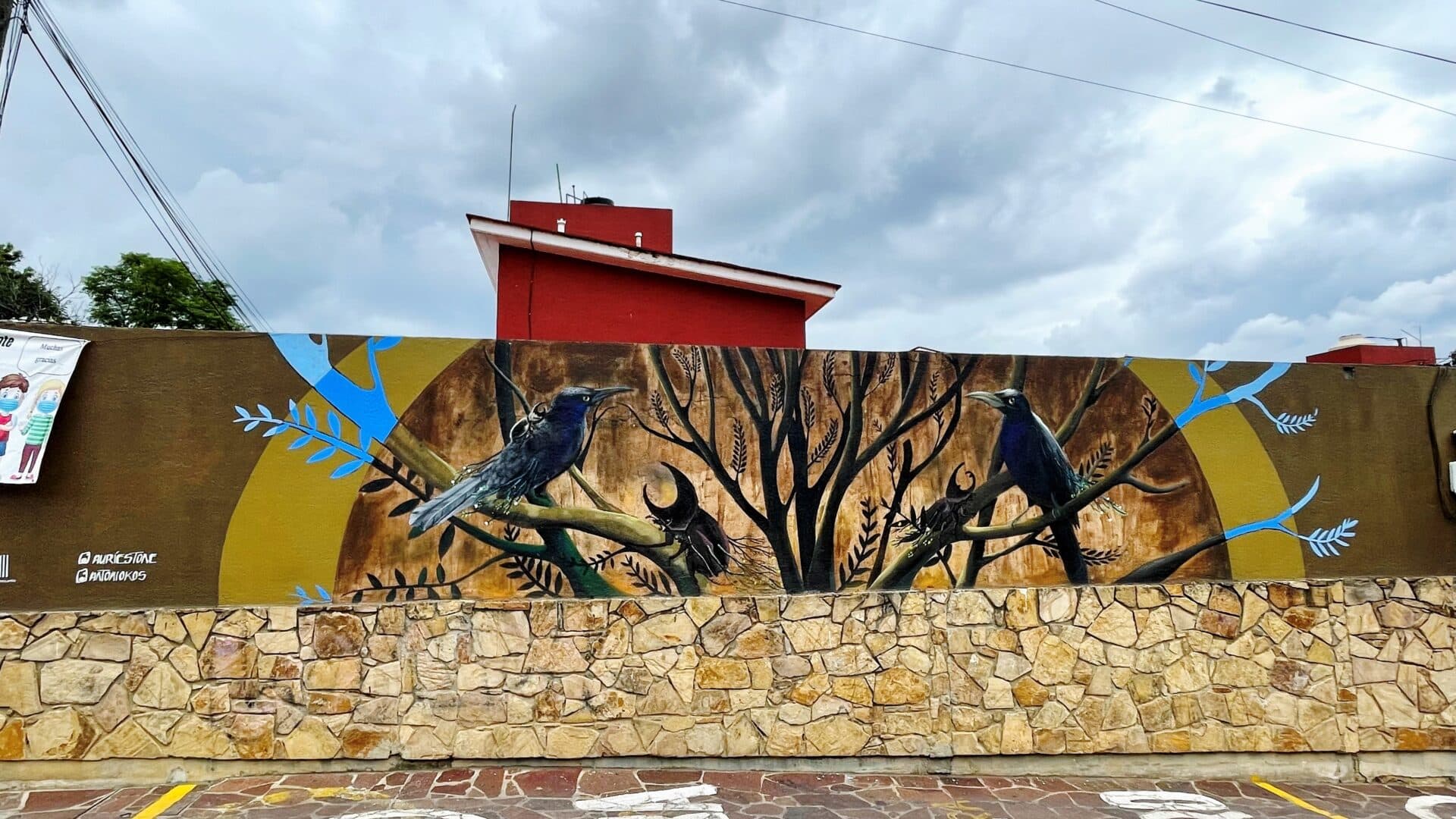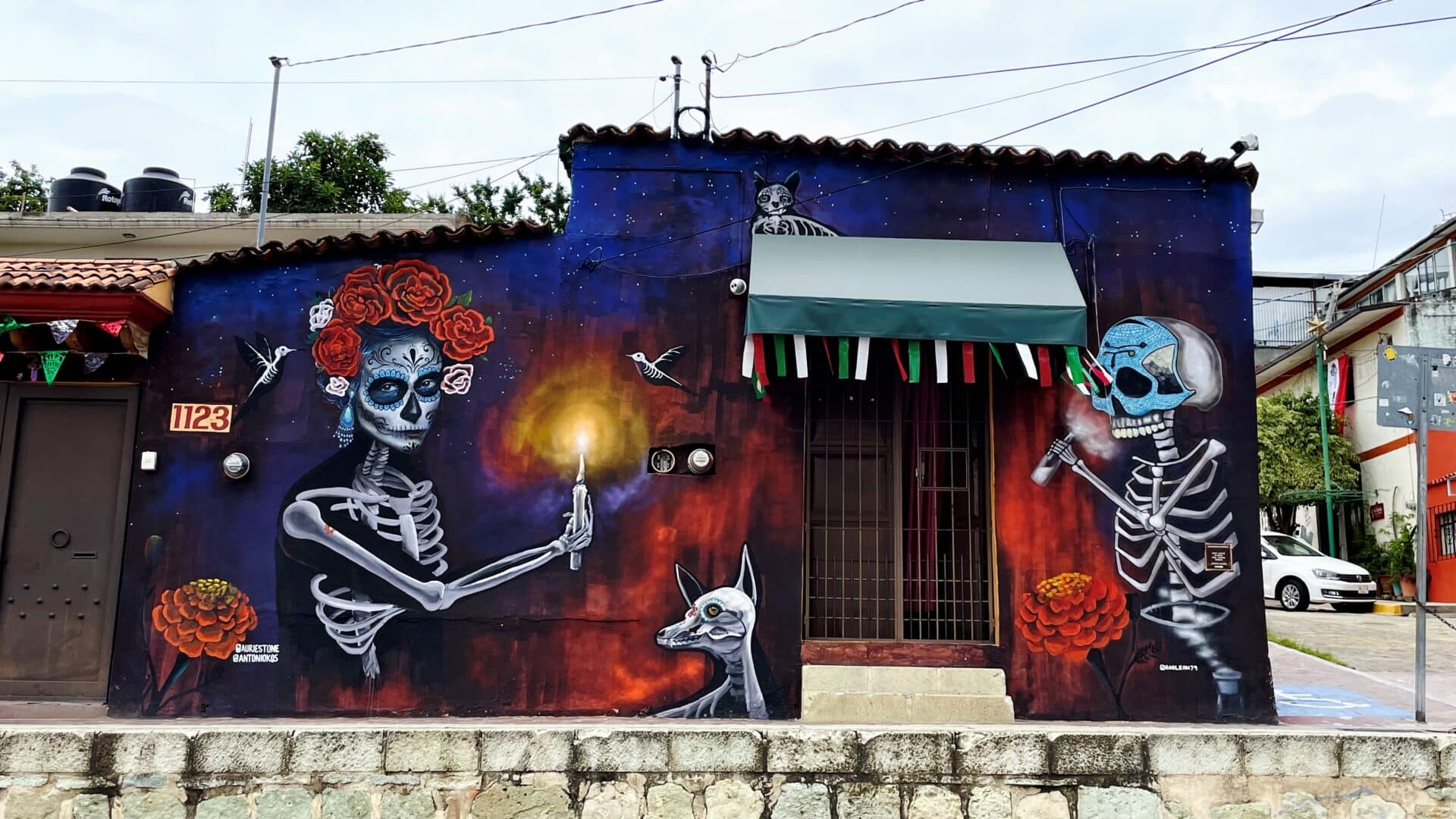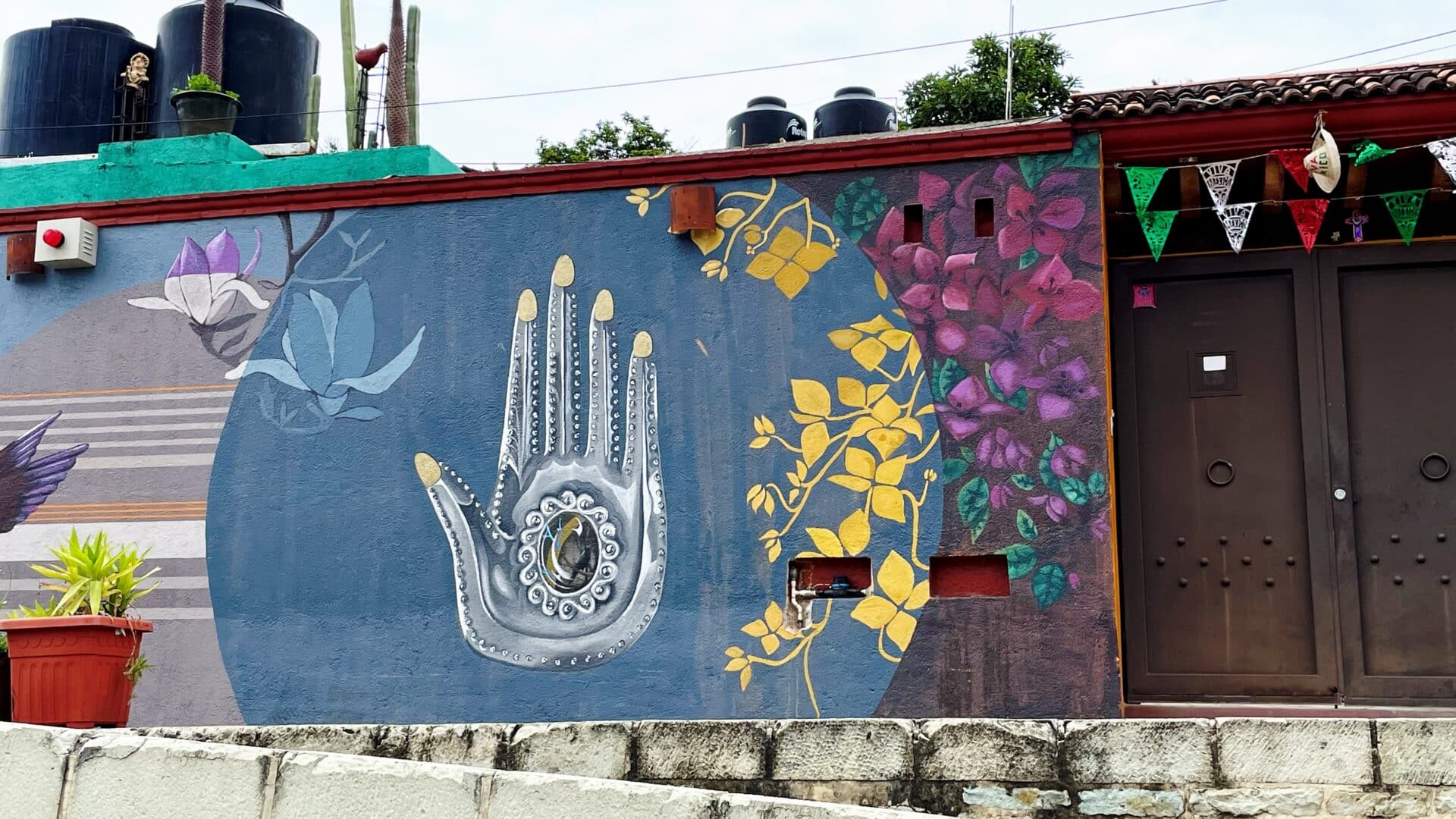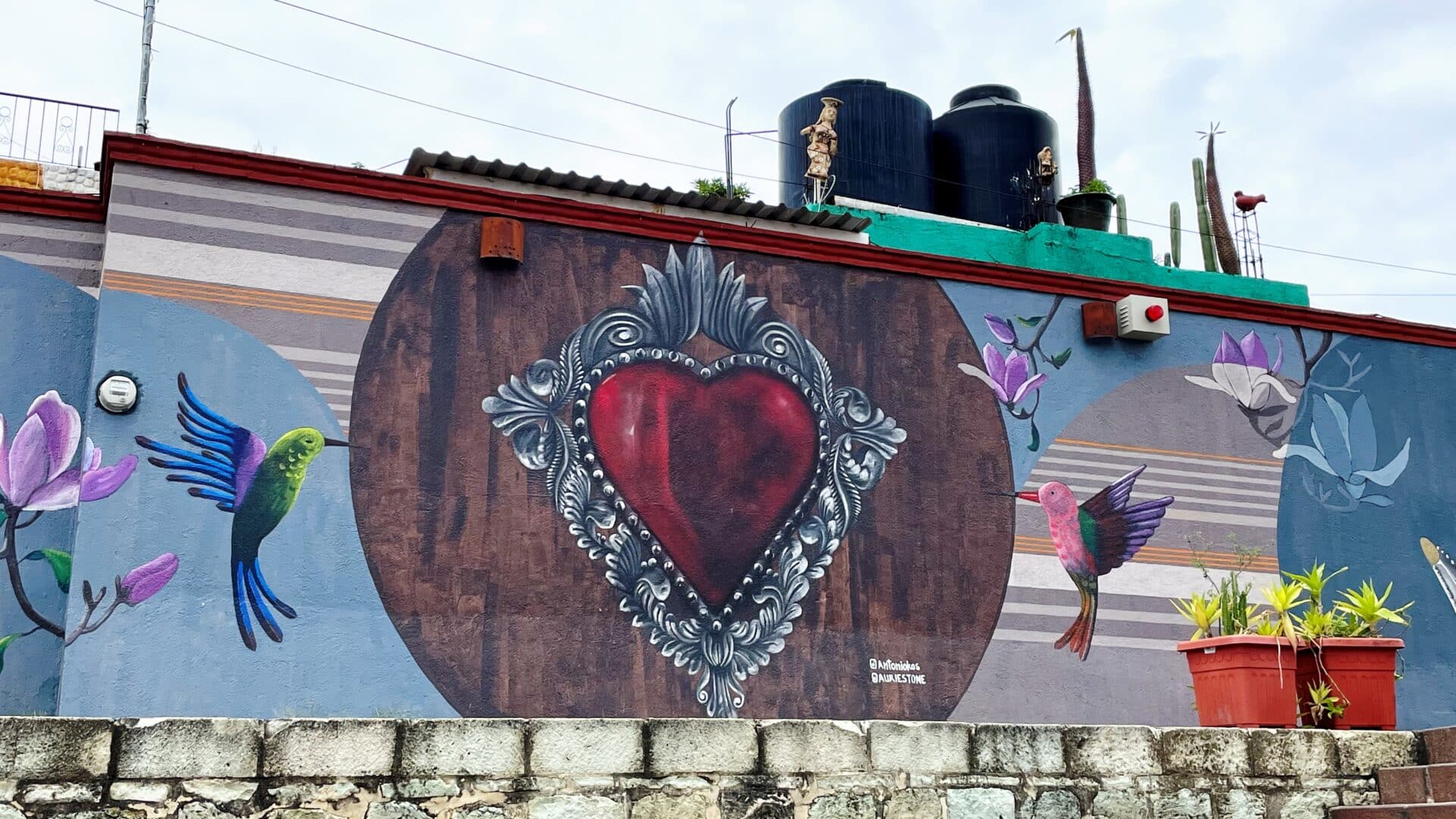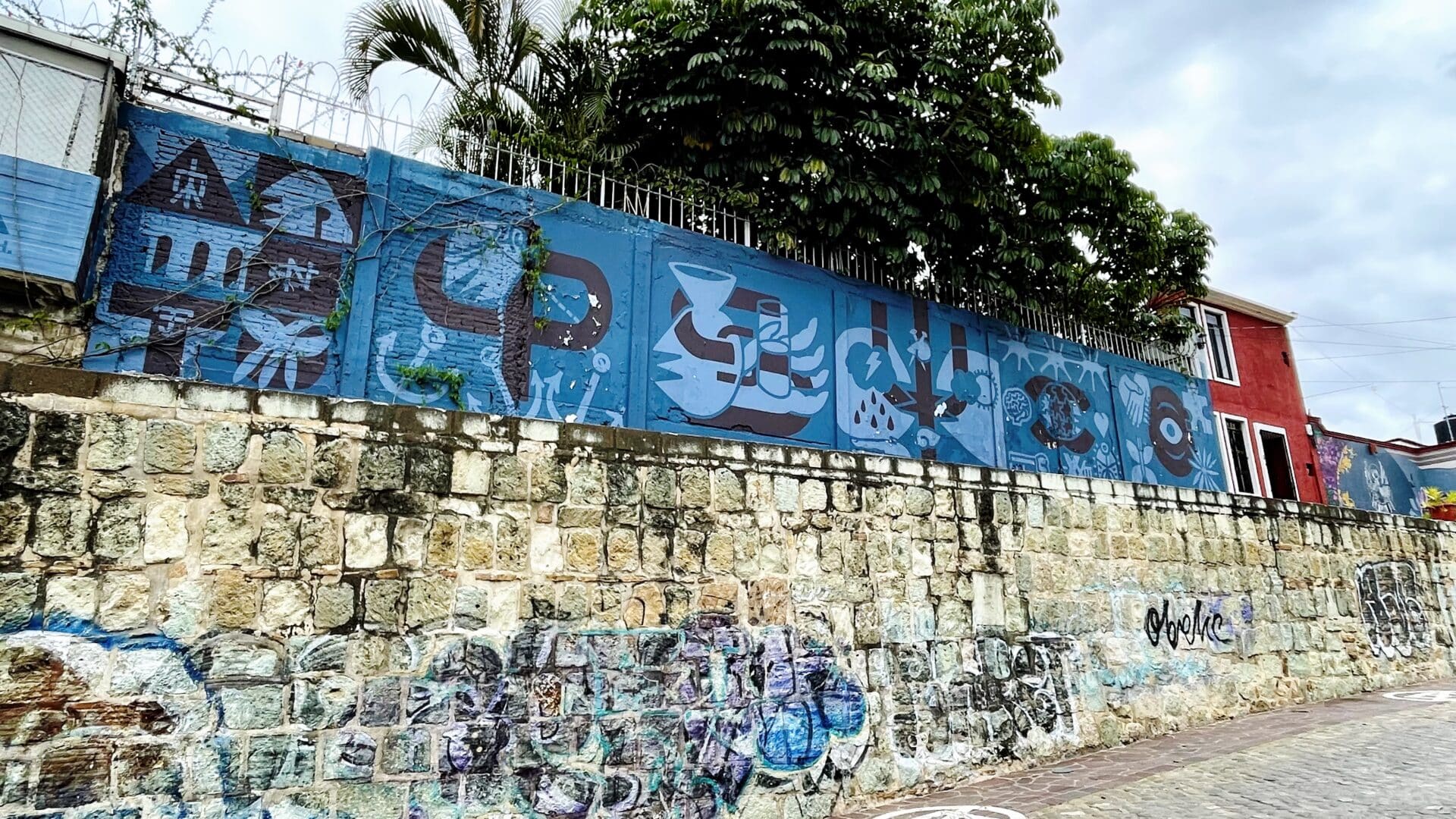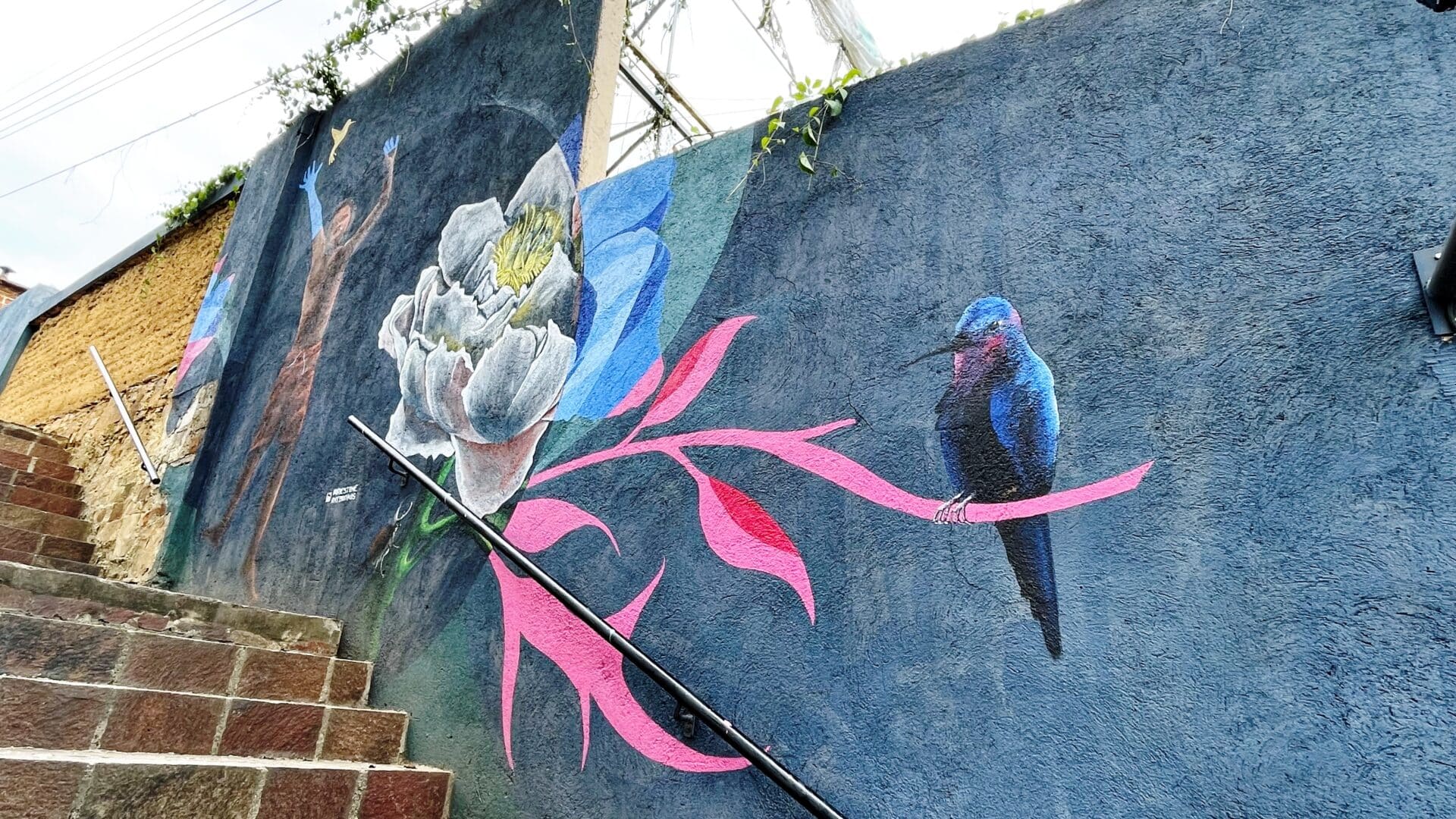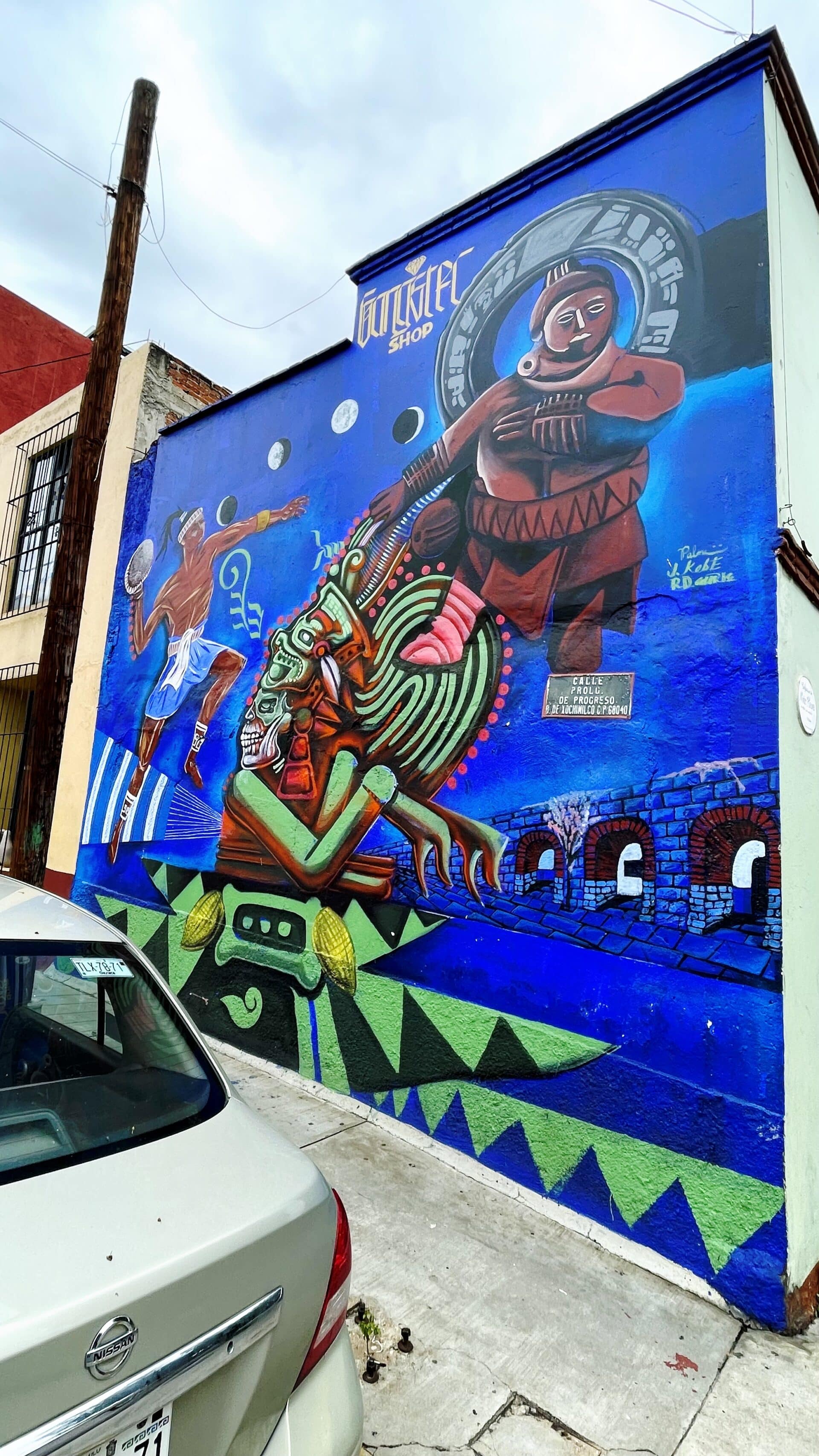The city of Oaxaca de Juarez, initially named Antequera, was founded in 1529 in a small valley occupied by a group of Zapotec Indians. It is an example of sixteenth century colonial city and town planning, rataining its pattern in the form of a checkerboard with square blocks and entrances on all four sides of the square.
whc.unesco.org
Heritage tourism makes up an important part of the city’s economy, and it has numerous colonial-era structures as well as significant archeological sites and elements of the continuing native Zapotec and Mixtec cultures. The city, together with the nearby archeological site of Monte Albán, was designated in 1987 as a UNESCO World Heritage Site.
wikipedia.org
Oaxaca de Juárez
Oaxaca de Juárez, or simply Oaxaca (Valley Zapotec: Ndua), is the capital and largest city of the eponymous Mexican state of Oaxaca. It is the municipal seat for the surrounding municipality of Oaxaca. It is in the Centro District in the Central Valleys region of the state, in the foothills of the Sierra Madre at the base of the Cerro del Fortín, extending to the banks of the Atoyac River.
Heritage tourism makes up an important part of the city’s economy, and it has numerous colonial-era structures as well as significant archeological sites and elements of the continuing native Zapotec and Mixtec cultures. The city, together with the nearby archeological site of Monte Albán, was designated in 1987 as a UNESCO World Heritage Site. It is the site of the month-long cultural festival called the “Guelaguetza”, which features Oaxacan dance from the seven regions, music, and a beauty pageant for indigenous women.
The city is also known as la Verde Antequera (the green Antequera) due to its prior Spanish name (Nueva Antequera) and the variety of structures built from a native green stone. The name Oaxaca is derived from the Nahuatl name for the place, Huaxyacac, which was Hispanicized to Guajaca, later spelled Oaxaca. In 1872, “de Juárez” was added in honor of Benito Juárez, a native of this state who became president, serving from 1852 to 1872, and leading the country through challenges, including an invasion by France. The Zapotec name of the city, Ndua, is still used in the Zapotec language (Tlacolula Zapotec). The coat of arms for the municipality bears the image of Donají, a Zapotec woman hostage killed and beheaded by the Mixtec in conflict immediately after the Conquest.
The Zapotec and Mixtec peoples had settlements in the valley of Oaxaca for thousands of years, especially in connection with the important ancient centers of Monte Albán and Mitla. The modern city of Oaxaca developed relatively near them. The Aztecs entered the valley in 1440 and named it “Huaxyacac”, a Nahuatl phrase meaning “among the huaje” (Leucaena leucocephala) trees. They created a strategic military position at what is now called the Cerro (large hill) del Fortín to oversee the Zapotec capital of Zaachila and secure the trade route between the Valley of Mexico, Tehuantepec, and what is now Central America.
When the Spanish arrived in 1521, the Zapotec and the Mixtec were involved in one of their many wars. The Spanish conquest ended this fighting, imposing a kind of imperial peace on the area. At the same time, Spanish Catholic missionaries began evangelizing the indigenous peoples, urging them to conversion.
The first Spanish expedition to Oaxaca arrived late in 1521, headed by Captain Francisco de Orozco who was accompanied by 400 Aztec warriors.[4] Hernán Cortés sent Francisco de Orozco to Oaxaca because Moctezuma II had said that the Aztecs’ gold came from there.[5] The Spanish expedition under Orozco set about building a Spanish city where the Aztec military post was at the base of the Cerro de Fortín.
After the Independence of Mexico in 1821, the city became the seat of a municipality. The name of both the city and the municipality became Oaxaca, changed from Antequera. In 1872, “de Juárez” was added to the city and municipality names to honor Benito Juárez, a native son who had begun his legal and political career here and who served as president of Mexico from 1858 until his death in 1872.
The city is the primary attraction of the state, which also relies economically on tourism. From 1984 to 2009, tourism grew to become the dominant factor in Oaxaca’s economy.[15] The attractions are the verdant landscapes of the Oaxaca Valley, and the architectural and cultural charms of the city itself. A massive 77% of the municipality of Oaxaca has employment that is related in some way to tourism. The next largest economic sectors are mining and manufacturing, which employ 20% of the work force.
The city of Oaxaca has long been considered “Mexico’s culinary capital.” The most notable aspect of Oaxacan cuisine is its variety of moles, which are a type of complex sauce. Their origins go back to the melding of Spanish and Arabic food in Spain. After the Conquest, New World ingredients such as chile mulato, ‘miltomate’ (a small whitish wild tomato), tomatoes, peanuts, avocado leaves, and chocolate were incorporated. While moles can be found in many parts of Mexico, Oaxaca has the greatest variety including negro (black), Colorado (red), coloradito (faint red), chichilo, verde (green), amarillo (yellow), and manchamanteles (lit. ‘stainer of tablecloths’). They are sold in markets all over the city as a paste which is combined with water and simmered with a variety of meats.
Other notable foods sold in markets include bars of chocolate (primarily used for making hot chocolate), traditional breads, and chapulines (fried grasshoppers with chile). Street foods include tlayudas, which are large, slightly crispy corn tortillas piled high with ingredients such as grilled beef (called tasajo), cheese, tomatoes, avocados, onions etc. Local drinks include those made with water, sugar and a flavoring such as aguamiel (honey water), trocitos de melón (melon), horchata (rice), tuna batida (cactus fruit shake), and nuez (nuts) as well as local fruits such as chilacayota and guanábana. In nearby Tlacolula and Ejutla an indigenous drink called ‘tejate’ is still prepared and sold in the local market. Known here as the drink of the gods, it is prepared with corn, cacao, cacao flower and the seed of the mamey fruit. As for alcoholic beverages, this area prefers mezcal, which like tequila is made from agave, but unlike tequila can be made from a variety of different species of the plant.
As in other areas in Mexico, chocolate has had special importance here since long before the Conquest. Aside from being a foodstuff, it was also used as medicine and cacao seeds were used as money. The chocolate prepared in this city is well known within Mexico, as it is distinguished by being flavored with cinnamon, almonds and sugar and is usually prepared with hot water or milk, served in large coffee cups with a local sweet roll.
A number of small towns surround the main city and are closely linked economically and culturally with the main city. Some of these towns are known for producing certain crafts that are identified with the three central valleys of Oaxaca. In these towns one can see the workshops and the crafts being produced in the traditional manner although most of these towns’ products are sold in the main city. Santa María Atzompa produces glazed, glass-inlaid pottery of green, while San Antonio Arrazola and San Martín Tilcajete make alebrijes, small painted wooden figures. San Bartolo Coyotepec is known for its barro negro pottery, and Teotitlán del Valle works with wool to make tapestry and rugs. These rugs are known for their colors and geometric designs, made traditionally with natural dyes; a wild marigold, pericon, that grows in the nearby mountains gives a gold yellow, cochineal, a native insect, gives reds and indigo, raised in the hotter regions of the state gives blues.

